
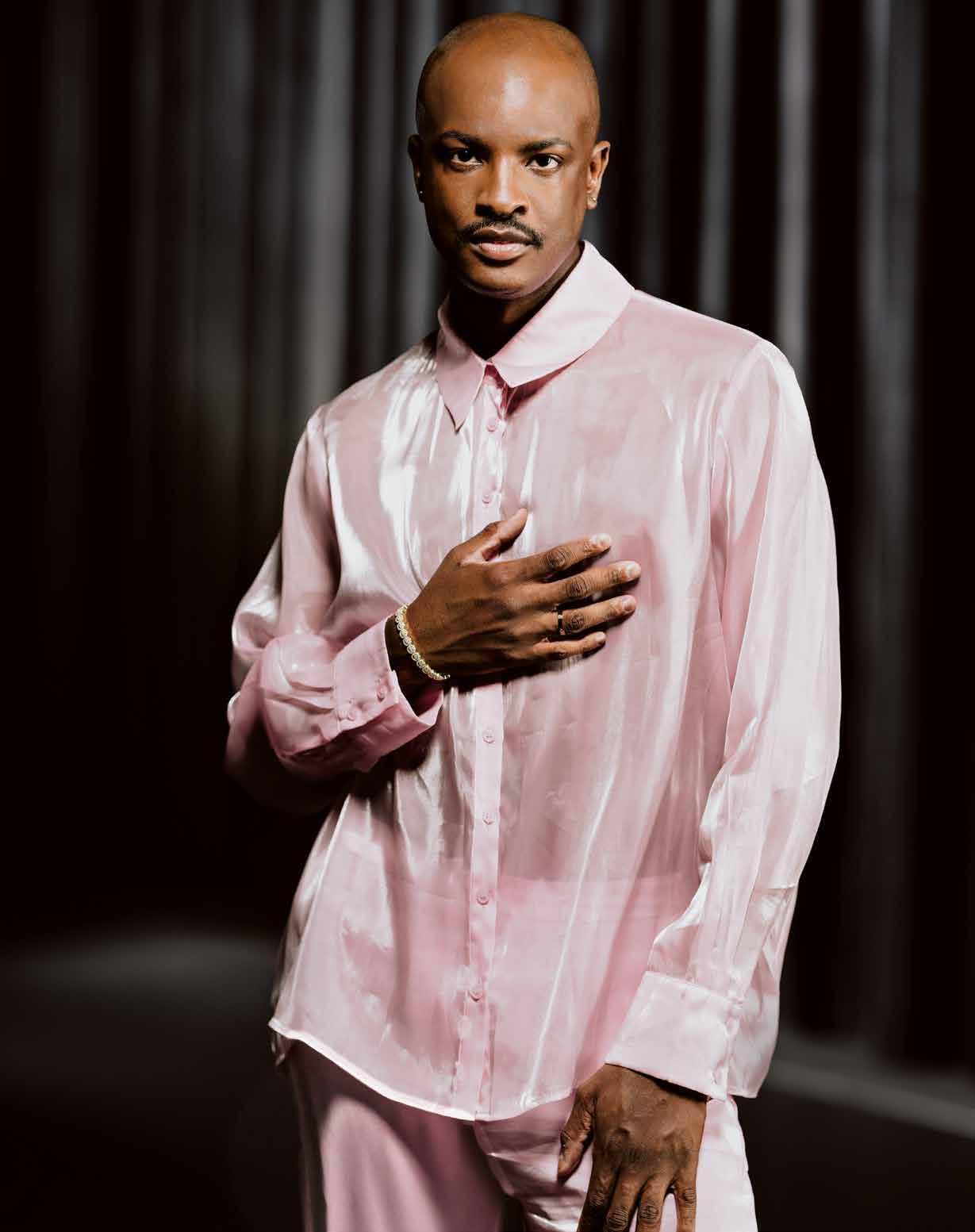
JUSTIN MULRAIN AND 8 MORE CALGARY STYLE

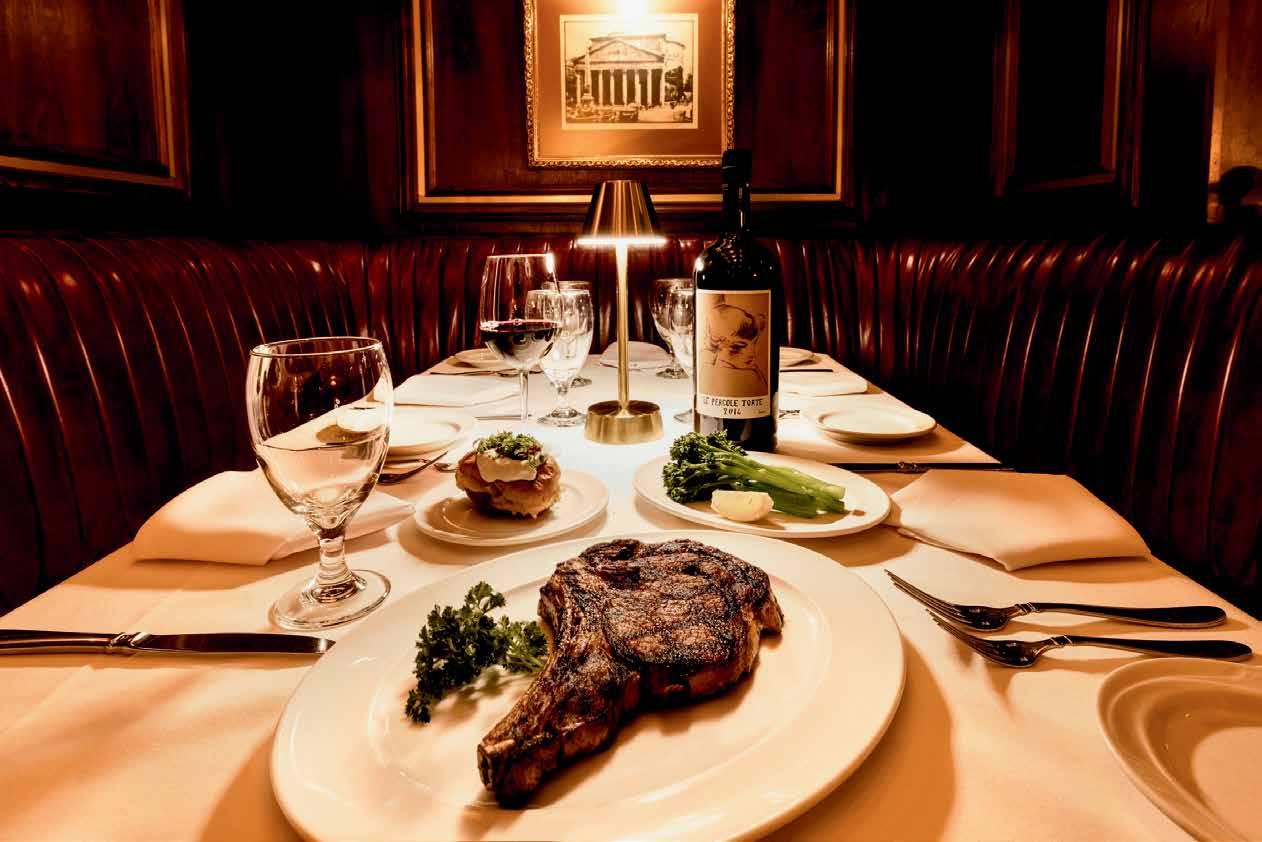
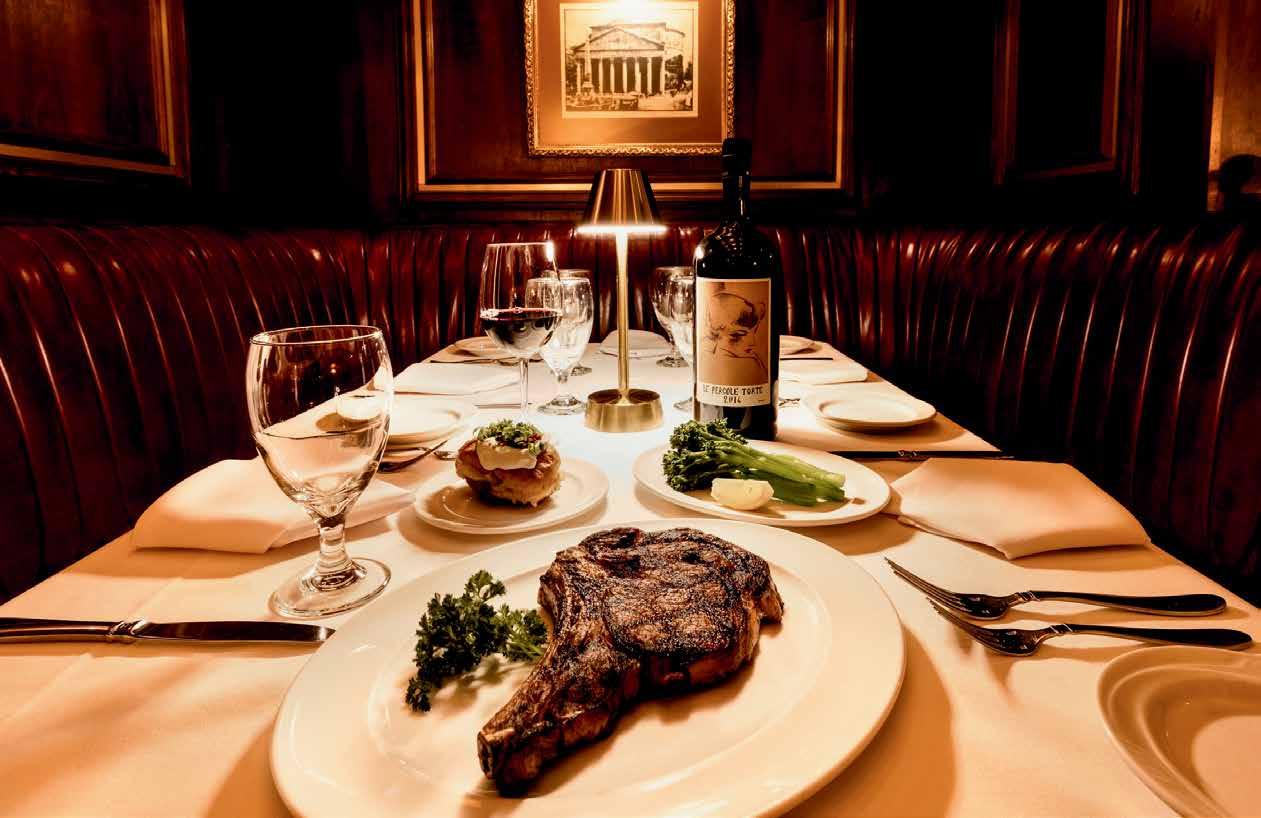














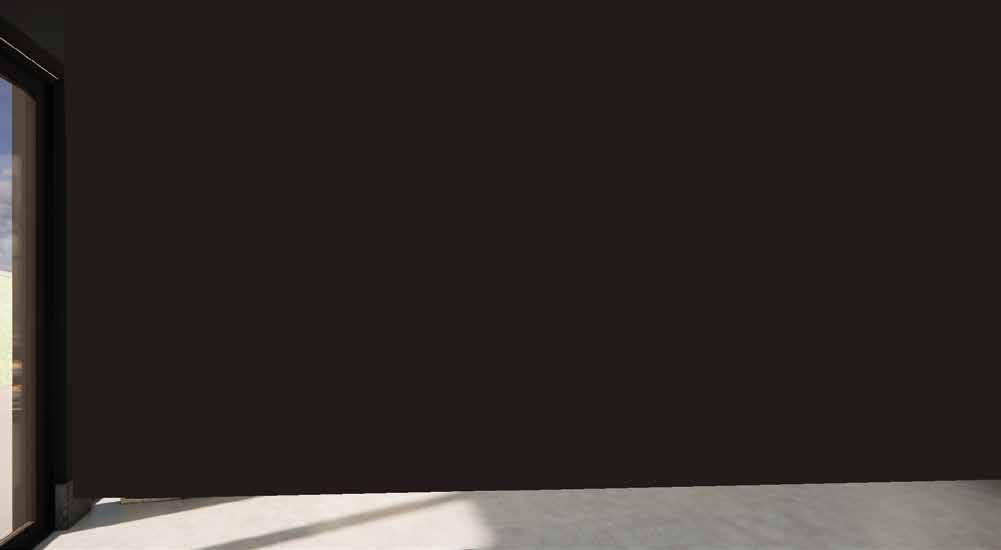

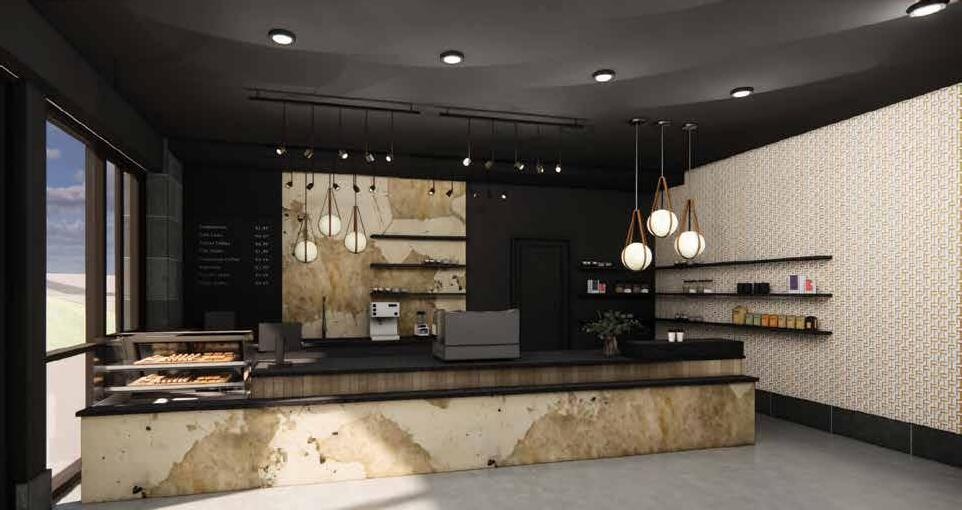



JUSTIN MULRAIN AND 8 MORE CALGARY STYLE




















Located on Spring Creek Gate, Grey Wolf Lodge offers a rare chance to live in a serene mountain setting. Enjoy scenic trails, boutique shops, and a vibrant owner’s community just steps from your door.

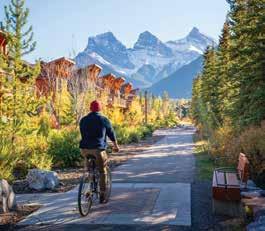
Each luxury residence at Grey Wolf Lodge features stunning mountain views, personalized interiors, gourmet kitchens, and cozy rock fireplaces. Enjoy geothermal in-floor heating, underground parking, and access to a fitness room and outdoor hot tub.
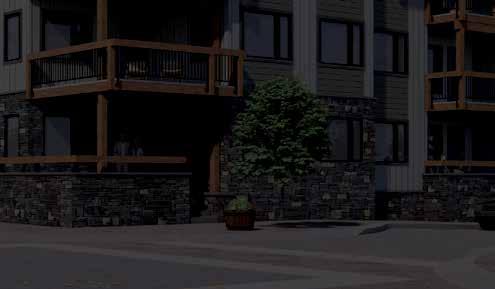
Like the noble grey wolf, Grey Wolf Lodge embodies a sense of majesty and timeless elegance. The architecture and interior design reflect rugged sophistication, offering residents a home that stands the test of time.
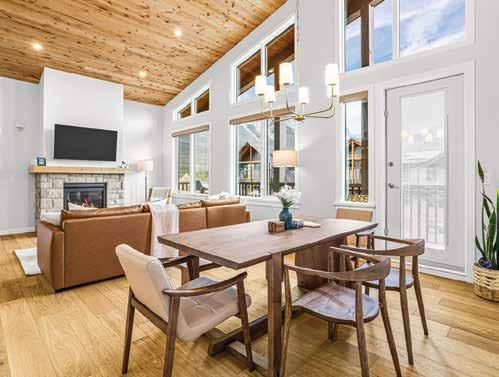

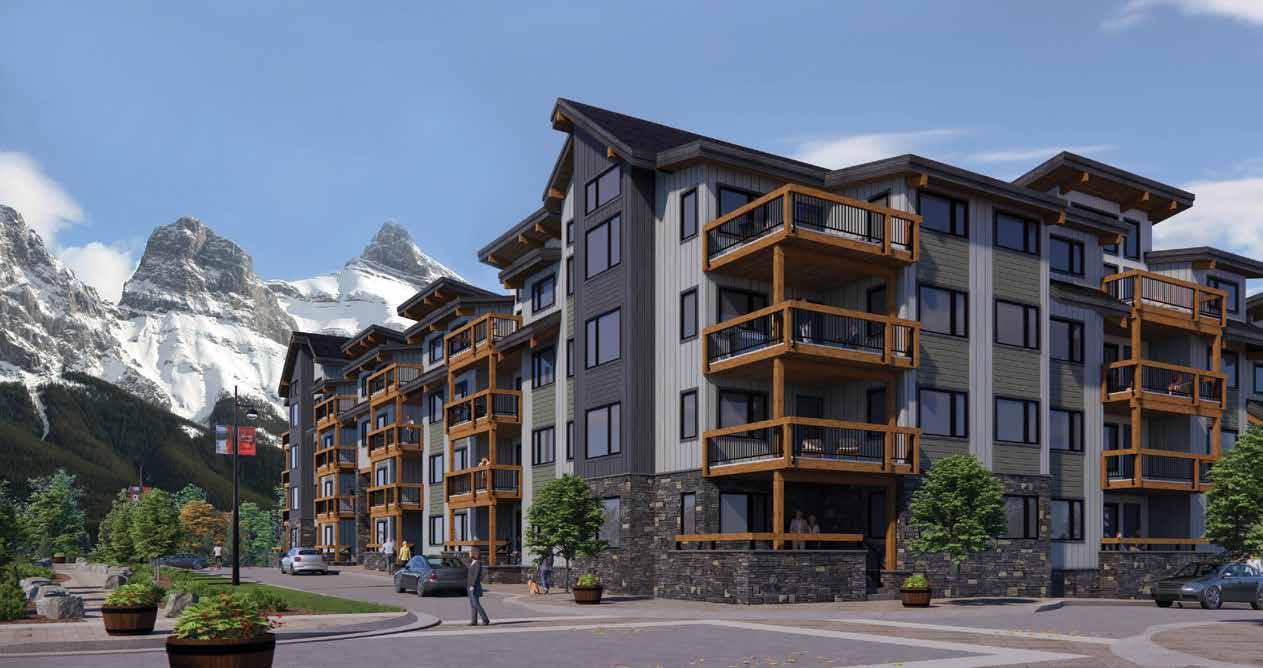
STEPS FROM DOWNTOWN CANMORE
Open daily 10am - 5pm • 1309 Spring Creek Gate 855.678.6066 • springcreekrealestate.ca
















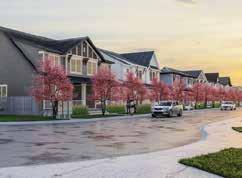
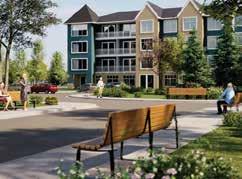

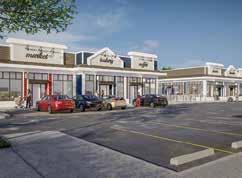

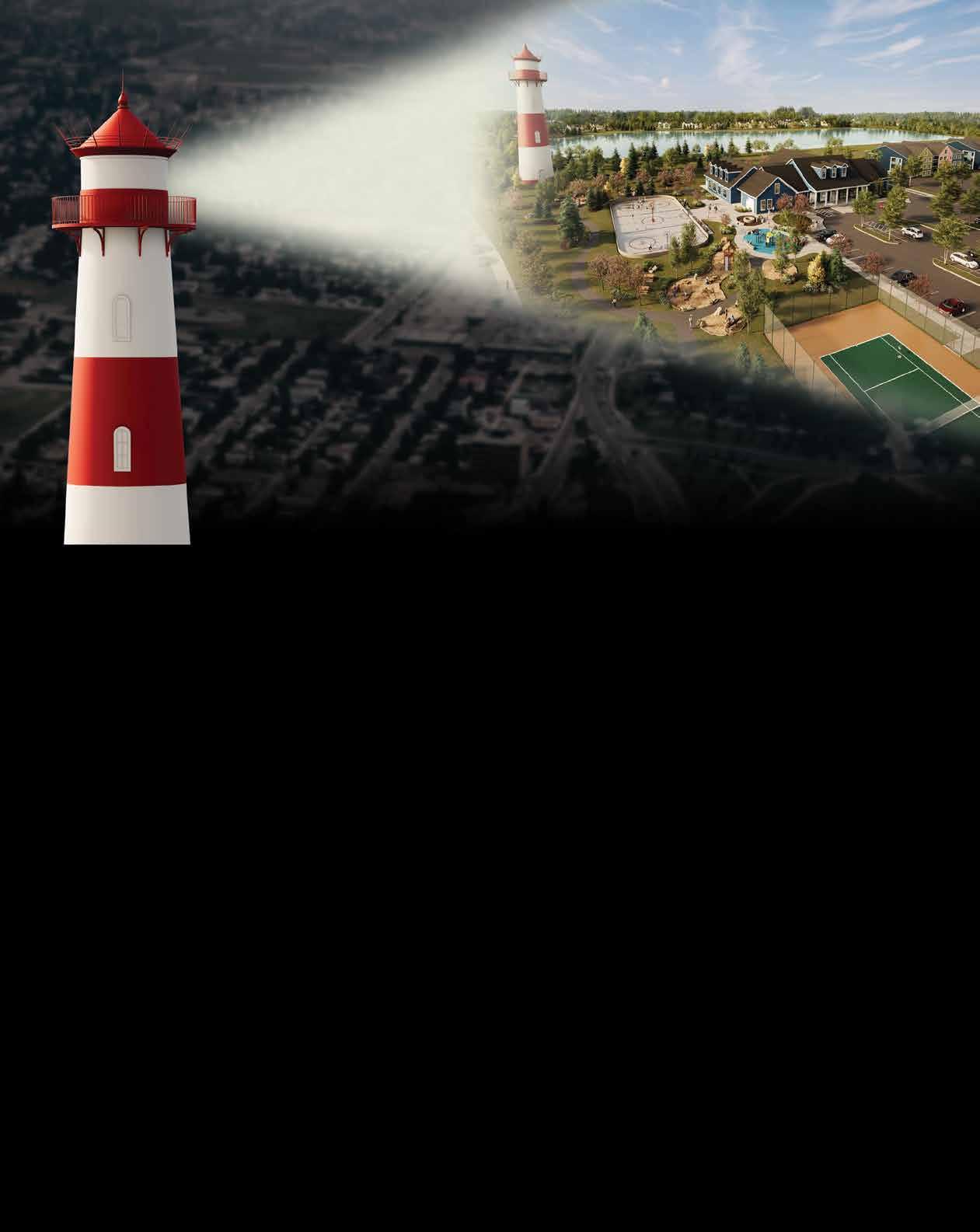


WIC goes beyond traditional education, creating an inspiring and impactful learning environment. We believe in nurturing a community that values academic excellence, personal growth and inclusivity.
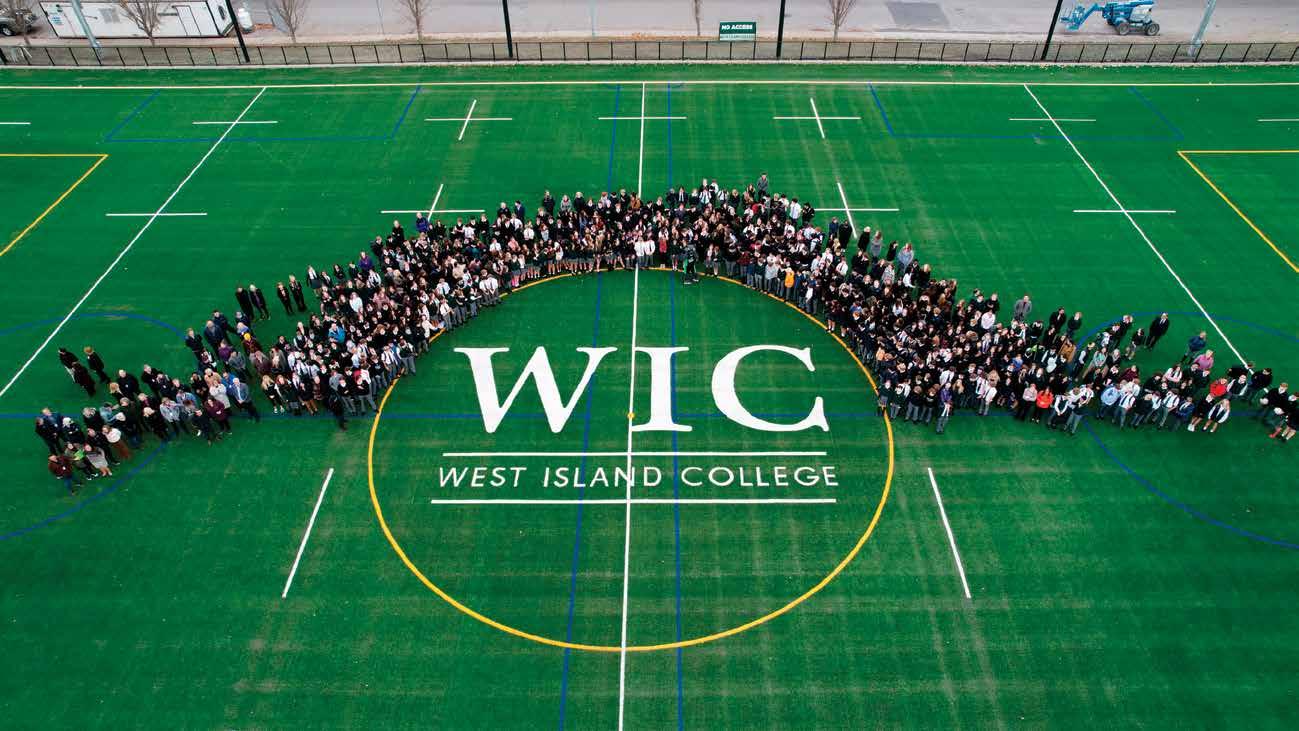

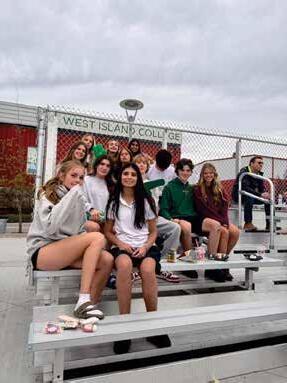
Apply today and discover why so many families choose WIC!
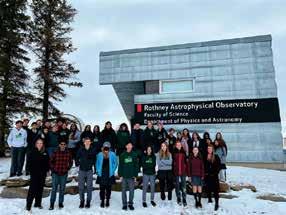
INSTITUTE PROGRAM A PLACE TO BELONG
Themed, interdisciplinary pathways

FRENCH IMMERSION
Earn a WIC Bilingual Diploma
Fine Arts & Wolves Athletics
Find connection and build confidence
WIC
Transform interests & passions into opportunities
Real-world insight from professionals across industries
STUDENT-CENTRED PATHWAYS
International & passionate Francophone faculty
Language and culture come alive through unique experiences
EXPERIENTIAL LEARNING OPPORTUNITIES
FOCUS ON THE WHOLE CHILD
DYNAMIC & INSPIRING SPACES
ACADEMIC, SOCIO-EMOTIONAL & CAREER SUPPORT
ANNUAL OPEN HOUSE - DISCOVER THE WIC DIFFERENCE
THURSDAY, OCTOBER 16, 2025 | 6:30 P.M.


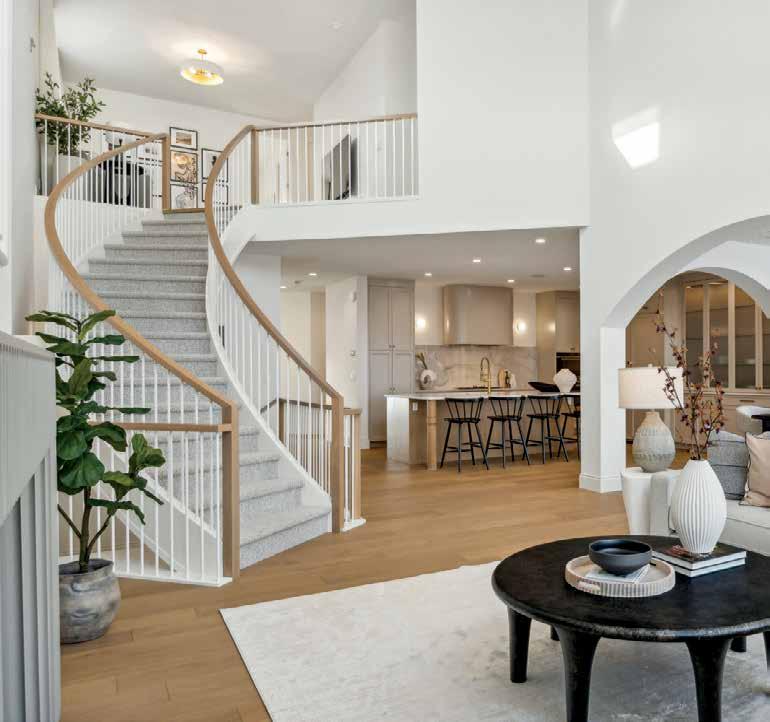


































































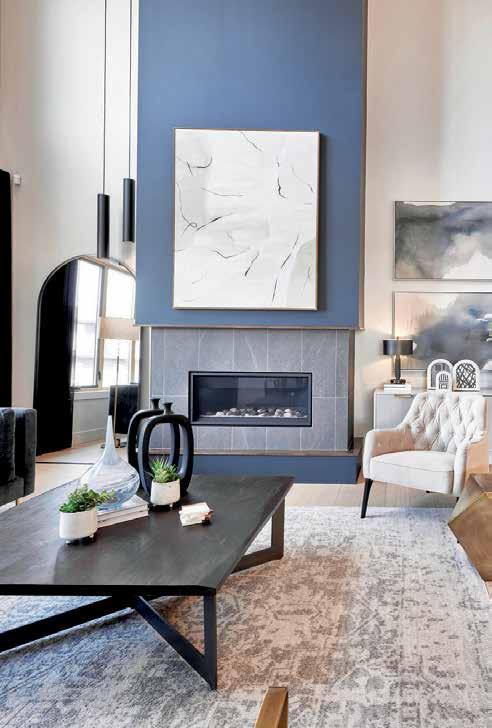



by Calgary’s architectural heritage, this development community features beautiful executive homes, breathtaking views, walking and biking paths, as well as west Calgary’s premier shopping destination Aspen Landing Shopping Centre.









































DISCOVER THE UNEXPECTED Aspen Landing Shopping Centre features top retailers and services in unique, locally-owned storefronts sprawled across a distinctive landscape in southwest Calgary. Whether you need a quick check-up, a mouth-watering lunch, or need to complete an extensive to-do list, you can get it all done at Aspen Landing! FREE INDOOR PARKING.



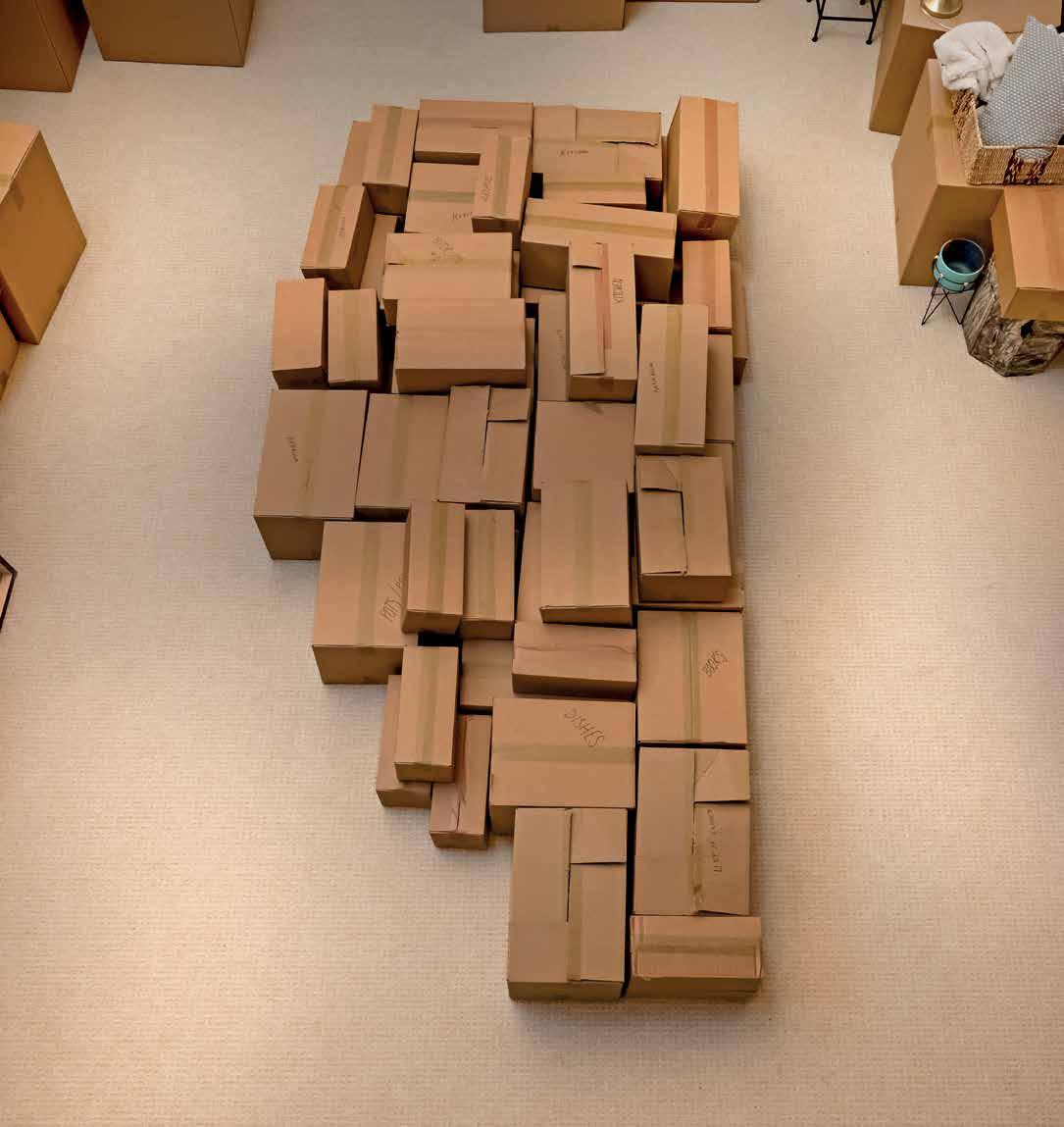



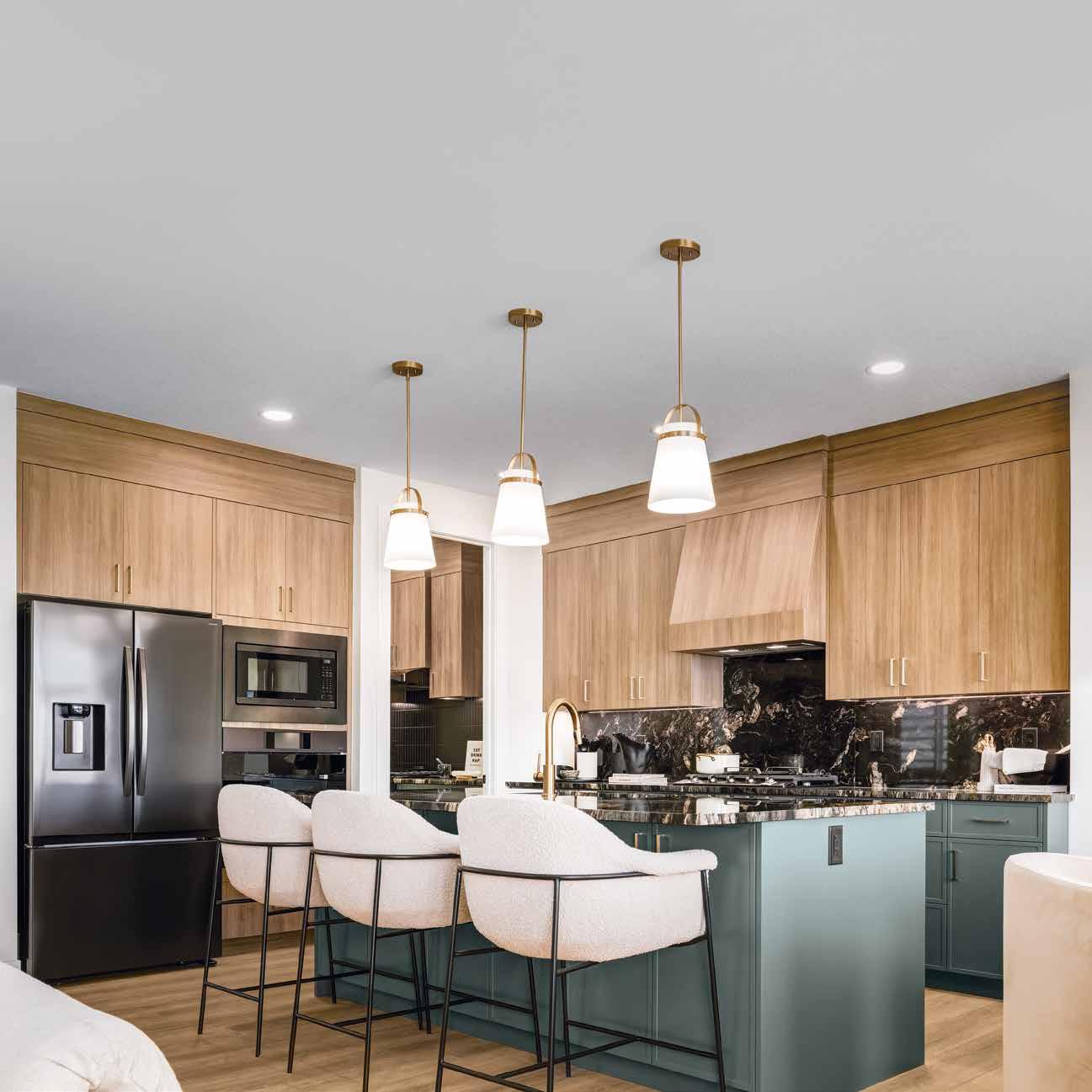








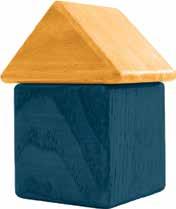

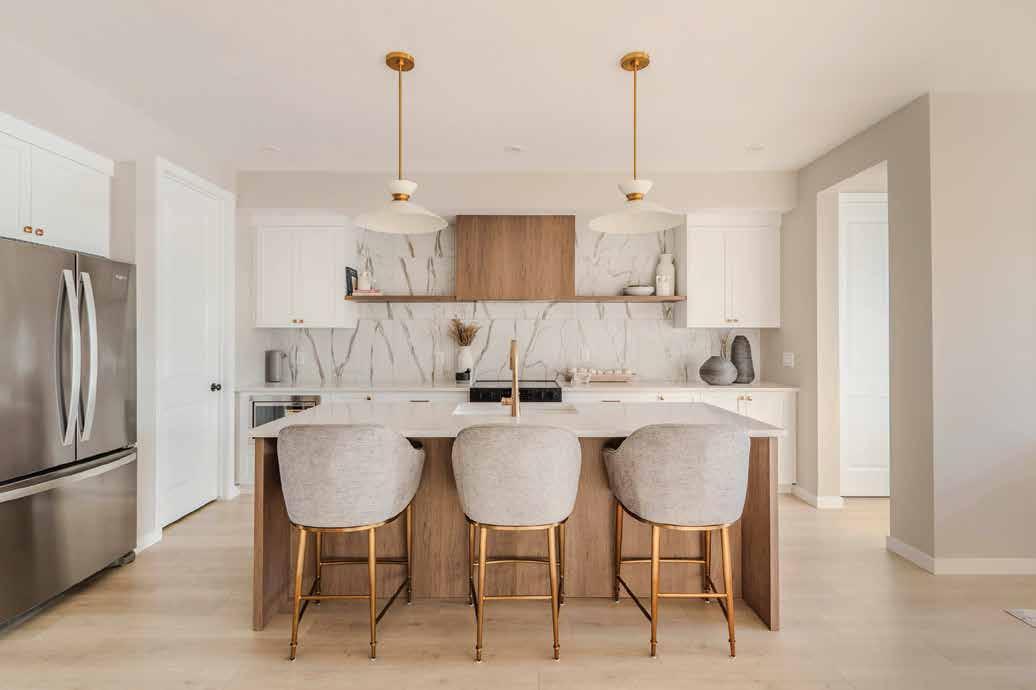
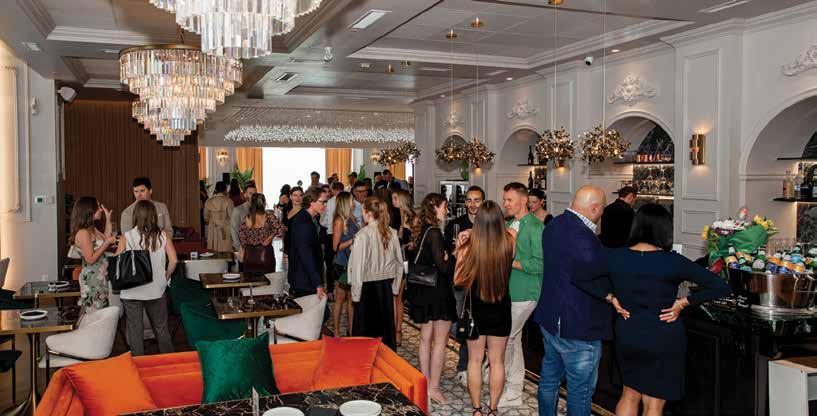

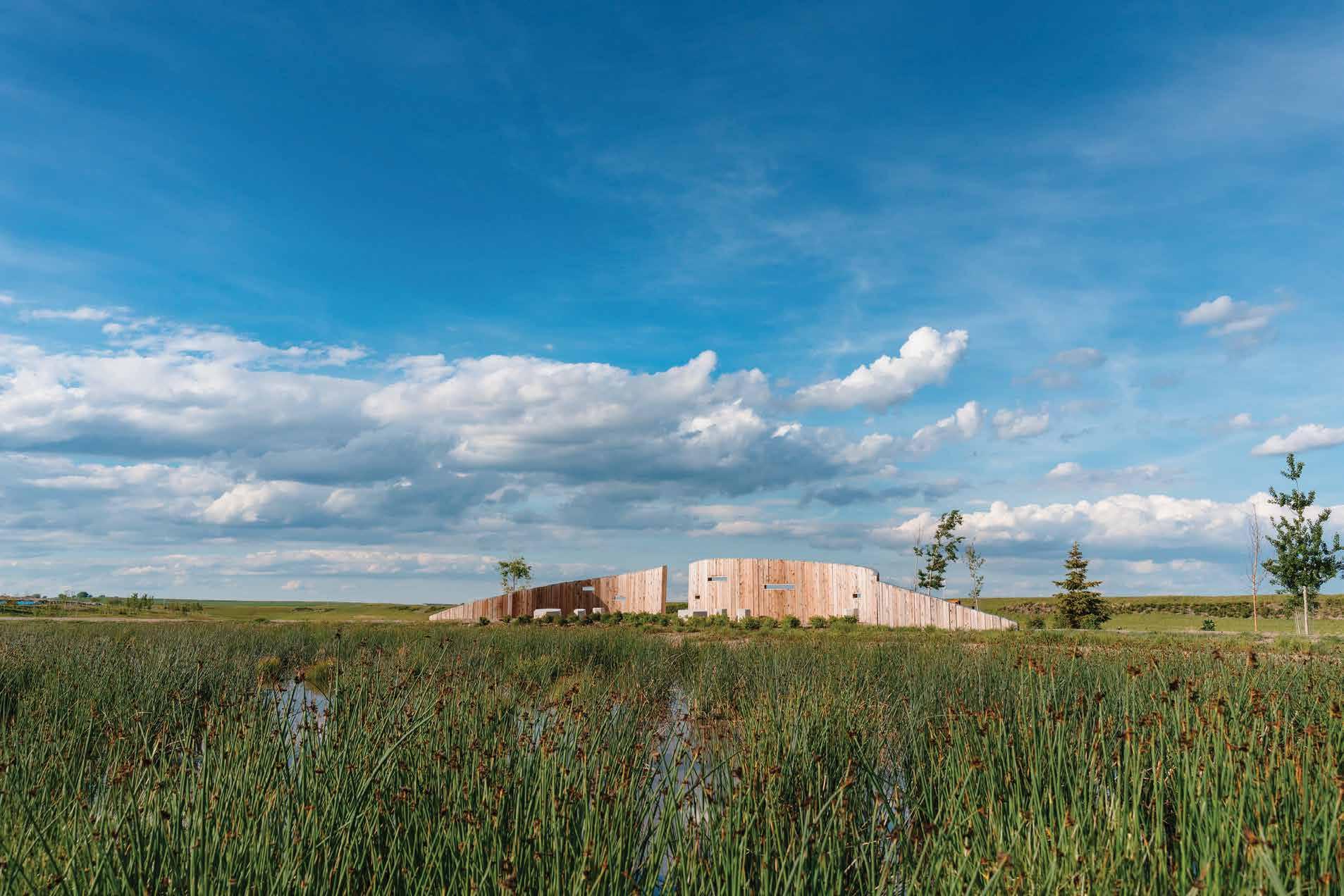

Mille’s influence extends far beyond its four walls. It’s part of a growing movement and new wave of city-building that’s reshaping the West End into a lively, reimagined urban centre.
Located inside Plaza 1000—a newly renovated office building by Astra Group, a developer known for transforming underutilized urban spaces into vibrant residences and community anchors—Mille is a bold, new destination that fuels the evolution of the West End into a social, cultural, and professional hub.
A
Since opening in summer 2025, this day-to-night restauarant & café has quickly become a favourite among the nearly 6,000 residents who call the area home—and the many more who pass through each day for work, meetings, or simply a great Italian meal. Mille offers lunch and dinner service alongside a café and espresso bar for those just stopping in.
Inspired by the timeless elegance of a grand hotel lobby, Mille occupies the foyer of Plaza 1000, located in downtown’s budding West End district. The space flows effortlessly into a chic lounge, refined dining room, and expansive outdoor patio.
Drawn from the European way of life, Mille is a dynamic, all-day concept blending charming café culture with elevated dining. It’s designed to flex with your day, from morning
espresso rituals and professional meets to late-night cocktails.
A concept new to Calgary, but much needed. Rising vacancies in traditional downtown offices, combined with Calgary's growing population and evolving workforce demand fresh ways to use inner-city spaces and rethink what it means to “go to work”. Mille answers this by offering a boardroom-meets-café culture where business and community intertwine.
At the heart of it all is a passionate team committed to exceptional food and authentic Italian hospitality. Owner Jenna Bazzana and Head Chef Rodney Luzentales promise a guest experience that honours Italy’s culinary traditions in a modern way.
“We wanted Mille to feel like an extension of our homes where food, conversation, and connection happen naturally. It’s rooted in Italian tradition, but with the contemporary energy of Calgary”
-Jenna Bazzana, Owner.
With its dense population, riverfront location, LRT access, and proximity to major educational institutions including the newly approved University of Calgary School of Architecture, Planning and Landscape campus the West End is ideally poised for renewal with all the makings of a thriving inner-city community. And Mille stands as a catalyst among the exciting new destinations drawing people to live, socialize, work, and dine in the area.
Named after the Italian word for “thousand,” a visit to Mille is the sum of countless thoughtful details, woven into one exceptional experience.
And the food is really, really good.
Come feel the beat at Mille
Cafe
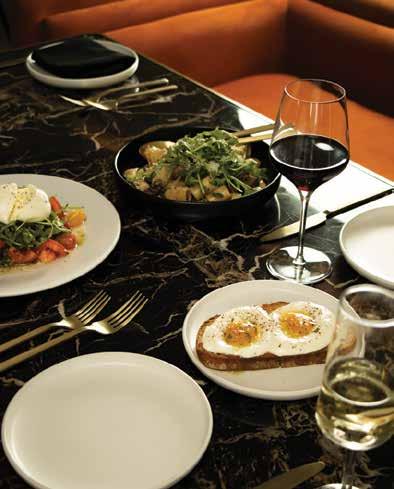
How an innovative program with the help of donors is making the future of spinal surgery in Calgary less invasive.
gery is commonly thought o , inv e procedure ecover osurgeon Dr Y ough endosc ger ler sur ed recovery.

o do so
thr y Endoscopic Spine Surgery, R ch ement
(CESSRA) progr
The CESSRA progr ’s g e to reduce the sur et them out o quick y experience less postoper less opioid use t ound time for returning to work.
Y . Ken o CESSRA progr through the University o th Services. th
F ommitted to fundr lion t e it. s to this col y will be home to the firs centr o provide public endosc gery services.
Better preparation and care pre- and post-surgery
CES o optimiz diz e through implementing ed Recovery After Surgery (ERAS) progr ever om the surgery itself, fr e pr months before surgery to postoper e. It focuses on improving recovery by sugges ohol ces ore surgery, op emo sible y zero.
“It’s about optimizing health before and after surgery to reduce the risk of complications, reduce the length of hospital stay, and reduce recovery time.”
Making spinal surgery less invasive
Endoscopic spine surgery involves onl eight-millimetre incision t c endoscope , thin, fle l tools — c ed t o- to five-centimetre incision required in tr gery. The pur f tools for endoscopic surge t of the fundr
This innov e surger g suffering fr r surgeries f e highly inv e. Surgeons remove fr trip the muscle off the spine to get to ect ould be in the or two to thr ys with weeks or months of recover ope, w ces surr omy, ys Y . “And l sur ootprint, we ly do the surger w e without gener .”
Aw e surger yer o ety ly does their own neur oring. Plus ves off signifi ocedure time when cutting out tering o . With the endoscopic progr ’s es surg ger y f t f f y, reducing w . Mos y.
The CESSRA progr l get l ev ly include more innov e procedures, like endoscopicsisted fusions. “We're going to try t forefront of this technology, ys Y . “W ve the g f being the centre of excellenc tr ound for endoscopic spine surgery in .”



















Trellis Society offers essential resources for youth and families for back to school and beyond.
Back-to-school season can be a lot for any kid to handle. There’s the excitement of seeing friends again, finding out who their teacher will be and mentally preparing to learn new things. When you add the challenges of precarious housing, family financial troubles or concerns about when their next meal will be to the mix, the whole thing becomes even harder.
It’s something Trellis Society’s chief operating officer of community wellness, Courtenay Hick, sees firsthand every September: the excitement, but also the immense challenges back-to-school time can present.
“We’ve got families who are couchsurfing or living in a shelter, and their mom or dad is trying to get them ready for school, and they probably didn’t sleep well the night before. They probably don’t have a full tummy, and their shoes might have some holes in them or aren’t the cool ones that the other kids have,” says Hick. “And then you add all those complexities into an environment where you have to be really structured and prepared to learn, it can be really hard.”
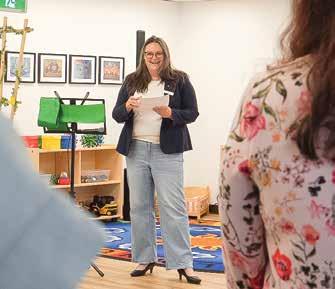

Created through a merge in 2020, Trellis is a community-based organization that provides support for vulnerable children, youth and families. Its programs range from preschool and after-school care to therapy and housing for homeless youth, and that’s just part of its broader continuum of support to help people access what they need, when they need it. During the backto-school season, Trellis hosts resource fairs with access to free school supplies, winter clothes and even haircuts.
“They’ve been really empowering and impactful for the families,” says Hick. “To be able to see a kid get their hair cut knowing they’re going to look pretty cool on their first day feels really good, and seeing the kids’ faces light up is pretty amazing.”
The support Trellis offers extends far beyond the first day of school, providing help to vulnerable youth on their path towards graduation with educational programming and mentoring available in 14 schools across Calgary. It also has multiple community hub spaces and club programming throughout the city, offering kids a safe place to go after school. Hick says resources are specifically designed to provide youth with holistic support, just as the organization’s namesake helps support plants so they can grow to their full potential.
“We really do see ourselves as a trellis: these families are doing the work
Calgarians looking to support the work of the Trellis Society can start by circling October 25 on their calendars. That’s when the Trellis Society’s annual Soirée takes over Hotel Arts with the goal of raising $1 million for the cause. Guests can look forward to live music, dancing and the opportunity to bid on silent and live auction items as well as raffle prizes. Hick promises there’ll be plenty of opportunity to connect and celebrate.
“It’s not your traditional sit-down and listen to people speak, it’s really an opportunity to mingle with likeminded people in the community,” explains Hick. “We share the impact people are making and then celebrate together, dancing the night away.”
For tickets and more information, visit growwithtrellis.ca/soiree.
themselves, we just happen to have the privilege of being with them along the way,” says Hick. “We help provide all the things that every human being needs in order to flourish and be successful in their life — things like therapy, access to childcare, access to group activities and support in community.”











Because of you, 509 families found a safe place to call home last year. Ready to make it happen again? More details here!
Saturday, October 25, 2025 | 6:00 PM Hotel Arts - 119 12 Ave SW, Calgary


CALGARY’S BEST PARTY WITH A PURPOSE. A-List is different. It’s elevated and exclusive, ahead of the curve and behind the scenes. Our corporate memberships give you and your clients access to the very best of Calgary, curated year round by Avenue.


TITLE SPONSOR

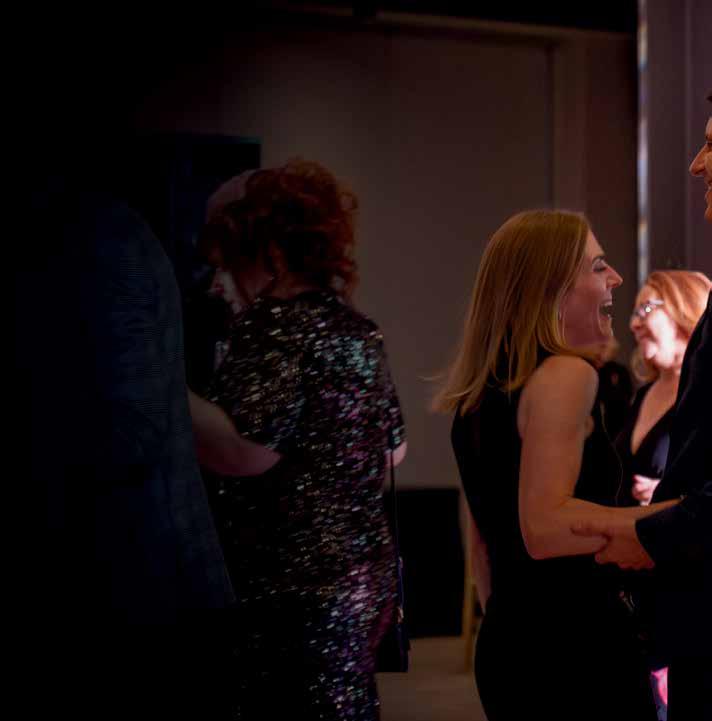





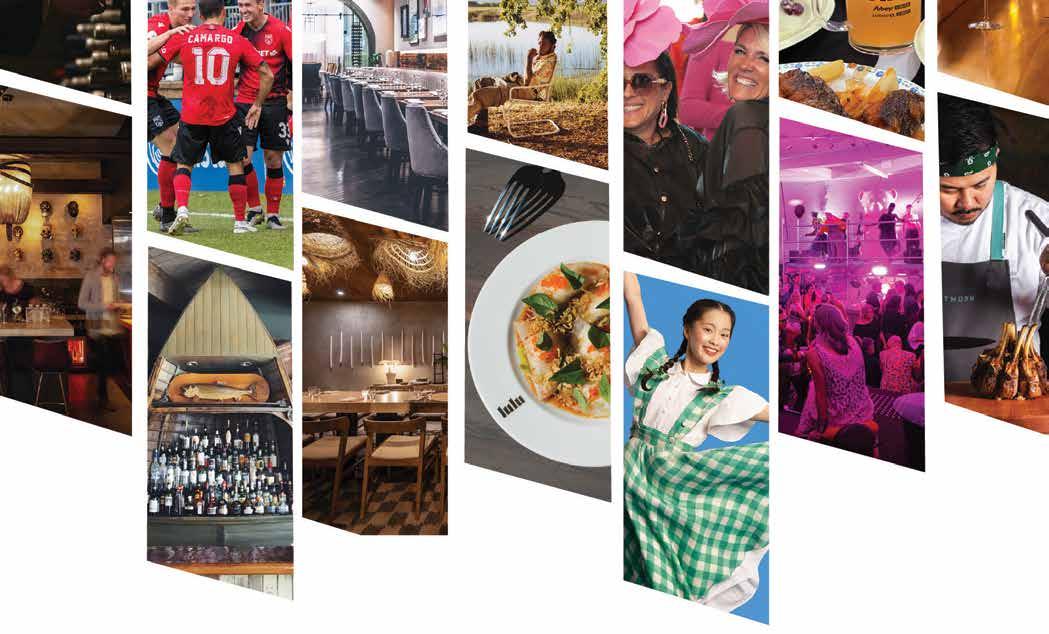
24 Editor’s Note
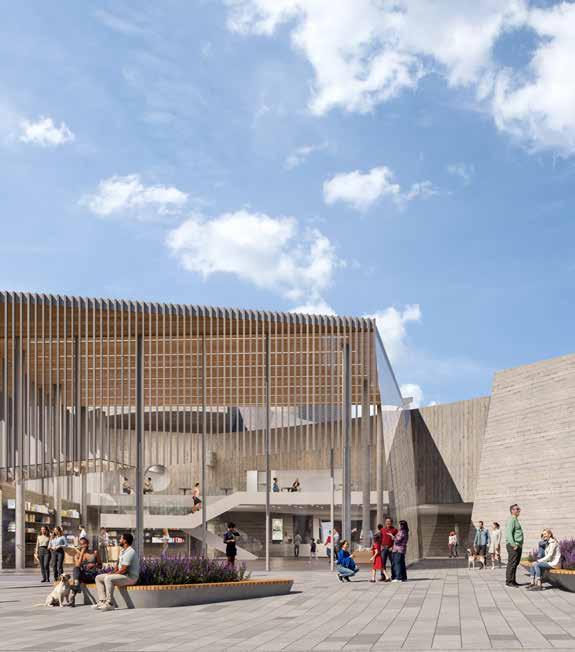

30 Hello, My Name Is… Phillip Ha: This math teacher makes the handicraft of crochet cool.
32 DIsh it Small Bar's version of a perfect double cheeseburger.
34 Shop Talk The Bridgeland Market is an inclusive neighbourhood gathering space.
34 Made Here Sarjesa Tea delivers social impact, one cup at a time.
36 How To Be Good The Central Outreach Hub provides vulnerable Calgarians with food and hugs.
37 The Fun-Things-To-Do List in September and October.
126 Dining: Sukiyaki House
The Kwong family shares how their Japanese restaurant continues to evolve.
130 Dining: Sandwiches
Calgary’s newest sandwich shops transform the lunchtime staple into hand-held showstoppers.
138 Decor: Hospitable Home
Restauranteurs create a calming and welcoming space for their family.
142 Decor: Favourite Spaces
GBE Energy’s office features an innovative take on a trading floor.
154 Parting Shots The Central Library
38 Best Dressed
We've brought back Avenue's list showcasing some of Calgary's most fashion-forward citizens.
57 Future of the City
We explore how Calgary is being shaped today through innovative city building and how that will create vibrant communities for tomorrow.
76 Plan Ahead
What the 10 Year Plan to End Homelessness — one of the most ambitious social policy undertakings in Canadian history — taught us, and what comes next.


86 State of the Arts
An unprecedented surge in funding for local arts organizations and infrastructure brings excitement to Calgary's arts landscape, but gaps still remain.
102 All Eyes on Alberta Ballet Artistic director Francesco Ventriglia revitalizes Alberta Ballet.
146 Mountains Find a home away from home at a mountain recreational property.
150 Mountains Five fabulous fall hikes featuring lakes, larches and loop trails in Calgary’s backyard.
Beacon Dermatology’s expertise in non-surgical facial lifting techniques ensures patients look and feel their best.
Cosmetic medicine is evolving. More and more, people want effective, naturallooking results without the risks or downtime associated with surgery. Calgary’s Beacon Dermatology is on the forefront, offering patients the latest in cutting-edge nonsurgical treatment options.
Innovation at Beacon is made possible thanks to an exceptional team of experts, including internationally respected dermatologists Dr. Andrei Metelitsa and Dr. Susan Poelman, and nurses and aestheticians with years of experience. The team elevates the standard of care in dermatology, providing flawless outcomes with no visible signs of a procedure having been done.
“We are noticing that patients want results that are natural, safe and selective for their individual features,” says Metelitsa. “We provide a very customized consultation to ensure that treatments are individualized for our patients. We create a priority list of our treatments and also create long-term plans to ensure that they continue to look great for many years.”
With traditional surgical face lifts, recovery time can range between four and six weeks, and it takes about six months to see the full results. At Beacon, patients achieve a natural look without surgery or invasive procedures.
In addition to numerous tightening nonsurgical procedures, the clinic provides three very exciting core non-surgical lift options with minimal recovery time, so patients can get back to their regular activities shortly after.
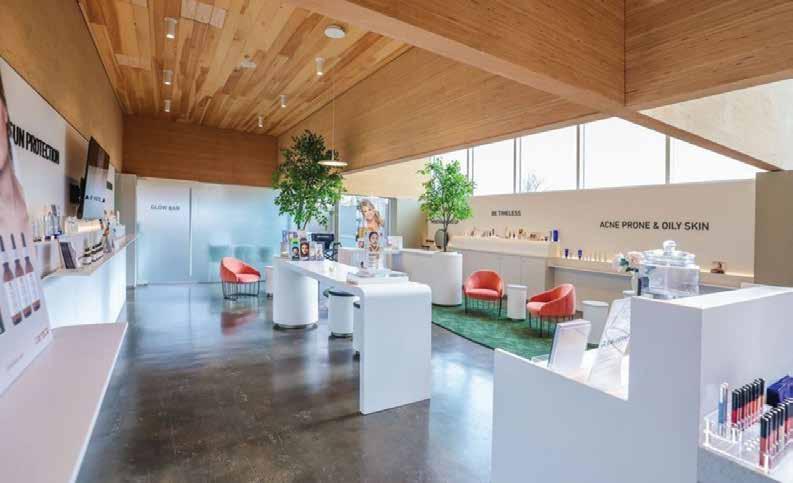

Sofwave is a novel non-invasive skin tightening procedure that uses ultrasoundbased technology to target the mid-dermis — where collagen and elastin are concentrated — making it ideal for addressing skin laxity and early volume changes. This technique is extremely well tolerated with little discomfort and minimal downtime, and it can complement deeper ultrasound treatments (ultherapy) and radiofrequency microneedling.
Beacon Dermatology also offers aptos threads — safe, degradable threads that are placed beneath the skin to lift any loose skin and create a non-surgical facial lift. The treatment also stimulates collagen production, which consequently tightens the skin. The procedure is minimally invasive and incredibly safe. Results last up to two years.
“Our doctors were among the first group in
Canada to incorporate them in practice, and Beacon Dermatology is the only dermatology clinic in Calgary that offers this procedure to our patients,” explains Metelitsa.
A Sneaky Lift involves the strategic placement of filler along the hairline and temple to create a refreshed appearance of lifted skin. “While this approach is very safe and effective, it requires a very thorough understanding of anatomy and utilization of special tools,” says Metelitsa.
Through an ongoing culture of learning, Beacon providers continuously refine their skills and knowledge and look ahead to avant-garde techniques and procedures. By harnessing the latest and greatest skills and techniques, the Beacon team ensures its patients benefit from the latest cosmetic medicine innovations, provided by appropriately trained, certified and experienced providers.
With its non-surgical facial lift methods, Beacon combines science, artistry and deep dermatological expertise, offering patients a personalized approach to facial rejuvenation.

TSERING ASHA
SENIOR EDITOR tleba@redpointmedia.ca
Even though I’m long out of grade school, I don’t think I’ll ever really shake off that September feeling of getting back to things after the summer break — school, work, a schedule, a routine and, yes, back to chunky sweaters.
For me, fall comes with a sense of change, a sense of purposefulness, and permission to breathe life into new ideas and plans. This is what I see in the pages of our September/October issue and in our city right now, too.
Autumn is arguably the busiest fashion season, so it’s fitting this issue features the return of Avenue’s Best Dressed list, on page 38. While this list went into hibernation during the pandemic, it was time to bring back this celebration of Calgary’s most stylish folks — across a broad spectrum of styles.
One of the city’s most fashionable events of the year is Contemporary Calgary’s Look Gala, an event Avenue is proud to sponsor. Currently, Contemporary Calgary is raising funds for a multi-million-dollar renovation and expansion of its home — the Brutalist former Centennial Planetarium and science centre. In our annual
innovation (starting on page 102).
As we head into a municipal election, we reflect on the future and past of the city’s development.
Writer Déjà Leonard also takes us on a look back at Calgary’s ambitious 10 Year Plan to End Homelessness. That plan was established in 2008 and was a Canadian first. Now, more than 17 years later, Leonard looks at how the plan changed the city’s thinking about homelessness and how to tackle it in her story on page 76.
If you like this kind of reporting, you can help us do more of it! Contribute to our Community Story Development Fund to help us do more reporting on social and community issues like homelessness, intimate partner violence and mental health and addictions. Find out more at AvenueCalgary.com/storyfund.
Finally, in our Future of the City package, we explore the idea of “third spaces” and why they are important to creating a vibrant and resilient city; we take a look at cSpace Calgary’s meanwhile lease pilot program — a world-leading initiative bringing life to underused commercial space — and we introduce you to five visionaries who are making the future they see a reality




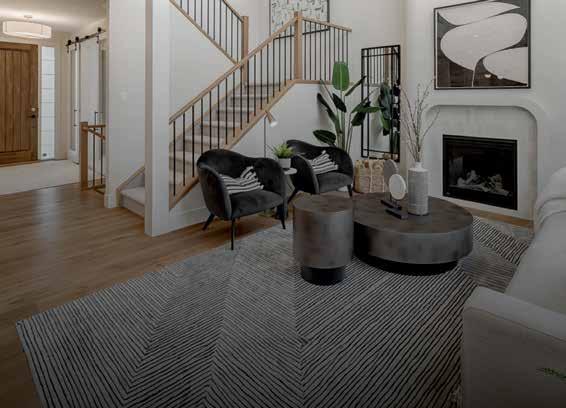















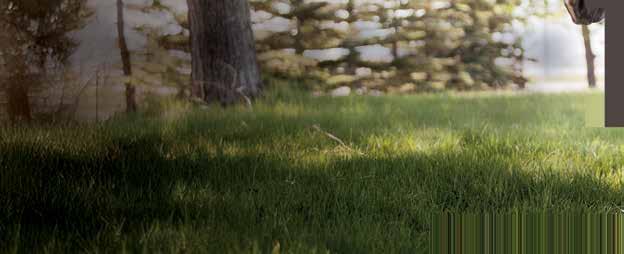





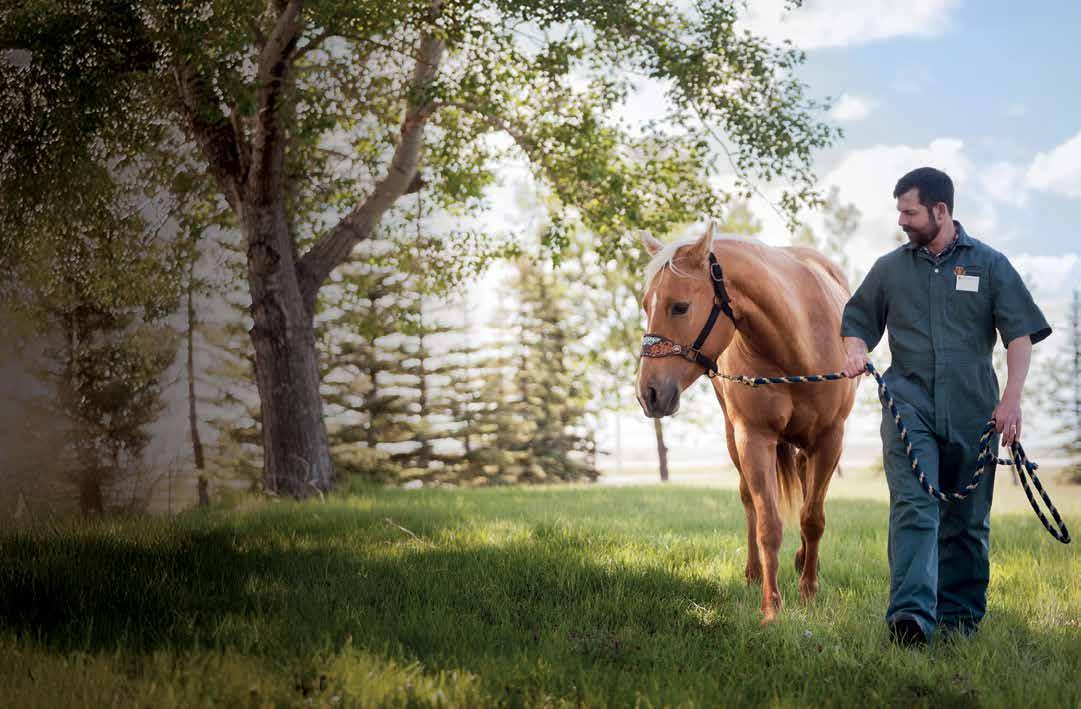
RedPoint Media Group
1721 29 Ave. S.W., Suite 375
Calgary, Alberta T2T 6T7
(letter mail only)
Phone 403-240-9055
Toll Free 1-877-963-9333 x0
Fax 403-240-9059
info@redpointmedia.ca AvenueCalgary.com
Facebook Avenue Magazine — Calgary Instagram @AvenueMagazine
Subscriptions
(Prices do not include 5% GST)
3 issues: $18
1 year (6 issues): $30
2 years (12 issues): $50
3 years (18 issues): $65
1 year (USA): $40 US
To subscribe, visit AvenueCalgary.com/shop subscriptions@redpointmedia.ca Advertising Inquiries
Phone 403-240-9055 x0
Toll Free 1-877-963-9333 x0 advertising@avenuecalgary.com AvenueCalgary.com
Published six times a year by RedPoint Media Group. Copyright (2025) by RedPoint Media Group. No part of this publication may be reproduced without the written consent of the publisher.
Canadian Publications Mail Agreement No. 40030911.
We acknowledge the traditional territories and the value of the traditional and current oral practices of the Blackfoot Confederacy, the Tsuut’ina and Stoney Nakoda Nations, the Otipemisiwak Métis Government of Alberta (Districts 5 and 6), and all people who make their homes in the Treaty 7 region of Southern Alberta.
Publisher Käthe Lemon, klemon@redpointmedia.ca
Executive Editor Colleen Seto, cseto@redpointmedia.ca
Consulting Editor Meredith Bailey
Design Director Steve Collins, scollins@redpointmedia.ca
Digital Managing Editor Alana Willerton, awillerton@redpointmedia.ca
Senior Editor Tsering Asha, tleba@redpointmedia.ca
Assistant Editor Chris Landry
Contributing Editor Olivia Piché
Staff Photographer Jared Sych
Graphic Designer Sofía Velásquez
Editorial Interns Alicia L'Archeveque, Eula Mengullo
Digital Editorial Intern Viancy Salubre
Contributors Carmen Cheng, Sarah Comber, Cooper & O'Hara, Tyler Lemermeyer, Déjà Leonard, Jacquie Moore, Andrew Penner, Pete Ryan, Sean P. Young
Contributing Fact-Checkers Sarah Comber, Riley Fonger, Fabian Mayer
Copyeditor Alex Rettie
Proofreader Alex Frazer-Harrison
Land Acknowledgement Advisors Elder Edmee Comstock, Elder Reg Crowshoe, Elder Rose Crowshoe
Print/Digital Production Manager Mike Matovich
Digital Producer Paula Martínez
Client Support Coordinator Alice Meilleur
Senior Account Executive Jocelyn Erhardt
Account Executives Nadine Benoit, Vicki Braaten
Events & Community Coordinators Dare Maurik and Eula Mengulo
Printing Transcontinental RBW
Distribution City Print Distribution Inc.
REDPOINT MEDIA GROUP INC.
CEO, Co-owner Roger Jewett
President, Co-owner Käthe Lemon, klemon@redpointmedia.ca
Director Strategy & Content Meredith Bailey, mbailey@redpointmedia.ca
Art Director, RPM Content Studio Veronica Cowan, vcowan@redpointmedia.ca
Administrative and HR Manager Tara Brand, tbrand@redpointmedia.ca
Accountant Jeanette Vanderveen, accounting@redpointmedia.ca

We acknowledge the financial support of the Government of Canada and the Government of Alberta.

Avenue is a proud member of the Alberta Magazine Publishers Association, Magazines Canada and the International Regional Magazine Association, and abides by the editorial standards of these organizations.

Avenue has partnered with TreeEra to plant 1,425 trees, replacing all the trees used to print the magazine this year.
The Avenue Editorial Advisory Council
Laura Anderson, Julianne Beatty, Chrysta Benning, Erin Best, Robert Blood, Shalini Bhatty, Brian Boulanger, Victoria Bradbury, Heather Campbell, Danielle Carrafo, Melinda Channon, Hildy Chong, Nicole Claiter, Amy Cooper, Steve Cordick, Michal Cote, Sidney Craig Courtice, Carolyn Cox, Brett Decarie, Grant Doyle, Tania Drews, Brian Duggan, José Duchesne, Nicole Dyer, Russell Erickson, Meaghan Farquharson, Will Freeman, Janice Froese, Drew Gillson, Briggitte Gingras, Giono Studio Design, Naomi Grattan, Kelsey Hahn, Jillian Haneiph, Amanda Hamilton, Cat Hackman, Mark Heard, Lindsay Hill, Alayne Hing, Tara Hluchy, Rameez Husseini, Kyla Ilic, Tania Kaschl, La Klayman, Michelle Lee, Jamie Leong-Huxley, Jolene Livington, Brad Lohman, Quan Ly, Jil MacDonald, Leah Makin, Jodie Masikewich, Kris Matthews, Tammy McCorkell, Loni McDonough, Heather Morris, Anna Murphy, Jeff Nechka, Melissa Norris, Maxim Olshevsky, Viktoria Paulovich, Kelly Pitaoulis, Colleen Pound, Natalie Preer, Rithesh Ram, Becky Rock, Paul Salvatore, Nolandeep Sangha, Ranny Shibley, D Smith, Mandy Smith-Haber, Cynthia Solano, Rachelle Starntes, Janet St Germain, Heather Stubbs, Ian Sutherland, Anila Umar, Gail Urquhart, Edie Vlooswyk, Janet Wakal, Andrew Ward, Christa Welsh, Wendy Winder, Naomi Withers, Kevin Wong, Stephanie Wozniak
Members of Avenue’s A-List become a part of our team and have the opportunity to get a seat on Avenue’s Editorial Advisory Council and see their names here in the masthead of the magazine.

Gain access to unparalleled behind-the-scenes tours, intimate dinners, secret tastings and exclusive parties. The A-List is more than a membership, it’s your passport to the extraordinary.












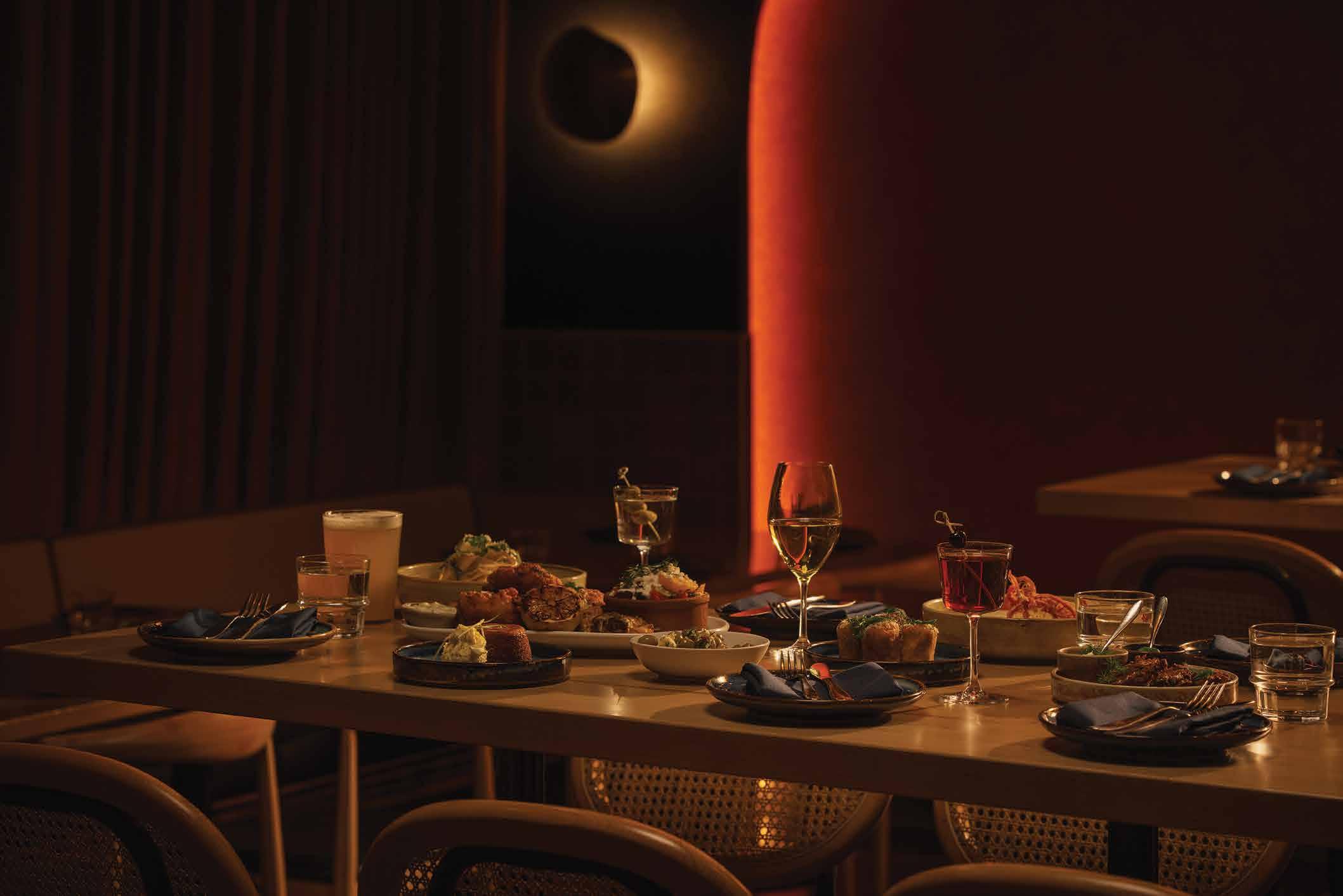
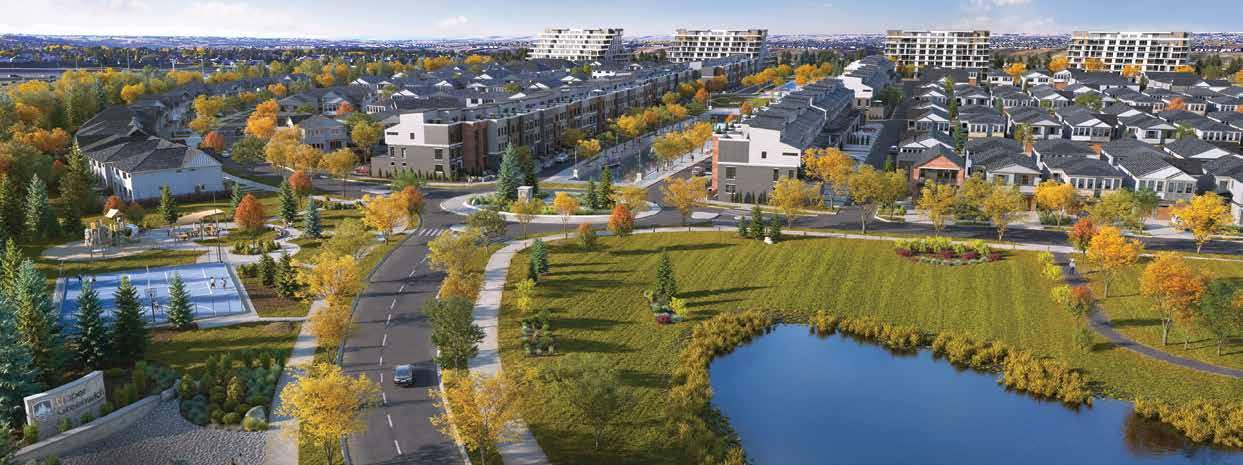
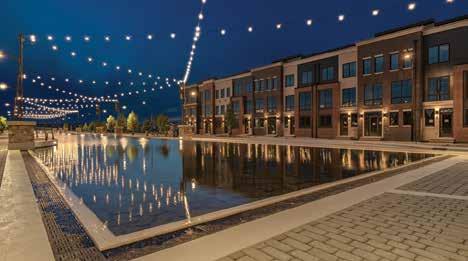









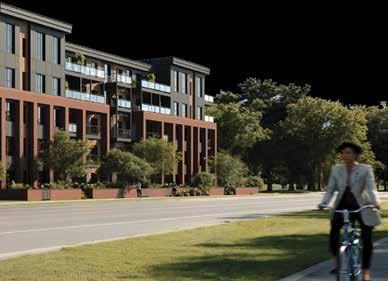
BY JACQUIE MOORE
Can crochet change the world? If you ask Phillip Ha, he’ll tell you that making small stuffed creatures out of yarn (a.k.a. amigurumi in Japanese) is indeed a powerful path to patience, persistence and better problem-solving.
Ha grew up in Calgary with Vietnamese-Canadian parents who owned and ran a tailor shop on 17th Avenue S.W. for many years. “I watched them fix and make clothes, and I learned to appreciate the value of working with my hands,” says Ha, who works as a substitute math teacher in the Calgary Catholic School District where he has motivated students to establish crochet clubs.
Inspired to create critters from the real world and fiction — many from the Pokémon universe — Ha taught himself to crochet to make the plushies he couldn’t afford to buy. And his skill in math lends itself to crocheting by helping him understand shaping techniques, stitch counting and calculating dimensions when it comes to designing amigurumi patterns. “I’ve always loved figuring out how things work, I like making cute things and I like math — crochet puts it all together for me,” he says.
Now, Ha sells his coveted creatures at markets and also designs crochet patterns that he sells online through his SirPurlGrey Etsy shop. His Instagram (@sirpurlgrey) showcases many of his incredibly detailed and well-crafted little friends.
Ha’s constantly moving hands and the innumerable finished creations he shares in his classrooms serve as conversation-starters for him to connect with others and illuminate the positive benefits of handcrafting. “Crochet helps with focus by requiring us to get into the habit of putting away all other distractions,” he says.
It’s impossible not to be charmed by Ha and his adorable crocheted characters, especially for the growing number of young men embracing the craft through online tutorials (including Ha’s on YouTube). It’s a small, woolly act of rebellion and self-expression. Crochet today, change the world tomorrow.

1
“I love the Calgary streetwear brand Milk Run. I have a white long-sleeved shirt with lemons on it. I love yellow and I love lemons. It’s my favourite shirt.”
2
“I live in Ramsay, not far from Canela Vegan Bakery and Café in Inglewood. You’d never guess their stuff is vegan — it’s so delicious, and I always go for their cinnamon buns. They do different frosting flavours [seasonally and on the side, if you ask]. And they have the most amazing breakfast sandwiches.”
3
“After watching Doechii perform at the Grammys this year, I got obsessed with her album, Alligator Bites Never Heal. I’ve been listening to it on repeat for a month. Her style of rapping is so clear, and her lyrics are inspiring. I’m usually crocheting when I listen to it.”
4
“I dance as an extracurricular hobby. I’ve been dancing with Free Spirit Dance for about three years now, mainly house, jazz funk and hip hop.”
5
“Anytime I’m commuting, I listen to podcasts. Lately, I’ve been listening to something called Ologies. The host, Alie Ward, interviews a different “ologist”’ — like anthropologists, sociologists and biologists — whose specialties are really interesting. Every week, I learn about a job or research I wasn’t aware of. It’s very cool to hear about what people do for a living”.






Small Bar is a new bar in Bridgeland — sort of. The space was previously known as Cannibale, a sleek-yet-friendly cocktail bar, but, after 10 years, owners Mike Hope and Shayne Perrin needed a change. Cannibale closed, and Small Bar grew
“Toppings ... are complementary, but don’t overtake the whole smashburger experience,” says Turner, noting that the American cheese melts quick and has the perfect mouthfeel for a smashburger. Other toppings include lightly sautéed onions, sliced garlicky dill pickles to cut through the richness, and Small Bar’s mac sauce, a take on Big Mac sauce, made with mustard, mayo, ketchup, pickle and onions.

from the ashes. Now more of a neighbourhood bar that draws inspiration from the North American dive bars Hope and Perrin love, Small Bar keeps it simple. That is exemplified by the double cheeseburger — a dish embodying Small
Bar’s mentality of unfussy, delicious food. Executive chef Kevin Turner shares what goes into Small Bar’s version of a perfect cheeseburger. 813 1 Ave. N.E., 403-454-5808 smallbarbridgeland.ca
Cannibale’s Bridgeland barbershop may be closed, but you can still get a quick buzz at the 17th Avenue S.W. and 9th Avenue S.W. locations.
cannibalebarber.ca
THE BUN
“We use a potato roll made by Martin’s Famous,” Turner says. “They’re known and loved for their sweet, buttery taste, pillowy texture and golden colour.” The potato roll stays soft and fluffy, but still holds up to the burger’s juices.
Staying with the dive-bar theme, Small Bar serves classic crinkle-cut fries alongside each burger. “The crinkles help hold sauce when dipping, and we make them super crispy and well seasoned,” says Turner. Fries come with ketchup, aioli, curry sauce or Bushmills peppercorn gravy for dipping.
Made from 100 per cent dry-aged Angus chuck from Fire River Farms, the patties are prepared smashburger style — flattened to increase browning for extra flavour. “We never pre-form our patties,” says Turner. “We scoop [the beef], press it hard onto the flat top to form a tasty caramelized crust, then flip and finish it with sautéed onions and American cheese.”
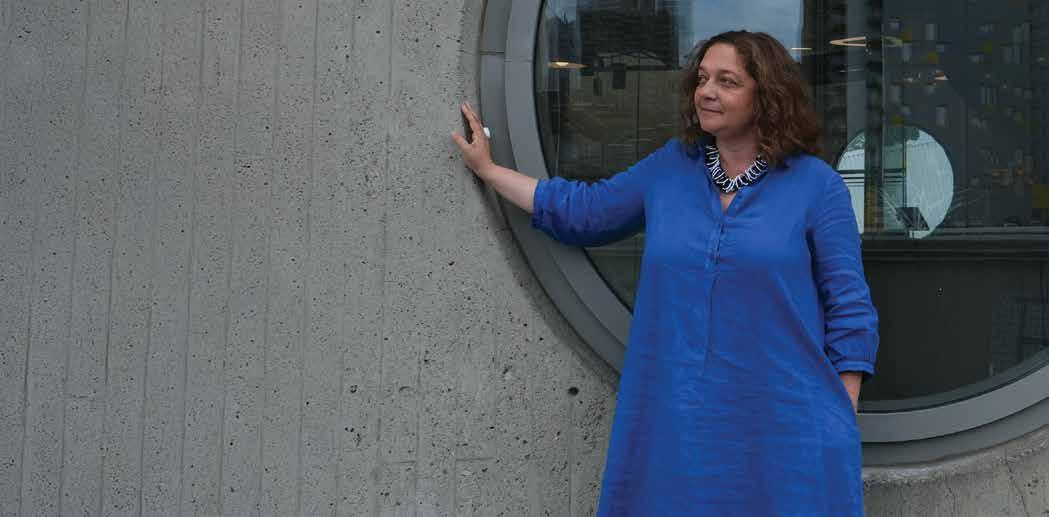
Contemporary Calgary is at a pivotal moment of growth as it evolves its world-class programming. The public contemporary art gallery welcomed new chief curator Mona Filip this past spring.
A key player in Calgary’s arts and culture landscape, Contemporary Calgary’s appointment of Filip will deepen its impact on the city. Filip’s arrival coincides with the Centennial Planetarium Transformation Project, which will reimagine the gallery’s current home as a multidisciplinary civic hub.
Opened in 1967 and featuring an awardwinning brutalist design, the planetarium was Calgary’s first science centre and has housed Contemporary Calgary since 2020.
“The plans for the renovation and expansion captivated me,” says Filip. “It’s a significant moment of growth and renewal, and I wanted to be part of it, to bring to life an artistic program that measures up to the organization’s ambitions and the public’s expectations.”
Born in Bucharest, Romania, Filip studied art in Buffalo, N.Y. and Washington, D.C., before working for close to two decades as a curator in Toronto. Filip brings a unique blend of global experience to the role.
“Her depth of experience, international perspective and thoughtful vision will allow us to amplify our ambition and broaden our reach,” says CEO David Leinster. “Filip saw the
Our goal is not to offer answers, but to spark meaningful questions about who we are, and who we want to become.” MONA FILIP
entire building, not just the galleries, but every corner, as a living canvas for exploration. Her leadership marks a new chapter rooted in rigour, collaboration and creative risk-taking.”
Set to be completed by 2029, the Centennial Planetarium Transformation Project’s expansion and reinvention will be supported by the Alberta Government with $40 million in funding.
Filip envisions the revitalized space as a site for immersive, intergenerational and cross-cultural experiences where artists with unique approaches to innovation will be supported to explore new directions.
“I want to engage our audiences in expansive explorations of ideas, led by artists helping us imagine possible futures.”
Filip is committed to featuring local and regional creators, who she says are involved in the same vital conversations happening around the world.
“Our programming will highlight how regional artistic practices contribute to
international discourse,” she says.
This inclusive, expansive approach is already being implemented. Filip is reconnecting with people like local artist and chair of Alberta University of the Arts, Adrian Stimson, who praised her appointment as chief curator.
“Her care for artists, critical thinking and belief that art can change the world is more than we can ask for in a chief curator,” says Stimson. “Bravo, Contemporary Calgary.”
Filip’s philosophy centres around the belief that contemporary art fosters empathy, dialogue and social change.
“Art is an instrument of survival and resistance. It allows us to see the world through others’ eyes. That’s where change begins – with ourselves, and through that, with our communities.”
As Calgary undergoes rapid civic growth, Filip sees Contemporary Calgary becoming even more of a cultural anchor and gathering place where imagination fuels possibility.
“We want visitors to feel the same curiosity and wonder that once brought them to the Science Centre,” Filip reflects. “Our goal is not to offer answers, but to spark meaningful questions about who we are, and who we want to become.”
With Filip at the helm of programming, Contemporary Calgary is not only growing, it’s daring to dream.
BY CARMEN CHENG
BRIDGELAND MARKET CONTINUES TO EVOLVE TO MEET THE NEEDS OF ITS NEIGHBOURS.

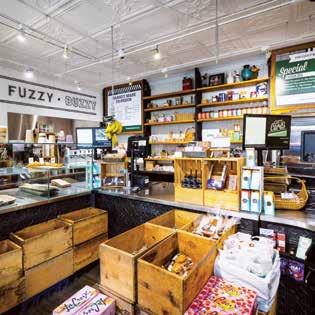
Yousef Traya, owner of Bridgeland Market, has lived on the same block as the store for more than 40 years. “We were always the kids that lived above the grocery store,” he says.
Traya comes from a long line of grocery store entrepreneurs. Starting in 1981, his mother Fatme and late father, Nawaf, owned several businesses in Bridgeland, including a grocery store, an ice cream shop, and Tazza Deli & Grill, a popular Mediterranean restaurant that closed in the spring of 2020. “We’ve always had grocery stores in our family,” Traya says. “In Calgary alone, between my relatives, we’ve had over 15 different convenience stores throughout the years.”
But Traya’s approach to Bridgeland Market is very different from his relatives’ conveniencefocused approach. He emphasizes quality products and service, making his store a
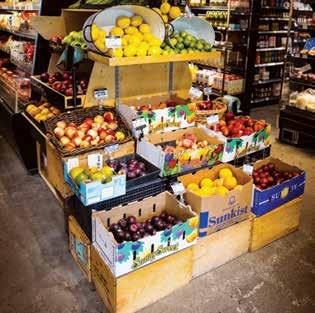
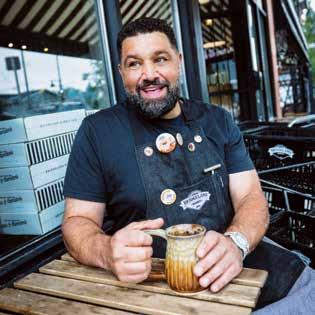
community hub that welcomes everyone and anyone in the neighbourhood. “We have a cheese case with different varieties of cheese. We have a ready-made meal section. We have a bakery. We have a chef. We have five different kinds of tomatoes. We also have a florist. And you can come get your espressos and cappuccinos.”
Traya aims to meet the changing needs of Bridgeland’s changing residents. “We have evolved with the neighbourhood and try to service the community, and make it not exclusive but inclusive.”
Traya’s parents built Bridgeland Market into a community cornerstone, and Traya intends to carry that on. “I’m most proud of what [my parents] accomplished, and the legacy they have given to me and my siblings.”
1104 1 Ave. N.E., 403-269-2381, bridgelandmarket.com

SARJESA DELIVERS SOCIAL IMPACT, ONE CUP OF TEA AT A TIME.
Stemming from a school project, Alexandra Sangster created a tea to raise awareness about violence toward women and girls. Now, more than eight years later, Sangster has grown that concept into Sarjesa, a tea company offering delicious tea blends and latte powders while trying to create systemic change to empower women.
“It became clear that treating the symptoms of violence toward women, like economic disempowerment, [doesn’t address] underlying issues,” Sangster says. “To heal those things and change the way women are looked at in the community requires work with whole communities.” Sarjesa’s sourcing framework considers its suppliers’ impact on women, and sources ingredients from farmers, growers and communities that economically support women.
Popular flavours include Earl Grey and peppermint, and Sarjesa has started making seasonal blends. As Sangster works toward helping build supply chains that prioritize equity, her customers can trust that every sip of Sarjesa tea supports meaningful change. made here
WHERE TO FIND IT
Available at several Calgary retail locations sarjesa.com, @sarjesa_tea












BY JACQUIE MOORE
how to be good
The impetus behind the benevolent mother ship known as Central Outreach Hub is simple: There are hungry people out there, let’s feed them.
Peter Sheridan is head of the addictionsrecovery team at Central United Church, which runs the hub. A recovering alcoholic himself, Sheridan helps oversee the hub’s soup kitchen, clothing-donation program and affordable-housing partnerships, all as a volunteer. If you call him a saint, he will laugh and continue doling out lunch and hugs to the myriad vulnerable Calgarians who know him by name.
“It was our dream at Central United to do more for homeless folks,” says Sheridan. That dream came true when, one Sunday morning a couple of years ago, he and his fellow dogooders asked the Crazy Indians Brotherhood Calgary (the local chapter of the non-profit organization) to round up anyone downtown who might need a meal.
More than 200 Calgarians showed up for lunch at the church that day, many unhoused, some working poor, all struggling to the point that a midday meal wasn’t a given. Within weeks, the Sunday soup kitchen became a Tuesday thing as well. From there, the hub quickly evolved when Good Neighbour community market started dropping off hundreds of pounds of donated clothing to hand out; paramedics showed up to help people with unchecked injuries and street-sore feet; and representatives from The Alex came to help with housing, financial or social support.
Just as no one seeking a meal is ever turned away from the hub, nobody seeking a turn at doing good leaves empty-hearted. From ladling soup to sorting clothing to, as Sheridan puts it, “just having the patience to sit there and listen to someone’s story,” there is always some way and someone to help. Show up any Tuesday or Sunday morning and, by afternoon, you’ll have made someone’s day better — including your own.

The mission of Central United Church includes caring for and “radically accepting” others. Alongside many local mental health, addictions-recovery, housing and non-profit organizations, the church’s staff and volunteers serve vulnerable Calgarians. The hub operates on private donations including food from Safeway, Starbucks and other retailers. Volunteers are always needed; visit centralchurch.ca, go to 131 7 Avenue S.W. or call Peter Sheridan at 403-805-4887.
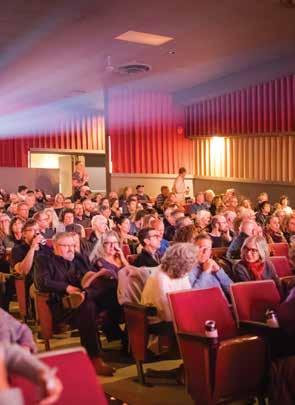
Cheer on Cavalry FC
SEPTEMBER 13
Watch our city’s men’s soccer team play against (and hopefully defeat) the Halifax Wanderers at ATCO Field at Spruce Meadows. canpl.ca/cavalryfc
Catch a flick at the Calgary International Film Festival
SEPTEMBER 18 TO 28
The annual 11-day film festival is back, showcasing local and international films around town. Check the schedule for special events like director’s talks and Q&As. ciffcalgary.ca
Attend Cirque du Soleil’s ECHO RUNNING TO OCTOBER 19
Cirque du Soleil’s new show, inspired by the optimism of youth, follows heroine Future through the stages of evolution. Take in all the jumps, twists, turns, colour, technology and storytelling. cirquedusoleil.com
Participate in Truth and Reconciliation
SEPTEMBER 28 TO 30
Observe National Day for Truth and Reconciliation by taking part in activities and events hosted by the likes of Heritage Park, United Way and the Calgary Public Library, starting September 28.

Sweat in Calgary’s largest sauna
Offline Wellness Club is Calgary’s largest sauna and social club. Stop by to relax, try the cold plunge and socialize with others. offlinewellnessclub.com
Revel in the Wordfest
Imaginairium Festival
OCTOBER 14 TO 19
Celebrate the 30th anniversary of the Imaginairium Festival, a large and lively literary festival hosted annually in the Beltline. wordfest.com
Celebrate Halloween at Pumpkins After Dark
SEPTEMBER 19 TO OCTOBER 31
The annual, family-friendly, walk-through Halloween experience is back at WinSport. Browse more than 10,000 hand-carved pumpkins, see live carving demos and enjoy sweet treats. calgary.pumpkinsafterdark.com
Sip on a warm and tasty fall drink
As the weather starts to cool, it’s the season to sip on warm drinks with fall flavours like pumpkin spice, apple cinnamon, nutmeg and maple. Try an autumn-inspired beverage from a local shop like Deville Coffee, Rosso Coffee Roasters or Semantics Cafe.
OCTOBER 17 & 18
BMO CENTRE | STAMPEDE PARK USE CODE AVENUE30 FOR 30% OFF GENERAL ADMISSION







Calgary is full of designers, artists and fashion-forward thinkers who bring their individual styles to the streets, the boardrooms and the ballrooms of the city. Trends come and go, but true style is forever. It’s an exploration and expression of self through clothing and accessories.
This year’s Avenue Best Dressed list shows that Calgary’s style continues to evolve right alongside the city itself. Those who dazzle us with their sartorial choices walk the line between classic and cutting-edge, but they always know who they are.
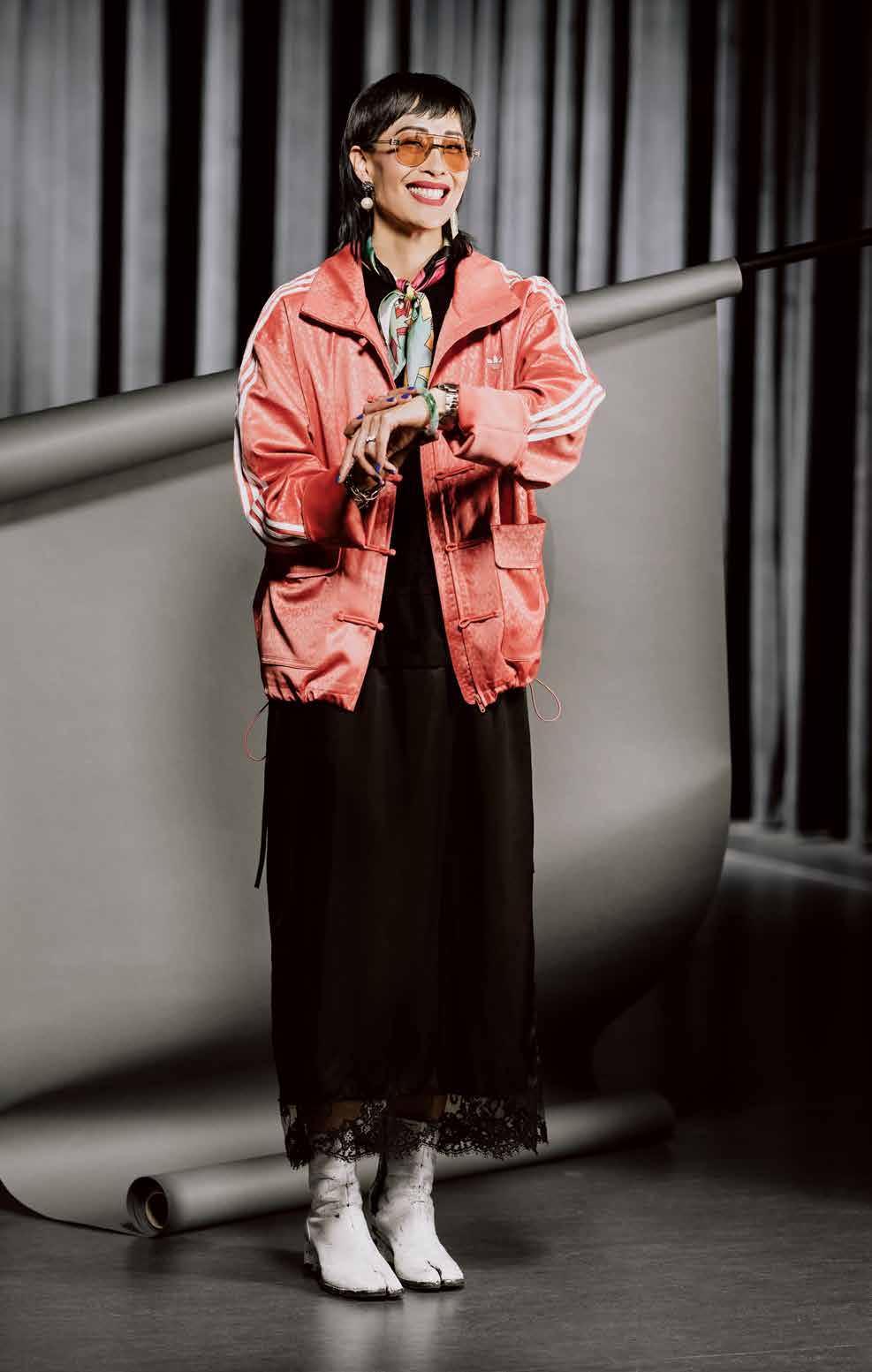
The director of external relations and marketing for Glenbow and owner of Article Styling stands out by embracing her Chinese heritage and mixing it with a bold, modern expression.
How would you describe your personal style?
My style is all about contrast. I’m always mixing things — feminine and masculine, streetwear and high fashion, soft lines with sharp structure. I’m drawn to bold eyewear, strong shapes and pieces that mean something, whether that’s cultural, personal, or handmade. I don’t follow trends, though I do appreciate them. My style is always evolving, but it’s grounded in who I am and what I care about.
Why is expressing your personal style important to you?
Because, for a long time, I didn’t feel like I could. I grew up in a small town, shy and self-conscious — over six feet tall since I was 15, and Chinese in a mostly white community. All I wanted was to blend in. In my 20s, my closet was made up entirely of black knits. I dressed to disappear. But, becoming a mother to two half-Chinese boys changed how I see myself — because I want them to grow up proud of who they are, and to see that confidence reflected in me. Now, style is how I show up. It reflects my values, my culture and my perspective. It’s how I tell people who I am — without having to say a word.
Jacket Adidas; glasses Bottega Veneta from Chinook Optical; dress from MSGM; scarf from HG Vintage; jade bangle picked up on a family trip to Taiwan; ring Subject Object by Bramble Lee Pryde.
The president and CEO of Mode Models, chair of LOOK Gala and board co-chair of Contemporary Calgary is an international fashion icon working with some of the biggest names in editorial fashion, including household-name models and magazine editors.
What do you want your style choices to say about you?
I want my style to say that I’m confident, creative and never afraid to take up space. That I know quality but don’t take myself too seriously. That I can spot a diamond in the rough — just like in my career as a model scout — and make it shine. My choices reflect a personality that’s bold, flexible and unafraid to evolve. I dress to express and impress, and every outfit tells a story, usually with a little twist.
What piece or item that you own is your favourite?
A vintage black leather army jacket I scored in Paris in the ’90s at the Clignancourt [flea] market [shown here]. It’s worn, weathered and completely iconic — like it’s lived a few lives before finding its way to me. That jacket sums up my style: rooted in history, a little rebellious and totally one of a kind. I love pieces that have a story, and I wear them like armour — with attitude.
Jacket military A-line leather coat from the Clignancourt market in Paris; jacket layered underneath by Pendleton from Value Village; sweater by Giorgio Armani from Larry Ryder; pants vintage from The Plus Bus in L.A.; chain by Steven Meisel from Zara; glasses by Cartier shoes by EYTYS.
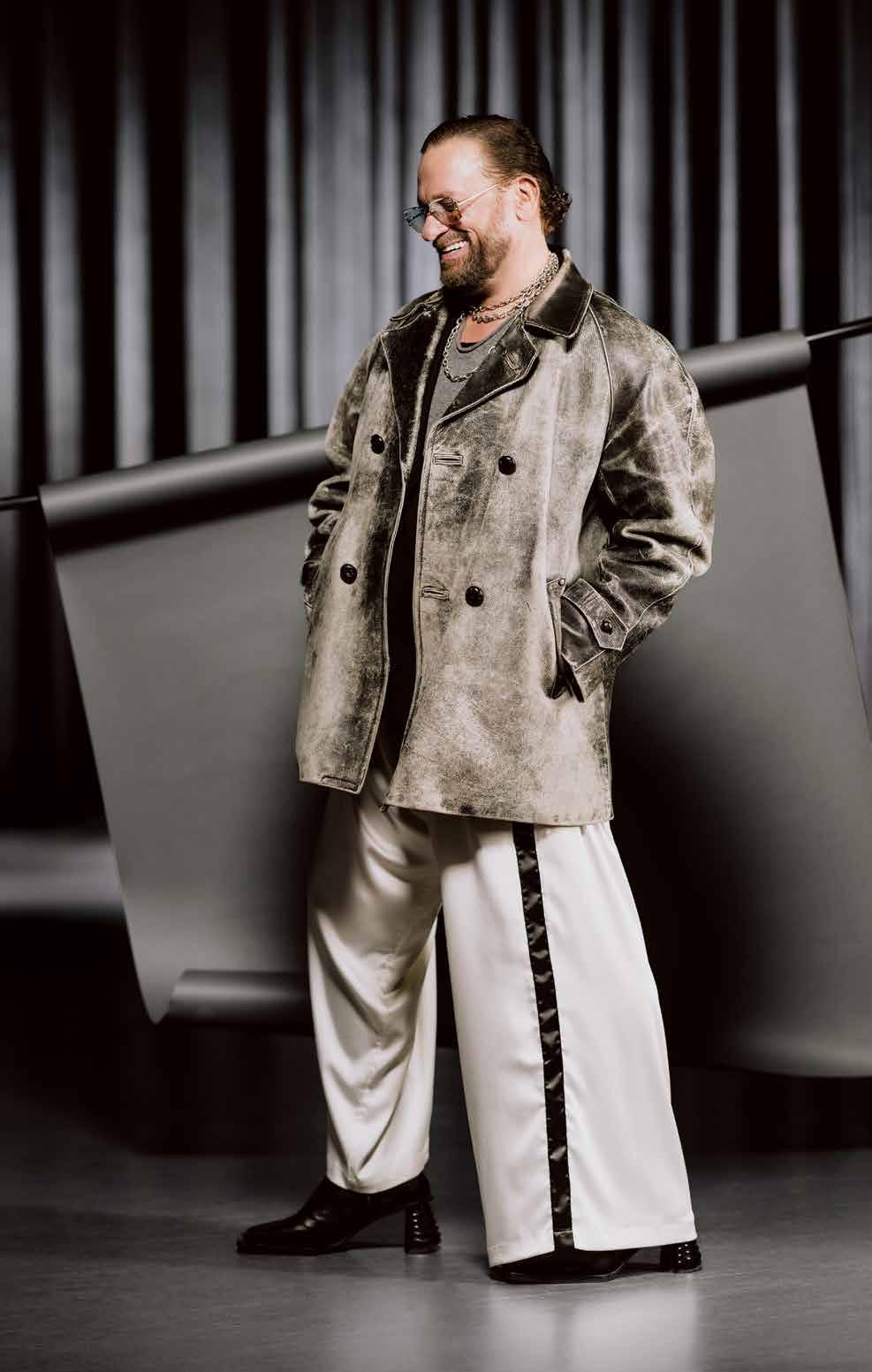
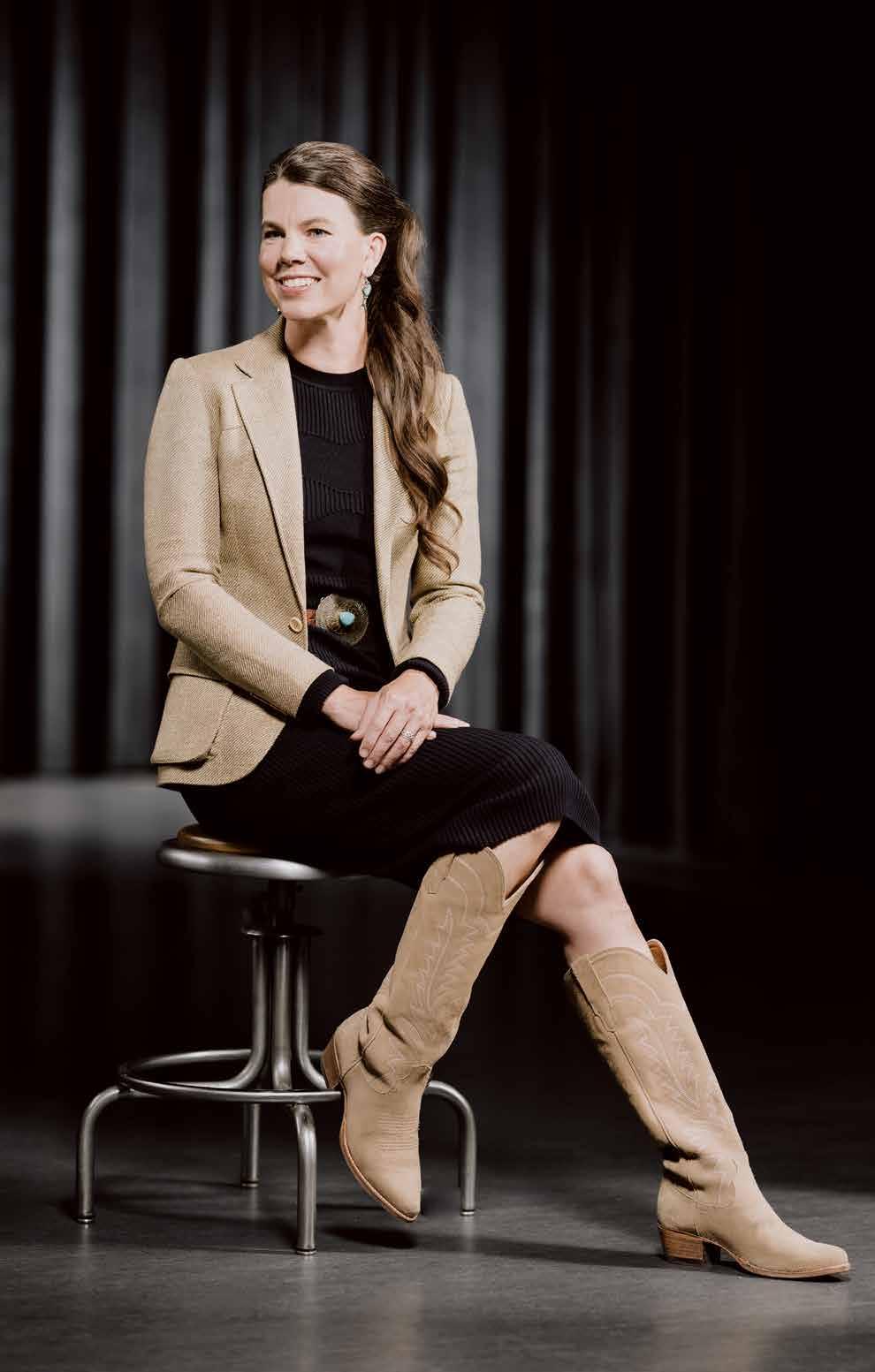
The horticulturalist and Calgary Stampede Rodeo Committee member spends much of her time tending to and riding her horses, and it shows in her Western-chic style.
What is your favourite piece of clothing?
I have a black wool coat that I bought on my honeymoon in Paris that I will love forever. I spent more on it than I probably should have at the time, but all these years later I still have it and love it. A bonus of living in Calgary means you’ve plenty of opportunities to wear a great coat.
What is your favourite designer or place to shop in Calgary?
My favourite designer is my friend, Paige Callaway. She creates the most beautiful and well-fitting Western heritage shirts under her brands, Pursue Victory and Paige 1912. My favourite places to shop in town are Holt Renfrew, Vespucci, Chinook Optical — and Smithbilt for a great hat.
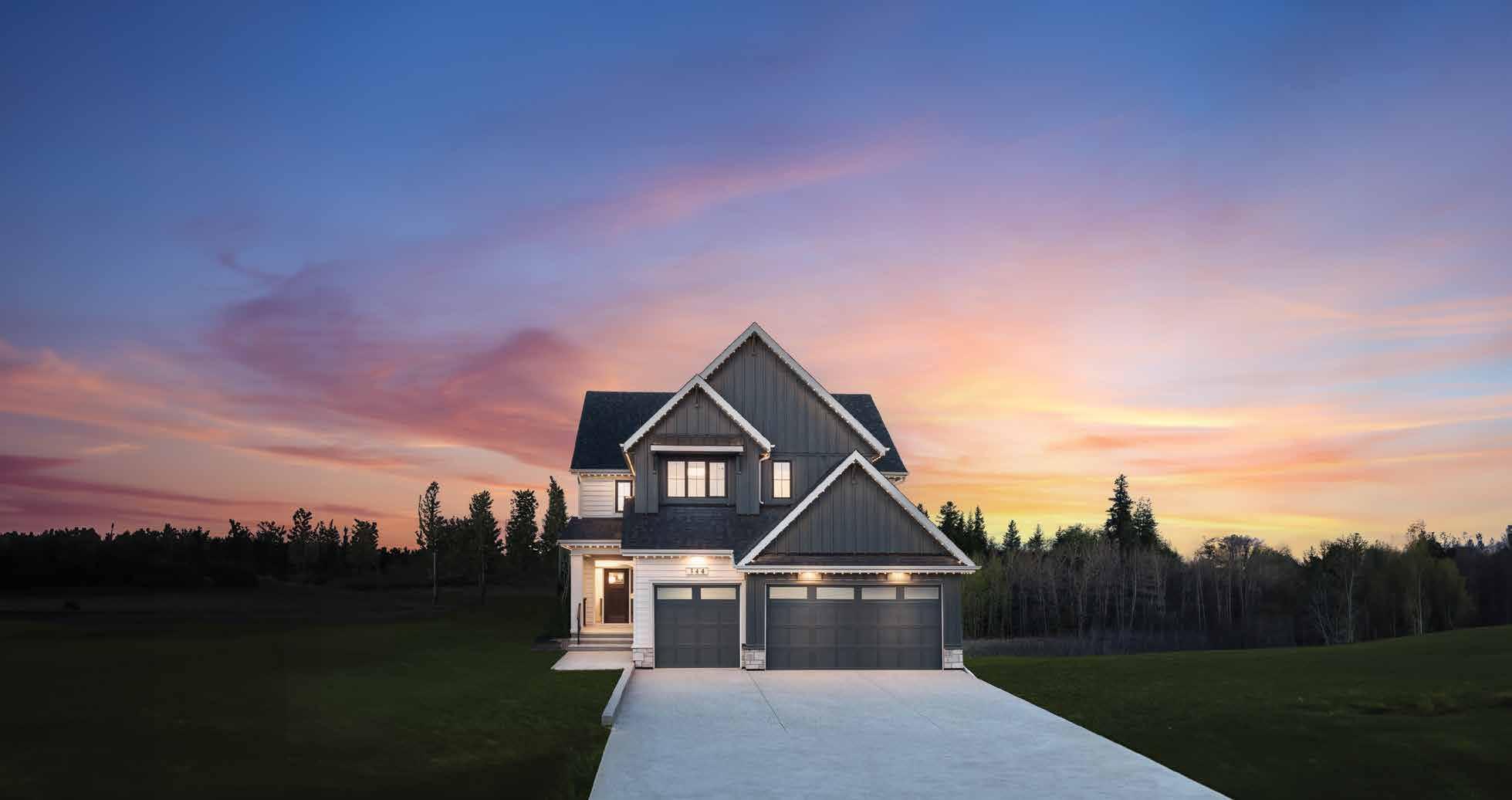


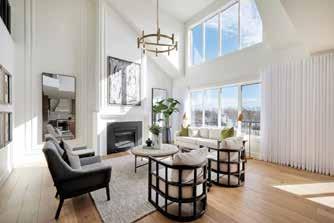
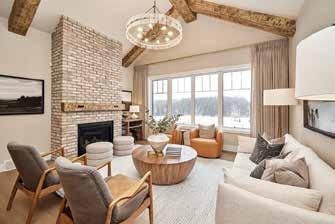


and
the

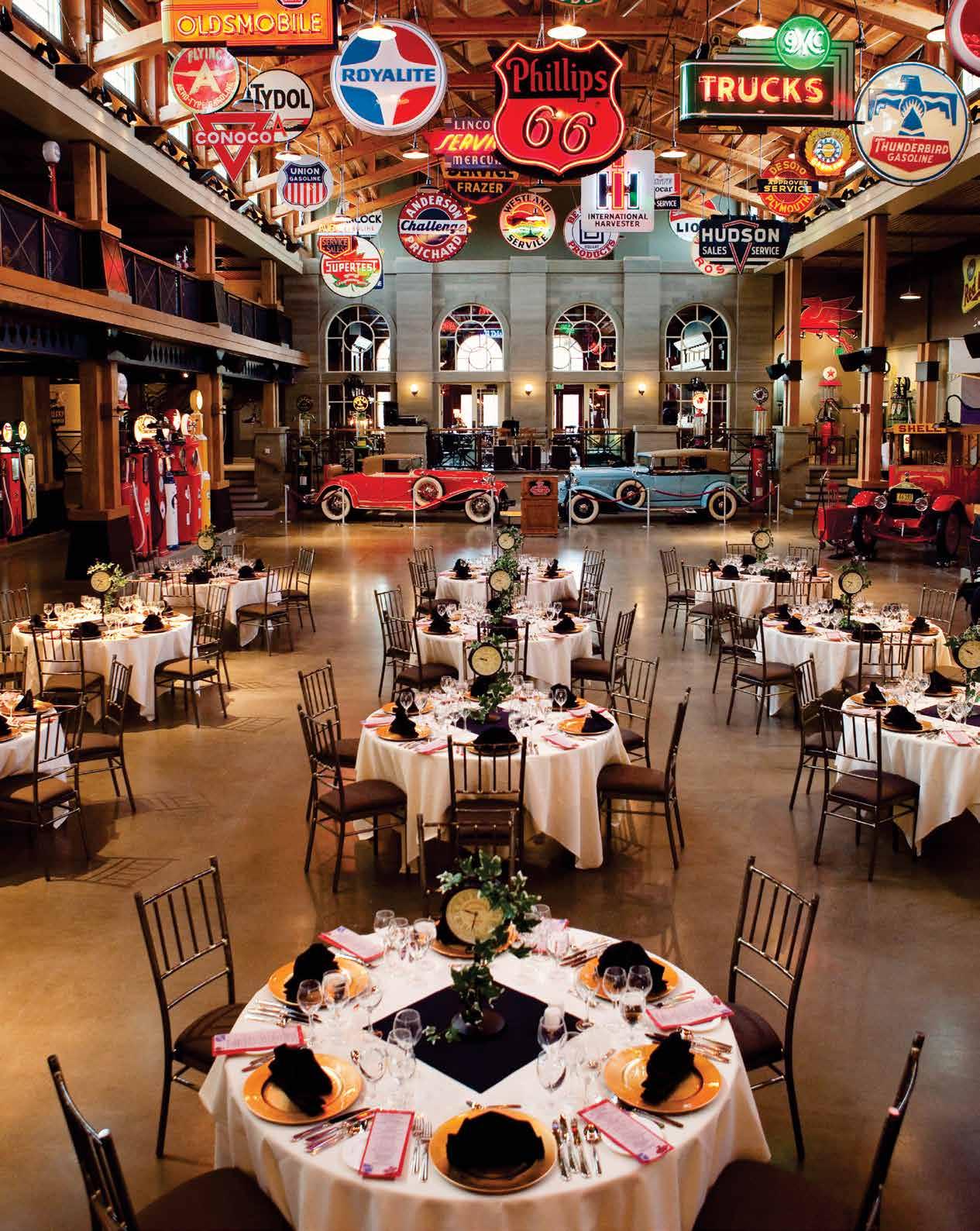
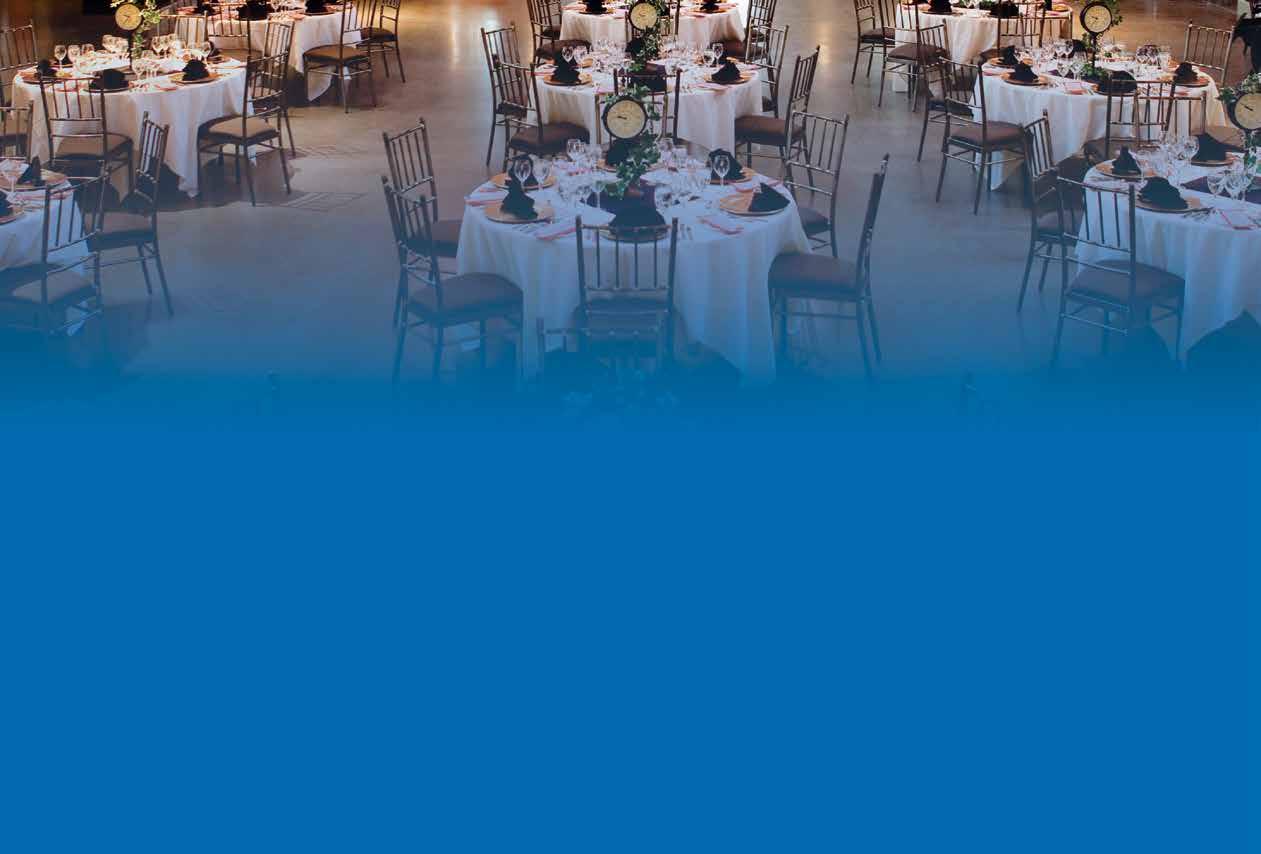
The Emmy-winning songwriter, composer, producer and arranger orchestrates his wardrobe the same way he composes the score for the Stampede Grandstand Show — by bringing together a variety of influences and inspirations to create something truly original and joyful.
What do you want your style choices to say about you?
I wear what I feel before I consider what’s expected. Some days that means dressing for joy. Other days it’s armour. Always, it’s homage: to mentors, stage legends and my late mom — who unknowingly shaped the silhouette of my spirit. Style, to me, is a language we speak before we say hello. And, in my 50s, I’m here to tell you — there’s no rulebook for legs like mine. Trailblazer? I’ll take it.
What is your favourite Calgary event of the year?
The Grandstand Show at the Calgary Stampede. And yes, I’m a little biased — I’ve composed the score for over 30 years. But the real thrill is watching people show up with fresh takes on Western glam. I say, "Make it a ritual never to repeat an outfit." Fashion should stampede, too.
Jumpsuit custom made by House of David Style (the jumpsuit along with the boots were part of a prototype costume for a Las Vegas Liberace tribute Pierce was the composer for); Collection of pins from Calgary Olympics ‘88, Calgary Stampede 1912, Alberta ‘75, and in memory of Jim Button; boots Lee's daytime boots by House of David Style; baton from the Hollywood Bowl, used to conduct orchestras around the world for 31 years, including Calgary Stampede’s Grandstand Show.


The self-employed ceramicist chooses vintage and thrifted pieces over fast fashion, mixing bright, whimsical and comfortable finds with many of her own quirky accessories inspired by her love of '60s style.
What do you want your style choices to say about you?
I want my style choices to say that I choose to wear what I truly love, and that I value buying quality second-hand and slow-made pieces from small and handmade fashion brands over fast fashion.
Why is expressing your personal style important to you?
As a self-employed artist, I feel as though my personal style often reflects the pieces I create, and the pieces I create also mirror my personal style. These two things have almost always felt as one, and I don’t know who I would be without my style, as it’s something I truly take pride in and have so much fun with.
Earrings made by Meghan Macwhirter; scarf from Roadrunner Vintage; vest from Love Object in Edmonton; dress from Luxie Vintage; shoes by Sam Edelman; purse vintage from Value Village.
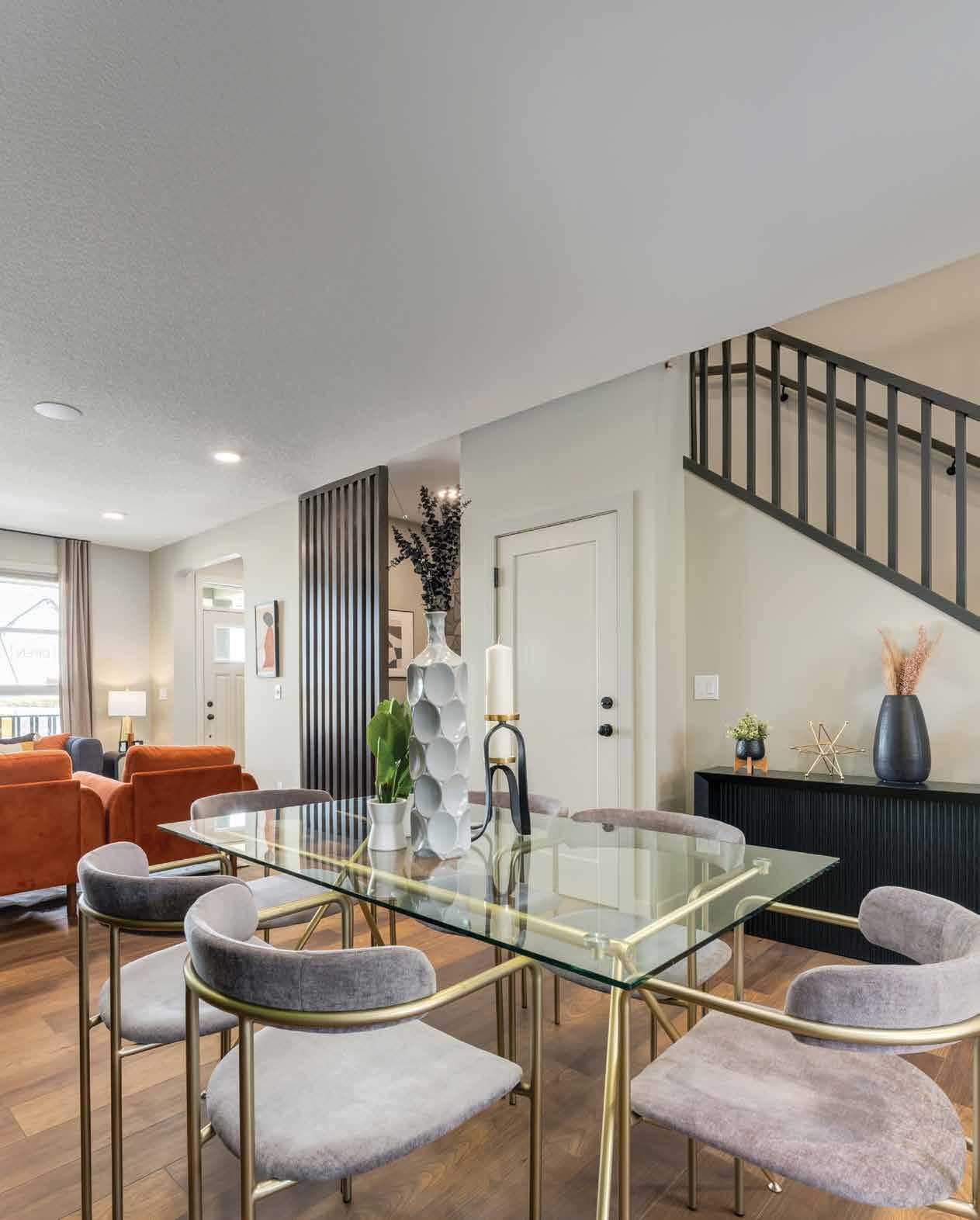

The digital content creator, podcast host and model is an advocate for the 2SLGBTQIA+ and Afro-Carribean communities whose sometimes-subversive style recontextualizes classic looks and brings subtle flair to the everyday.
Why is expressing your personal style important to you?
Personal style should be important to everyone. Think about it this way: What makes you feel good when you wake up in the morning?
Some say coffee, breakfast, a good doughnut! [For me, it’s] a sharp shirt and pants that make me feel good. Because, when I look good, I feel good. And, when I feel good, I’m the happiest. Personal style isn’t about what you have or how much you spent — it’s how you wear it and the confidence that comes with it. I couldn’t tell you how many times I got something for less than $20, and the way I styled it and the confidence walking into the room is what changed everything.
What do you want your style choices to say about you?
That it is okay to step outside of the box. Not just think outside. Step outside. My style choice reflects my growth over time. Progression and years of hard work and a niche of being different and owning it. I’ve made so many style choices that I’ve been like, ‘Wow, this was not the right choice,’ and I’ve also made some that I’ve been extremely eager to share.
Suit by ASOS; necklace from Mogano Jewelry & Accessories; bracelet by Van Cleef and Arpels.
































































This creative entrepreneur — hairstylist, leather fashion designer and board member of NVRLND. Arts Foundation — has developed an edgy style entirely of her own.
How would you describe your personal style?
My style exists in the tension between instinct and intention — grounded in stylish basics and layered with pieces I’ve made, designs from my friends, and finds from favourite shops or from my travels. It's often wearable art, built through bold accessories and reimagined garments. If I can’t find what I’m looking for, I create it. I don’t follow trends; I construct looks.
Why is expressing your personal style important to you?
Expressing my personal style matters to me because it’s how I engage with art — through what I wear. Fashion, for me, is wearable art and a form of communication. It’s a way to show what draws me in, what fascinates me, and how my artistic taste shifts over time. I also want it to say something louder: that it’s okay to experiment, to try something different, to let your look evolve without needing permission.
Shirt her dad’s old gig shirt from the 1990s; shorts from a pop-up shop in L.A.; skirt reworked by Jacobs from a consignment store find; vest from Kate Hewko; brooch Officially No Fun by Patrick Moskwa; purse by Lesley Hampton with a chain added from Subject Object by Bramble Lee Pryde; boots by Tabi.
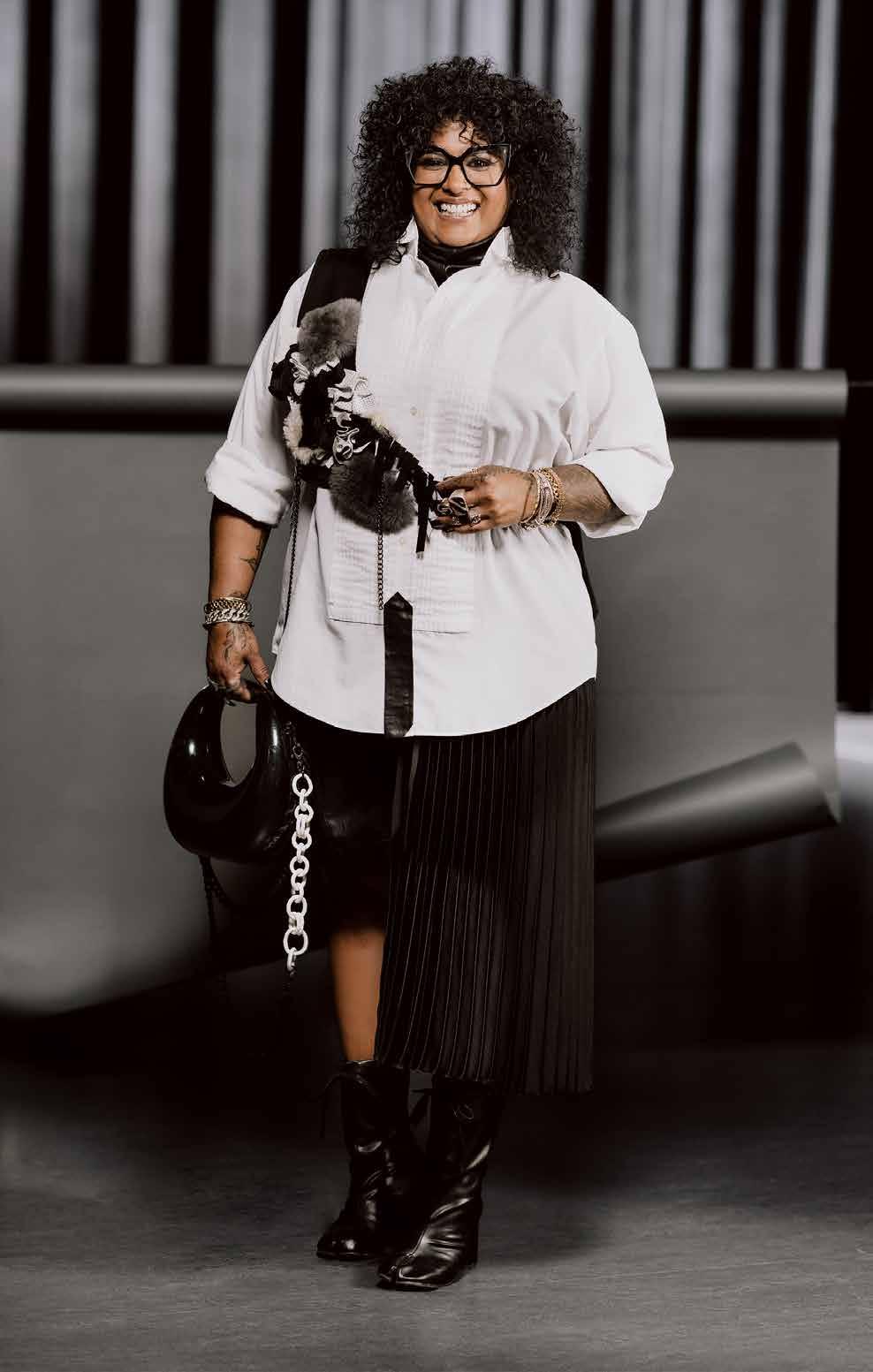
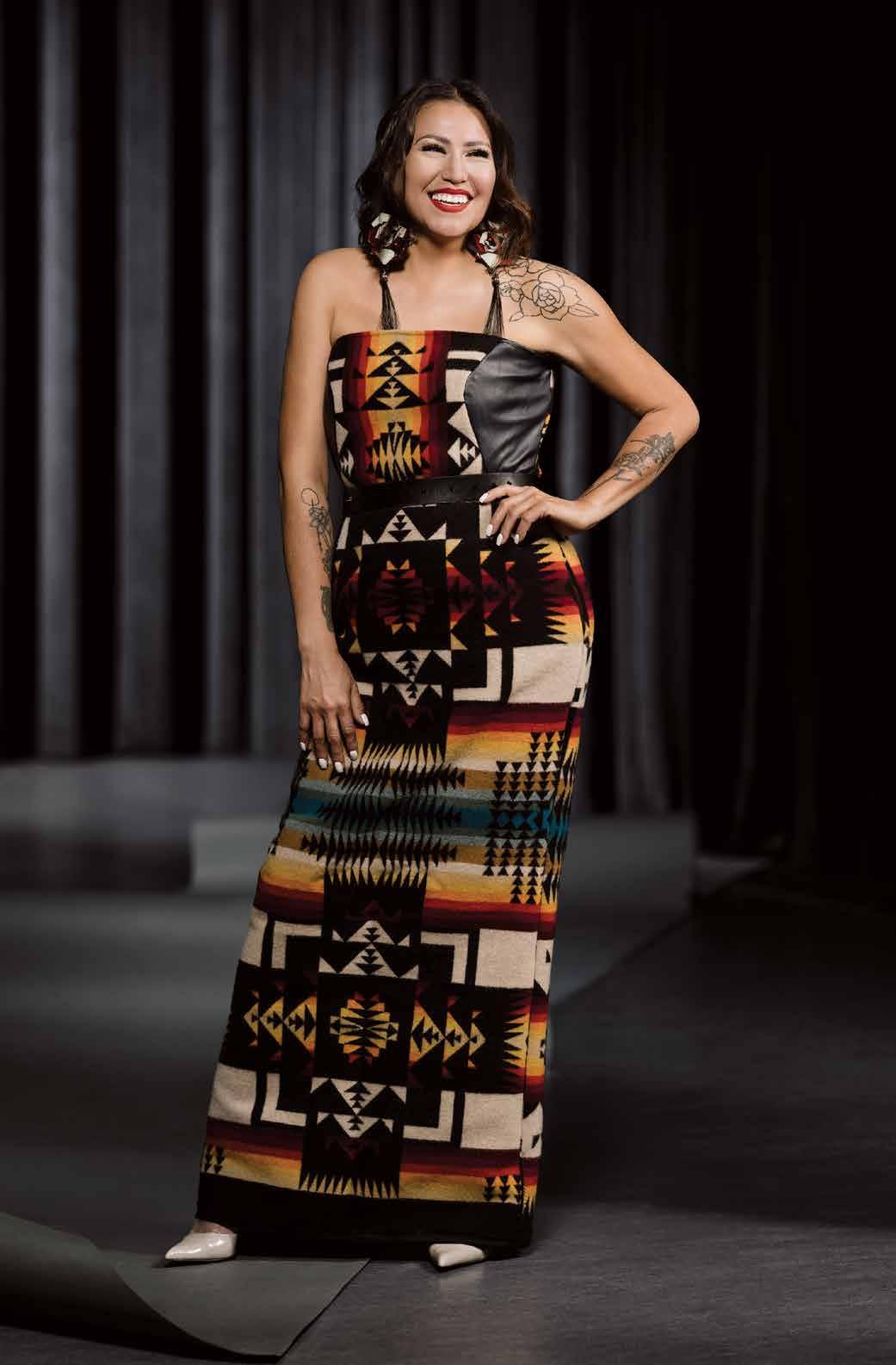
STEPHANIE GAMBLE
The self-taught fashion designer and creative mind behind C.Lysias Designs, draws her style inspiration from her Indigenous heritage, blending traditional design elements with modern style.
What is your favourite Calgary event of the year?
Hands down, my favourite event of the year has to be the Calgary Stampede! I am a huge fan of country music, cowboy boots and the Calgary Stampede Powwow, which is a popular event celebrating our Indigenous culture and roots. Not to mention the Elbow River Camp, which has teepees set up sharing Indigenous storytelling, authentic songs and local pop-up shops from Indigenous artisans.
Why is expressing your personal style important to you?
Expressing your personal style is a powerful way to show who you are without having to speak. It reflects your identity, values and personality, allowing you to move through the world with authenticity and confidence. For many, style is more than fashion, it's a daily act of empowerment and a creative outlet that evolves with you. Through your style, you not only express yourself, but also create connections with others who see and feel your energy, presence and story.
Dress made by Gamble under her brand C.Lysias Designs; shoes from Le Chateau; earrings by Sacred Thndr.



The board chair of Alberta Foundation for the Arts and former president of the United Conservative Party of Alberta has crafted a personal style that balances a love of fashion with perfect professionalism.
How would you describe your personal style?
My style is classic with a twist, with a bit of bohemian thrown in. I mix high with low. Because I am petite, I gravitate to matching sets and suits. Great footwear is a big emphasis when I go out.
What is your favourite piece of clothing?
The gold brocade jacket from Smythe [shown here] is one of my favourite pieces. I also have a green long-haired coat that I bought on a whim at Blu’s in Edmonton. I tend to buy oversized when purchasing outerwear.
Jacket by Smythe; vest by Dries Van Noton; purse by Balmain; pants vintage Chanel, originally her mother’s from 25 years ago.

Since 1926

The future of Calgary is being shaped today, and many experts and organizations are working to build a city that connects people to create vibrant and reslient communities. Through investments and developments of "third places," by breathing new life into empty buildings and reimagining neighbourhoods and streetscapes for tomorrow these folks are guiding urban planning ideas into the reality of the city we will live in tomorrow.
BY TSERING ASHA,


It was a Tuesday in June 2024, just after 5 p.m. The sun was high, and the noise outside my balcony had reached a crescendo of car horns, scooter swooshes and the beat of feet on pavement. I closed my laptop and grabbed a book, blanket, sunscreen and hat, and headed to WordFest’s first outdoor Reading in the Wild “read-a-thon” at Central Memorial Park.
At the manicured oasis behind Alberta’s oldest public library — Memorial Park — hundreds of people were lounging on benches and blankets with books and e-readers in their hands, dogs at their feet and babies on their hips. Calgary Public Library (CPL) staff provided information, book recommendations and tables with books for checkout. A local band played, and a local ice cream shop gave out free gelato. There were no sign-up sheets, nor prerequisites to attend. The event’s purpose was to activate the public space, with Calgarians joining in an enjoyable pastime.
I’d walked through this park hundreds of times, but that day I was there for a specific, albeit leisurely reason: to hang out with others. Central Memorial Park had become a “third place.”
American urban sociologist Ray Old-
enburg, in his 1989 bestseller, The Great Good Place, coined the term "third place" for a place outside of your home and your work (your first and second places) for “informal, free social interaction, essential to democracy.” If where you live is the “first” place and where you work or study is the “second” place, then that "third" place is where you socialize with other people outside the confines of personal or professional responsibilities. Essentially, it’s a place to hang out.
For centuries, that third place was typically a church or an outdoor plaza or park. As cities developed, third places evolved in community and recreational centres. Not all third places have been welcoming to all people. Even today, there are many social spaces that are created to welcome certain groups over others.
Libraries, however, are probably the quintessential third place that hits all of Oldenburg’s points. The CPL has no cost to join, provides a plethora of in-person activities and digital resources, and the facilities go beyond basic accessibility by continuously working to make its spaces welcoming and inclusive to a range of surrounding communities.
For example, since 2017, the CPL has embarked on an Indigenous placemak-
ing initiative, engaging and collaborating with Indigenous artists and Elders to develop traditional and contemporary artworks that promote understanding of Indigenous peoples and cultures within Treaty 7 territory and make First Nations visitors feel more welcome in the library system. Jasmine MacGregor, CPL's Indigenous placemaking coordinator, says visual representation through art is an example of intentionally programming a space so you feel welcomed to visit and participate in it.
“There's something about people not seeing themselves in public spaces, feeling unwelcome at large, that, when they see themselves reflected in space, or see their identity reflected in the space, it makes it that much easier for them to be a part of those spaces,” says MacGregor.
Just east of the Central Library in East Village, another placemaking and welcoming process has been taking place at The Confluence Historic Site and Parkland. The site, formerly Fort Calgary, went through a major rebranding and reconceptualizing project in 2024 to make the space both more welcoming and more relevant to Calgarians. Recently, the site was gifted a Blackfoot name — I’táámito’táaattsiiyio'pi (pronounced "Eeh-daah-mee-doh-daat-tsee-yoop").

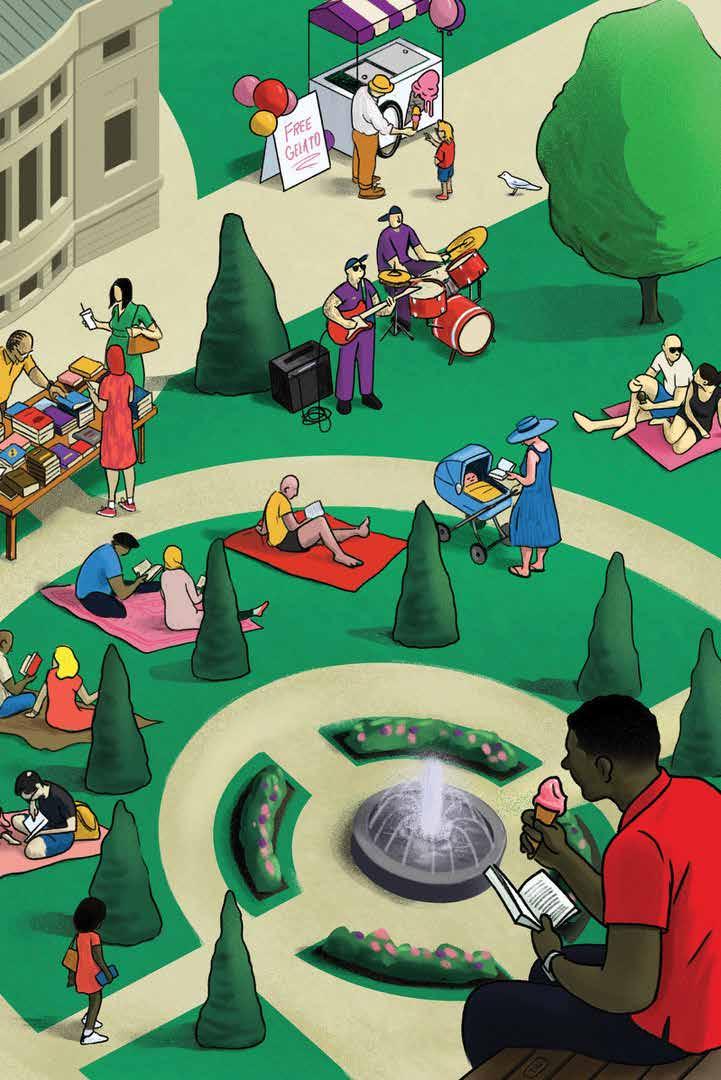
“There's something about people not seeing themselves in public spaces, feeling unwelcome at large, that, when they see themselves reflected in space, or see their identity reflected in the space, it makes it that much easier for them to be a part of those spaces.”
—JASMINE MACGREGOR
The Confluence also opened a new Indigenous ceremonial and programming space, in collaboration and with guidance from the Aboriginal Friendship Centre of Calgary (AFCC), as well as a new Indigenous exhibit, Kípaitápiiyssinnooni. The Confluence is also planning an outdoor residential schools memorial in partnership with The City of Calgary.
“Places like this mean a lot to me,” says Paula Smith from the Piikani Nation and Blackfoot Confederacy, who is the Indigenous relations manager for The Confluence. “Because, ultimately, First Nations perspectives are derivative of the land, that we are a part of the land. Our human perspective is from places and spaces.”
The Confluence, in partnership with the AFCC, now gives Indigenous peoples and Indigenous-led organizations no-cost access to the space for smudging, ceremony and other activities. By contrast, Fort Calgary didn’t seem to do much to establish placemaking in Calgary. The permanent exhibits had not been updated in decades, and even its significance as a historic site was debatable — the actual fort was used by the North West Mounted Police for only about 39 years and few of the buildings were original. And the fort’s original purpose was literally to police people and keep them out — the opposite of a community gathering space.
The new Confluence tries instead to position the significance of the place and its history as a bringing together of people and influences, without erasing a sometimes painful past.
“For us at The Confluence, creating a park space that feels safe and welcoming, creating a ceremonial and programming room that has no barriers for the Indigenous community to come and access, is really something that we're excited and passionate about,” says Jennifer Thompson, president of The Confluence. “We want to bring vibrancy and community back into the east side of downtown.”
But, beyond being welcoming, a place needs to be used before it can truly be a third place.
Central Memorial Library and its adjacent park is one of my favourite places
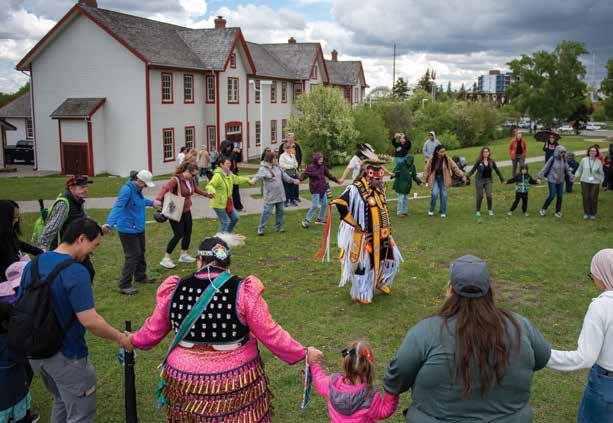
to pass by. While I’d thought offhandedly about going in and taking a book out, I’d never done it until that WordFest event.
And that kind of inaction is common, according to design experts. It takes an activity or program to transform an open space anyone can go into, into a third place, says Shannon Lanigan, managing director and co-founder of d.talks, an organization that hosts public conversations about design, art, architecture and the built environment.
“A park can exist, but if you go to that
coming Calgarians to its multi-purpose space in downtown Calgary. The bookable events venue hosts artist events and provides more than 30 hours of drop-in time per week to anyone who wants to create art or simply meet like-minded people. Resources, tools and furniture are all provided, and the central location provides ease of access, specifically for folks who work downtown.
Bethel Afework, executive director and co-founder of Alcove, says it's important to create low-to-no-barrier-to-entry con-
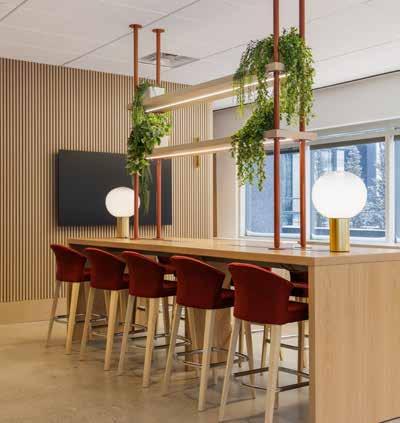
boom in the last few years has been well documented. CBC reports that, from 2023 to 2024, Calgary's metro-area population grew by nearly 96,000 people, a six-per cent increase in just 12 months.
Whether it’s due to the population boom or just a general trend in how we hang out, even private spaces that traditionally had specific functions have increased the number of additional activities and events they host.
Restaurants and bars have always had private rooms to rent, but, post-pan-
“You go to work, you go home and then they want you to pay for activities — they want you to pay to play.”
park, your experience can be different depending on programming and depending on what's there when you're there,” says Lanigan.
Reviving a sense of vibrancy and community in the downtown area has become a priority for quite a few organizations, especially since the pandemic. The more time that’s passed since social isolation practices were necessary, the more conversations about third places, in the physical sense, have come to the forefront of city-building discussions.
“It's using the existing architecture and buildings, and things that exist in our community, and allowing groups to reinvigorate them,” says Lanigan. “To me, that's the magic of a third space.”
Since 2023, Alcove Centre for the Arts, in partnership with cSpace, has been wel-
ditions for creating, community and play. “You go to work, you go home and then they want you to pay for activities — they want you to pay to play,” says Afework. “There's something else that's really important in life.”
While publicly subsidized spaces for recreation are vital to the health of the city, private and paid access leisure spaces are important, too.
A 2014 World Urbanization report by the United Nations Department of Economic and Social Affairs indicates that the world has experienced a rural-tourban population shift. The share of the global population living in urban areas has increased from 29.6 per cent in 1950 to 54 per cent in 2015. And, while not all of the newcomers to our city have been from rural areas, Calgary’s population
demic, you can often find craft and book club members sitting amongst patrons at breweries and inside food halls. These kinds of informal community gatherings have spilled over from community centres to all manner of places including dog parks, playgrounds, gyms, farmers’ markets, pools, ice rinks, hiking trails and the increasingly used common areas of commercial buildings.
Existing commercial buildings downtown, like 400 Third, a 45-storey high-rise, have redesigned common areas to cater to the needs of workers returning to the
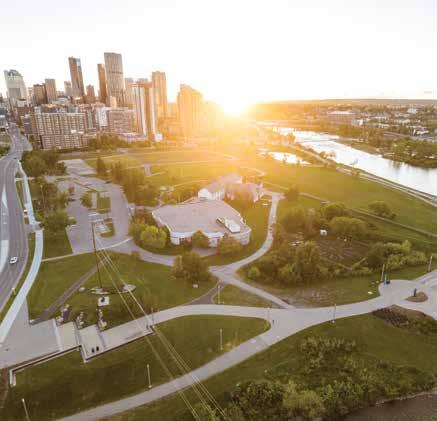
office after years of being in home offices.
When Oxford Properties redeveloped 400 Third, it built a shared tenant event and hangout space called The Commons in a highly visible section of the tower. The Commons emphasizes wellness, maximizing natural light and incorporating natural elements and tones to create a relaxing environment.
Oxford also offers hospitality programming through events like Wine Wednesdays and lunch-hour boot camps to foster crosscompany networking and chance encounters. The idea is to create a community within the building.
“On activation days, we see usage jump by roughly 40 per cent as employees gather for micro-events, informal meetings and after-work socials,” says Jace Jonsson, director of office leasing at Oxford Properties Group. “Enhancing the opportunities to collaborate and socialize has become more important than ever in a world of virtual meetings and Teams calls. Common areas have evolved from static features to curated experiences that help tenants attract talent, build culture and keep people excited about coming into the office.”
Other office towers have incorporated event space in what used to be display areas rather than gathering places. Aspen Properties’ Ampersand building features “social stairs” — an auditorium that has been carved out of a previously underutilized lobby space — and a similar concept seems to be in the works at Brookfield’s Suncor Energy Centre, currently in redevelopment.
As Calgary continues to grow rapidly, we need even more third spaces to help Calgarians connect and feel part of a vibrant and welcoming community.

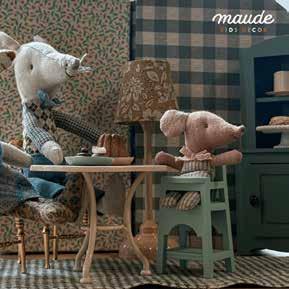
Dedicated to offering a wide variety of magnificent fine jewellery at incredible value. New Jewellery, Custom Design & Estate Pieces. 8500 Macleod Trail SE | 403.252.8850 www.fleetwoodjewellery.com @fleetwoodjewellery

Whole Foods Market offers natural groceries, wellness products, and local goods to support conscious living and whole-body health. Amaranth Whole Foods Market www.amaranthfoods.ca/locations

BY EULA MENGULLO
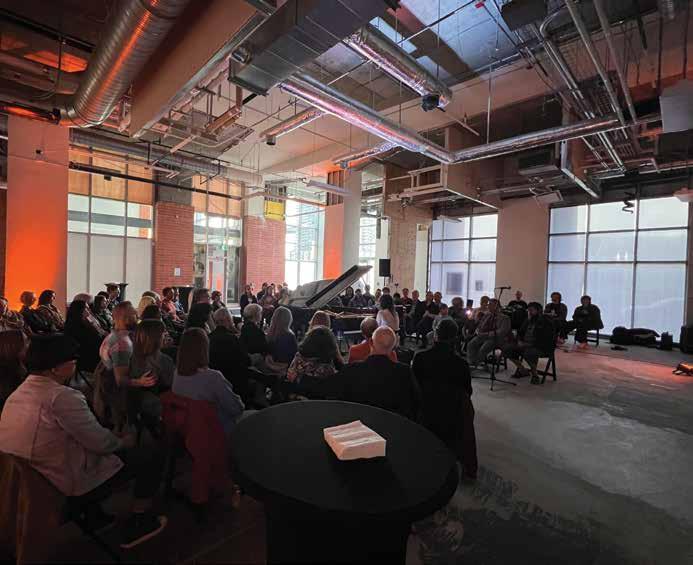
A NEW LEASE ON LIFE FOR THE ARTS
SPACEPILOT TRANSFORMS VACANT COMMERCIAL PROPERTIES INTO VIBRANT CULTURAL HUBS.
SPACEPILOT ACTIVATES
UNUSED OFFICE SPACE FOR ARTS AND CULTURE USE.
Experiencing arts and culture is at the heart of every thriving, bustling city — whether gallery hopping on a weekend, dropping in for a creative workshop hosted by a local artist or discovering up-and-coming talent at a live music festival. But, for artists to work on their craft, share knowledge and showcase their talents, they need a way of finding affordable and accessible space. That’s the problem Spacepilot, cSpace’s “meanwhile lease” pilot program, aims to address.
Founded in 2011, cSpace is a social enterprise supporting artists, arts and culture nonprofits and creative entrepreneurs. Spacepilot, launched in 2022, sources affordable spaces for these communities. The meanwhile lease model, popular in the U.K. and elsewhere, allows for short-term, temporary occupancies of commercial spaces, typically until landlords fill those spaces with long-term tenants.
Spacepilot addresses the issue of vacant downtown commercial spaces and Calgary’s cultural vibrancy by creating affordable places for artists and non-profits to work without committing to a long-term lease. Many artists leave Calgary because of a lack of space to practise their craft, says cSpace president and
CEO, Deeter Schurig. “What we’re trying to do is deal with a talent flight issue,” says Schurig. “Creatives need to land somewhere, and affordability is one of the key drivers.”
Spacepilot began as a research endeavour, supported by the Alberta Real Estate Foundation and Calgary Arts Development, to examine and address the issue of vacant commercial properties in the post-pandemic era. The idea was to temporarily activate vacant spaces and, ultimately, to provide opportunities for arts and culture to be the activation.
To get commercial landlords on board, Sean Dennie, cSpace's director of space development, who has a background in commercial real estate and photography, acted as a facilitator between the landlords and brokers like CBRE Limited. The brokers then brought owners like Brookfield Properties and Crestpoint Real Estate Investments Ltd. to the table to work with arts organizations like the Alcove Centre for the Arts and the Calgary Animated Objects Society.
Effectively, cSpace takes on the role of a creative-space brokerage, matching potential tenants with properties. Spacepilot leases typically include a short termination clause, but each deal is bespoke. A short termination clause allows the space to be used while commercial landlords look for long-term tenants, and these leases can be as short as 30 days. This lowers the commitment and cost for artists, while landlords receive a property tax exemption for leasing their spaces to non-profits and modest cost recovery from rent (which is lower than a typical commercial tenant would pay).
Artists need stability, which Dennie says is demonstrated by the fact many leases in the Spacepilot program have been renewed.
“Tthe program, [is also] helping mentor young organizations through developing capacity, without tying them into a five-year lease,” says Dennie. “It’s really a safe place to incubate, and you carry them through what could be a very challenging transition or time [where] they get an opportunity to try things that they might not otherwise be able to try in a safe, supported environment.”
Before Spacepilot, the average vacancy for the commercial properties in the program was 832 days. At the end of 2024, Spacepilot had 35 leases totalling 63,000 square feet of space that was either leased, licensed or pledged.

Some 82 arts organizations, including 16 major arts tenants, used these spaces for hundreds of events, including performances, workshops and rehearsals.
There have been more than 56,214 visitors since Spacepilot started in 2022, and the program has saved arts organizations more than $1 million in leasing fees, compared to commercial rates.
Another plus is that occupancy in these buildings creates traffic for nearby businesses.
“We've seen that play out where an activated space with arts and culture groups now starts attracting new, permanent, long-term tenants,” says Schurig.
For Dennie, Spacepilot has become his way of repaying the opportunity that he had as a young photographer, when he was able to hone his craft in what, at the time, was the largest studio in Calgary. “It’s important to develop the talent, and the more talent we can develop, then the stronger our [arts and culture] sector is going to become,” he says.
The Historic Fire Hall 1 and the North-West Travellers building downtown recently joined the Spacepilot program. Eventually, the two buildings will be transformed into permanent arts-and-culture hubs in the city, enriching the iconic spaces and reinvigorating the downtown core.
“Artists, culture makers and storytellers are the critical ingredient in vibrant cities, and the spaces become a critical way of keeping them,” says Schurig. “It's absolutely critical that they have places to live, places to work and also places to present."
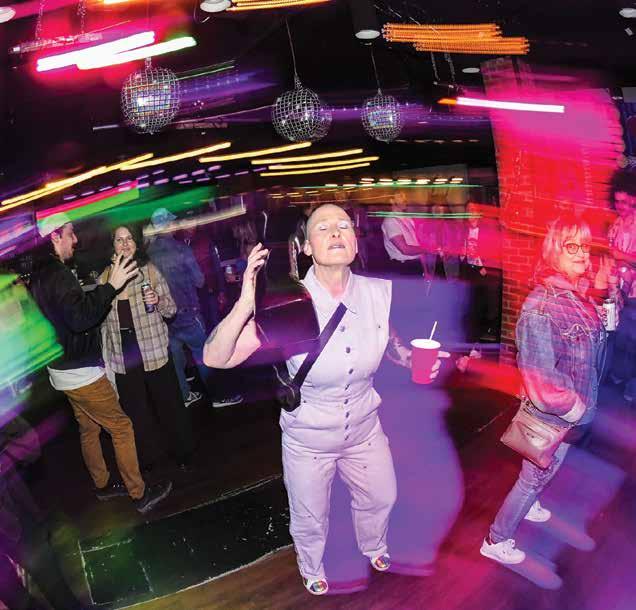
THEBLOX
One of cSpace Spacepilot program tenants seeing great success is the Blox BIA, the organization formerly known as the Beltline Business Improvement Area. This community of Beltline businesses, opportunities and experiences includes the Blox Arts Centre, and is located inside a 10,000 square-foot space on 11th Avenue S.W. With the Spacepilot program, the Blox Arts Centre has become a community hub with events like weekly live local music and comedy performances. The Blox Arts Centre is one of the only music venues in the city that is all ages, says executive director Katie Thies.
“We just wanted [a place] where the community can come and gather and share these different arts experiences,” says Thies. “Doesn’t matter what their age is or what their accessible needs are, it's a space for everyone.”
Thies says this is Blox BIA’s second lease with cSpace. The BIA has been leasing the building for more than a year and shares it with local improv group The Kinkonauts. RadiCare Ventures, a social-enterprise startup that offers
urban cleaning services like graffiti removal and waste removal to organizations like the Marda Loop and Calgary Chinatown BIAs, offers its services to tenant organizations inside the Blox in exchange for room to store cleaning supplies. The current space is adorned with artworks from a rotation of local artists and features two large venues for hosting live events such as Sled Island festival shows. The building has accessibility ramps and gender-neutral bathrooms.
The Blox Arts Centre’s programming has grown significantly since it was established in 2023. Today, it welcomes between 400 to 600 attendees every week for live music events, comedy shows and rehearsals, markets, dance performances and more.
“We’ve brought so many people down to the zone,” says Thies. “We’ve had businesses tell us that this has directly impacted them positively. Businesses have reached out and said, ‘Whatever you guys are doing, keep doing it.’” — E.M.
The Blox Arts Centre, 834 11 Ave. S.W., bloxartscentre.ca

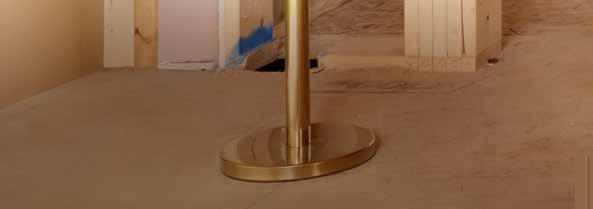

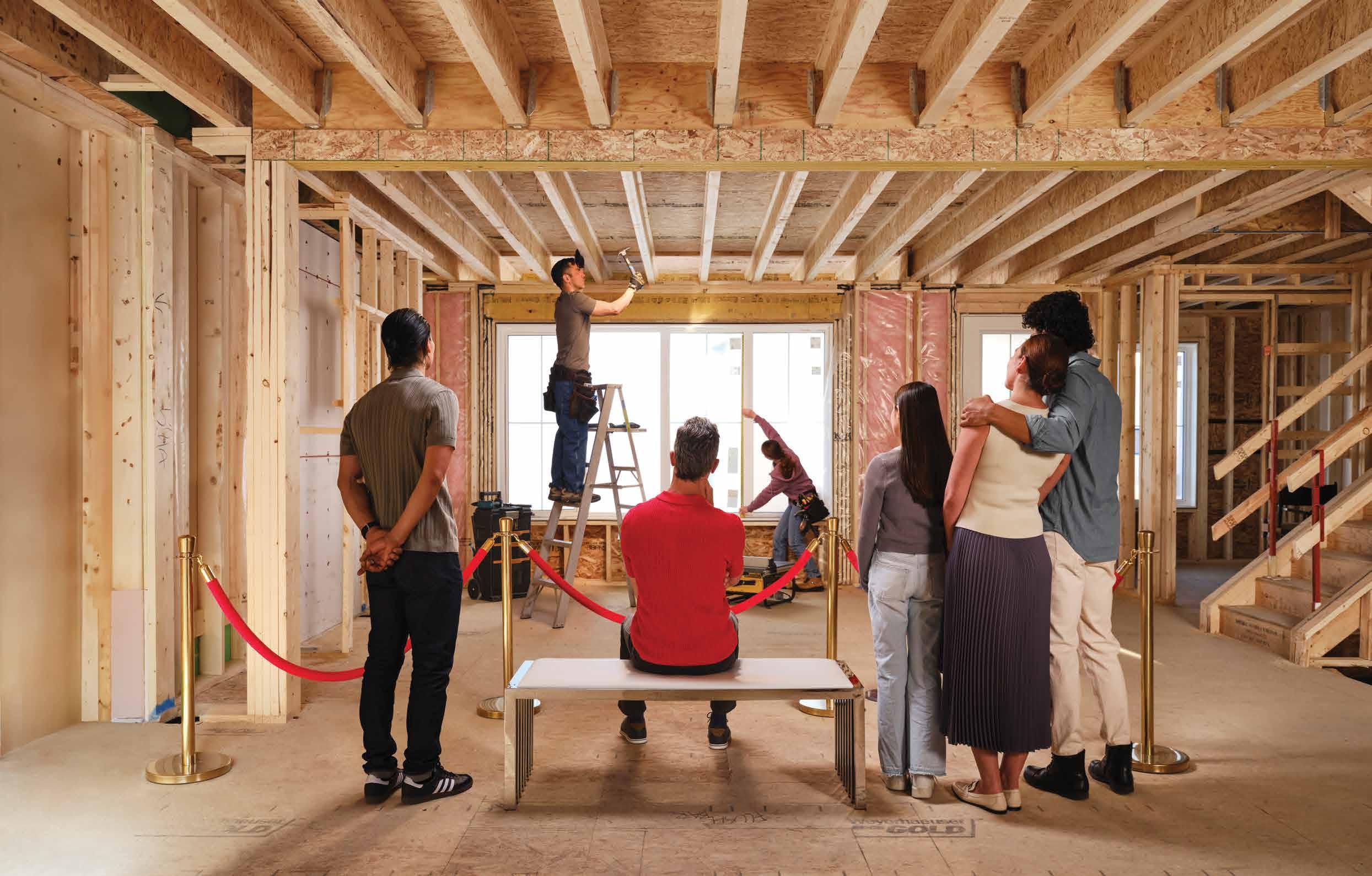



It takes vision to look at what a city is and imagine all that it could be. These five Calgarians work in different ways to build a city that brings their vision to life for all of us. BY
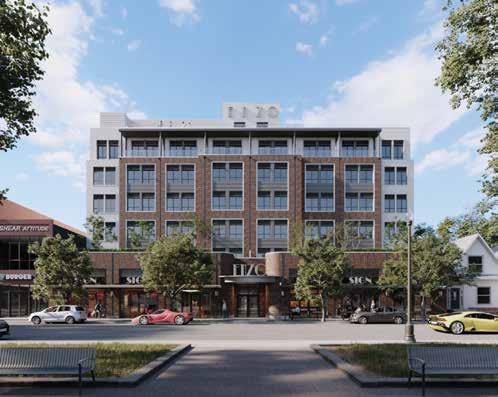
TITLE Founder & CEO, Arlington Street Investments (ASI) ORGANIZATION’S MISSION
“Everything I want to do, not just business, and not just within the organization, is really about being inspired,” Lonardelli says. “And, over the span of time, now that I've turned 50, I realize that I want to gauge my life's work, my projects, my vocation, who I spend time with, against the ability to create massive, positive impact.”
RECENT PROJECT Lonardelli supports an initiative to close off a five-block stretch of 17th Avenue S.W. to cars in the summer months. “It promotes
the area. It creates community. It creates a connective tissue around what a cool city Calgary is,” he says.
IMPACT HIGHLIGHT ASI’s complex and audacious 17th Avenue Urban Master Plan required purchasing 42 separate “off-market” buildings to create eight new development sites, and will dramatically transform and densify the corridor.
VISION FOR CALGARY “A city where people come with great ambitions to create great things, where hard work and merit are rewarded and ambition and audacity are applauded,” Lonardelli says.
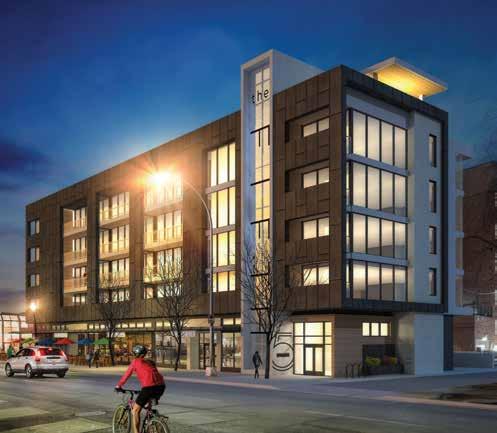

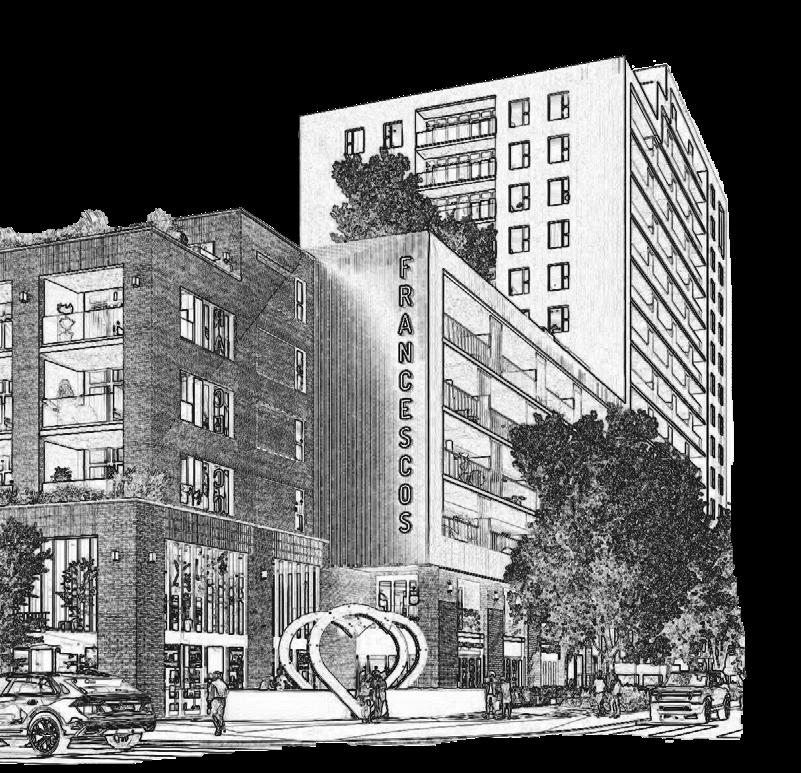


“Cities need to create environments where young people can take risks, fail forward and still feel like they belong.”
Frank Lonardelli believes in thinking long-term when it comes to transforming Calgary’s urban landscape.
“You should be taking a 100-year approach to real estate, because that's how long these buildings are going to last for,” he says. “If you take a myopic and short-term view on real estate development, you shouldn't be in the business. Those who don’t have a long-term approach tend not to consider the legacy of their assets and their impact on the community over the years.”
More than nine years ago, the founder and CEO of Arlington Street Investments (ASI) and his team set out with “no money, no assets, no people, just an audacious plan” to develop 17th Avenue S.W. Essentially, Lonardelli and ASI have done what seemed from the outside to be impossible — envisioned and then built a master-planned inner-city streetscape in an existing area. And he’s done it primarily through the forcefulness of his own vision, the ability to make others see what only he saw, and the commitment of his team.
“It started with fascination around what we didn't have in the city, which was a cool corridor where people can live, work, play and shop,” Lonardelli says. “We didn’t want to just build buildings; we wanted to build ecosystems. Real estate is an instrument, not an endgame.”
The execution of ASI’s transformational “Live, Work, Play and Shop” urban master plan for 17th Avenue S.W. will be complete within the next two years, Lonardelli says.
To do it, ASI purchased 42 existing buildings, none of which were for sale, to create eight “individually curated, thoughtful, architecturally designed buildings that would consider the history of those assets and their geography,” Lonardelli says.
The National on 17th, on the corner of 17th Avenue and 5th Street S.W., next door to the iconic Ship & Anchor pub, was the first project ASI completed. The building is also home to ASI’s head office.
Next came The Fifth, which is directly across the street to the west. The five-storey mixed-use development hosts 52 residential units and 12,000 square feet of commercial retail space.
Enzo, Francesco, Sentinel, High Street and Scotia Block and an eighth project currently in the works round out the plan. Between them, Arlington will build more than 700 apartments and 60,000 square feet of retail space with 27 separate retailers on 17th Avenue S.W.
While the project has helped grow ASI’s real estate portfolio to well over $1 billion, Lonardelli is just as proud of the legacy it has created for Calgary, particularly the opportunity it creates for future generations.
“Cities need to create environments where young people can take risks, fail forward and still feel like they belong,” he says. “Every development project should ask, ‘How does this make people’s lives more meaningful, more connected, more possible?’ Each development should inspire people to ask themselves, “What could I do if I gave myself permission to do so?’”
TITLE Principal and owner, Tawaw Architecture Collective
CURRENTLY RESIDES Dalla Costa moved to Arizona in 2015 after having moved to Los Angeles in 2010. Her practice now has offices in Calgary and Phoenix. In addition to her work at Tawaw, she is the director of the Indigenous Design Collaborative, and an institute professor at Arizona State University.
EARLY INSPIRATION Upon completing her undergrad at the University of Calgary, Dalla Costa set out on a backpacking journey that was supposed to last six months, but ended up lasting seven years and saw her live in seven countries. “I became enamoured with how the architecture in cities kept culture alive, how it influenced the way people gather,” she says.

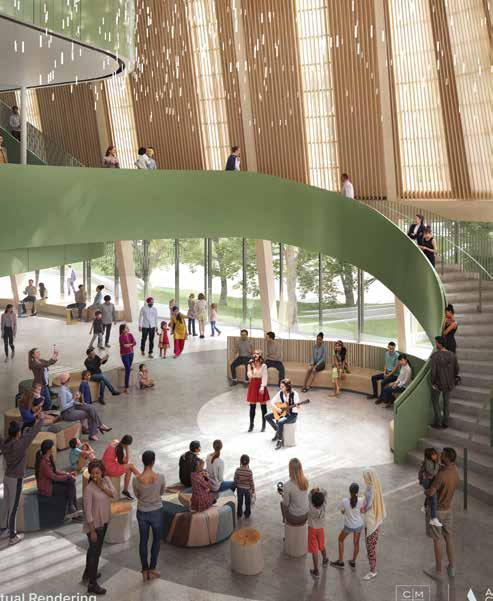
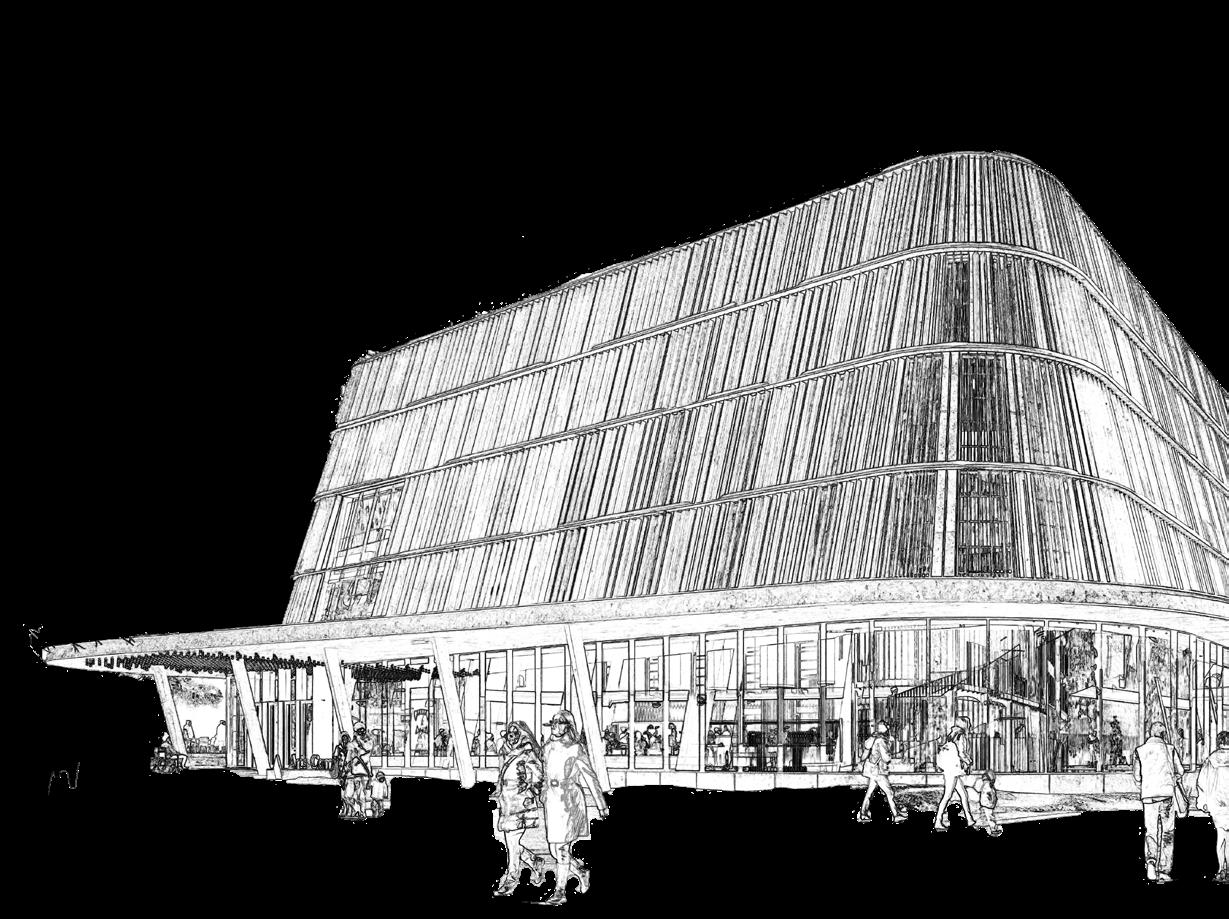
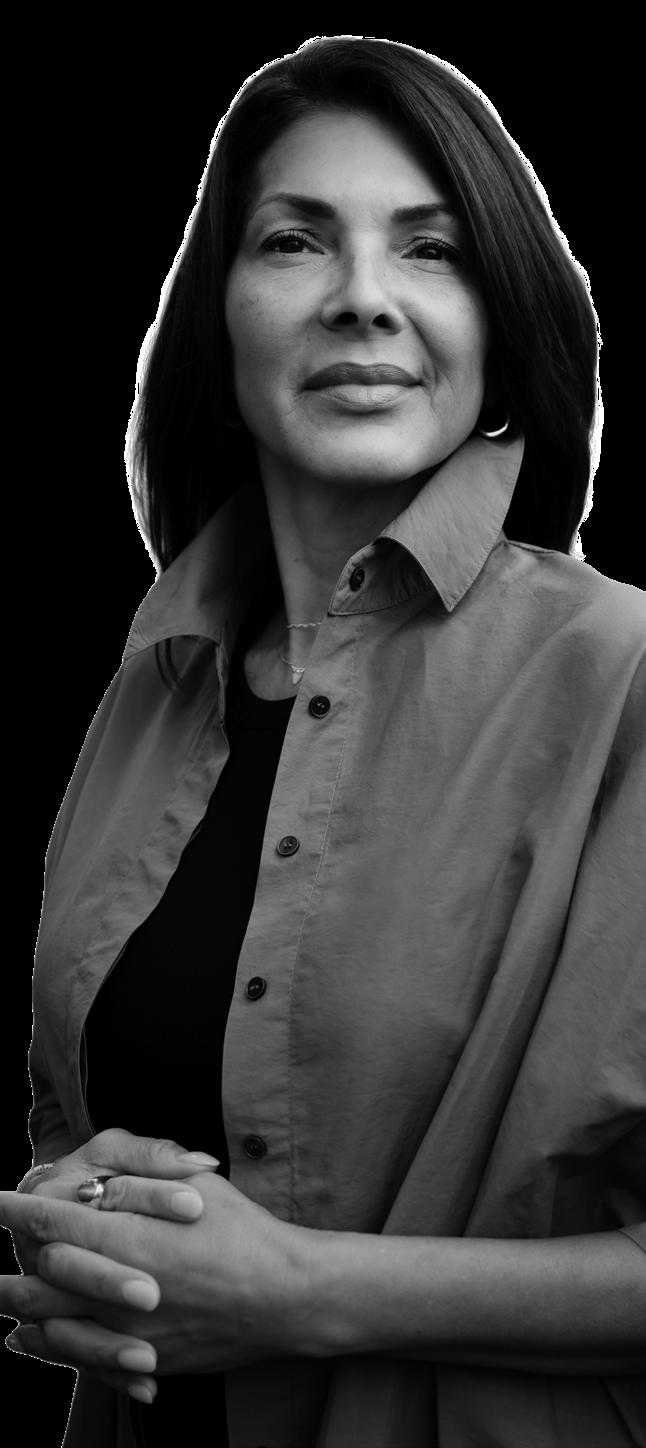
“When people feel rooted in their environment, they protect it, care for it, even make sacrifices for it.”
wanda Dalla Costa has defined her career by “productively disrupting” the field of architectural design to create public spaces rooted in Indigenous worldviews.
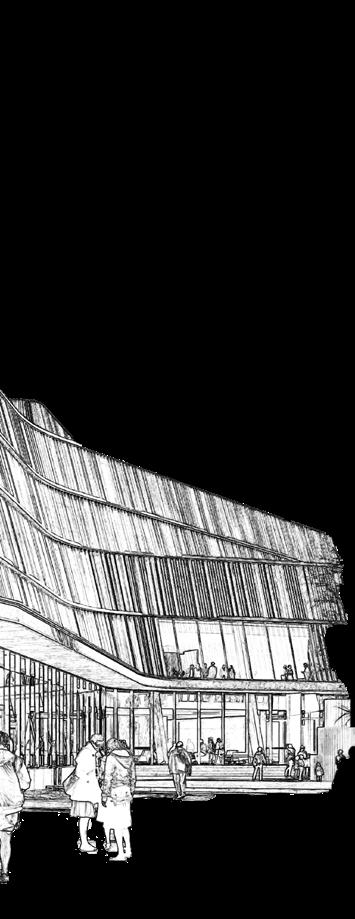
“We don’t just design buildings; we try to create spaces where people see themselves and feel seen. We make Indigenous culture visible and ensure the Indigenous people, the original territorial hosts of these lands we occupy, feel their identity in the urban and rural spaces we create,” Dalla Costa says.
Dalla Costa is the first First Nations female architect in Canada. She is a member of the Saddle Lake Cree Nation, located in the Amiskwacīwiyiniwak region in central Alberta. She is also the owner and principal of Tawaw Architecture Collective, which has collaborated on more than 400 community-engagement projects in its 14-year history.
“We specialize in participatory design, because, if you sit alone at your desk, you’ll always get the same ideas. But, when you engage communities, the creative potential multiplies,” Dalla Costa says.
Tawaw collaborated with KPMB Architects and Hindle Architects on the $660-million Arts Commons Transformation project in downtown Calgary, expected to be complete in 2028.
As part of their work, Tawaw
worked closely with Treaty 7 Nations and urban Indigenous Elders, Knowledge Keepers and artists to design a space that reimagines the role of Indigenous presence in urban public space, says Dalla Costa. She notes that Indigenous-led design is powered by a deep sense of place attachment and place meaning.
“Indigenous design is about kinship with all living things, not just people, but rocks, rivers, trees. That mindset changes how you build,” she says. “When people feel rooted in their environment, they protect it, care for it, even make sacrifices for it.”
Like dozens of other projects Dalla Costa has worked on across North America, the design of the Arts Commons space incorporates Indigenous traditions, history and culture to create an inclusive, lodge-like gathering space that is meant to draw people of all backgrounds inside. She says the space will have a storytelling circle, which will serve as a beacon to draw people in. The team also incorporated many natural materials in the design to emulate traditional Indigenous building techniques.
“There's been such an interruption of Indigenous history. Our aim right now is to try and reattach and repair that disconnect,” Dalla Costa says. “Architecture can be used as a tool for reconnection. Reconnection to land, to culture, to each other.”
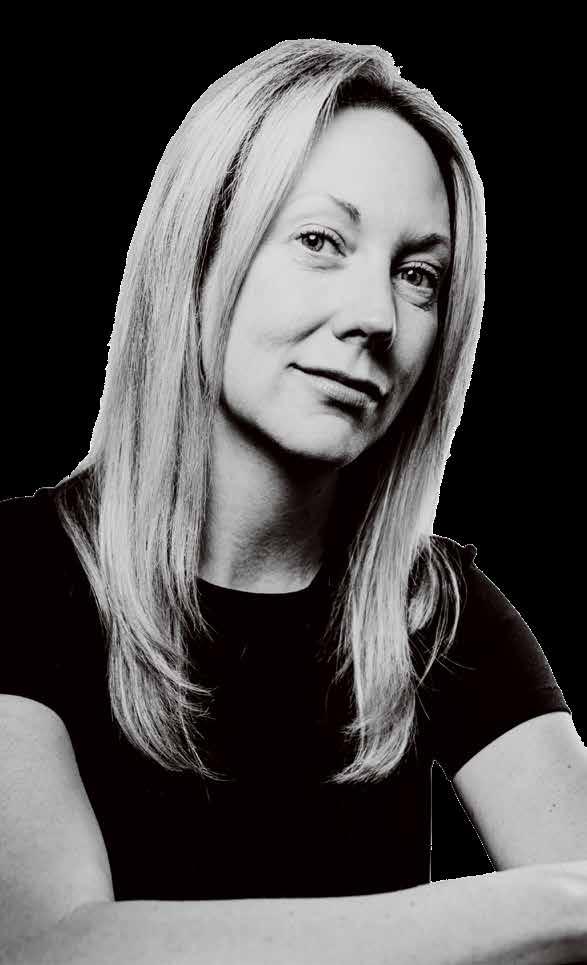
TITLE Partner, The Good Future Co.
ORGANIZATION’S MISSION
To design collaborative and futureready places through innovative community engagement.
RECENT PROJECT Co-founded LobbyFest with Future Fit Cities, a festival that transformed down-
town commercial-building lobbies into interactive public spaces.
IMPACT HIGHLIGHT Instrumental in launching Beakerhead and Platform Innovation Centre.
VISION FOR CALGARY “A city where creativity and community converge to shape vibrant, inclusive spaces.”
“I'm a big believer in unlocking the imaginations of the people who make our cities great through interesting and collective ways.”
For more than a decade, Jasmine Palardy has worked to foster collaborative spaces that drive innovation and inclusivity in Calgary.
Born and raised in Calgary, Palardy worked in tech start-ups in Silicon Valley for several years before returning to Calgary in 2012.
One of her first acts upon her return to the city was to help found Beakerhead, Calgary’s annual multi-day Science, Technology, Engineer and Math (STEM) festival, which has grown into a cultural institution.
“When we launched Beakerhead [in 2013], it was this large-scale, tangible, visceral, fiery experience in the public realm, and it was a way of showing off our city's alter ego to the world,” Palardy says.
Palardy’s drive to celebrate ingenuity and shape the future of our city in a different way further evolved when she worked with a team to lay the groundwork for Calgary’s Platform Innovation Centre, a hub designed to accelerate technological advancement and entrepreneurial ventures that opened in 2022.
“I'm a big believer in unlocking the imaginations of the people who make our cities great through interesting and collective ways,” Palardy says. “It all starts with creating the
space for magical interactions between people to happen.”
In 2020, Palardy founded The Good Future Collective. The consulting firm specializes in bringing developers, designers, and community members together to create urban shared spaces of the future. Palardy points to 2023’s LobbyFest as an example of Good Future’s approach to community engagement and empowering citizens to think of themselves as city builders.
The three-day festival saw more than 60,000 Calgarians exposed to a range of interactive installations and events, hosted in Calgary’s downtown office tower lobbies, that asked them what they wanted the future of Calgary to be like.
“Our city is incredibly diverse, and so is the feedback and ideas around the potential of a given place within the city. Those are conversations that matter. And design engagement strategy that is done in more interactive and joyful ways can lead to better, more inclusive outcomes,” she says.
While her work mainly focuses on engaging Calgarians, Palardy’s influence extends beyond the city. As director of WRLDCTY, including the annual Global Forum event, Palardy facilitates international dialogues on urban development, bringing back global insights to inform Calgary projects.


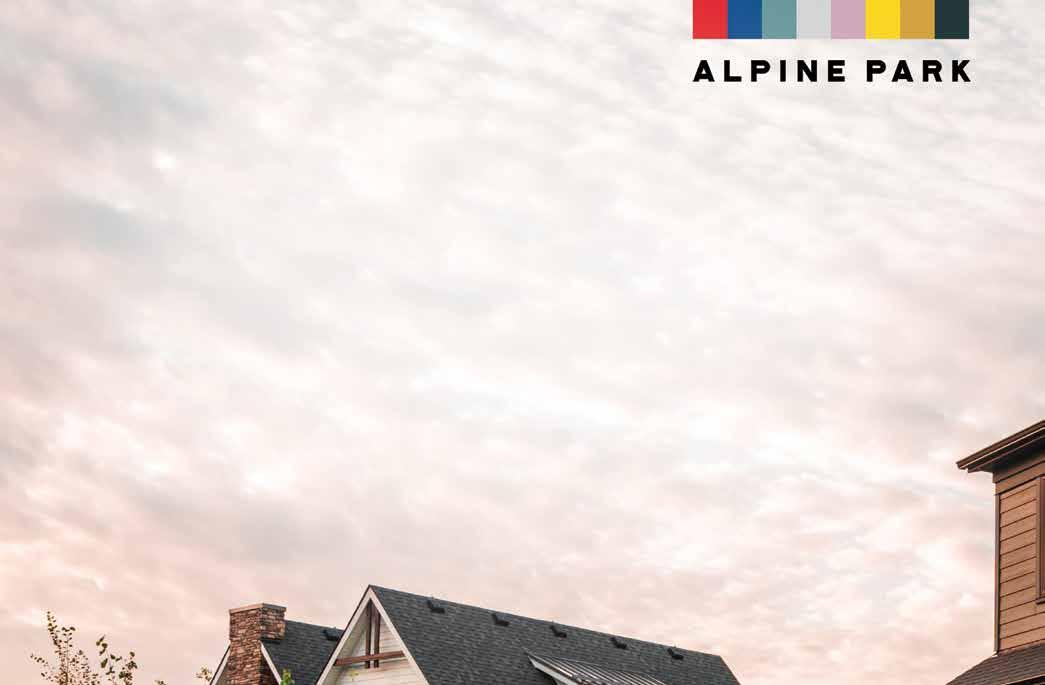

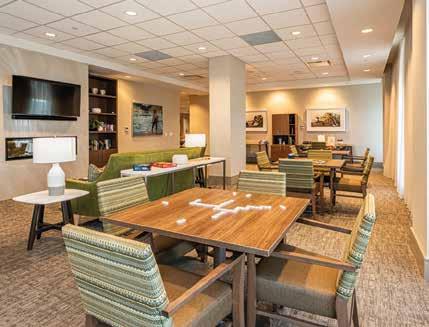
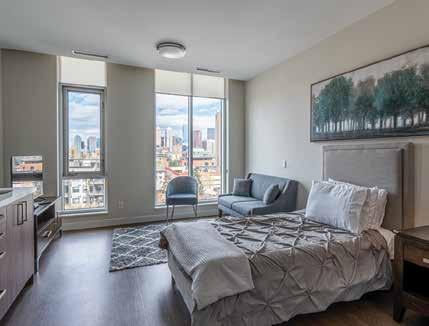
“Building resilient cities can't happen behind closed doors. Cities are living systems, and it's time we act like it.”
for Ron Jaicarran, the importance of building neighbourhoods where people can thrive isn’t theoretical. He has seen it in his own life.
“I grew up in a neighbourhood in Toronto which I have since realized didn't have a lot of opportunity,” Jaicarran says.
“When I moved away and I lived in other neighbourhoods, I just felt different. One of the big things that was different was the neighbourhood [I grew up in] lacked a lot of opportunities and economic development.”
Jaicarran has a master’s degree in communication and, in university, he focused on the use of data for cities’ decision making. He thought deeply about social and economic systems and how improvements in cities are usually built on the strife and dedication of previous generations.
“I often think about the immense amount of sacrifice people put forward so we wouldn't go back to the system that once existed,” he says. “This work has now become my recognition of how grateful I am for all they have done.”
Jaicarran leads Remarkable Future, a venture studio with several brands under its umbrella, including the non-profit Imagine Cities. Launched in 2018, Imagine Cities provides digital tools that empower neighbourhood leaders and connects them to partners
such as post-secondary institutions and private companies to help them engage, learn, plan and access support to build thriving neighbourhoods.
Jaicaarran is driven to solve the problems that impact cities by creating change at what he calls the “most fundamental level” — by providing community leaders with the resources to help their neighbourhoods and neighbours thrive.
“After launching the platform, we've spent most of our time listening and learning from neighbourhood organizations and the challenges they face,” Jaicarran says. “The best city-building happens when we listen first, especially to voices that have historically been left out.”
This feedback inspired the Imagine Cities team to create the Neighbourhood Project Facilitator. The pilot initiative helps leaders who have an idea turn it into a project proposal. Those projects can then be submitted to Imagine Cities’ Creative Neighbourhood Lab for further development support.
“If we want resilient cities, we have to invest in residents’ imaginations,” says Jaicarran. “There are many people living in neighbourhoods who have applicable skill sets and their capability and creativity should be capitalized on. Building resilient cities can't happen behind closed doors. Cities are living systems, and it’s time we act like it.”
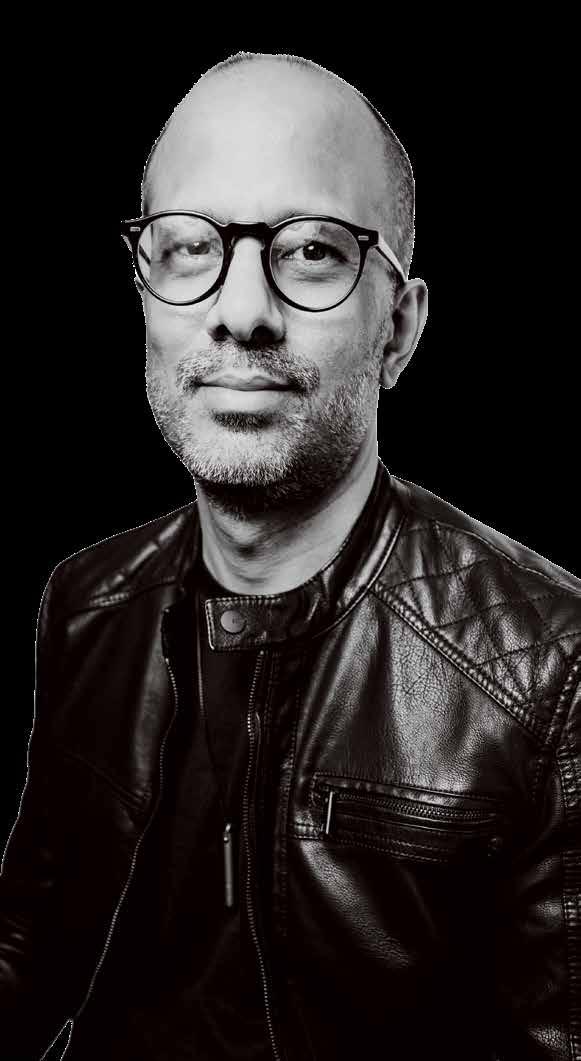
TITLE Founder, Remarkable Future ORGANIZATION’S MISSION
Create products that support collaboration that, in turn, supports the creation of neighbourhoods where more people can thrive
RECENT PROJECT Under the Imagine Cities brand, Jaicarran built a search engine providing insights
into how to build more thriving neighbourhoods.
VISION FOR CALGARY “A city where neighbourhoods are not simply seen as a collection of streets that lead to a destination. The quality of neighbourhood design holds the fundamental building blocks to enable human flourishing.”

TITLE Assistant professor and design justice research chair, School of Architecture, Planning and Landscape (SAPL), University of Calgary
RECENT PROJECT Opening the Design Justice Centre at SAPL next year. The centre will be a space not only for those who work in
housing, but for the broader community, as well.
IMPACT HIGHLIGHT Has influenced national housing policies through research and advocacy.
VISION FOR CALGARY: “A city where design fosters belonging, health and equity for all residents.”
“I challenge myself, my students and my clients to ensure that we're really engaging with the communities that our practices and our approaches impact.”
cecile Kotyk’s dedication to creating equity and social justice in Calgary’s urban development started with her own lived experience. She grew up in Nigeria, where she experienced what she calls “housing challenges.”
She didn’t expect to face housing challenges again when she immigrated to Canada. However, when she moved to Winnipeg to attend university in 2004, Kotyk says the idea she had of Canada fractured. “Experiencing racism, discrimination and housing precarity, and the policies that prevented me from accessing affordable and safe housing ignited a passion in me,” she says, reflecting on how these negative experiences inspired her to work to make change.
Kotyk’s passion for understanding the barriers marginalized communities face to accessing safe and affordable housing, as well as the historic structures that contribute to our built environments, led her to pursue a master’s degree in city planning.
She spent the next 15 years working with Indigenous communities, non-profits, public housing providers and service agencies in Manitoba to tackle affordable and social housing issues, homelessness and mental health. Working for the At Home/Chez Soi project, she worked to procure more than 200 units to house project partners. She later worked with End Homelessness Winnipeg
to mobilize the 10-year Plan to End Homelessness.
As an assistant professor at the University of Calgary’s School of Architecture, Planning and Landscape, Kotyk’s research focuses on design justice and delves into the intersection of design, equity, social justice and health. Her pioneering work created the Black Housing Equity Framework, to be used by anyone working in the housing sector to address racist and discriminatory practices and engage with Black communities to improve housing conditions. That work has been presented internationally and recognized with the Alberta Award for the Study of Canadian Human Rights and Multiculturalism scholarship in 2022.
“Black communities have historically been left behind on a lot of policies and decisionmaking. This framework is all about how we facilitate better consultation and participation and inclusion with Black communities,” Kotyk says.
In 2022, she founded her urban planning consulting practice. Her work places racialized communities as co-creators in the planning, design and delivery of projects that are being developed in their neighbourhoods.
“I challenge myself, my students and my clients to ensure that we're really engaging with the communities that our practices and our approaches impact, and that those communities are driving the process,” Kotyk says.
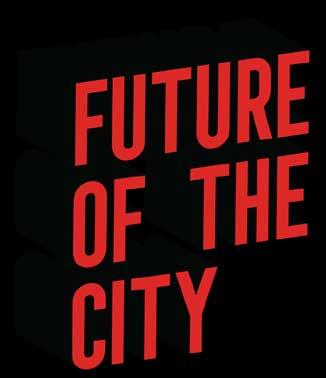

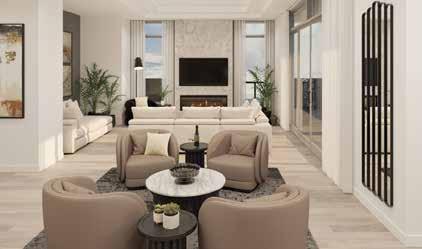
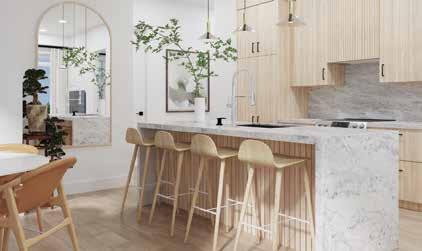
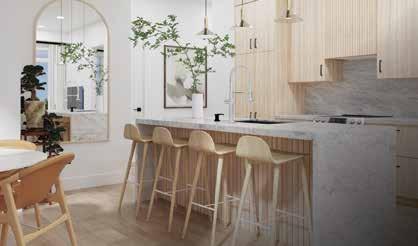
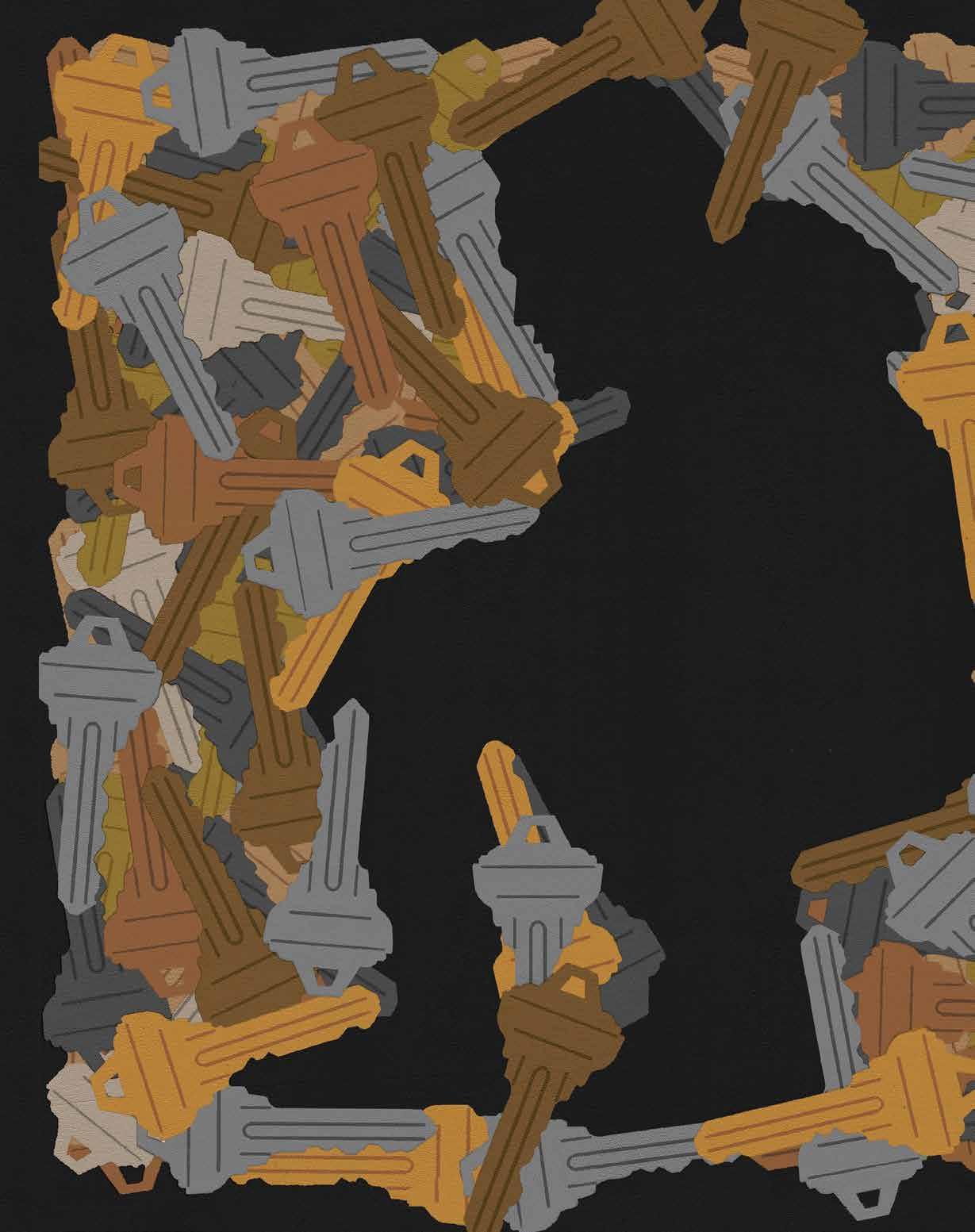
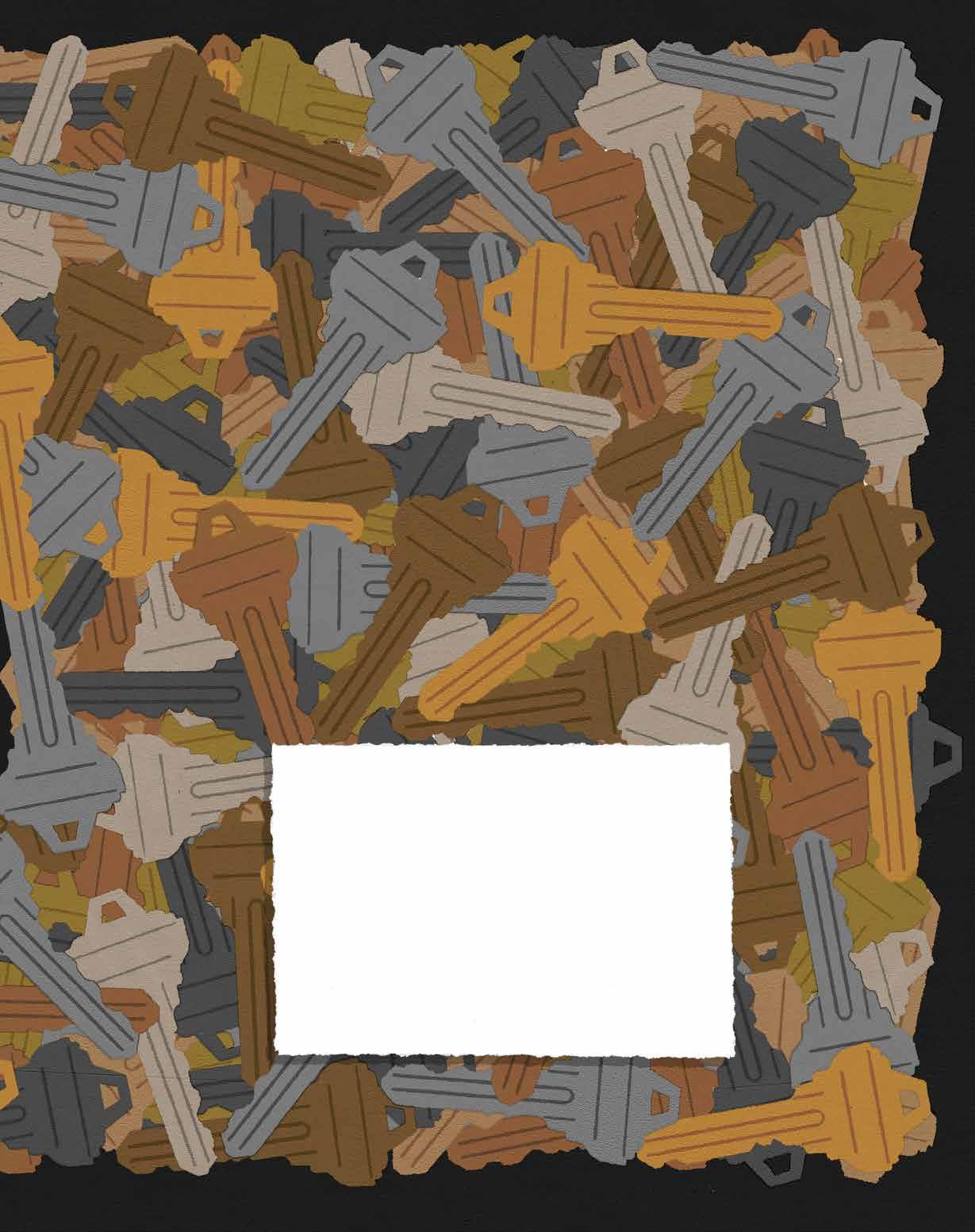
O n a frigid January day in 2008, a group o f Calgarians launched one of the most a mbitious social policy undertakings i n Canadian history. Now, more than 17 years later, we look at what the 10 Year P lan to End Homelessness taught us — a nd what comes next.
BY DÉJÀ LEONARD ILLUSTRATIONS BY PETE RYAN
If you had walked into a downtown-Calgary shelter in the early 2000s, you would have seen a crisis peaking. Overcrowded facilities, long waitlists and growing encampments told a story of a city grappling with a sharp rise in homelessness.
In 1992, Calgary’s first-ever “point-in-time count” — an estimate of people experiencing homelessness in a community done through a single night's count — recorded almost 450 people experiencing homelessness. By 2006, that number had ballooned past 3,000. It was a trajectory that alarmed business leaders, social service providers and the public, alike.
Out of that crisis, a bold idea was born: what if, instead of managing homelessness, Calgary tried to end it?
Until then, the city had been “managing” homelessness by adding shelter beds. While that strategy kept people off the streets for a few nights, it wasn’t really doing anything to address the root causes of homelessness itself — or to stop it from continuing.
In January 2008, Calgary launched Canada’s first official 10 Year Plan to End Homelessness, led by the then 10-year-old Calgary Homeless Foundation (CHF). This wasn’t just a policy document. It was a community-wide rallying cry that galvanized non-profits, governments, philanthropists and citizens.
“We were trying to do something radically different,” says Tim Richter, who was a key architect of the plan and later CEO of the CHF during most of the plan’s tenure. “It was a 180-degree shift from responding to homelessness to actually solving it ”
The Calgary Committee to End Homelessness, formed in the lead up to the plan, included prominent leaders from government, the corporate world, non-profits, and faith and Indigenous communities. Steve Snyder, then CEO of TransAlta, chaired the group. Other members included Richter, representatives from the United Way, Mayor Dave Bronconnier, and Fred Henry, then the Catholic Bishop of Calgary. Prominent philanthropist and oil and gas executive Jim Gray helped with setting up the committee, but didn’t serve on it himself.
“ THE IDEA WASN'T TO BUILD MORE SHELTERS. IT WAS TO BUILD A COORDINATED RESPONSE, WHERE SERVICES AND DATA AND GOALS WERE SHARED.”
Tim Richter

The committee aimed to create a solutionfocused road map, rather than a patchwork of emergency responses. Every part of the plan’s rollout reflected the spirit of collaboration that sparked the committee’s formation.
The plan's backbone was "Housing First," a philosophy that emphasizes putting people into stable housing before tackling other challenges, like addiction or mental illness. The logic was simple, but at the time revolutionary: it’s hard to recover or hold down a job if you don’t know where you’re sleeping each night. A shelter might keep you warm, but it isn’t really an environment that is conducive to getting your life back in order.
But even more transformative was the level of coordination across the city that came with the plan. Dozens of agencies began operating as an interconnected system, instead of separately or in competition. This approach came to be known as Calgary’s Homeless-Serving System of Care. It’s a network of agencies and people working together to this day to ensure those who are experiencing homelessness (and those at risk of experiencing it) have timely access to the right housing and the right resources.
“The idea wasn’t just to build more shelters,” says Richter. “It was to build a coordinated response, where services and data and goals were shared.”
That shared infrastructure also included another system still in place today: the Homeless Management Information System (HMIS). HMIS helps agencies track housing placements, measure success and avoid duplication of services, and it is key to coordination across agencies that now have more tools to work in the same direction.
Launched in 2012, four years into the 10 Year Plan, The Resolve Campaign emerged as a direct response to a key insight of the plan: that solving homelessness required not just better coordination and service delivery, but also a dramatic increase in affordable housing stock.
While the campaign was not officially part of Calgary’s 10 Year Plan to End Homelessness, the plan’s momentum and the structure it created definitely shaped Resolve.
The campaign brought together nine housing-focused agencies, many of which were deeply involved in implementing the 10 Year Plan, and united them under a single fundraising umbrella. This level of coordination mirrored the systemic thinking embedded in the plan.
Resolve’s goal was to raise $80 million and build affordable rental housing for 3,000 vulnerable and homeless Calgarians. By the time it wrapped in 2018, the campaign had raised

$74 million, which provided 1,850 Calgarians with a place to call home.
Resolve’s projects included two new properties for the Calgary Homeless Foundation — a 23-unit apartment building with wraparound support services named Murray’s House, and Hope Heights, a four-storey apartment building with 35 one-bedroom units for young parents, children and seniors.
David McElhanney, now board chair of the Calgary Affordable Housing Foundation, was deeply involved. “What we learned through Resolve is that the philanthropic community wanted one voice and one ask. We became that conduit between donors and housing providers,” he says.
The campaign was not just a funding drive; it was a cultural moment for the city. Each participating agency had its own fundraising goal, and the shared strategy and communications plan guided their efforts. Major corporate and individual donors stepped forward, including high-profile Calgary philanthropists. The campaign also showed that building housing could be a unifying civic project that connected business executives and outreach workers, housing providers and social workers around a common goal.
McElhanney and his peers saw that the campaign’s collaborative model worked — and they weren’t ready to let that momentum
fizzle out when Resolve wrapped up. In 2025, five of the nine Resolve agencies officially launched the Calgary Affordable Housing Foundation to sustain the flow of private dollars into housing projects.
“There’s still a massive need,” says McElhanney. “We’re talking about 15,000 to 20,000 units of affordable housing that are needed in Calgary. Government can’t do it alone.”
The plan clearly didn’t end homelessness. The most current point-in-time count, completed in 2024, found 3,121 people experiencing homelessness in Calgary. However, by many metrics, the 10 Year Plan was a success.
Between 2008 and 2018, nearly 10,000 individuals were housed — an achievement that underscored the effectiveness of the City’s Housing First approach. In addition to securing housing for thousands, the efforts made as a result of the plan had developed almost 600 units — including multi-family — of permanent supportive housing, offering stable, long-term options for many facing homelessness.
These efforts didn’t go unnoticed. Calgary became a national, and even international, model for coordinated homelessness response. Cities across North America looked to mirror Calgary's successful plan, particularly the Homeless-Serving System of Care and its use of real-time data.
Perhaps most notably, the plan stopped the
growth in homelessness, despite an overall growth in population. This is significant considering Calgary’s population grew by more than 220,000 people from 2008 to 2018 — and has increased by more than that since 2018.
“We were the first in the country to see province-wide reductions in homelessness,” says Richter. “Medicine Hat ended chronic homelessness. Edmonton cut it in half. Calgary made major progress.”
And yet — the 10 Year Plan did not end homelessness.
So, the organizations involved reframed their vision. Rather than focusing on the aspirational goal of “absolute zero” homelessness, Calgary embraced the concept of Functional Zero, where homelessness is rare, brief and non-recurring, and, most importantly, doesn’t exceed the city’s available housing.
Functional Zero requires real-time data, consistent housing capacity and seamless transitions of people facing homelessness back into the public systems where prevention is most effective.
The 10 Year Plan found that part of the challenge in eliminating homelessness is structural. Issues outside the reach of shelters or housing programs — addiction, mental health, domestic violence, poverty and racism — impact homelessness deeply. Housing First is a powerful philosophy that reframes how to address the roots of homelessness, but “Housing First does not equal housing only,” as one of the plan’s final reports reminded readers.
The Housing First model is based on the principle that stable housing is a foundational step in addressing homelessness. People are first given a place to live, without preconditions like sobriety or treatment. Then they’re connected to support services, as needed.
“ THE BIGGEST SHIFT WAS NOT IN HOUSING ITSELF, BUT IN HOW WE WORK TOGETHER.”
Tim Richter
However, putting the plan into action revealed that housing-focused non-profits could only do so much alone. Even if they offered support programming, they needed other public systems, in the areas of justice, health and children, to help address the needs of clients experiencing homelessness.
“The biggest shift was not in housing itself, but in how we work together,” says Richter.
“Agencies coordinated, data was shared, and we could measure real-time results.”
But, even with these changes, systemic gaps in health care, child welfare and justice continued to push people into homelessness
faster than the system could house them. Indigenous people living in Calgar y, for instance, remain dramatically overrepresented in homeless populations.
That’s why the final strategic shift of the plan focused on Functional Zero; not ending homelessness absolutely, but ensuring that anyone who became homeless could be rehoused quickly and didn’t return to homelessness. It was a sobering recalibration of goals, but also a more realistic one.
As Calgary’s 10 Year Plan to End Homelessness came to a close in 2018, the city faced a new question: what came next? The answer was “Together to Zero,” a final report built on the collective wisdom of more than 200 interested parties, including frontline workers, Indigenous leaders, government representatives and people with lived experience of homelessness. From these consultations emerged six strategic directives designed to carry the work forward. While all six are important, several stand out as foundational pillars for Calgary’s next chapter.
One of the most urgent priorities is better support for the frontline staff working in the homelessness sector. Throughout the feedback sessions, workers described the personal toll of working with limited resources and training while interacting with people who had highly complex needs.
A 2016 study commissioned by the Calgary Homeless Foundation found nearly 25 per cent of frontline workers reported symptoms consistent with burnout, and more than a third showed signs of PTSD. The report called for more investment in peer-to-peer support, leadership development and safer feedback channels within organizations to ensure those delivering care are also cared for.
Another key focus was the right of Indigenous communities to shape their own housing solutions. This means moving away from designing programs first and then trying to “Indigenize” them later. Instead, the report recommended building services in partnership with Indigenous governments, Elders, Knowledge Keepers and communities from the outset.
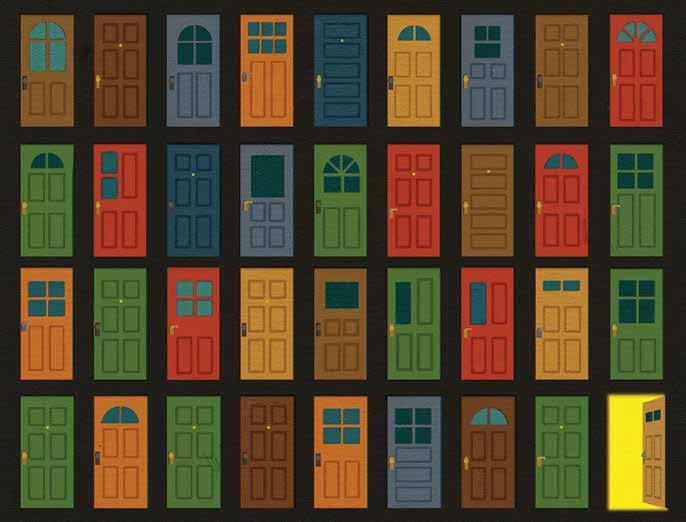
“ WE NEED INVESTORS. WE NEED BUSINESS LEADERS. WE NEED COMMUNITY MEMBERS WHO SEE HOUSING AS A FUNDAMENTAL PART OF A HEALTHY SOCIETY.” Jolene Livingston
A third important priority was to get the homeless-serving organizations aligned with other public systems, such as health care, justice and child welfare. The Homeless-Serving System of Care often functions as a “catch-all” for people failed by these systems, but true prevention has to happen earlier. The report suggests the need for a neutral organization (one without its own service agenda) to lead planning and help everyone — housing agencies, health care, justice and others — work better together.
Finally, the report highlighted the need to consider peoples’ real, lived experiences in every level of decision making, from program design to policy advocacy. Groups like the Client Action Committee and Youth Advisory Table were called out as crucial voices. The final report called for deeper, more consistent involvement of people who have actually experienced homelessness, ensuring solutions
are rooted in real-world understanding.
Today, Calgary is dealing with a very different landscape when it comes to addressing homelessness.
The remnants of the COVID-19 pandemic, the opioid crisis and a record-breaking surge in population have further strained the housing system. The affordability crisis has pushed more people into housing insecurity those numbers are increasingly difficult to track.
“People think of homelessness as folks living in shelters or tents,” says Jolene Livingston, founder and CEO of Partners for Affordable Housing, a charity focused on national housing philanthropy. “But housing insecurity is more common than people think. It’s your neighbour who might have lost their job through the pandemic, or a young couple trying to raise a child on one income.”
This story was created with the support of the Avenue Community Story Development Fund. The Fund supports the creation of local reporting on issues such as intimate-partner violence, mental health and addiction, the housing crisis, and more. Thank you to our partners, including The Calgary Foundation. To find out more, or contribute, visit AvenueCalgary.com/StoryFund.

Meet Reframe, Community Liaison for Calgary’s Future. He wants to be your mayor.
On October 20th

Together, let’s elect real community leaders who will fight for what matters most to Calgarians.
Housing affordability
Better public transit
Good jobs
Climate action




















Housing insecurity is essentially not having stable, safe, affordable housing for any reason, including, but not limited to living in housing that is too expensive — anything more than 30 per cent of household income.
“We’ve had brilliant campaigns — Resolve, the 10 Year Plan — but then there’s often a pause. We need continuous, long-term commitment to housing, just like we have for cancer research or education,” says Livingston, who wasn’t involved in the original 10 Year Plan.
“Philanthropy had long been missing from the affordable housing conversation at a national level,” she says. “Government isn’t set up to do this alone. Neither are non-profits. We need investors. We need business leaders. We need community members who see housing as a fundamental part of a healthy society.”
The infrastructure built by the 10 Year Plan still exists, and Calgary’s Homeless-Serving System of Care remains one of the most coordinated in the country. But, the complexity of today’s challenges demands a new kind of resilience.
“Homelessness is a housing problem. But housing is also an economic problem, a political problem, a human rights problem,” says Richter.
McElhanney echoes that sentiment : “We're still playing catch-up on supply. The need has grown faster than our response.”
Ultimately, the 10 Year Plan didn’t end homelessness. But it critically changed how Calgary tackles it — and who takes responsibility for doing so.
It launched a network of leaders, ideas, organizations and citizens who still believe that housing is a human right. It created the foundation upon which today’s efforts are built and tomorrow’s must be.
“We proved we could move the needle,” says Richter. “Now, the challenge is moving it again — and faster.”
As Calgary looks to the future, it does so with a decade of insight and infrastructure behind it. The question isn’t whether the city can reduce homelessness. It’s whether it can sustain the courage and collaboration it once showed, in even more complicated times.
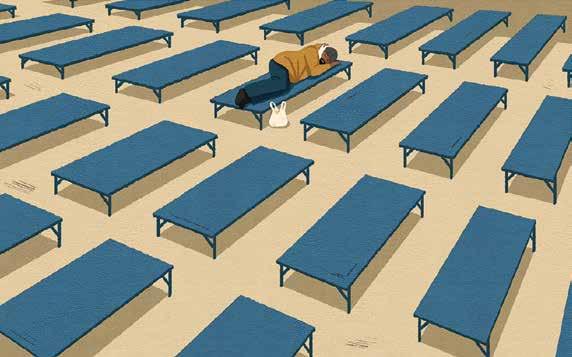
Trellis Society, a family and youth support services non-profit, was one of the organizations involved in the 10 Year Plan and saw its approach to homelessness shift over the years.
At the start of the plan, Trellis Society was the only organization that could deliver services to all of the groups the 10 Year Plan supported — youth, families and adults. When it came to homelessness, it was focused on providing shelter to young people at a building called Avenue 15.
“We would track how long that young person stayed. We'd track how full the building was, and all of those were badges of honour,” says Jeff Dyer, CEO of Trellis Society.
that the city now only has to have one youth emergency shelter — Avenue 15.
Dyer says one drawback of the 10 Year Plan was the way it was presented, which caused a gap between public expectation and realistic outcomes. It has created a perception that the agencies involved failed rather than highlighting successes.
“There’s a downside to branding it a 10 Year Plan to End Homelessness,” he says. “It was never funded to actually end it, just to radically reduce it.”
“If we can rapidly restore these natural supports in your life, your experience of homelessness would be super short.”
JEFF DYER
Now, what used to be about housing young people short-term has become a mission to rapidly reconnect them to community and family.
“We know that once you're in the homeless system of care, your likelihood of remaining there is extremely high," Dyer says. "But if we can rapidly restore these family and natural supports in your life, your experience of homelessness would be super short, we'll consider it a great success and you'll probably forget that you were ever at a place called Avenue 15."
The organization now finds pride in shorter stays, and considers it a success
Overall, Dyer says the outcomes of the plan were “dramatic” in a good way, and strengthened non-profit connections in the city.
“Fifteen years ago, it was a fractured system,” he says. “Now we know who to turn to when someone’s needs are bigger than what we can handle.”
During the time the plan ran, Trellis was also able to get funding for two promising housing programs that are still running today — Home Fire for Indigenous youth and Aura, a housing-first program for 2SLGBTQIA+ youth.
Today, Trellis continues to make a big impact in the community. The non-profit’s 2022-23 report to the community states that it helped prevent 2,058 people from experiencing homelessness and supported 437 young people out of homelessness in the 2022-23 year, alone. — D.L. Learn more at growwithtrellis.ca.

Axis Connects’ annual Leadership Forum is a transformative experience where professionals take their skills to new heights.
Founded in 2019, Axis Connects champions gender diversity in business and supports women in their journeys toward leadership and professional potential through networking opportunities and curated events.
Among its signature events is the Leadership Forum, held every fall, where hundreds of executives, leaders and professionals gather for a day of thought-provoking workshops, discussions and conversations. This November will mark Axis’ fourth Forum, and an exciting panel of Canadian CEOs will take the stage. The Forum is one of Axis’ most highly anticipated events and sells out every year, so make sure to buy tickets early.
“Bringing together diverse perspectives is critical to fostering sustainable success and growth in today’s evolving workplace,” says Nuvyn Peters, CEO of Axis Connects. “We’re excited to offer this platform for leaders and professionals to gain insights from some of the most accomplished voices in Canada. This event equips participants to drive change and make meaningful strides in their careers.”
Every year, the Forum invites inspiring leaders to take the stage and share bold ideas, empowering lessons and suggestions for how attendees can hone leadership skills and reach their
full potential. A series of afternoon breakout sessions allows attendees to choose from various workshops, including programming on how to lead diverse teams, honing negotiation skills, tips for strategic networking and other leading strategies.
Past keynote speakers include Oscar Award-winning actor Geena Davis. In 2023, Davis shared research showing that representation of women in the media has empowering real-life impacts on women and girls, yet gender disparity in film continues.
In 2024, the Right Honourable Stephen J. Harper offered a resounding message of hope for the future of girls and women, emphasizing that with passion
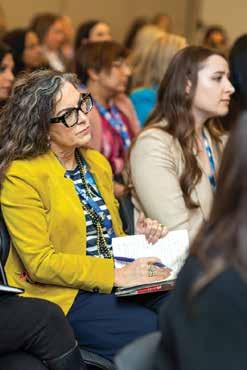
and focus, the sky is the limit.
• Connecting leaders across industries.
• Building pipelines for top talent.
• Amplifying underrepresented voices.
• Driving real change across the business community.
• Equipping members with tools to thrive.
“The promotion of women in business is really important to our economy and to our future. It’s great to have the Margaret Thatchers of the world who will power their way through, but ultimately, for most people, you need a critical mass to get that kind of change. I know that’s what Axis is doing and doing successfully,” he said.
This year, featured guests will include inspiring Canadian CEOs on boundarypushing topics, and the discussions will be bold and dynamic. Make sure to secure your tickets to join the conversations.
Although the annual Leadership Forum is just one day of connection, the impact from the community it fosters reaches far beyond the day itself.
Axis recognizes the potential for a stronger community with more diversity in the workplace, which drives its yearround initiatives to help professionals gain the skills, tools and knowledge to advance their careers.
Gender disparity in the workforce is still prevalent — McKinsey & Company reports that only 29 per cent of C-suite leaders are women, and the barriers they face at work contribute to that low representation. Canadian women make an average of 88 cents for every dollar
men make. A 2024 report from Deloitte revealed that nearly half of women reported facing microaggressions and/or harassment at work.
Axis is answering the call to break down the barriers through its membership, corporate partnerships and many events, including the Leadership Forum. The Forum works to amplify gender diversity, urging everyone to recognize that it’s a strategic advantage, a driver of innovation and a surefire way to success.
This year, the Leadership Forum will be held on November 25 at the Calgary Telus Convention Centre.
Championing women in the workplace is as important as ever, and the Forum will bring forward key takeaways to help women scale the corporate ladder and for employers to champion diversity. Over 700 mid- to senior-level professionals will participate in strategic workshops and hear dynamic speakers discuss how to overcome barriers, utilize innovative tools for success and take immediate action to excel in their positions, and you can secure your place at the Forum today.
Axis also connects thousands of professionals through its year-round membership community. Leaders grow together through events such as Lunch with a Leader and career development sessions. Members receive the support, tools and opportunities to succeed with a variety of initiatives led by Axis.
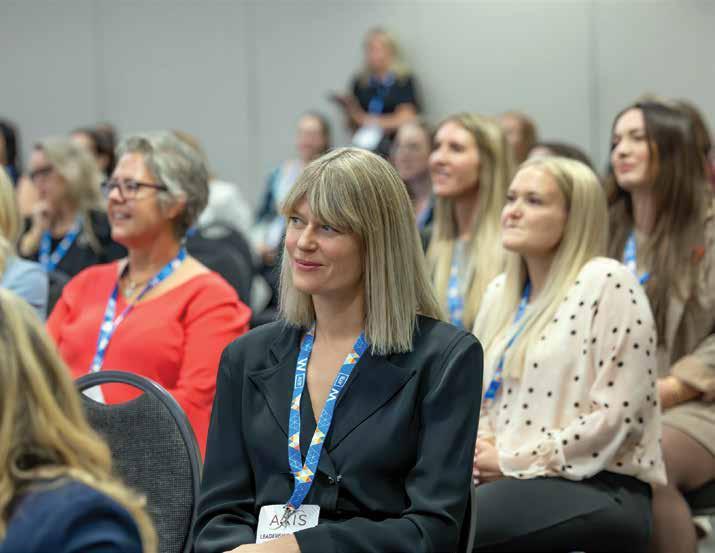
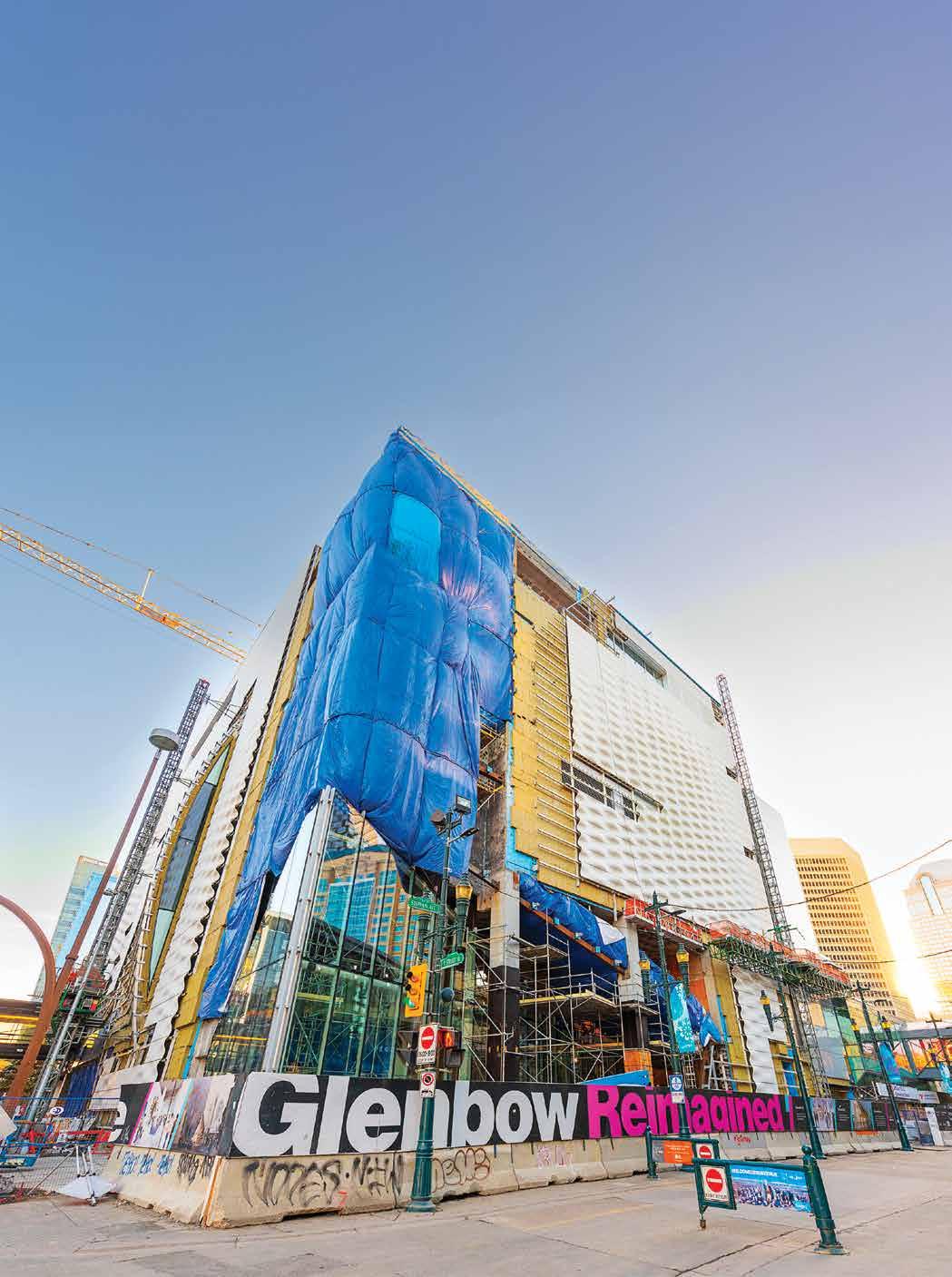
There’s been an unprecedented surge in funding for local arts organizations and infrastructure. And, for arts organizations, funding can make or break how they are able to operate. From huge renovations to the closure of community hubs, a transformation in Calgary’s arts scene is on the way.
he arts in Calgary are in the midst of an evolution. All three levels of government are pouring investments into cultural infrastructure, with massive renovation plans and builds happening at the Werklund Centre (formerly Arts Commons), Glenbow’s revitalized home at the JR Shaw Centre for Arts & Culture, Contemporary Calgaryy and the National accessArts Centre.
“It's so important, these art investments that we make," says Contemporary Calgary CEO, David Leinster. "It makes for a more creative place to do business. It makes your talent pool a group of people who think so dynamically. It makes this more of an amazing place to live. It makes an amazing place to work. It makes an amazing place to raise a family. It makes it an amazing place to be.”
This support is not just sustaining the arts — it’s redefining who gets to participate, how culture is shared and what it will mean to create in Calgary in the future. Here's a look at just a few recipients and funders behind this unprecedented investment in Calgary’s art and culture.
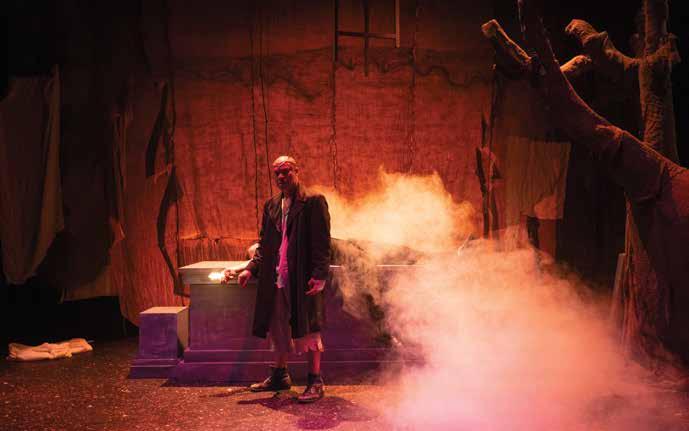
In addition to funding from the province through the Alberta Foundation for the Arts and from the federal government through the Canada Council for the Arts, Calgary’s arts ecosystem is facilitated by a range of grant programs delivered municipally through Calgary Arts Development (CAD), which allocates its funds from The City of Calgary. These programs are designed to support local artists, arts organizations and community groups at all stages of their creative journeys, with an emphasis on inclusion, accessibility and sustainability.
CAD distributes funding across several streams, including project grants, operating grants and microgrants. Other programs, like the Original Peoples Investment Program, are tailored to support Indigenous artists, communities and grassroots arts initiatives that may fall outside traditional funding models. Many grants are adjudicated by peer committees, ensuring decisions reflect community values and lived experiences.
Project grants support one-off performances, exhibitions and research, while operating grants like the Future Focus Program help arts organizations develop significant shifts in operational activities towards future-focused practices.
Microgrants, like the Artist Development Microgrant that offers up to $15,000, can be especially impactful for emerging artists and small collectives, offering flexible support
with fewer barriers to entry.
Smaller arts organizations, like local production company Jupiter Theatre, often rely heavily on such grants for their operations.
Founded in 2019 by Andrew Cooper with a hyper-local mission, Jupiter stages works by local playwrights and hires Calgary- and Alberta-based artists.
Cooper moved to Calgary for the city’s emerging creative energy and opportunities for local indie theatre. In its early stages, the production company was supported through crowdfunding, ticket sales and smaller project grants. Jupiter navigated through the COVID-19 pandemic with targeted relief funding for live entertainment, but, in recent years it has secured stable operating support from both CAD and the provincial government.
“Getting the operating funding from CAD allowed me to change how my life is set up so I can focus more time on creating the art and on growing the community and producing local theatre," says Cooper. "All of those things were able to happen because we have money that we can depend on outside of just ticket sales and fundraising.”
Funding from CAD allows arts organizations of different sizes the opportunity to create through the stability of its grants and resources. For many groups like Jupiter, CAD's support is a pivotal factor in sustaining a creative economy in Calgary.

The Arts Commons Transformation (ACT) project is one of Calgary’s most ambitious cultural infrastructure investments, aiming not only to expand its artistic capacity, but to reshape the city’s downtown core.
Werklund Centre, (formerly Arts Commons) was previously a multivenue arts and performing space, housing some of Calgary’s biggest arts organizations, like Calgary Philharmonic and Theatre Calgary.
“It is the largest cultural infrastructure project in Canadian history,” says Werklund Centrepresident and CEO Alex Sarian.
The former Arts Commons is now known as the Werklund Centre, in recognition of a donation of $75 million by Dave Werklund and his family for the project's construction, as well as
an endowment. In 2024, the provincial government announced its commitment of $103 million over the course of seven years to the ACT.
Additionally, $315.5 million was contributed by the Calgary Municipal Land Corporation (CMLC), the City and other municipal sources for the expansion. The project currently has secured $510 million of its fundraising goal of $660 million.
The ACT is part of a broader City vision to re-anchor downtown Calgary as a thriving arts and community hub.
The project is being built in several
"IT IS THE LARGEST CULTURAL INFRASTRUCTURE PROJECT IN CANADIAN HISTORY." ALEX SARIAN
phases.
Phase 1 will see the construction of a new three-storey building that includes a 1,000-seat theatre, a 200seat black box theatre and public and community spaces.
Phase 2 will transform the former Olympic Plazsite, creating a renewed outdoor gathering space.
Phase 3 will focus on revitalizing the existing building to improve functionality, audience experience and accessibility.
The transformation is as much about accessibility as it is about building a lasting community that gathers around the arts. The ACT’s reimagining of arts spaces is intended to remove barriers to entry and create places where diverse communities feel welcome to participate in the arts.
“This is a matter of having beautiful places that everybody feels that they have access to and everybody feels like they belong in regardless of what quadrant they live in, regardless of their household income, regardless of nationality,” says Sarian.
Glenbow closed in 2021 for redevelopment of its 312,000-squarefoot space, and its reopening has been long anticipated. This revitalization project has been dubbed Glenbow Reimagined by the project team. The project aims not only to reconfigure the museum for accessibility, but also to create more room for visitors to explore its collection of historical artifacts, cultural pieces and art galleries.
“There are about 250,000 artworks, objects and cultural belongings held and cared for by Glenbow. We have the largest public art collection in Western Canada,” says Sam Brown, manager of marketing and communications at Glenbow. “Part of our approach to the building and new exhibition program that's being developed is to make sure that more of Glenbow's collections can be seen by more people, more often.”
The previous building offered limited physical access to its collection. It is being redesigned as a fully accessible and community-oriented space.
“One of the primary drivers behind this was accessibility," says Brown. "Originally, there was limited access to the collections. There was limited gallery space, so it was not possible for us to share more of the collection."
To that end, the renovation will allow patrons to access all floors of the museum to see into some of the working and storage spaces through large windows.
The newly reconfigured building will also have a new front entrance opening directly onto Stephen Avenue.
Though the museum collection will still be known as Glenbow, the building itself will be renamed the JR Shaw Centre for Arts & Culture in honour of a $35-million donation by the Shaw Family Foundation.
Through this donation, the museum will also offer free general admission to regular exhibits for all.
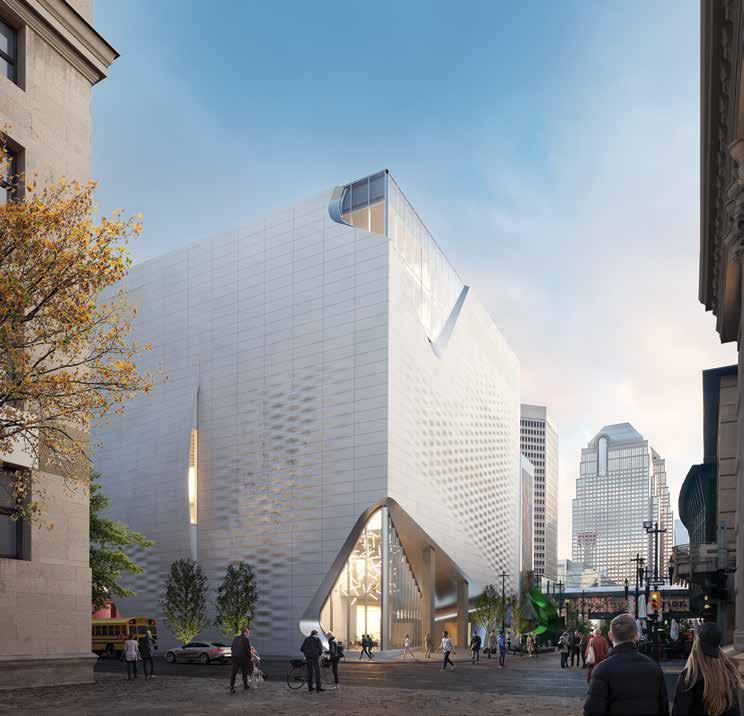
“It's a big deal, because Glenbow will be the first museum of our size to offer free admission in Canada. No other museum of our scale offers free admission in this whole country,” says Brown.
Glenbow Reimagined has been supported by government on all three levels. With $48 million from the City
" PART OF OUR APPROACH ... IS TO MAKE SURE THAT MORE OF GLENBOW'S COLLECTIONS CAN BE SEEN BY MORE PEOPLE, MORE OFTEN."
SAM BROWN
$40 million from the Government of Alberta and $43 million from the Government of Canada, along with the Shaw Family donation, the museum has currently raised $193 million of its campaign goal of $205 million.
The redeveloped building will feature amenities like a new gift shop, a theatre, a restaurant and a 13,000-square-foot rooftop terrace. The vision is to create a contemporary museum that reflects Calgary’s diversity and heritage and fosters lifelong engagement with art and culture.
“It's been so thoughtfully renovated. The new exhibitions and behind-thescenes experiences, the programming, everything — there's so much thought going into making the new experience of the museum amazing,” says Brown.







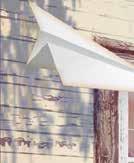













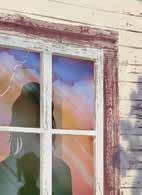















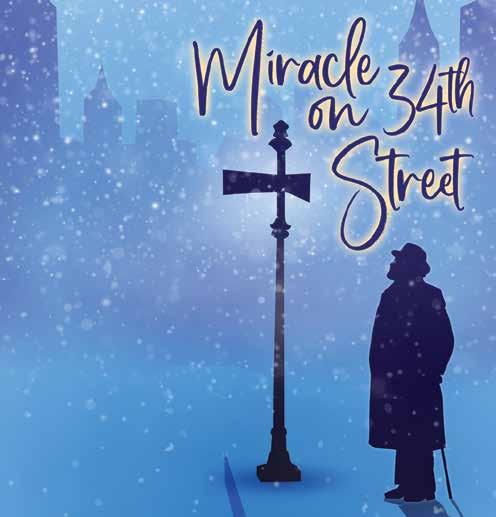



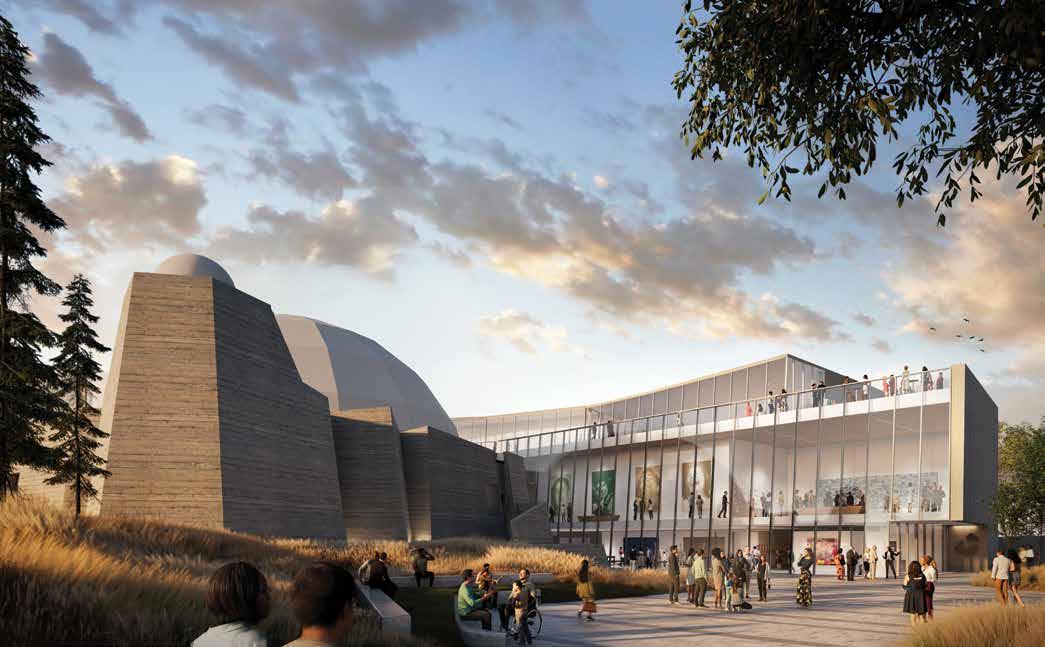
Contemporary Calgary's current brutalist-style building was once the home of Telus World of Science, including the Calgary Centennial Planetarium. After settling an agreement with the City to lease the property in 2018, Contemporary Calgary opened its doors in 2020 to showcase worldclass contempor-ary art. In early 2019, the organization announced a plan for its grand transformation through the Centennial Planetarium Transformation Project.
Through the project, the gallery will become a premier centre for contemporary art, immersive media and community connection.
An initial investment of $24.5 million was made by the City to complete the first of three phases of the project. In addition to several public and
private donors, the Government of Alberta has committed $40 million, contingent on the outstanding project funds being raised, and the Government of Canada has committed $30 million. The total estimated cost is $170 million, and Contemporary Calgary hopes to secure the remaining $70 million to complete the project from the City and private donors.
The project includes a new streetlevel entrance pavilion, an education wing and a sculpture garden.
“A visit to Contemporary Calgary already offers five or six distinct exhibitions and experiences — something that can take several hours to fully explore," says David Leinster, CEO of Contemporary Calgary. "As part of our transformation, we’re introducing a restaurant, a bookstore and gift shop featuring artist publications and curated design objects, as well as new
spaces to gather, reflect and connect.”
“These elements are essential to creating a complete and inviting gallery experience — one that not only supports our visitors, but positions Contemporary Calgary alongside the world’s leading contemporary-art institutions.”
The expansion plans also include a new climate-controlled gallery space and an event centre. Parts of the original structure will also be restored, including The Dome theatre.
“We will renovate additional spaces to optimize them for art viewing, like The Dome, which is a huge project to make it Canada's first LED dome,” says Leinster. The micro-tile LEDs give artists more ways to create using digital and immersive technologies.
The expansion is an ambitious vision for how art will shape the future of Calgary, rooted in connecting communities and creating belonging.
“We want to attract people into the building by offering them more than just art, like offering them a place to [just] be,” says Leinster. RENDERING

The National accessArts Centre (NaAC) is set to begin construction on two new arts facilities in Calgary, designed specifically to serve artists with disabilities. The project includes the revitalization of the old Scouts Hall in West Hillhurst as The Trico Communities Accessible Arts Centre (TAC) and the new Multidisciplinary Disability Community Arts Hub (MDCAH) campus, situated side-by-side along Memorial Drive. These facilities come at a time of necessity for the NaAC. The arena roof of its current home at Fairview Arena collapsed in 2018, making the facility structurally unsafe to continue full
operations. The organization aims to open TAC in winter of 2026, while the learning campus MDCAH is expected to open in fall of 2027.
“Our artists deserve a space that was built with them in mind,” says JungSuk Ryu, president and CEO of the NaAC. “This isn’t about building something for the sake of being flashy — it’s about building something functional and accessible.”
The total funding amount needed for the new facilities is anticipated to reach $24 million. The Government of Canada invested $750,000 to transform Scouts Hall in addition to $8.2 million for the MDCAH. NaAC also received $4.5 million from the City and $1 mil-
"THIS ISN’T ABOUT BUILDING SOMETHING FOR THE SAKE OF BEING FLASHY — IT’S ABOUT BUILDING SOMETHING FUNCTIONAL AND ACCESSIBLE."
JUNG-SUK RYU
lion from the provincial government. The remaining funds are being raised through community donations and corporate sponsors, with $16.2 million secured so far. TD Bank is NaAC’s presenting sponsor and the largest private donor to date, contributing $400,000 in operational support this year.
The interior of TAC will be designed in a way that respects the building’s heritage status. “The Trico Centre is a visual arts studio space that will be built with complete accessibility in mind, including things like barrier-free entry, accessible tables and a quiet room,” says Ryu.
The MDCAH will house spaces for non-visual arts, including performing arts spaces, multi-purpose gallery rooms and audio labs for music creation. Lil E Coffee Cafe, a local coffee shop that exclusively employs baristas and servers with developmental disabilities, will also open in the MDCAH building.
NaAC hopes the new hub will demonstrate how investing in local and accessible community-based infrastructure can reshape Calgary’s arts ecosystem from the ground up.
“I hope that the NaAC can be one of those organizations and facilities that can be an example, proving that community-based programs and infrastructure and dedicated spaces that uplift marginalized communities absolutely work and that they are integral to building out a stronger arts ecosystem in Calgary,” says Ryu.
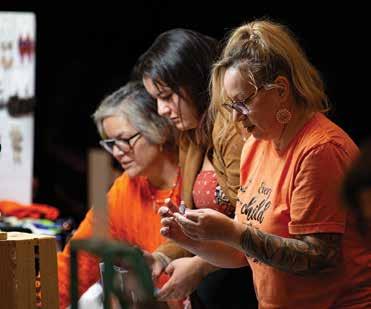
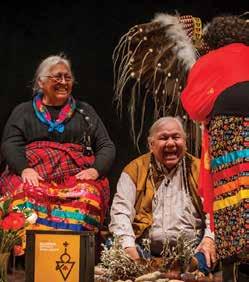






These investments in new buildings and infrastructure will be transformative for Calgary’s arts, but arts funding continues to be challenging to secure — especially to sustain existing programs.
Amidst several recent arts-investment announcements, many in the arts community were dismayed to hear that Evergreen Theatre Society could not afford to continue operations. After 34 years of community-based arts programming in Calgary, Evergreen closed its doors on June 30. Known for science-themed musical theatre and educational programming for kids, Evergreen provided accessible and affordable arts spaces.
The organization served many minority arts groups in its northeast community. At its peak, Evergreen performed for more than 120,000 people annually and supported 80 to 90 grassroots arts groups. Despite its impact, the organization was unable to secure the financial backing needed to stay open.
The tipping point came when the Social Enterprise Fund (SEF), which loaned Evergreen $5.5 million in 2014 to purchase and renovate its building, abruptly ended support and demanded full repayment.
“It's disappointing — after 34 years, the fight can be a bit exhausting,” says Sean Fraser, Evergreen Theatre’s executive director.
Though Evergreen met its agreement with the SEF to make interest-only payments — totalling approximately $1.1 million over 10 years — the debt proved too great without substantial public funding. Evergreen had received around $600,000 (less than 10 per cent of its annual operating budget) in government funding during its three-decade run.
Fraser says the issue isn’t just Evergreen’s — it’s systemic. While large arts organizations receive larger amounts of resources in redevelopment funds, smaller organizations face barriers to accessing even a fraction of that support.
“IT'S DISAPPOINTING
— AFTER 34 YEARS, THE FIGHT CAN BE A BIT EXHAUSTING.”
SEAN
“We’re not shiny,” says Fraser. “We only need maybe one per cent of the budget many of these large projects get.”
Evergreen’s story is an example of how grassroots arts organizations can get squeezed out of Calgary’s evolving cultural landscape, despite the intimate impact it had on its community. However, Fraser hopes the conversation about funding continues to evolve to support a more equitable arts landscape.
“We’ve got nothing to be ashamed of. We can only be proud about the work we’ve done [at Evergreen Theatre],” says Fraser. “It may not save us, but maybe this conversation will help the future.”
The Rozsa Foundation is one organization that plays a pivotal role in creating moreequitable opportunities for small players in the creative economy to grow.
The Rozsa Foundation is a privately endowed funder that plays a quiet, yet vital, role in Calgary’s arts ecosystem. Unlike public agencies, The Rozsa Foundation doesn’t fund artmaking directly, but instead strengthens the sector through leadership development, training and capacity-building initiatives.
Grants like the Future Focus Program, in
partnership with Calgary Arts Development and Calgary Foundation, and training programs like Foundations of Leadership in the Arts with the Haskayne School of Business at the University of Calgary, allow opportunities for growth for the arts sector and its leaders.
“We have hundreds of arts managers and arts leaders who are actively working within Calgary's art sector who have been through our programs," says Simon Mallett, Rozsa Foundation’s executive director. "We've invested in quite a few venue-based explorations for smaller arts organizations who need venue solutions. There's so many touchpoints we offer in the arts community to make an impact.”
Rozsa’s independence allows it to advocate for systemic change and respond quickly to community needs — such as launching equity-focused programs and supporting small, under-resourced organizations.
“We can be highly responsive to what's happening in the sector. In 2020, there was a lot of conversation around the lack of pipelines towards leadership for aspiring BIPOC leaders. And so we worked alongside the community to develop funding support and leadership programs for those individuals,” says Mallett.
Through partnerships with funders, both private and public, Rozsa enables both grassroots growth and long-term planning. Its impact is measured not just by outcomes, but how it can allow arts organizations of all sizes to continue to create.
No matter the size of an infrastructure project or the resources allocated to funding the arts, Calgary’s culture wouldn’t exist without the artists and audiences who participate in it. A healthy creative economy includes large and small organizations that continue to foster a diverse, vibrant arts community.
As Alex Sarian with Werklund Centre succinctly puts it: "These infrastructure projects mean nothing if we cut the ribbon on them and there's no artist community left in Calgary.”





BY CATRINA BOWLES
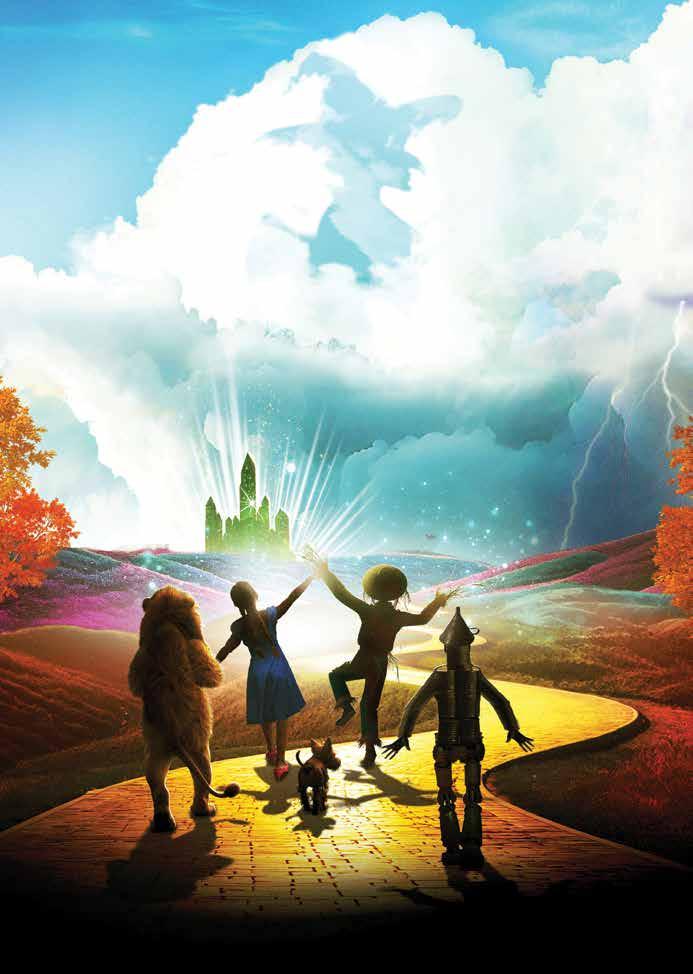
rom Calgary Philharmonic’s orchestral masterpieces to theatre festivals like One Yellow Rabbit’s High Performance Rodeo and the mysterious and intriguing plays of Vertigo Theatre, Calgary’s performing arts companies put on hundreds of shows every year. The sheer number of performances may be overwhelming for the uninitiated, but don’t worry — we’ve got you covered. Here is a look at the upcoming 2025/26 Calgary arts season.
albertatheatreprojects.com
The Legend of Sleepy Hollow
October 22 to November 9, 2025
The Legend of Sleepy Hollow, produced in association with Banff Centre for Arts and Creativity and featuring The Old Trout Puppet Workshop, tells the haunting tale of the Headless Horseman.
The Wizard of Oz
November 25, 2025 to January 4, 2026
ATP brings back holiday programming for the first time in 10 years with the nostalgic story of Dorothy’s adventures along the Yellow Brick Road.
Casey and Diana
February 24 to March 15, 2026
This show tells the story of Princess Diana and her 1991 visit to Casey House, Canada’s first AIDS hospice.
April 21 to May 10, 2026
Based on the true story that inspired Beauty and the Beast, WILDWOMAN tells the story of three women in the House of Medici, and how the court's “pet wild man,” Pete, impacted their lives.

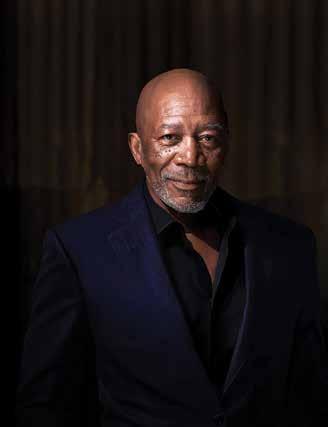
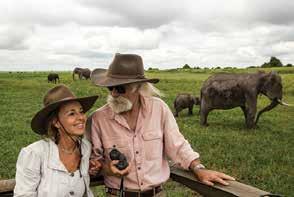
















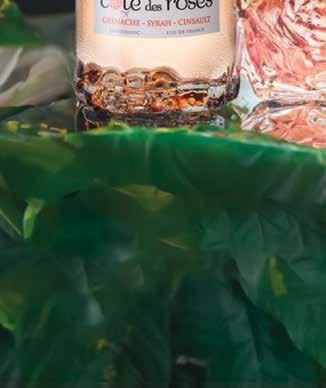

calgary.broadway.com
MJ: The Musical
November 18 to 23, 2025
This Tony Award-winning musical is packed full of Michael Jackson’s greatest hits. The show follows the making of Jackson’s 1992 Dangerous World Tour.
Moulin Rouge! The Musical
January 6 to 11, 2026
Based on the hit Baz Luhrmann film, this 10-time Tony Award-winning musical tells the love story of poet Christian and cabaret performer, Satine.
Les Misérables
March 4 to 8, 2026
Les Misérables, the longest running musical in London’s West End, tells a story of unrequited love, sacrifice and redemption, set in 19th century France.
Mamma Mia!
May 19 to 24, 2026
Mamma Mia! uses ABBA’s greatest
hits to tell the story of a bride-to-be who finds her father’s identity by inviting three men from her mother’s past to her wedding.
Clue
July 21 to 26, 2026
Based on the board game and the 1985 film of the same name, Clue is a hilarious whodunnit that'll have you wondering: Was it Colonel Mustard in the parlour with the candlestick?
calgaryopera.com

Madama Butterfly
November 1, 2 and 7, 2025
Madama Butterfly tells the story of a young Japanese woman who falls in love with an older American naval officer.
Hansel and Gretel
January 31, February 1 and 6, 2026
Though originally a German opera, this production of the story of two kids encountering a witch
Tanya Eklund’s journey as a top-performing Calgary realtor has been built on grit, determination, and a passion for connection. Known for her success in luxury and inner-city real estate, Tanya has grown her business by staying grounded in authenticity, excellence, and service. But her impact reaches far beyond real estate.
Out of a deep commitment to female empowerment, Tanya launched The VOW—Voice of Women—a podcast dedicated to amplifying the stories of strong, resilient, and inspiring women. What began as a simple idea to celebrate the women around her has evolved into a growing movement, one story at a time.
Each week, The VOW features a new guest whose journey highlights vulnerability, growth, and strength. From overcoming adversity to breaking barriers in business and life, these women share stories that resonate. Listeners are reminded that they’re not alone—and that their voice matters.
More than a podcast, The VOW is a platform for connection and community. Tanya and her team—much like her real estate group, composed of strong, driven women—are united in their mission to empower others. Each episode is thoughtfully produced, with intention and heart, to foster mentorship, spark courage, and create space for meaningful conversations.
“By embracing our vulnerabilities through the sharing of real-life stories, we ignite the courage for others to do the same,” Tanya says. It’s this core belief that makes The VOW more than content—it’s a catalyst for change.
Whether you’re tuning in during your commute or winding down after a long day, The VOW is a space for women to feel seen, heard, and inspired. Tanya’s mission is clear: to build a community where women uplift one another and raise their voices to lead, heal, and thrive. Through The VOW, she’s not just telling stories—she’s creating a legacy.
whose house is made of candy is sung entirely in English.
The Barber of Seville
April 18, 19 and 24, 2026
In this comedy, barber Figaro plays matchmaker for two young lovers — Count Almaviva and Rosina.
Little Red Riding Hood
November 28 to 30, and December 4 to 7, 2026

This classic fairy tale about a young girl and a wolf is sure to charm the whole family, especially with a one-hour run time. There’s also a special sensory-friendly performance on December 6.
calgaryphil.com
The Calgary Phil is ringing in its 70th anniversary with 70 productions across seven venues in the city. Some highlights from the season include:
EDM Meets Orchestra
September 5, 2025
The Calgary Phil takes on electronic music at Big Four Roadhouse. The orchestra will perform alongside DJs and vocalists, and play dance anthems from artists including Swedish House Mafia and Calvin Harris.
Phil in the Park
September 7, 2025
Pack up your picnic blankets for an afternoon of orchestral classics, show tunes, and pops, right on Prince’s Island Park. This event is free to attend, but be sure to reserve your spot ahead of time.
The Princess Bride in Concert
October 10 and 11, 2025
Watch this beloved film filled with
fencing, revenge, monsters and romance with its soundtrack played by a live orchestra.
cirquedusoleil.com
Echo
August 30 to October 19, 2025
Cirque du Soleil is coming to Calgary with Echo. Experience the amazing acrobatic performances Cirque is known for in a story that shows the connection between humans and the animal kingdom.
oyr.org
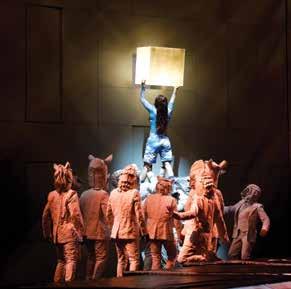
High Performance Rodeo
January 12 to February 2, 2026
The High Performance Rodeo returns for its 40th year in January. Keep an eye on oyr. org for the list of shows at this festival of bold and cutting-edge live art.

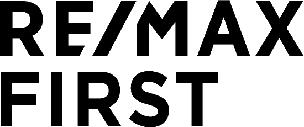


shakespearecompany.com
Romeo and Juliet
October 17 to November 1, 2025
This Shakespearean romance, produced with Calgary Young People’s Theatre, is a rare production where the actors' ages reflect the age of the character they portray.
Shakespeare’s R&J
February 19 to 28, 2026

Another rendition of Romeo and Juliet, created with Sage Theatre, follows four college-age boys who read and act out the play, and make connections to their place in the world.
Tartuffe
May 21 to June 6, 2026
The Shakespeare Company takes a break from the Bard with a comedy by Molière. The story follows Tartuffe, whose false piety nearly destroys his wealthy family.

theatrecalgary.com
Made in Italy
August 26 to Sept. 21, 2025
By audience demand, Made In Italy is back for an encore performance run. If you missed it last time, now’s your chance to see this hilarious one-man show about family, tradition and food.
Dial M for Murder
September 30 to October 26, 2025
In this adaptation of the classic Alfred Hitchcock thriller, Tony is looking to get his hands on his wealthy wife’s inheritance, with deadly consequences.
A Christmas Carol
November 28 to December 31, 2025
tion, back again for another year. Enjoy this classic play in which old Scrooge learns the true meaning of Christmas.
A Tale of the Gifted Prince
February 14 to March 15, 2026
In the world premiere of this new musical, Prince Ren goes on an adventure in an attempt to save his kingdom from the brink of rebellion, and discovers magic powers along the way.
A Doll’s House
April 7 to May 3, 2026

It’s Calgary’s beloved holiday tradi-

Amy Herzog’s adaptation of the Henrik Ibsen classic tells the story of a 19th-century woman in an unfulfilling marriage breaking social boundaries, with a contemporary twist.
Come From Away
May 26 to June 21, 2026
Theatre Calgary closes its season with this hit musical, with all-new choreography and cast. It tells the story of a New-
Discover how five SAIT alumni are sparking change through innovation, leadership and lifelong learning— igniting growth in themselves and the wider alumni community. Their journeys are proof that one spark can inspire thousands. Congratulations to our 2025 recipients.

foundland town taking in stranded travellers after the 9/11 disaster.
vertigotheatre.com
The Brothers Paranormal
September 17 to October 26, 2025
Vertigo’s first show of the season is a heartwarming, yet spooky story that follows a pair of ghost-hunting brothers who find more than they bargained for on a hunt.
Peril in the Alps
November 15 to December 14, 2025
After the success of last year’s Agatha Christie mystery, Murder on the Links, Vertigo brings another Steven Dietz adaptation to the stage. Hercule Poirot is on the case of the disappearance of Bella Duveen, which bears a striking similarity to another case he once worked on.
Monstress
January 17 to February 15, 2026
Monstress is a twist on Frankenstein, in which a disgraced female doctor attempts to bring a wealthy man’s daughter back to life.

A Killing Snow
March 14 to April 12, 2026
Set in a snowed-in cabin in rural Southern Ontario, four strangers must make the choice between death by the blizzard outdoors, or whatever darkness is inside.


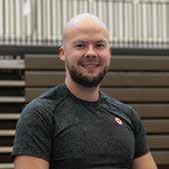
2025 Distinguished Alumni Award
CRAIG SKAUGE
Business Administration ’01
President and CEO, Olympia Trust Company

2025 Distinguished Alumni Award
DEAN BOTTOMLEY
Architectural Technologies ‘02
President and Owner, Dean Thomas Design Group
2025 Outstanding Young Alumni Award
ZAK MADELL
Architectural Technologies ‘19
Accessibility advocate and four-time Paralympian

The Verdict
May 9 to June 7, 2026
Vertigo Theatre takes on courtroom drama with the story of a washed-up lawyer fighting a medical malpractice case where he suspects an attempted cover-up.

2025 Outstanding Young Alumni Award
NADINE NIBA
Bachelor of Applied Business Administration – Accounting ‘16
Alberta Regional Risk Advisory Services Leader, BDO Canada
2025 Clarence Hollingworth Alumni
Employee Award of Excellence
LYNDA HOLDEN
Aircraft Maintenance Engineering Technology ‘93
Dean, SAIT School of Transportation and School of Manufacturing and Automation

A RTISTIC DIRECTOR F RANCESCO VENTRIGLIA R EVITALIZ ES ALBERTA BALLET BY
S TRENGTHENING CLASSICAL BALLET ROOTS IN ORDER TO BE MORE CUTTING EDGE .
BY Sarah Comber

When ballet dancer Alexandra Hughes performs, she looks out onto “a sea of black.”
Masked in makeup, the stage lights illuminate her costume and render her audience anonymous. The music plays, and “Alex” is left behind as her role takes over. Whether dancing as the badto-the-bone Wicked Witch of the West, or the playful Kitri in Don Quixote, hours upon hours of rehearsal prepare Hughes for the moment that ballet dancers live for: facing that sea of black.
“We're working really hard,” says Hughes. “Which is what I want out of my career. It's a very short career, so I want to be dancing as much as possible.”
And, with artistic director Francesco Ventriglia at the helm, she’s getting that wish. The entire Alberta Ballet company — particularly principal dancers like Hughes — are experiencing significantly more time facing the sea of black. Ventriglia has nearly doubled the number of titles performed within a season.
“My style as an artistic director is very much to inspire my dancers, and everyone who works with me, to work hard,” says Ventriglia, who officially started his tenure with Alberta Ballet in 2024. “There is always the opportunity to be better than ourselves.”
One way he encourages his dancers to push themselves is through coaching them technically. Indeed, the technical tradition of ballet is foundational to Ventriglia’s leadership ethos.
“The pillar of my artistic direction is traditional innovation,” he says. “The roots of classical ballet are extremely important. A ballet company without strong roots would be wobbly, like a table with three legs.”
But Ventriglia is not necessarily a traditionalist — he says his vision is to solidify these strong classical ballet roots within the company in order to be more cutting edge. By balancing traditional “white tutu” performances like last season’s La Sylphide, an Alberta premiere, with contemporary works
like Grimm, a world premiere, audiences can see Ventriglia’s ideology of “traditional innovation” brought to life.
With the increased workload and demand for excellence, Ventriglia also prioritizes the dancers’ physical and mental well-being.
Alberta Ballet has partnered with Peak Health & Performance, a local group of multidisciplinary sports and injury clinics, to give the dancers access to a range of injury-preventing services, like physiotherapy and massage therapy, as well as mental health support.
“[The dancers] are artists, but, first of all, they are athletes,” says Ventriglia. “They use their bodies for hours and hours a day. I try to look after them in all aspects and create an environment where they are safe, protected, and where they can feel brave to try things.”
According to Hughes, Ventriglia has infused the company with an enthusiastic energy.
“In the studio, as a choreographer, as a person, Francesco gets very excited about
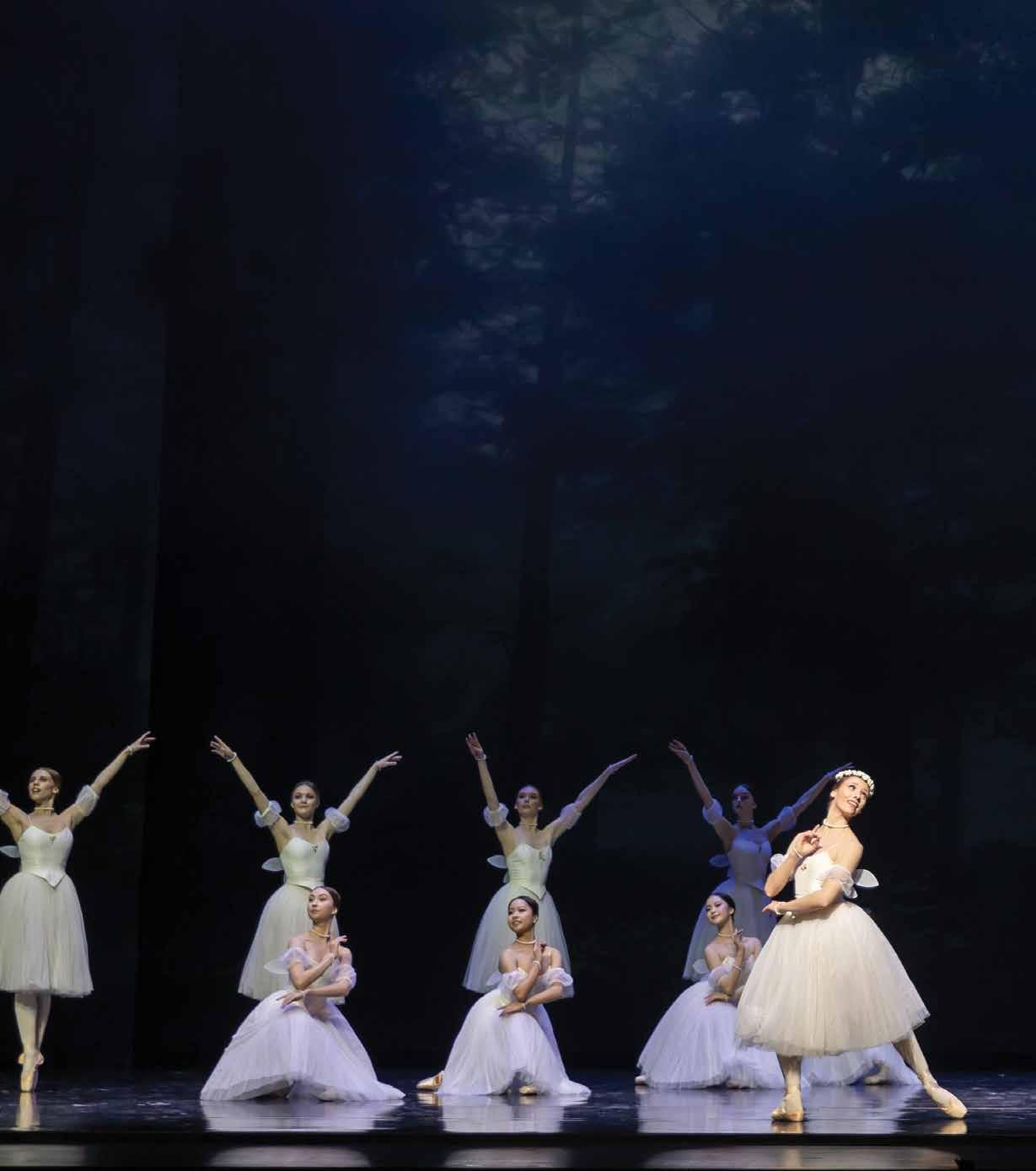
“[THE DANCERS] ARE ARTISTS, BUT, FIRST OF ALL, THEY ARE ATHLETES.
I TRY TO LOOK AFTER THEM IN ALL ASPECTS AND CREATE AN ENVIRONMENT WHERE ... THEY CAN FEEL BRAVE TO TRY THINGS.”
FRANCESO VENTRIGLIA
everything,” says Hughes. “He jumps in with both feet.”
Indeed, this energy was one of the qualities that set Ventriglia apart from the more than 80 other applicants interested in the position of artistic director, in addition to his rich and varied experience.
“We were really looking for someone that
had a lot of passion, that would be able to communicate well with our audience, and really elevate our performances,” says Heather Rae, Alberta Ballet board chair, about the search to replace long-time Alberta Ballet artistic director Jean Grand-Maître.
Rae says that what is most inspiring about Ventriglia is his absolute passion for the artform — specifically for dancer development and the connection between the professional company and the Alberta Ballet School.
A 1997 graduate of La Scala Theatre Ballet School, Ventriglia went on to perform with La Scala’s professional ballet company.
At the same time, he began his career as a choreographer with his own company, Heliopolis. At the age of 32, Ventriglia was the artistic director for the Florence Opera House — making him the youngest artistic director in Europe. In 2014, he became the artistic director for the Royal New Zealand Ballet, followed by his role as adjunct artistic director for the
National Ballet of Uruguay from 2018 to 2020.
Understanding the importance of providing students the opportunity to perform with the professional company, Ventriglia has supported Ashley McNeil, the Alberta Ballet School director, in more than doubling the number of students participating in the Alberta Ballet Trainee Program.
Ventriglia also introduced the Alberta Ballet’s Winter Gala in 2023. For this event, the entire company and school comes together for one spectacular night of performances in Calgary and Edmonton.
“I think the way Francesco incorporated the full school through his annual Winter Gala is a really incredible vision, and an incredible opportunity for the students,” says McNeil.
Along with community building between the professional company and school, Ventriglia is passionate about community outreach throughout the province. For example, he visited both children’s hospitals in Edmonton
and Calgary, accompanied by dancers dressed in their roles for The Nutcracker and Ventriglia’s own The Wizard of Oz, respectively.
“It’s very important to me, because I was a child in a hospital in the north of Italy, many, many years ago, and lots of dancers came every afternoon to entertain the kids,” says Ventriglia. “When I was out of the hospital, I asked my parents to become a ballet dancer. That's where my journey with ballet started.”
As for dancers like Hughes, who accompanied Ventriglia to Edmonton's Stollery Children's Hospital as Sugar Plum, connecting with the community creates an opportunity to replace the “sea of black” with genuine connections. “I think visiting the kids was super special and really important,” she says.
Through all of these efforts to reenergize the community, the ballet school and the dancers, it is clear Ventriglia is bringing something new to the Alberta Ballet stage, both literally and figuratively.

Once Upon a Time — A Thousand Tales
Created by Francesco Ventriglia, this ballet debuted in 2023 in Dubai and will have its Canadian premiere in Calgary, opening Alberta Ballet’s 2025/26 season.
September 11 to 13
This triple bill of The Afternoon of a Faun, Petrushka and Firebird honours the impact of Russian dancer and choreographer Vaslav Nijinsky.
October 16 to 18
The Nutcracker
With all-new choreography by Ventriglia, this is a world premiere of an annual tradition. But don’t worry — it will still have the holiday magic you’re dreaming of.
December 12 to 24
The Winter Gala
More than 130 dancers from Alberta Ballet’s company and Alberta Ballet School’s professional students share the stage for one special night of beloved classics and all-new creations.
January 17
Romeo & Juliet
In time for Valentine’s Day, Shakespeare’s classic tale of love and longing takes to the stage with choreography by Ventriglia.
February 12 to 14
You don’t have to know anything about ballet to know that Swan Lake is a classic. This performance will include a live orchestra to heighten the experience.
March 13 to 15
Dame de Paris
Based on Victor Hugo’s novel, The Hunchback of Notre Dame, this season closer fuses dance, theatre and fashion.
April 30 to May 2












Finding your ideal home, whether you’re new to the city or a longtime resident, can be both exciting and challenging. A variety of thoughtfully planned new communities in, around and even beyond Calgary aim to make that decision easier. Discover fresh home builds complete with nearby amenities, practical green spaces and inclusive gathering places. See the range of single-family and multi-unit homes accommodating buyers with different needs and preferences, featuring beautiful interior and exterior options while incorporating sustainability.


Find everything you need for a balanced lifestyle of outdoor fun and urban experiences.
Aspen Village is one of Calgary’s newest master-planned communities. Nestled on the side of Springbank Hill in Calgary’s southwest, the community offers luxurious condo living with modern amenities and quick access to the mountains.
Built on 13 acres of land, this Vesta Properties master-planned community features 1,200 homes spread across 15 six-storey condos, offering one-, two- and three-bedroom urban condos or loft-style townhomes. With prices starting in the low $300s, Aspen Village offers a great option for those looking for the convenience of condo living or a starter home.
RICH WITH AMENITIES
The homes feature Scandinavian-style finishes with contemporary neutral tones and wood accents. Covered balconies on most homes provide additional outdoor living space, while oversized windows bring in plenty of natural light. Nine- or 10-
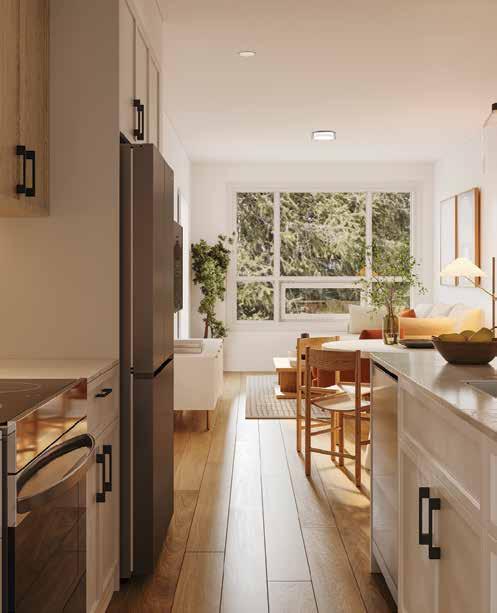
foot ceilings in most units create an added sense of spaciousness, rounding out a comfortable feeling of home.
The community boasts access to multiple nearby shopping centres, such as the Aspen Landing Shopping Centre, scenic mountain views and familyfriendly parks. And, its location near the city’s western edge makes access to the mountains a breeze. Perfect for outdoorsy types, each building also comes equipped with a dog wash station and bike storage area.
“One thing that makes our site unique is that Aspen Village is poised to become the city’s next premier neighbourhood. Aspen Village is more than just a place to live — it’s a complete lifestyle destination,” says area sales manager A.J van der Linden. “Designed to be the heart of the Springbank Hill community, it blends residential living with boutique retail, wellness spaces and everyday conveniences, all within a master-planned, pedestrian-friendly setting.”
Wellness is another primary element of the community. In addition to fitness and yoga facilities, the urban village will feature convenient and essential
amenities such as a future grocer, pharmacy, daycare and café, all within walking distance.
With over 35 years of experience building homes in Western Canada, Vesta Properties is a trusted name in the homebuilding industry. Having built more than 7,000 homes, the company prides itself on a commitment to quality craftsmanship, innovative design and exceptional value. And Aspen Village is no exception.
The community is just minutes away from Stoney Trail, making any quadrant of the city reachable within a 20-minute drive. For those looking to escape the city, hiking, camping and mountain biking opportunities are nearby, including Bragg Creek, just 25 minutes away.
“The community is easily accessible by car, foot, bike or transit — it’s built to connect people to services, nature and each other. With dynamic public spaces and thoughtfully integrated amenities, it’s set to become the go-to hub for social connection, local shopping and inspired urban living in Calgary’s sought-after west end,” says van der Linden.
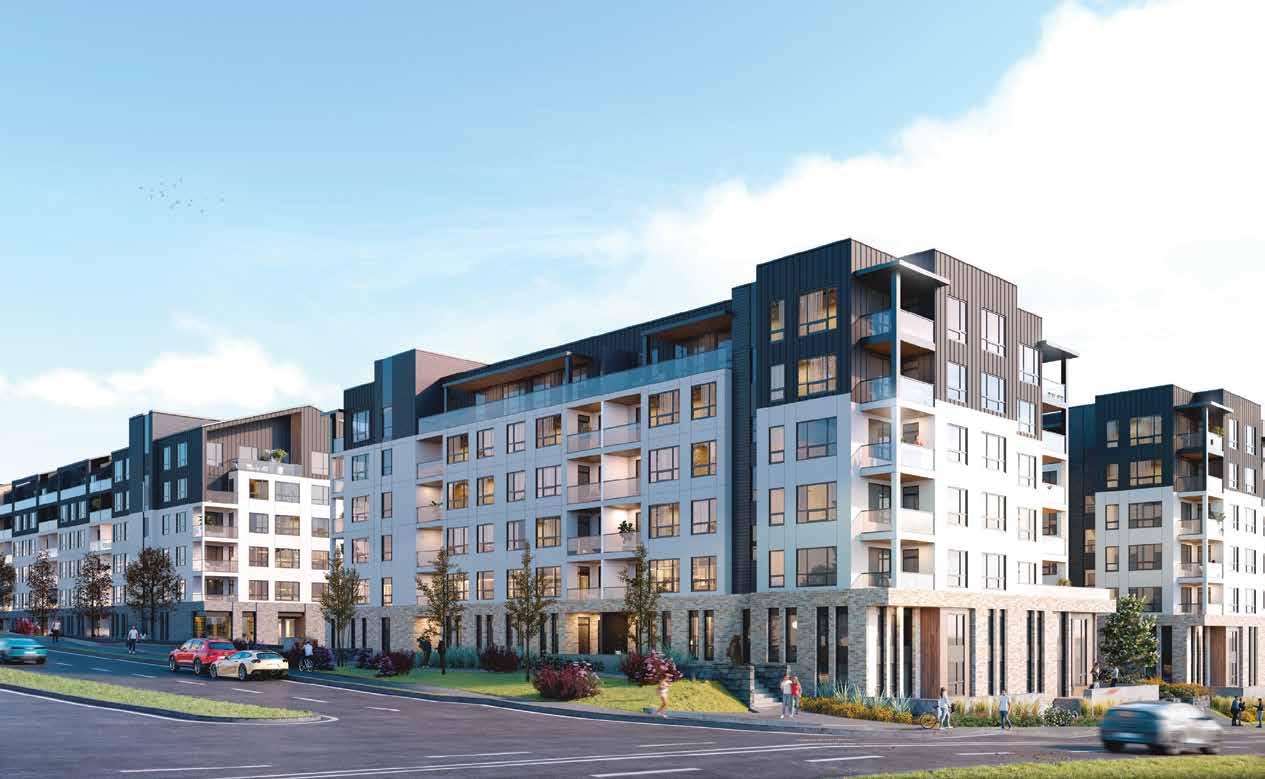
Experience modern living at Aspen Village, a 13-acre master-planned community in Springbank Hill, one of SW Calgary’s most desirable areas. Developed by Vesta Properties, this vibrant neighborhood features 1,200 homes across 15 six-storey condos, with boutique shops, cafe, and businesses at its core.
Choose from 1, 2, and 3-bedroom condos and loft-style townhomes, designed with clean lines, natural light, and private covered balconies. Walkable paths, tree-lined streets, and lush courtyards create a true village feel.
Starting from the $300’s – Aspen Village is where nature, design, and community come together.
VISIT OUR SHOW-SUITES TODAY!
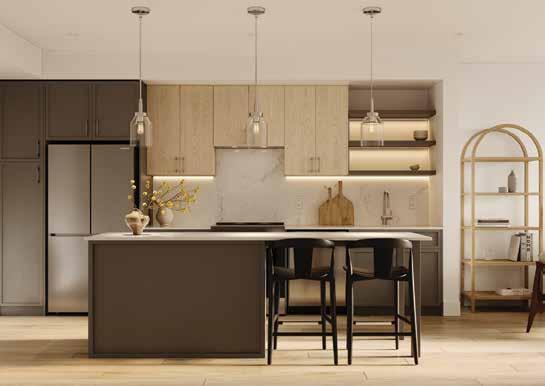
Residents will thrive in Calgary’s first garden-to-table community.
Many communities claim they are a place to grow, but none follow through on the promise quite like Rangeview, located in southeast Calgary. As the city’s first garden-to-table community, Rangeview offers a unique connection to the land and the neighbourhood, all within the city limits.
Rangeview’s distinctive approach to community and authentic living was recently recognized at the 2024 Calgary BILD Awards, where Rangeview took home the coveted Community of the Year award.
Officially opened in September 2021 by Section23 Developments, Rangeview fully embraces the ideas of agricultural urbanism, which integrates agriculture and food production into urban planning. Initiatives include homeowners’ association-managed community gardens, orchards, greenhouses and common areas aimed at fostering social connection and creating spaces for neighbours to meet, gather and connect.
“When people look for a community to call home, they’re searching for more than just a house — they want a place where they feel a genuine sense of belonging, safety and connection. A friendly, welcoming atmosphere with opportunities to build relationships through events, shared spaces or neighbourhood gatherings,” says Sarah Fehr, marketing manager at Section23 Developments.
Rangeview has been 100 years in the making. The land now known as Rangeview was once ranched and farmed by the Ollerenshaw family. The Ollerenshaws first settled in the area in 1923 and are also the founders of Section23 Developments.
True to its rural roots, the community has maintained an agricultural aesthetic by incorporating numerous styles
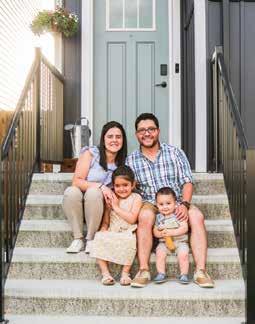
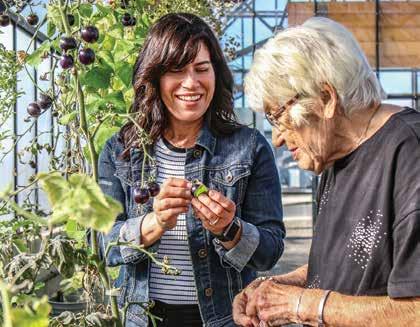

of farmhouse architecture into its development. The central community hub, known as the Harvest Hall, will be home to a variety of year-round programs and events, including a seasonal farmers’ market.
“Communities like Rangeview are on the forefront of reconnecting and educating people about the growth, processing and preparation of the food we eat, creating a more vibrant and prosperous community and a more resilient and culturally rich food system that can be passed down for generations,” says Fehr.
With home types including front attached garage homes, laned homes, townhomes and paired homes from award-winning builders, Rangeview offers a variety of
family-friendly options.
When complete, nearly 20 per cent of the community’s land will be open space. These public areas will include a constructed wetland, naturalized parks, neighbourhood parks, creative playground areas, schools and sports fields. Plentiful pathways and a west-east spine of green space that runs through the heart of the community round out the numerous invitations to the outdoors.
“Just as small-town Alberta communities have always been made stronger by the connections between neighbours and families, life in Rangeview includes the luxury of truly getting to know — and enjoy — the people around us. We’re rekindling an old-fashioned sense of community spirit that will make modern life infinitely happier,” says Fehr.
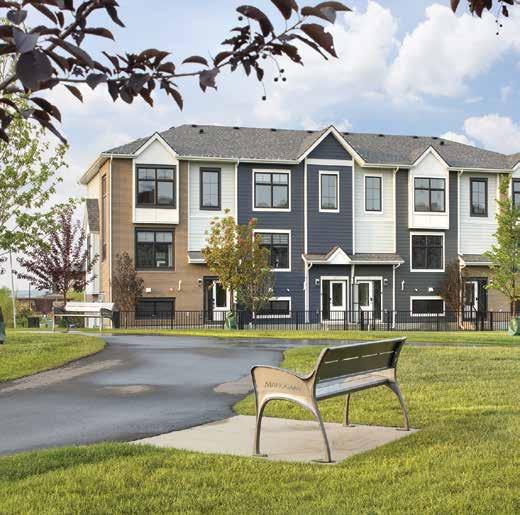


Homebuyers enjoy an affordable, maintenance-free lifestyle in Park Place of Lake Mahogany.
An unbeatable opportunity awaits firsttime homebuyers searching for a stylish, low-maintenance lifestyle in one of Calgary’s most sought-after communities.
Offering luxury townhomes in Lake Mahogany that combine elevated design, sustainability and unmatched amenities, Park Place by Jayman BUILT makes homeownership not only attainable but truly enjoyable.
For homebuyers, and especially first-time buyers, affordability is what sets Park Place apart. Every suite comes with Jayman’s Core Performance package, which includes solar panels, triple-pane windows, high-efficiency furnaces, HRV systems, tankless hot water heaters and more, so residents enjoy a sustainable lifestyle with lower energy costs. Not to mention, there’s significant savings with no GST for firsttime homebuyers of new homes.
“Having no GST has had a great reaction around Park Place. We have seen many first-time buyers throughout the project and even more since the no-GST announcement,” says Jordan D’Haese, sales manager for Jayman BUILT MultiFamily. “We’ve helped many buyers hit their green goals just by moving in. And the monthly savings are something
everyone appreciates.”
Park Place’s maintenance-free lifestyle also allows homeowners to skip seasonal chores that require the lawnmower and snow shovel.
“Your home always looks great and is taken care of,” says D’Haese. “You never have to think about landscaping, window washing or outdoor upkeep.”
Located directly on Mahogany’s 13acre Central Green park, Park Place is a townhome community with a vibrant green space in its backyard. Just steps from their front doors, residents can enjoy walking trails, pickleball courts, playgrounds, a community garden, benches, an amphitheatre and more.
Combined with exclusive access to Calgary’s largest freshwater lake, 22 kilometres of pathways and proximity to both Westman Village and the Urban Village’s restaurants, shops and services, Park Place delivers the lifestyle of an urban centre but with the serenity of living in the suburbs.
Park Place townhomes are designed with extravagance and the environment in mind. Several suites offer two- and threebedroom layouts with attached garages, solar panels and five-piece spa-inspired ensuites that turn daily routines into moments of indulgence.
“They’re an elevated product compared to other townhomes in the area,” says D’Haese. “People are proud to live here, and it shows.”
Beyond the finishes and features, Park Place fosters a warm, active community that encourages outdoor adventure, family togetherness and connectivity.
“It’s family-friendly, dog-friendly, and people are embracing the lifestyle,” says D’Haese. “Residents walk the park in the evening, kids play during the day — it’s a vibrant, connected space.”
Whether you're a young professional looking for modern amenities without the downtown congestion, or a growing family seeking access to parks, playgrounds and the lake, Park Place of Lake Mahogany offers a lifestyle few communities can match, particularly when it comes to affordability.
Find your move-in-ready home at Park Place, and see how luxury can be attainable no matter what phase of life you may be in.



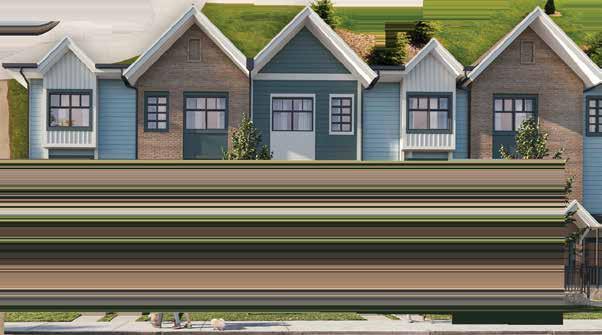
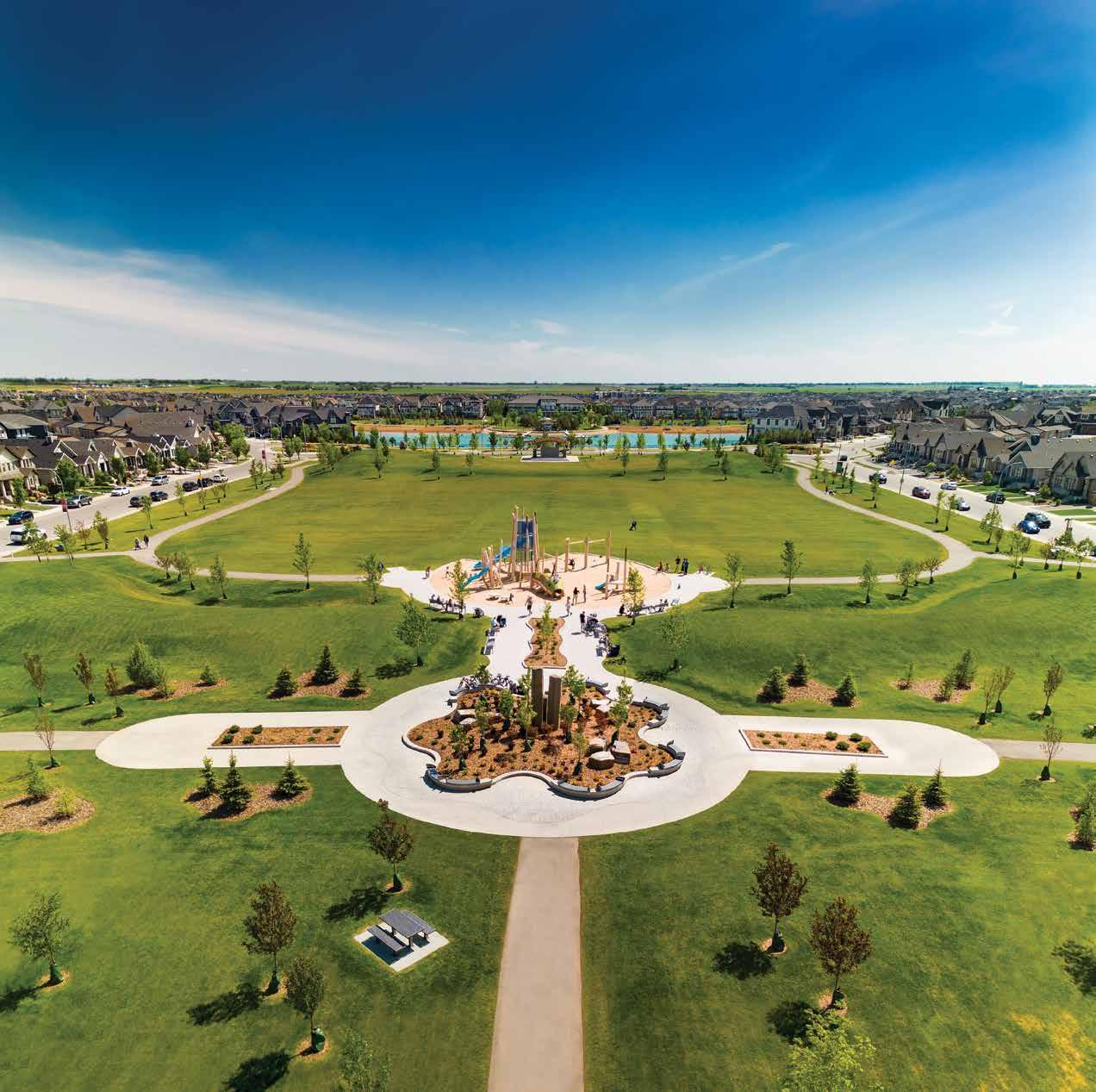

The Fireside Homeowners’ Association and Calbridge Developments invest in active living with a new skatepark and vibrant community vision.
As the town of Cochrane continues to grow, the community of Fireside stands out for its blend of small-town charm, mountain views and a strong commitment to outdoor living.
Originally launched in 2011, Fireside was carefully chosen by Calbridge Developments for its proximity to the mountains, extensive trail systems and the character the Cochrane area brings to the table.
Calbridge Developments has spent nearly 15 years shaping the Fireside community into a destination where nature, family and connections are at the forefront.
“We understood that Fireside had everything we needed to make it an exceptional place to live,” says Edmundo Azuaje, manager of marketing and communications at Calbridge Group. “There is no other place that highlights all that Alberta has to offer better than Fireside.”
Fast forward to today, Fireside has become a vibrant hub. Residents benefit from two schools, a growing network of pathways and parks, commercial amenities and a diverse range of housing options for every stage of life.
SKATEBOARDING TOGETHER
This fall, the community will unveil its newest feature — a skatepark designed specifically for beginners and families with young children. Spearheaded by the Fireside Homeowners’ Association in partnership with Calbridge Developments, this is Cochrane’s second skatepark and the only one built for beginners, filling a much-needed gap.
“The only existing skatepark in town is geared toward more advanced users,” says Azuaje. “This new skatepark is beginner-friendly and provides a safe,
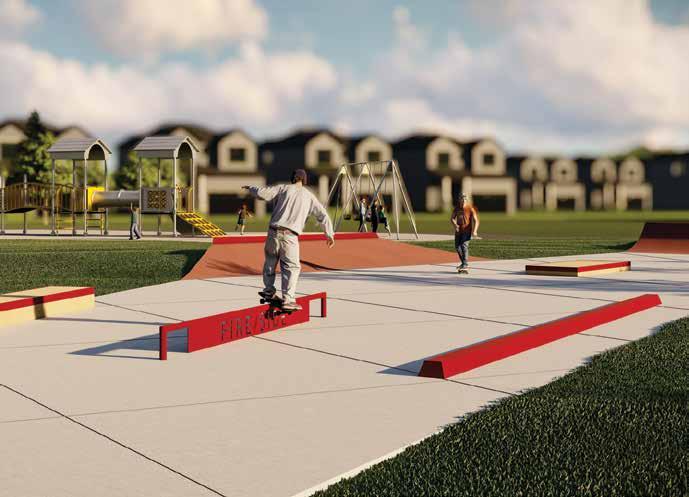
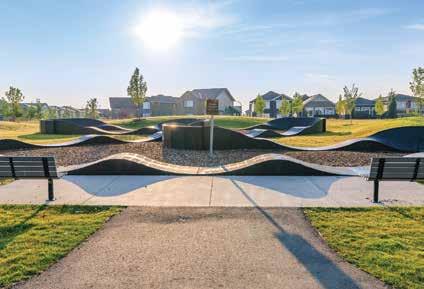
welcoming space for people of all ages to get involved in the sport, which has really been growing in popularity.”
The skatepark, which is set to debut this October, will be located in Fireside’s existing central park between the playground and the pump track, creating a dynamic zone for kids, teens and families to gather and be active.
“We’ve had residents tell us how excited they are to have a skatepark so close to home, and the Town of Cochrane has been incredibly supportive,” says Azuaje. “It’s been great to see the enthusiasm.”
Looking ahead, Calbridge plans to continue enhancing the community with additional green spaces, new playgrounds and a large off-leash dog park set to open in the coming years. The development
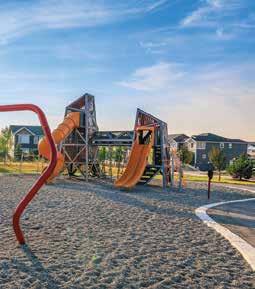
of Fireside will be ongoing for the next six to eight years, and the vision remains centred on building a connected, livable community.
Housing options in Fireside reflect an inclusive approach, with current offerings ranging from all-inclusive street townhomes starting in the $500s for first-time buyers and downsizers, to larger single-family homes from the $600s, perfect for growing families.
“Fireside welcomes those who love adventure, regardless of their budget,” Azuaje says. “We’ve always offered a little bit of everything, and that’s part of what makes this place so special.”
With bold visions like the new skatepark and a commitment to constant improvement, Calbridge Developments is not just building a neighbourhood; it is building an active, healthy community.
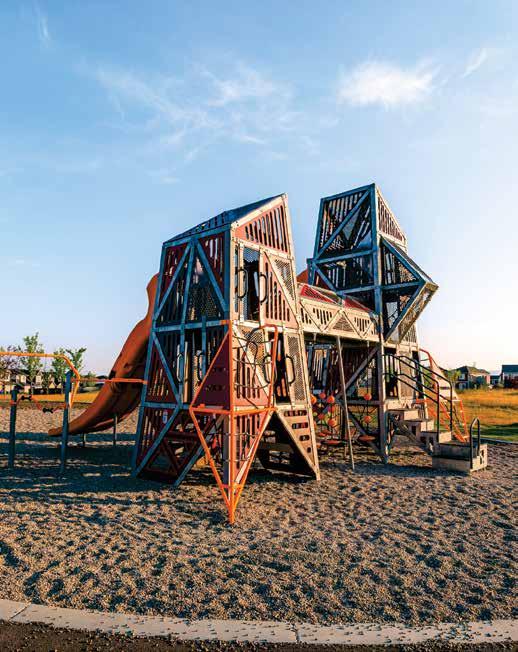



At Fireside of Cochrane, life moves at just the right pace—with scenic pathways, schools, and homes designed for every stage of life. Nestled between the mountains and the city, it’s a community built for adventure, connection, and lasting roots. Visit Fireside and find your perfect home today!


Qualico Communities offers new opportunities to love where you live.
For more than 70 years, Qualico Communities has been developing vibrant communities, helping residents across the Calgary region live with ease in neighbourhoods they love. Two of its recent developments, Vermillion Hill in southwest Calgary and Dawson’s Landing in Chestermere, are selling lots and homes, and there’s something for every lifestyle.
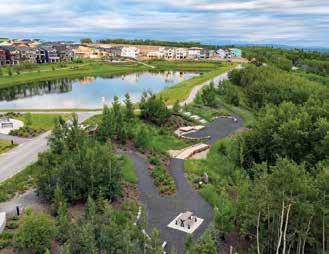
Perfect for outdoor lovers, Vermillion Hill is located on the doorstep of Fish Creek Park and Kananaskis. It also offers a quick and easy commute to downtown via Stoney Trail. Currently in phase four, many of the available lots back onto the field of the future school, and there’s a range of homes to fit your lifestyle, from laned homes, front-garage homes and townhomes.
“With easy access to essential amenities, breathtaking views of downtown Calgary and the Rockies, and a perfect blend of nature and city life, Vermilion Hill is buzzing with options that suit every lifestyle, especially for families looking to enjoy the best of both worlds,” says Rishika Dave, communications specialist for Qualico Communities.
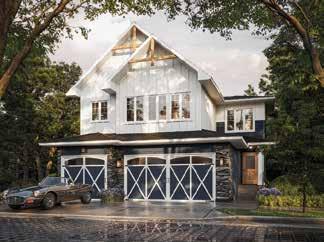
For those seeking a relaxed lakeside lifestyle east of the city, Dawson’s Landing in Chestermere delivers its own unique appeal. Now in phase six, buyers don’t have to wait for amenities in Dawson’s Landing as it’s now a movein-ready community. With access to walking pathways and almost 30 acres of protected wetland, Dawson’s Landing offers buyers a relaxed lifestyle where they can enjoy the outdoors. Semi-estate

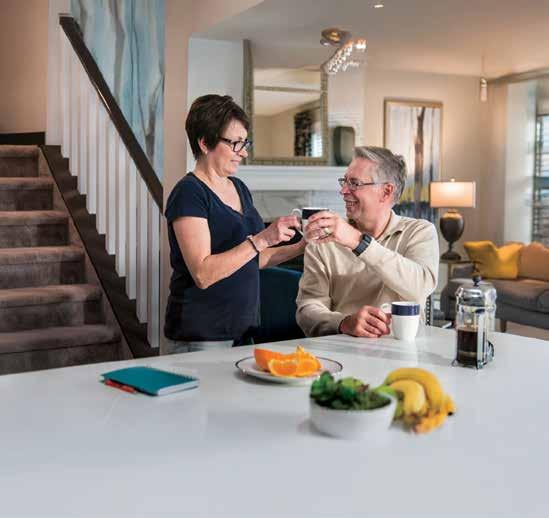
To learn more, visit qualicocommunitiescalgary.com.




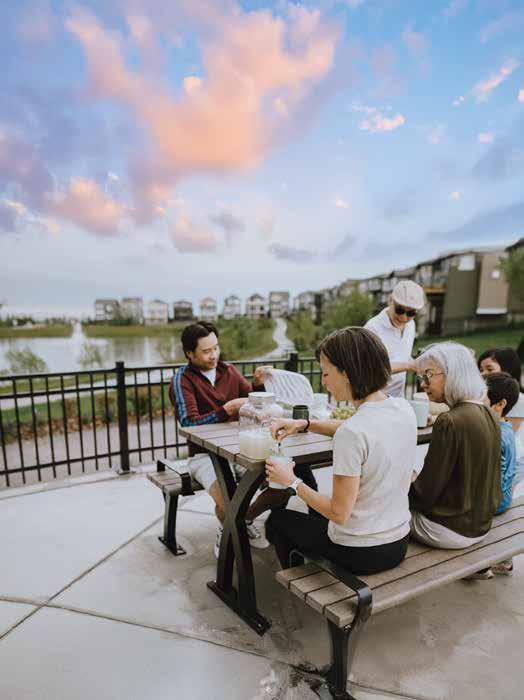






The newly opened community has exciting plans for the future.
Located just 20 minutes from downtown Calgary on the west end of Chestermere, Bridgeport is one of the latest developments east of the city, offering a perfect balance of serene lake living and contemporary urban convenience.
“Bridgeport is the gateway between the City of Calgary and the City of Chestermere. Local shopping centres, fine dining options, vibrant entertainment venues, as well as Chestermere Lake, are just a short drive away,” says Rishika Dave, communications specialist for Qualico Communities.
Bridgeport is now in phase one of its seven-phase development. The community is selling laned homes, laned duplexes and front-garage homes, starting in the mid-$500s. These homes will be
built by Shane Homes, Broadview Homes, Sterling Homes, NuVista Homes, Trico Homes and Truman You can work with Bridgeport's distinguished builders to create your dream home. Plus, you can check out the recently opened show homes for inspiration when you visit the build site.
When completed, this 251-acre development will feature over 1,840 homes, a public school site, commercial

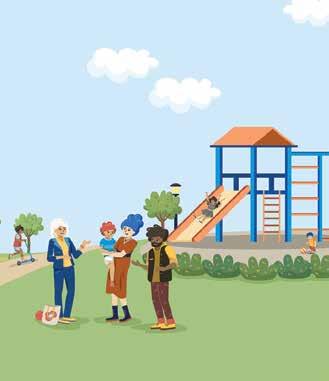
space, three parks and 12 acres of wetlands, including a stormwater pond. With its prime location, diverse range of home styles, vibrant amenities and natural landscapes, the new community of Bridgeport will have everything you need within reach.
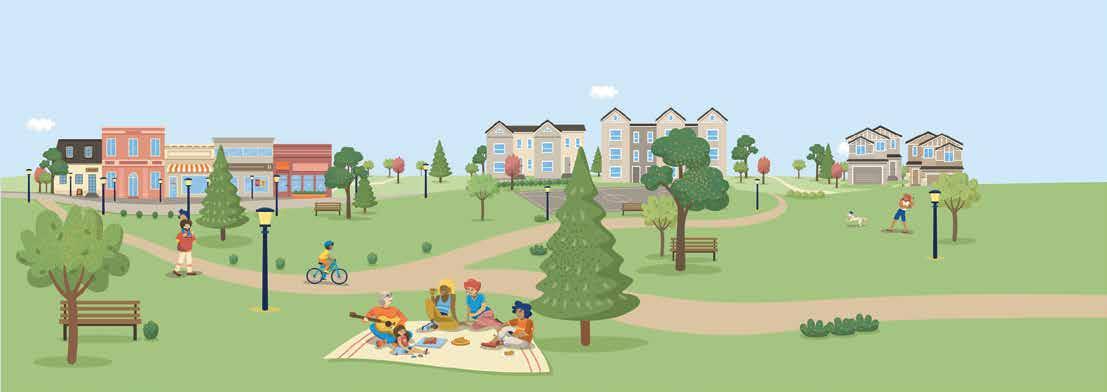






Nature, community and connectivity meet in one of Calgary’s newest communities.
If you’ve been looking for the perfect blend of city convenience and small-town charm, Genesis Land’s newest community in east Calgary is where your next chapter awaits.
Spread over 160 acres, the community of Huxley is a neighbourhood designed with a focus on connection, nature and lifestyle. Huxley will offer an impressive mix of 1,400 fully developed homes, walkable streets, more than 30 acres of green space and an innovative 12.5-acre wetland park, making it one of Calgary’s most livable new destinations.
Strategically located in east Calgary, Huxley will put homeowners close to a variety of amenities: East Hills Shopping Centre, Costco, schools and major routes like Stoney Trail and the upcoming Memorial Drive overpass.
“Whether it’s your morning commute or a last-minute dinner run, life here just works,” says Brendan McCashin, senior vice-president of land development at Genesis Land.
With walkability being one of its defining features, Huxley’s magic lies in its design, with trails linking residents to parks, gathering spaces and the central wetland.
“We’ve designed Huxley with community at its core — where neighbours become friends, kids can ride bikes to the park and families can build the home that fits their lifestyle,” says Ryan McKenzie, senior development manager with Genesis Land.
The community’s wetland park is not only an environmental feature but a gathering place, complete with picnic areas and walking paths that encourage outdoor adventure and spontaneous connections.
“It’s a beautiful, functional space that reflects our commitment to thoughtful design and preserving the land’s natural
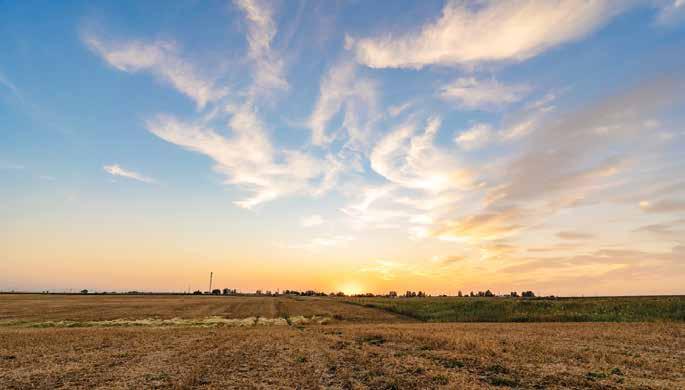
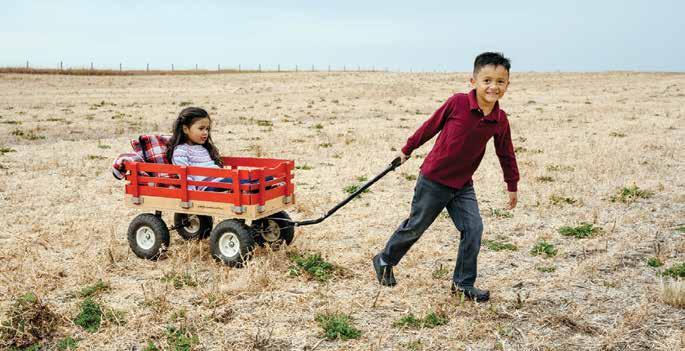
character,” says McKenzie. “It’s all about creating a community where people feel comfortable, active and connected.”
From first-time buyers to growing families, Huxley’s variety of home options makes it easy to find your place and stay for the long term.
Partnering with Broadview Homes, Genesis Builders Group and Trico Homes, Huxley offers a variety of housing options and styles, including prairie, farmhouse and craftsman. Starting in the mid-$500s, buyers can choose from zero-lot-line front garage and laned homes, as well as duplexes, making it easy to find the right fit, whether you are a first-time homebuyer or looking for a forever home. “We’ve planned this mix intentionally to give our buyers choice, flexibility and the opportunity to grow within the community,” says McCashin.
Huxley also features four local neighbourhood parks and a planned 11-acre school site with a soccer field and baseball diamond, ideal for both growing and prospective families. With everything from outdoor play to nearby daily conveniences, Huxley delivers on its promise of “living closer to what you love.”
Genesis Land welcomes everyone to a grand opening celebration Sept. 27 from 1 to 5 p.m. to tour six stunning new show homes, enjoy free food and entertainment, and enter to win door prizes. Whether you’re curious about east Calgary or already looking for your next move, this is the perfect opportunity to see what Huxley has to offer.
It’s time to discover Huxley — where the city meets connection, and your next chapter begins.






Elevating luxury condo living in Calgary’s University District.
Magna by Jayman BUILT is redefining upscale condominium living in Calgary’s award-winning University District.
These maintenance-free, full-concrete homes offer unmatched privacy, long-term durability and virtually soundproof comfort in one of the city’s most walkable and amenity-rich communities.
“Magna is the only for-sale concrete construction project in University District,” says Jordan D’Haese, sales manager at Jayman BUILT Multi-Family. “It’s already drawing buyers from woodframe buildings who want superior sound reduction, luxury and peace of mind.”
Each suite features Jayman’s highest level of finishings to date — Häcker German kitchens, built-in premium appliances and floor-to-ceiling windows
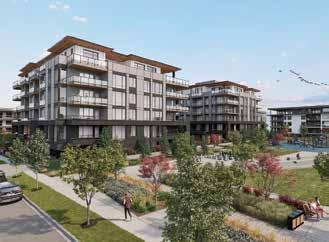
that blanket the space with natural light. Penthouse suites offer even more, including home automation, upgraded cabinetry and top-tier appliances. And, with generous floor plans averaging 1,300 square feet with spaces as large as 2,500 square feet, buyers can enjoy the space of a single-family home with the convenience of condo living.
Like many Jayman developments, maintenance-free living makes Magna ideal for both downsizers and busy professionals. Residents will not have to


worry about snow removal or mowing the lawn, with the “lock-and-leave” lifestyle in a beautifully maintained property. “It’s worry-free ownership that still offers pride in where you live,” says D’Haese.
At the doorstep of Magna, University District buzzes with shops, restaurants, parks and services, all within walking distance.
Show homes will debut this fall, boasting the grandeur, quality and livability of the Magna community. Buyers can move in spring 2026.
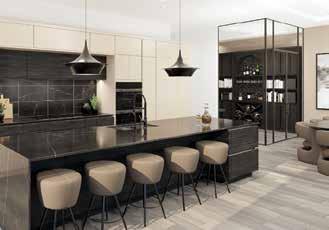





Luxury downsizing in Lake Mahogany has never looked better.
Downsizing without compromising — that is the rare opportunity homebuyers will find at The Streams of Lake Mahogany by Jayman BUILT.
The estate condominiums at The Streams deliver maintenance-free, single-level luxury living in Calgary’s Lake Mahogany community.
With only six suites per building and semi-private elevators, every home at




The Streams feels like a private retreat.
“You’ll only ever have one neighbour on your floor,” explains Jordan D’Haese, sales manager for Jayman BUILT Multi-Family.
Inside, the spacious layouts include two bedrooms, some including dens, fivepiece ensuites, expansive living areas and double-attached garages with full-width driveways. Each suite also offers large terraces featuring park or lake views.
Designed with downsizers in mind, the community provides a calm, social atmosphere with meandering streams, fire pits, barbecue spaces and seating areas to enjoy with family, friends or connect with fellow residents. More than 40 per cent of the community features landscaped green space, and there’s full access to Lake Mahogany, with proximity to the South Health Campus, Seton






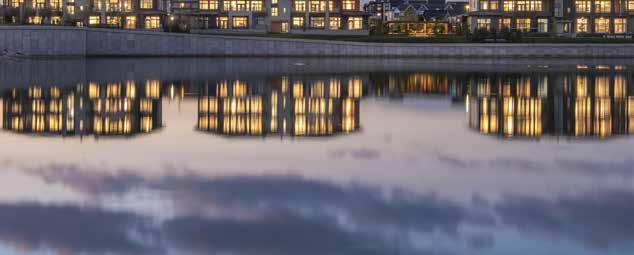





YMCA and major routes like Stoney and Deerfoot Trail.
For buyers eager to settle in, move-in-ready homes come with designer-selected finishes and Jayman’s full-service approach that includes an in-house mortgage, realty and Gold Key maintenance, all ensuring a seamless transition.
“The Streams feels like a secluded oasis within an amenity-rich community,” says D’Haese.
The Streams of Lake Mahogany is the lifestyle you’ve been waiting for.
With private beach club access, countless amenities and no maintenance, you can move to a better way of living—in Calgary’s last lake community.
1,705 - 2,053 SQ.
































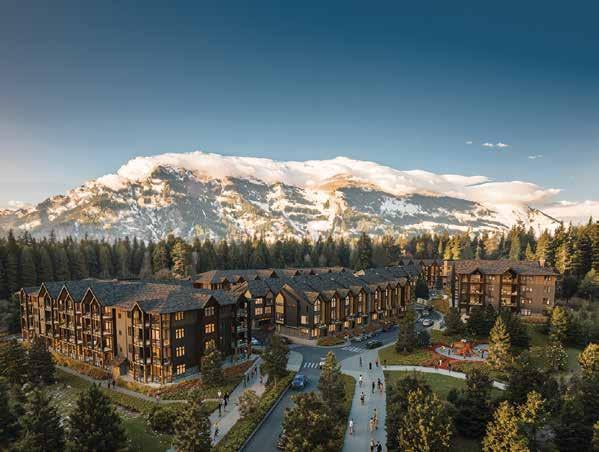
Homebuyers find attainable luxury in one of Canmore’s newest communities.
West of Calgary in the heart of the Bow Valley, Altitude at Three Sisters Mountain Village is redefining what it means to own a home in Canmore.
Developed by award-winning home builder Logel Homes, this new community pairs stunning Rocky Mountain scenery with urban convenience, delivering an unbeatable blend of lifestyle, luxury and affordability.
Located on Cascade Drive, less than 10 minutes southeast of downtown Canmore, and next to the emerging Gateway retail district, residents at Altitude enjoy the convenience and proximity of an IGA grocery store, future restaurants, shops and services, offering all the essentials without sacrificing the 360-degree vistas of the Rocky Mountains.
“Over many years, our customers have told us that A+ locations are key when deciding to move into a condo,” says Reilly LePage, director of sales and marketing at Logel Homes. “Altitude continues this initiative by being steps from the Gateway amenity area. It’s the perfect combination of mountain escape without having to compromise on amenities and, ultimately, convenience.”
With real estate values in Canmore often out of reach, and continuing to climb, Altitude represents an attractive,
attainable investment.
“As Gateway is under development, it provides immense future value to those purchasing now,” affirms LePage.
At Altitude, Logel Homes delivers affordable ownership with flexible floor plans starting in the mid-$400s.
“Rather than offer solely 1,000-squarefoot-plus floor plans, which is common in Canmore, we have floor plans ranging from 476 to 1,398 square feet with over a dozen plans to choose from,” LePage says.
Customization is a key feature at Altitude. With more than 2,000 design options and dedicated appointments with interior designers, buyers can personalize their home from top to bottom.
“This level of customization is typically seen in custom homes with high price tags,” says LePage. “Homeowners can make their home their own, putting their stamp on every corner of their condo.”
Altitude’s diverse selection of floor plans caters to full-time residents, weekenders and everyone in between. Options include one- to three-bedroom layouts, many with thoughtful extras, like oversized balconies
to enjoy the mountain views.
“We can satisfy the needs and wants of pretty much anyone looking for a home,” LePage says. “Some key factors include underground parking and storage, solarready capabilities, EV charging stations and vaulted ceilings on the top floor.”
Optional finishes include full-quartz kitchens, gas ranges, stained oak cabinetry, engineered hardwood and elegant bathrooms, meticulously curated to feel modern yet timeless.
“No two condos will look the same, and that’s hugely important for our customers’ enjoyment and resale values,” says LePage.
Nature also plays a starring role in Altitude’s design with Nordic-alpine architecture and a municipal park connecting to Canmore’s scenic trail system. Residents also enjoy access to a private spa, including a sauna, fire pit and hot tub.
Early sales success has been strong, which LePage says reflects the project’s broad appeal.
“We’ve seen a mix of our typical buyer types — first-time homebuyers, rightsizers and recreational property owners, which is a huge win for us and the Canmore community,” he says.
For those seeking luxury, lifestyle and location without compromise, Altitude at Three Sisters Mountain Village is a rare opportunity to live and play in a mountain paradise.
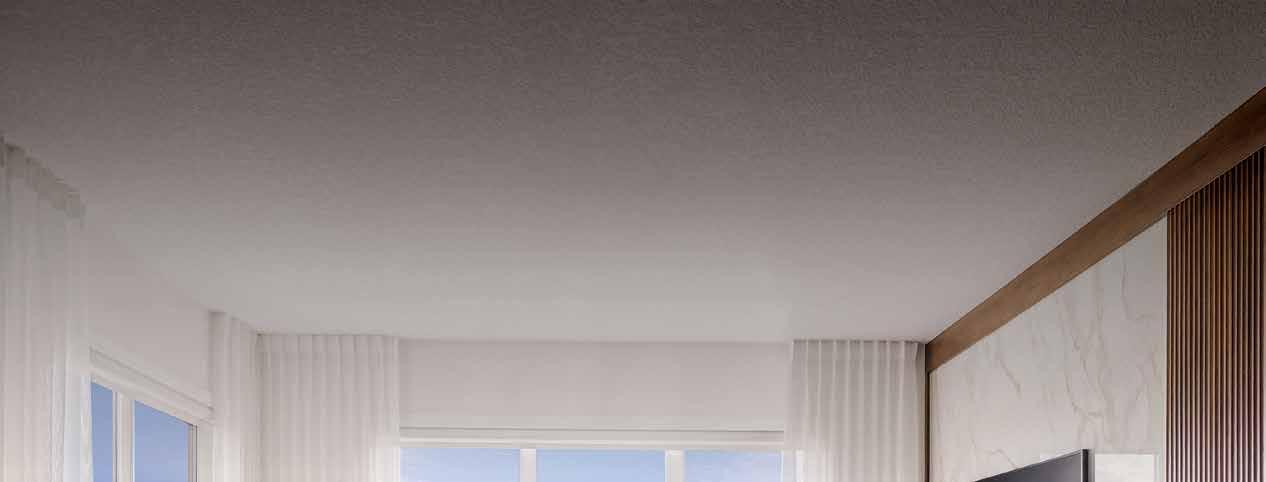
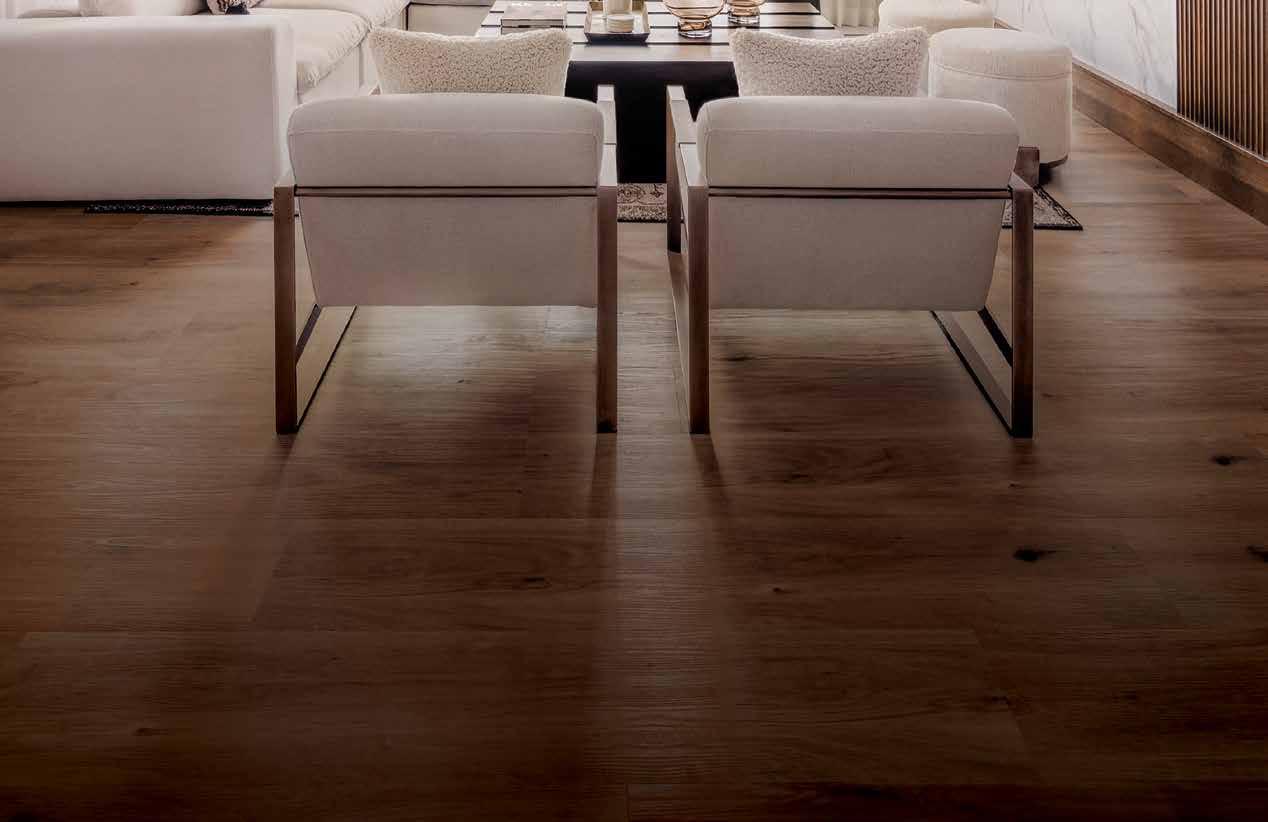
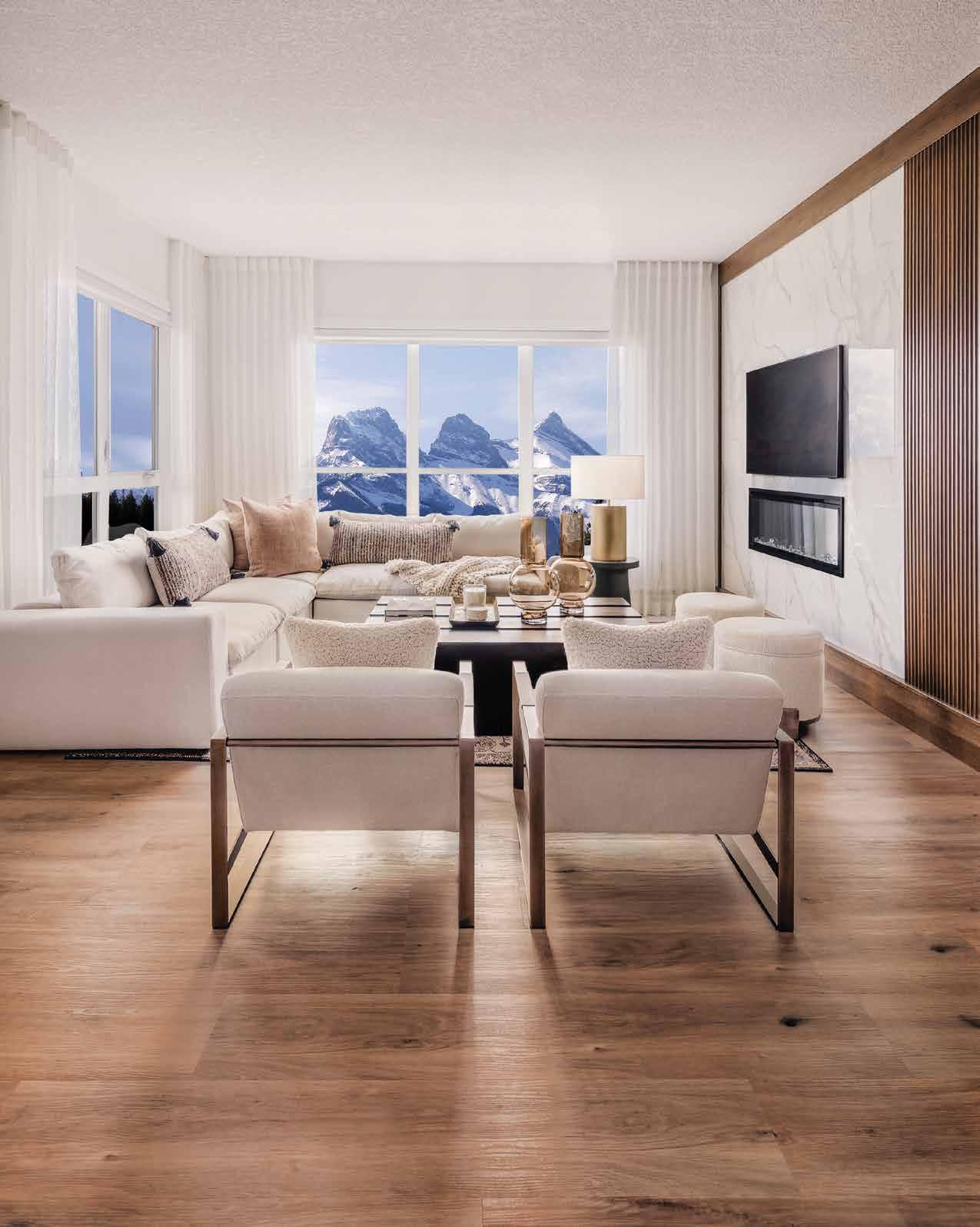
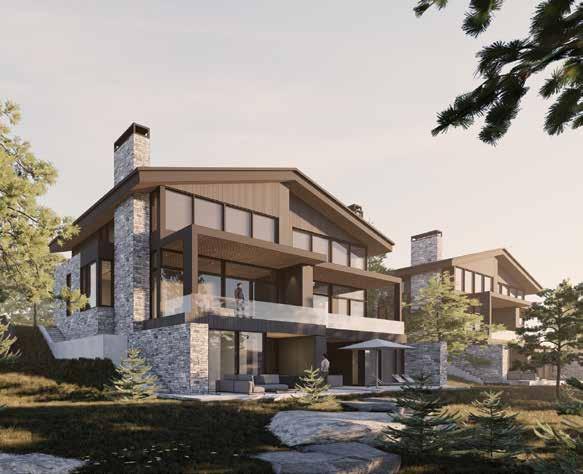
Unveiling the next chapter in elevated alpine living at Revelstoke Mountain Resort.
There’s a new energy in Revelstoke, B.C. that speaks to bold vision, timeless beauty and a community redefining mountain living.
Revelstoke Mountain Resort (RMR), a world-class ski destination located just 10 minutes south of downtown Revelstoke, is ushering in an exciting new era of thoughtfully crafted, adventure-rich real estate. Launched in April 2025, RMR is offering exclusive pre-sales of limited product in the Benchlands Residences and Mountain Road Estates Neighbourhoods — and this is just the beginning. With a full launch planned for December, this next phase brings a bespoke collection of townhomes, duplexes, condos and estate lots, all conceived to complement Revelstoke’s rugged elegance and fourseason lifestyle.
Located four and a half hours west of Calgary, Revelstoke has long drawn outdoor enthusiasts with its legendary powder, epic terrain and authentic mountain-town charm. The resort is now attracting global attention as one of North America’s premier year-round alpine destinations.
“Revelstoke Mountain Resort was
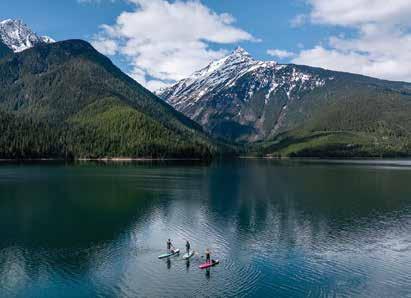
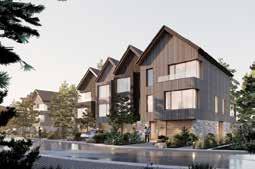
always envisioned as more than a ski destination — it’s a living, breathing mountain community,” Dominik Hubaczek, senior real estate specialist with RMR. “This is the first real estate release from the resort in over a decade, and we’ve timed it with purpose. Interest has never been stronger.”
The Benchlands Residences and Mountain Road Estates embrace mountain-modern architecture inspired by Scandinavian minimalism and alpine authenticity. Oversized windows and expansive outdoor spaces frame breathtaking views, while natural materials anchor the homes to their surroundings.
Benchlands Residences, adjacent to the Cabot Revelstoke golf course set to open in 2027, offers privacy and a serene forest setting. Slopeside Mountain Road Estates delivers convenient resort access with panoramic vistas. Both neighbourhoods offer access to curated wellness and concierge services, short-term rental zoning and full-service property management through the resort.
Homeowners are invited to join the Revelstoke Mountain Club, a private, members-only alpine and social club that blends exclusivity with intergenerational connection. From ski valet and private lockers to a full-service club with pool,

wellness and dining, it offers unparalleled experiences and intimacy.
“What truly sets the Club apart is its holistic approach to lifestyle. Membership extends for three generations, enabling families to build a shared legacy. The Club isn't just about winter — it's an all-season haven,” says Hubaczek.
Members enjoy personalized adventures, priority booking at Cabot Revelstoke and Selkirk Tangiers Heli Skiing, as well as summer experiences like tennis, pickleball and padel courts at Williamson Lake. Paddleboarding, kayaking, hiking and campfire evenings are a further benefit at a private wilderness lake camp location.
Over the next decade, RMR’s vision includes vibrant new neighbourhoods, additional hotels, on-mountain amenities, expanded snowmaking, ski terrain, lifts and biking infrastructure, an enhanced resort village with retail and dining options, the Cabot Revelstoke golf course, plus a premium Nordic spa.
“There’s a sense of momentum — not just in the real estate market, but in the resort’s overall evolution,” says Hubaczek. “For buyers, it’s an opportunity to be part of something truly extraordinary.”
Pre-sales are now open.
Book a private consultation with RMR’s real estate team and visit revelstokemountainresort.com/own. revelstokemountainresort.com/own












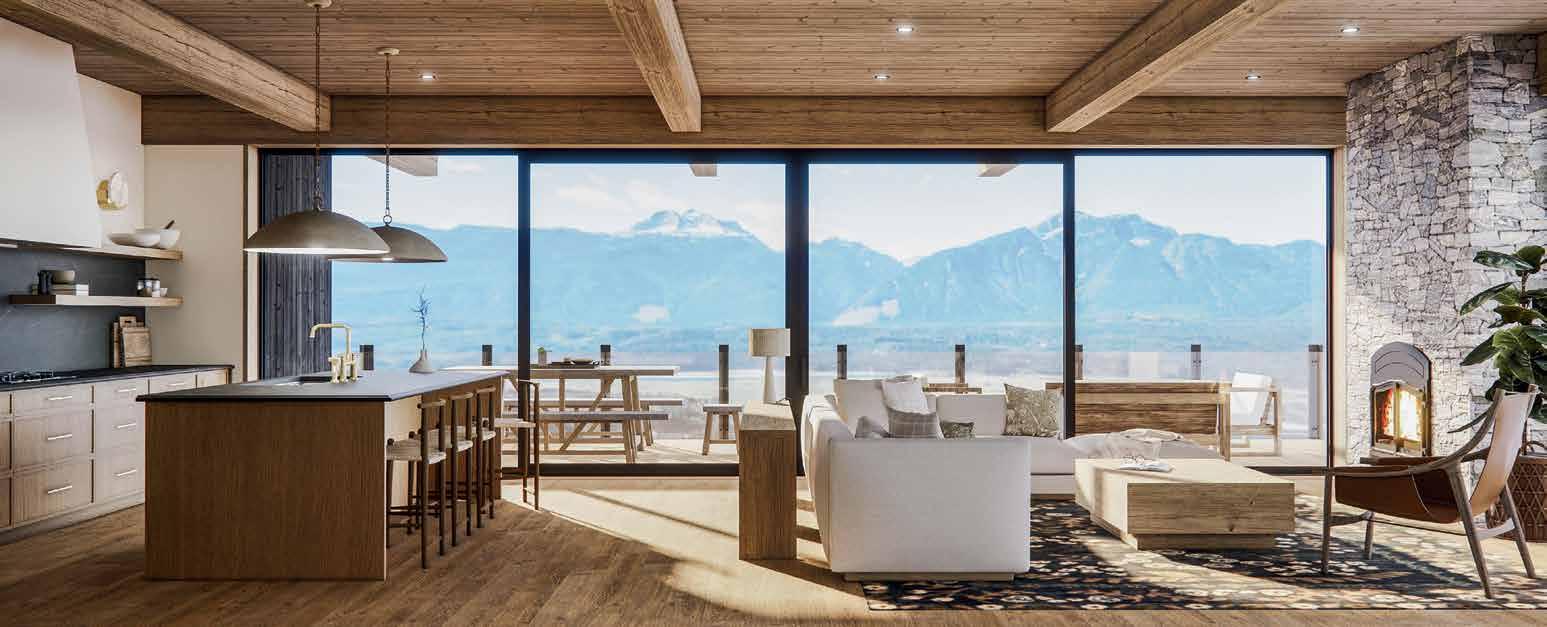


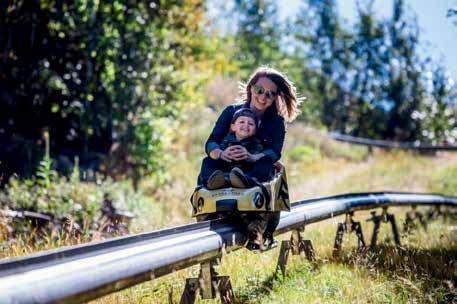
The Kwong family shares how their Japanese restaurant has changed over the years and continues to evolve.
ou might not guess that one of Calgary’s oldest Japanese restaurants is owned and operated by a Chinese family with no previous restaurant experience. But, Sukiyaki House has been a beloved anchor in Calgary’s downtown for 49 years — with Anna Kwong at the helm for the past 22.
This long-standing success isn’t by chance. Anna is the heart of the business and her children, Judith and Justin, have joined her in running the family restaurant, despite neither ever having planned to do so.
Anna’s journey with Sukiyaki House began in 1991 when she arrived in Calgary as a new immigrant from Hong Kong and stepped into the role of bookkeeper for the original owner’s restaurant group. Opened in 1976, Sukiyaki House operated on 10th Avenue S.W. when Anna joined the business.
Anna eventually found herself out from
behind the books and in the front of house.
“One host had quit, and the manager asked me to help during lunch and busy times,” she recalls. Although she had no restaurant experience, she quickly adapted and began assisting with front-of-house operations along with the bookkeeping.
In 2003, Anna took the leap of buying Sukiyaki House from the previous owners as she had wanted to run her own business. When she received a notice of demolition from the landlord, she took another leap and moved the restaurant to its current space on 9th Avenue S.W. in 2009.
Anna’s business savvy and willingness to take chances is why Sukiyaki House continues to
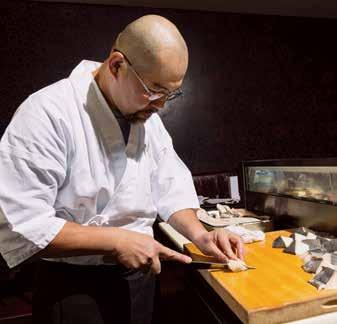
thrive today. Her kids credit the restaurant’s success to Anna’s unwavering high standards and her tenacity in steering the restaurant through evolving customer patterns. One example of those high standards is the appointment of chef Koji Kobayashi to lead the kitchen and entire back of house. An Osaka native trained in kaiseki — the pinnacle of Japanese fine dining — Kobayashi’s menu skillfully balances traditional and innovative dishes, and honours the seasonality of ingredients.
The current menu also reflects the shift in diners’ palates and knowledge of Japanese cuisine. Many Calgarians want good sushi and sashimi, and Sukiyaki House delivers, ensuring both quality and authenticity by flying in fresh fish direct from Japan. But, back in the day, it was about getting customers to try sushi at all.
The corporate lunch crowd of the ’90s needed to be enticed with deals to try Japanese cuisine.The Kwongs recall offering daily specials that paired sushi with tempura, steak, teriyaki chicken or other meat options. “Our regulars still talk about how, on Thursdays, Sukiyaki House would have a $6.50 sushi and steak combo,” says Justin.
“Before, most customers would only order rolls,” says Anna. “Now they will order more nigiri or sashimi, and look for fish from Japan.”
Judith and Justin are now integral to the Sukiyaki House management team, but no one in
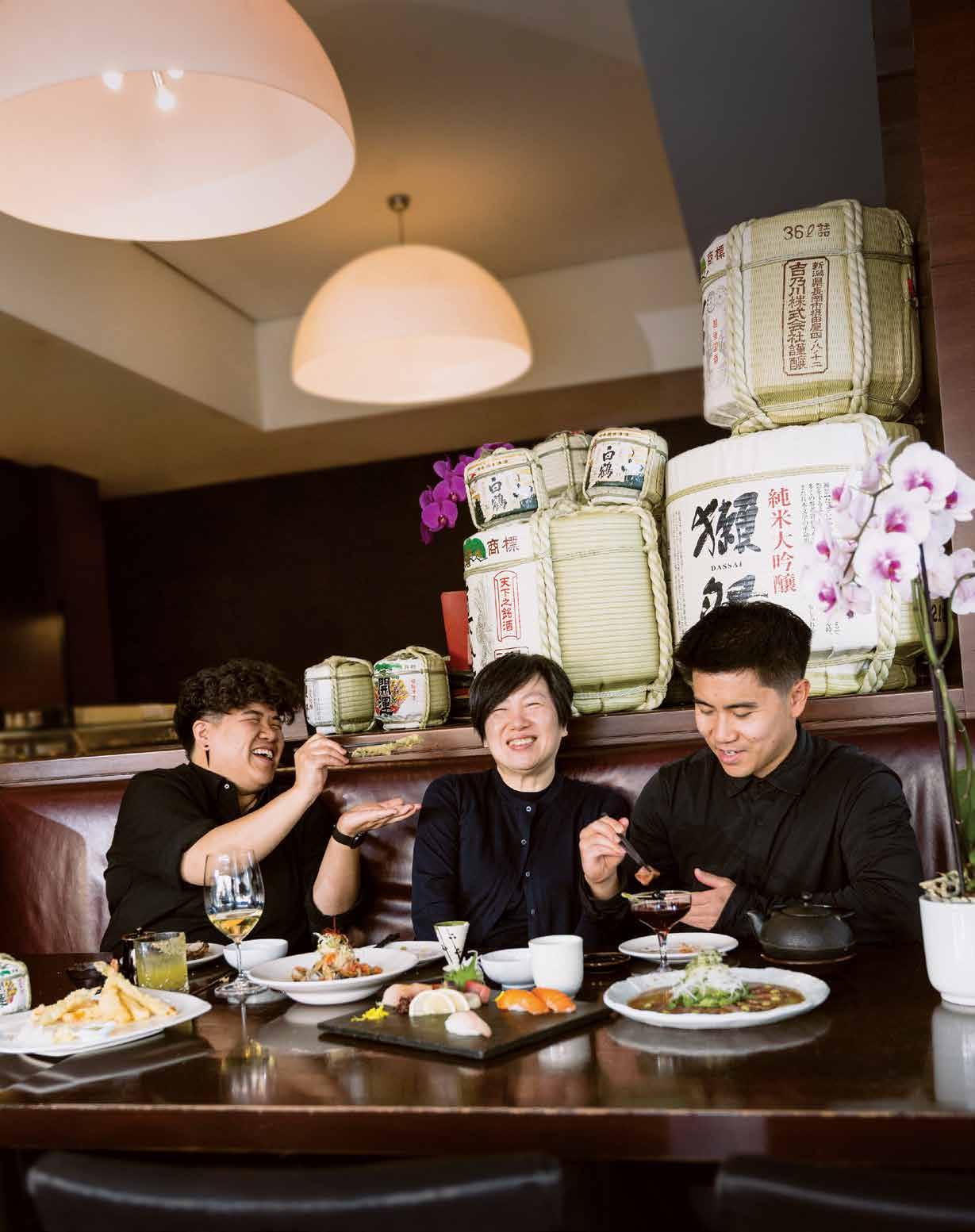
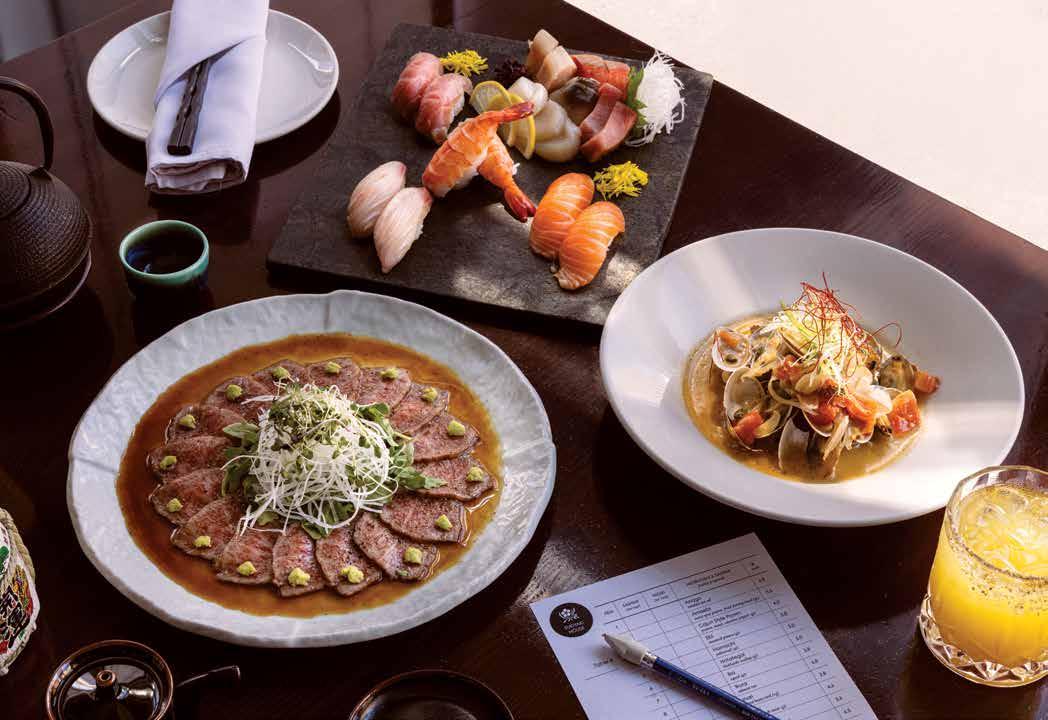
for 49 years — with Anna Kwong at the helm for the past 22. This long-standing success isn’t by chance. Anna is the heart of the business and her children, Judith and Justin, have joined her in running the family restaurant, despite neither ever having planned to do so.
the family planned for that to happen. They grew up sometimes doing homework in the back office and watching their mom at work, but, unlike many other children of restaurant owners, they didn’t work at the family business until adulthood.
Anna’s journey with Sukiyaki House began in 1991 when she arrived in Calgary as a new immigrant from Hong Kong and stepped into the role of bookkeeper for the original owner’s restaurant group. Opened in 1976, Sukiyaki House operated on 10th Avenue S.W. when Anna joined the business.
After high school, Judith wanted to get hospitality industry, and approached her mom about working at Sukiyaki House. Anna declined her request. She wanted her children to pursue post-secondary education instead, and she felt working so closely together wouldn’t be great for family dynamics.
In 2009, Anna finally acquiesced, and Judith joined the Sukiyaki House team. Justin came aboard in 2011, working part-time while completing his university studies in commerce.
Anna eventually found herself out from behind the books and in the front of house. “One host had quit, and the manager asked me to help during lunch and busy times,” she recalls. Although she had no restaurant experience, she quickly adapted, and began assisting front-ofhouse operations along with the bookkeeping.
and her tenacity in steering the restaurant through evolving customer patterns. One example of those high standards is the appointment of chef Koji Kobayashi to lead the kitchen
“BEFORE, MOST CUSTOMERS
WOULD ONLY ORDER ROLLS.
“BEFORE, MOST CUSTOMERS WOULD ONLY ORDER ROLLS.
NOW THEY WILL ORDER MORE NIGIRI OR SASHIMI, AND LOOK FOR FISH FROM JAPAN.”
NOW THEY WILL ORDER MORE NIGIRI OR SASHIMI, AND LOOK FOR FISH FROM JAPAN.”
Anna Kwong
Anna Kwong
and entire back of house. An Osaka native trained in kaiseki — the pinnacle of Japanese fine dining — Kobayashi’s menu skillfully balances traditional and innovative dishes, and honours the seasonality of ingredients.
rolls,” adds Anna. “Now they will order more nigiri or sashimi, and look for fish from Japan.”
navigate social media and marketing, helping to bring attention to our restaurant.” A true community builder, Judith frequently collaborates with other bartenders and local businesses.
Judith and Justin are now integral to the Sukiyaki House management team, but no one in the family planned for that to happen. They grew up sometimes doing homework in the back office and watching their mom at work, but unlike many other children of restaurant owners, they didn’t work at the family business until adulthood.
After graduation, Justin brought fresh ideas to the restaurant, applying concepts from his business degree to improve operations and modernize processes with technology. Those changes proved invaluable during the pan-
In 2003, Anna took the leap of buying Sukiyaki House from the previous owners as she had wanted to own her own business. When she received a notice of demolition from the
demic, enabling the family to effectively pivot. “Without him, we wouldn’t be so current now. As far as the operational side, he’s taken us to the next level,” Judith says with pride. Meanwhile, Judith leveraged her media savvy to expand Sukiyaki House’s reach. Recognized for her talent in cocktail development and her collaborative approach, “Judith has changed our cocktail program,” says Justin. “She’s in tune with media and has helped us
The current menu also reflects the shift in diners’ palates and knowledge of Japanese cuisine. Many Calgarians want good sushi and sashimi, and Sukiyaki House delivers, ensuring both quality and authenticity by flying in fresh fish direct from Japan. But back in the day, it was about getting customers to try sushi at all.
Looking ahead, the family acknowledges challenges with rising costs, shortage of hospitality talent and workforce, and a culture of hype-driven dining that often results in fleeting trends. Yet, they remain steadfast in their commitment to the original values that keep customers coming back. “Mom has very high standards. That’s why our product is very consistent — she oversees everything,” says Justin. The siblings agree that the restaurant’s decades-long success is because of the focus on quality and hospitality instilled by their mother — which remains the foundation of their business.
After high school, Judith wanted to get into the hospitality industry, and approached her mom about working at Sukiyaki House. Anna declined her request. She wanted her children to pursue post-secondary education instead, and she felt working so closely together wouldn’t be great for family dynamics.
In 2009, Anna finally acquiesced, and Judith joined the Sukiyaki House team. Justin came aboard in 2011, working part-time while completing his university studies in commerce.
207 9 Ave. S.W., 403-263-3003 sukiyakihouse.com, @sukiyakihouseyyc
After graduation, Justin brought fresh ideas
THANK YOU TO OUR SPONSORS FOR ALLOWING US TO CELEBRATE CALGARY’S BEST DRESSED IN STYLE!



WHAT’S ON
BY ALANA WILLERTON PHOTOGRAPHY BY JARED SYCH
Calgary’s newest sandwich shops turn the lunchtime staple into hand-held showstoppers worthy of any table (or picnic blanket).
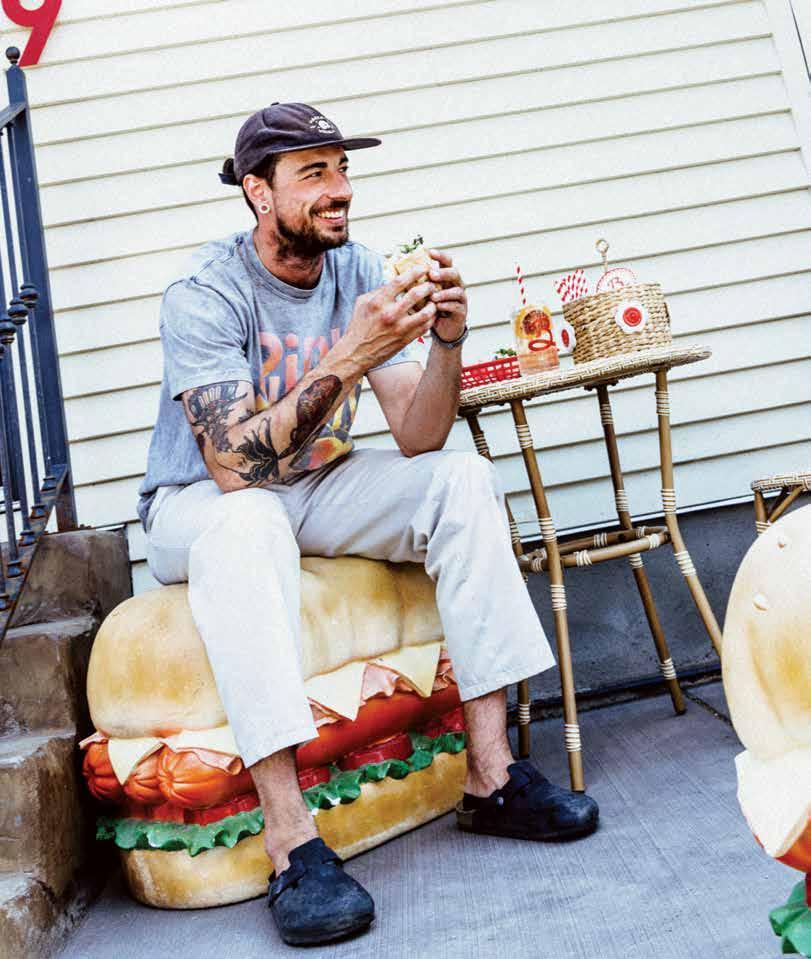
Few people have properly paid homage to sandwiches like Canadian musician and children’s entertainer
Fred Penner did in his popular children’s song, “Sandwiches” like so:
Sandwiches are beautiful, sandwiches are fine; I like sandwiches, I eat them all the time; I eat them for my supper and I eat them for my lunch; If I had a hundred sandwiches, I'd eat them all at once.
That may seem extreme, but really, what other dish brings together the best of all worlds quite like a sandwich?
There’s the chewy, crusty crunch of bread, the tender bites of protein and an endless amount of refreshing fillings and tangy sauces to bring it all together. Penner knew what he was talking about.
Calgary staples like Alumni and Spolumbo’s will never go out of style. But, when it comes to great sandwich shops, the more the merrier. The days of boring bologna are long gone — sandwiches are having a moment right now. Check out some of the new sandwich shops in town that deliver on style and flavour.
SANDWICHES: BONJOUR (TOP LEFT), TURKEYMOVE (BOTTOM LEFT & TOP CENTRE) MAMA MIA! (CENTRE), GREEN & GROOVY (TOP RIGHT), HOT & CHEEKY (RIGHT).
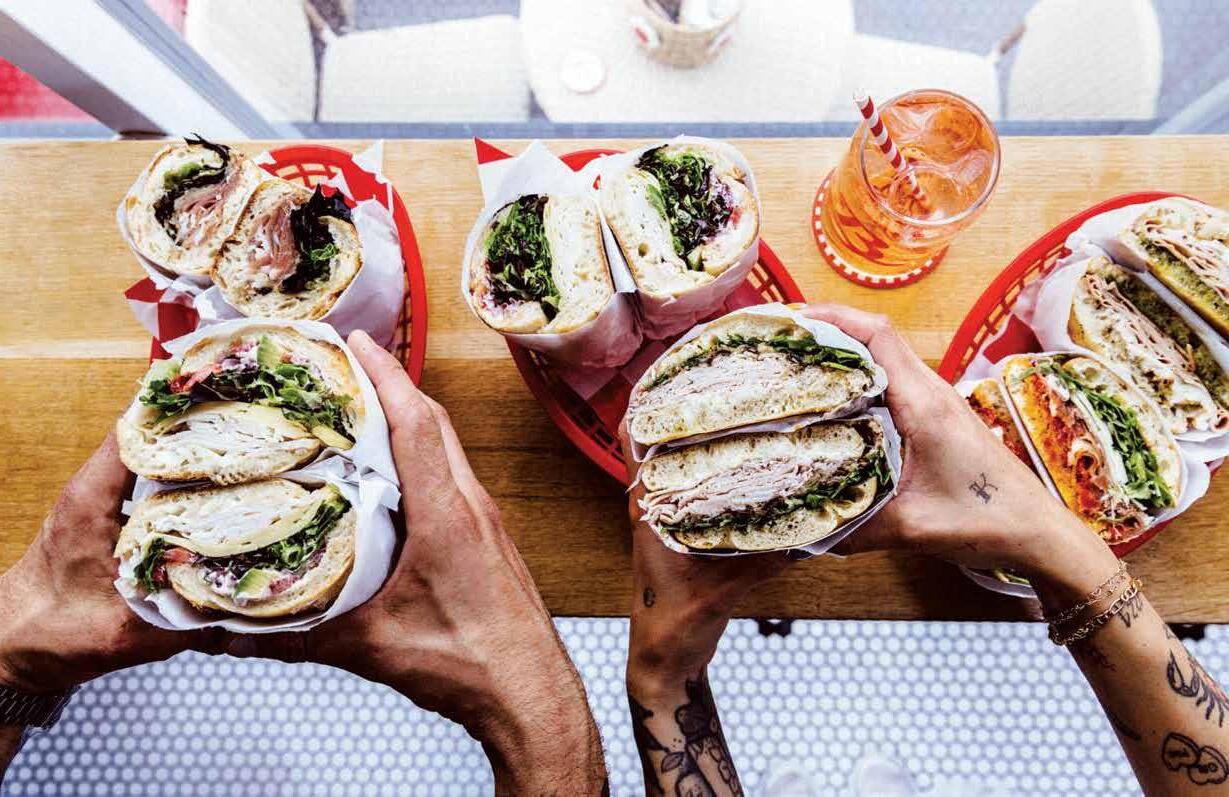
MOST POPULAR
SANDWICH
The Turkey Move on the French menu and the Hot & Cheeky on the Italian menu
MOST UNDERRATED
SANDWICH
The Mama Mia!

fter moving from Paris to Calgary, François Mion had difficulty finding the European-style sandwiches he used to enjoy back home. So, he decided to bring a taste of Europe to Calgary with Bonjour Sandwich Shop.
“From ... my experience in France and Europe in general, I’ve had some of the best sandwiches that I’ve ever had [there]. And it doesn’t need to have a whole load of sauce or a whole load of ingredients for it to be really tasty. Just simple, great ingredients are the key for a good sandwich, and this is really what I’ve tried to do here,” says Mion.
Decked out in cheerful red-andwhite checkered decor, Bonjour's menu is split into French-inspired sandwiches served on baguettes
and Italian-inspired sandwiches served on schiacciata, a Tuscan flatbread. There’s also a “buildyour-own” sandwich option.
Mion says many of the sandwiches embody classic European flavours, from the Parisian sandwich with cultured butter and Paris ham to the Green & Groovy, Bonjour’s take on a popular Italian sandwich filled with burrata, mortadella, honey, roasted pistachios and handmade basil pesto.
While the breads and some meats are sourced locally, many ingredients like the cheeses and other meats are imported from Europe to make the experience more authentic. The result is a sandwich that will have you saying “merci” from the very first bite.
1909 34 Ave. S.W. @bonjoursandwich.yyc
Celebrate the safe way with AGLC’s Best Bar None program.
Calgarians are no strangers to a night out on the town. From local concerts to bustling bars and happy hour hot spots, there’s no shortage of things to do for a good time out. In fact, Calgary is such a vibrant city it can be challenging to choose where to go. Giving a venue a quick Google search before you make plans to head out is a solid start to planning a great night. Read the reviews, check out the parking situation and see if it has any fun features you’re looking for. You should also keep safety in mind and consider factors such as whether or not the location makes it easy to get a safe ride home.
Alberta Gaming, Liquor and Cannabis’ (AGLC) Best Bar None (BBN) program makes it easy to find safe, high-quality venues. Multiple bars and entertainment venues across the city are accredited through BBN, distinguishing

them as establishments that hold safety and entertainment in the highest regard.
Many BBN-accredited venues use advanced ID scanners, some offer drink covers to prevent drink spiking or even randomly test unattended drinks, and staff are trained to not overserve.
Choosing a BBN-accredited venue ensures your next night out will be in an environment committed to responsible alcohol service and upholding strict safety standards. It’s as

easy as using AGLC’s Best Bar Finder tool and choosing the right fit for your night out.
“There are many options in Calgary, and this tool allows Calgarians to find the venue whose options are the most suitable for their enjoyment,” says Eric Baich, director of social responsibility at AGLC.

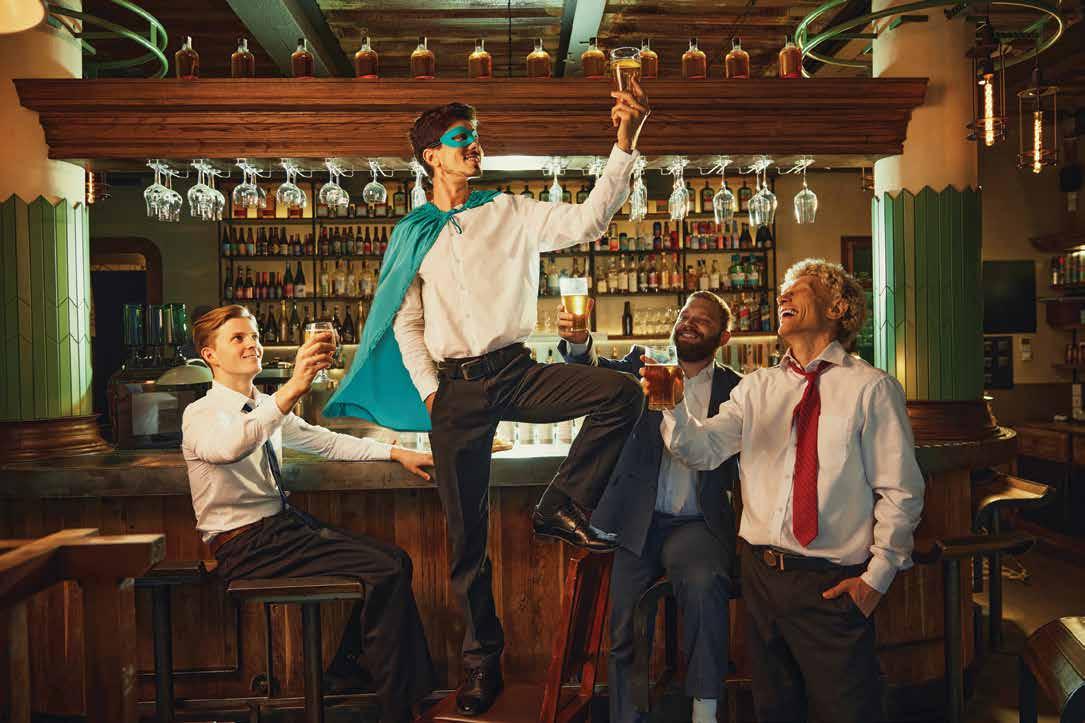
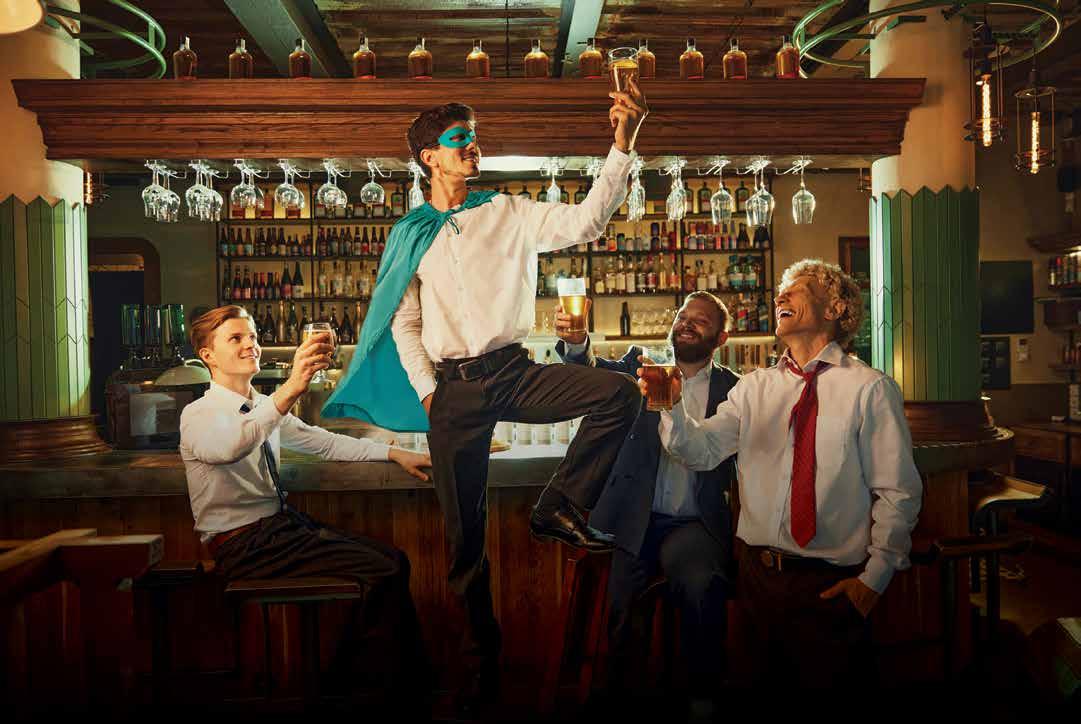
MOST POPULAR SANDWICH
Turkey Bacon Club
MOST UNDERRATED SANDWICH
The Buckin’ Brocc
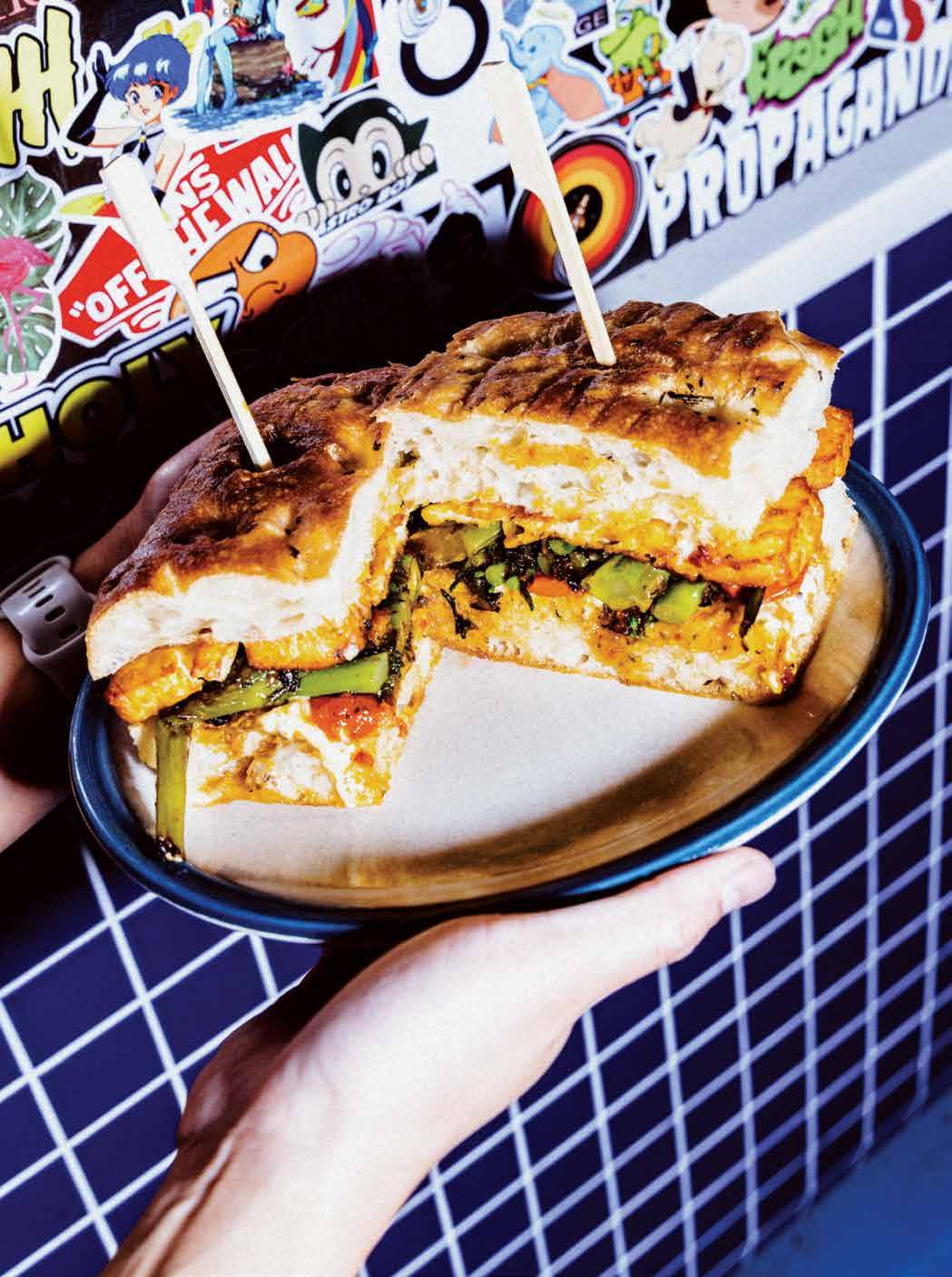
ister businesses
Super Variety, a new sandwich shop facing the main Inglewood strip, and Business & Pleasure (B&P), a small and sophisticated bar and restaurant in the space directly behind it, have a symbiotic relationship.
In February 2025, owner Brett McDermott (who is also behind spots like Our Daily Brett, Neighbour Coffee and Actually Pretty Good) and his team transformed
Neighbour’s Inglewood location into Super Variety. “We wanted to do sandwiches that you wouldn’t necessarily make at home — more like chef-driven sandwiches,” says McDermott. When Super Variety closes for the day on weekends and selected weeknights, B&P expands its operations into its dining space.
As the name indicates, there's a great variety on Super Variety's menu, from the prosciutto and fig sandwich to the Sunday Sub with beef meatballs. Many of the
sandwiches feature focaccia made in Our Daily Brett’s production kitchen. They can all be paired with one of the many creative cocktails created by B&P’s bartenders, wine, beer or alcohol-free drinks.
And, for those who miss popping into the former coffee shop in the morning, don’t worry — you can still get a breakfast club sandwich and cup of espresso here.
1327A 9 Ave. S.E., 403-300-1566, supervariety.ca
Sandwiches are a picnic must-have, so it makes sense that this idea is at the heart of one of Calgary’s newest sandwich shops.
Co-owners Yong Shin and Min Bang started operating Piknic Café out of a shared kitchen in 2023 with catering, delivery and wholesale services. In October 2024, they opened their bright, plant-filled café storefront in Brentwood. “We wanted to have something more
like a picnic environment. Especially during the winter in Calgary, it’s hard to go out for a picnic or any outdoor activities, so we just wanted to bring [a] green environment into our place,” says Shin.
The shop specializes in picnicinspired sandwiches that are bursting with colourful fillings. The convenient wrapping makes them easy to take on the go — like for a picnic in the park.
The team has incorporated Korean ingredients into the offer-
MOST POPULAR SANDWICH
The Seoulful Bulgogi MOST UNDERRATED SANDWICH
The Savory Sunrise
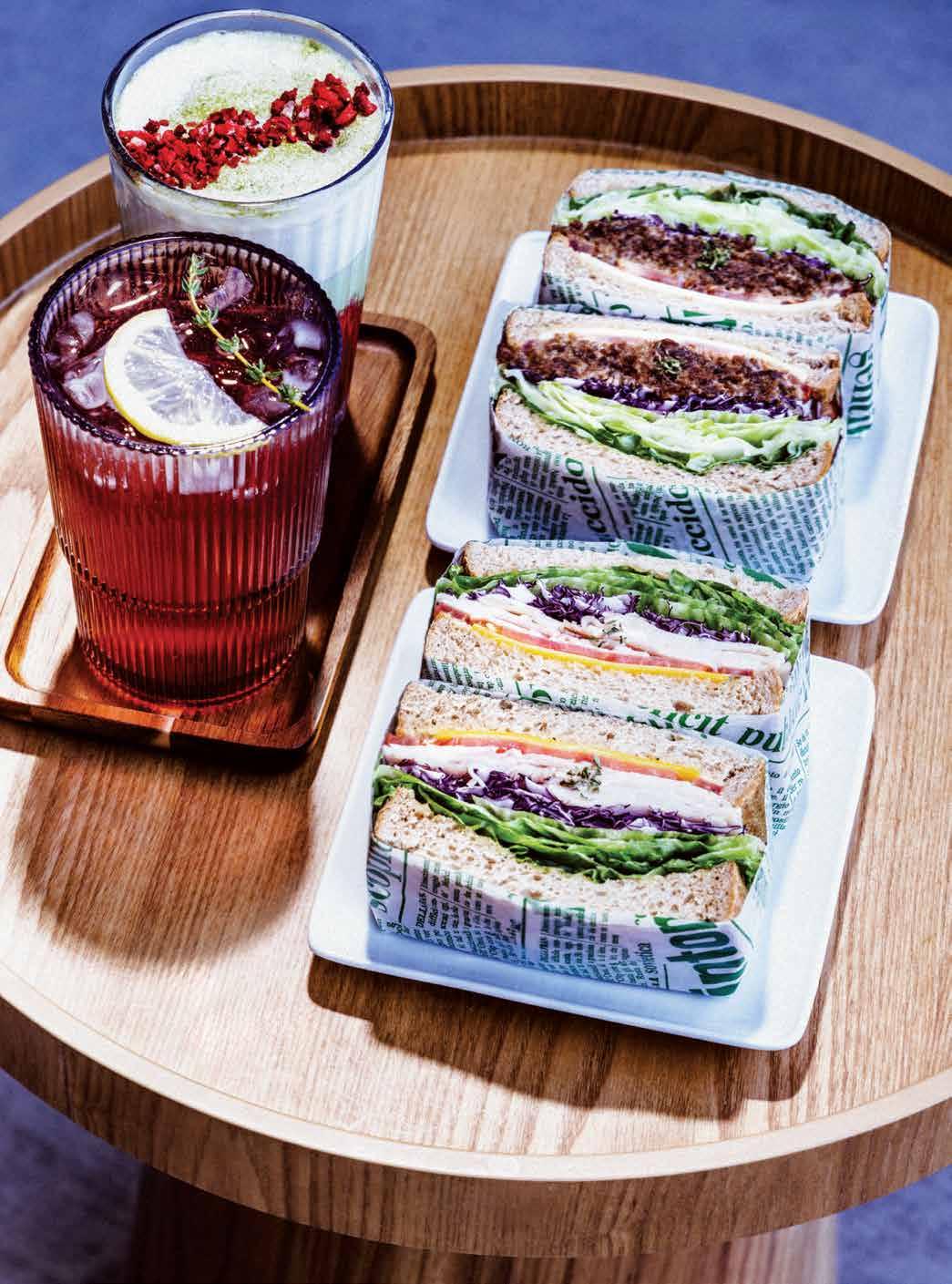
ings with flavours like the Seoulful Bulgogi sandwich made with beef bulgogi. Packed with protein and veggies, additional sandwich options include the spicy Crabby Catch, a BBQ beef galbi and the vegetarian Carrot Crunch. Pair with one of Piknic Cafe's enticing salads and baked goods and you have all the makings of a satisfying lunch, no matter the weather.
255 Brentwood Pl. N.W. 403-999-5530, mypiknic.ca
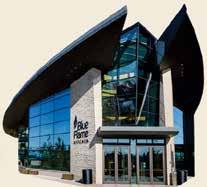
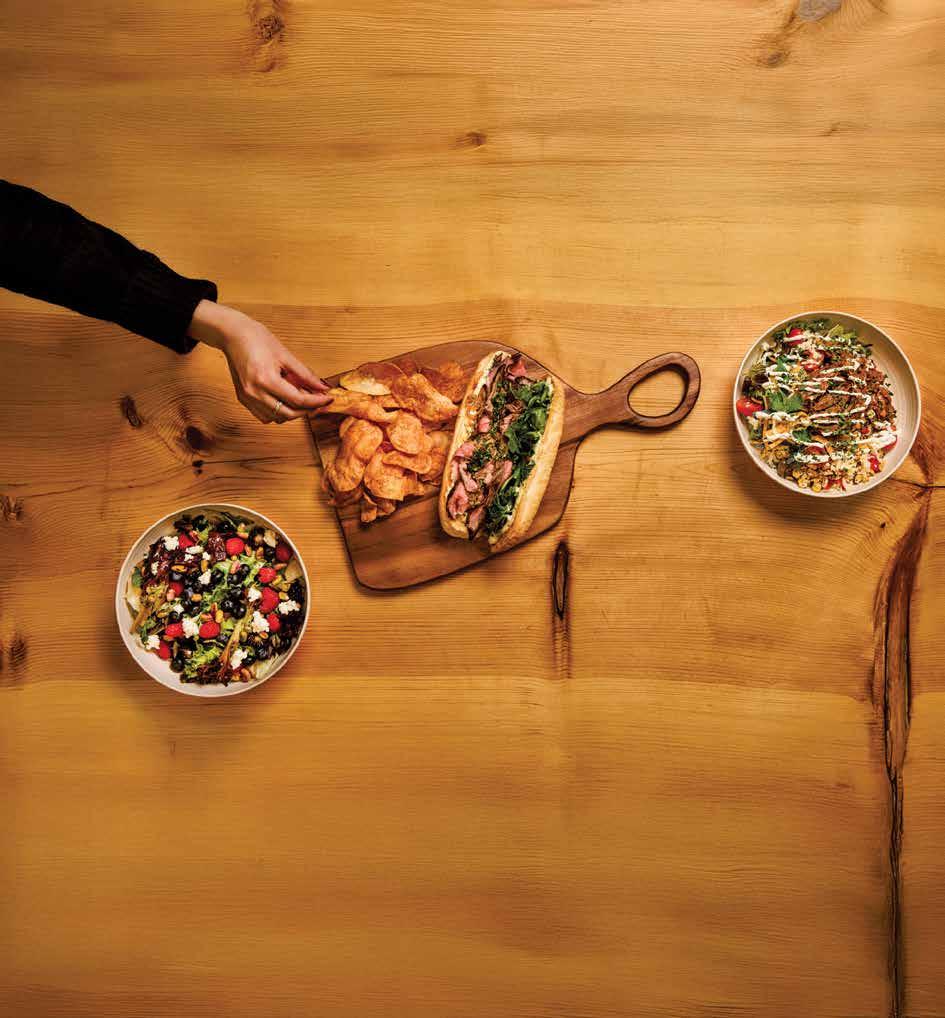
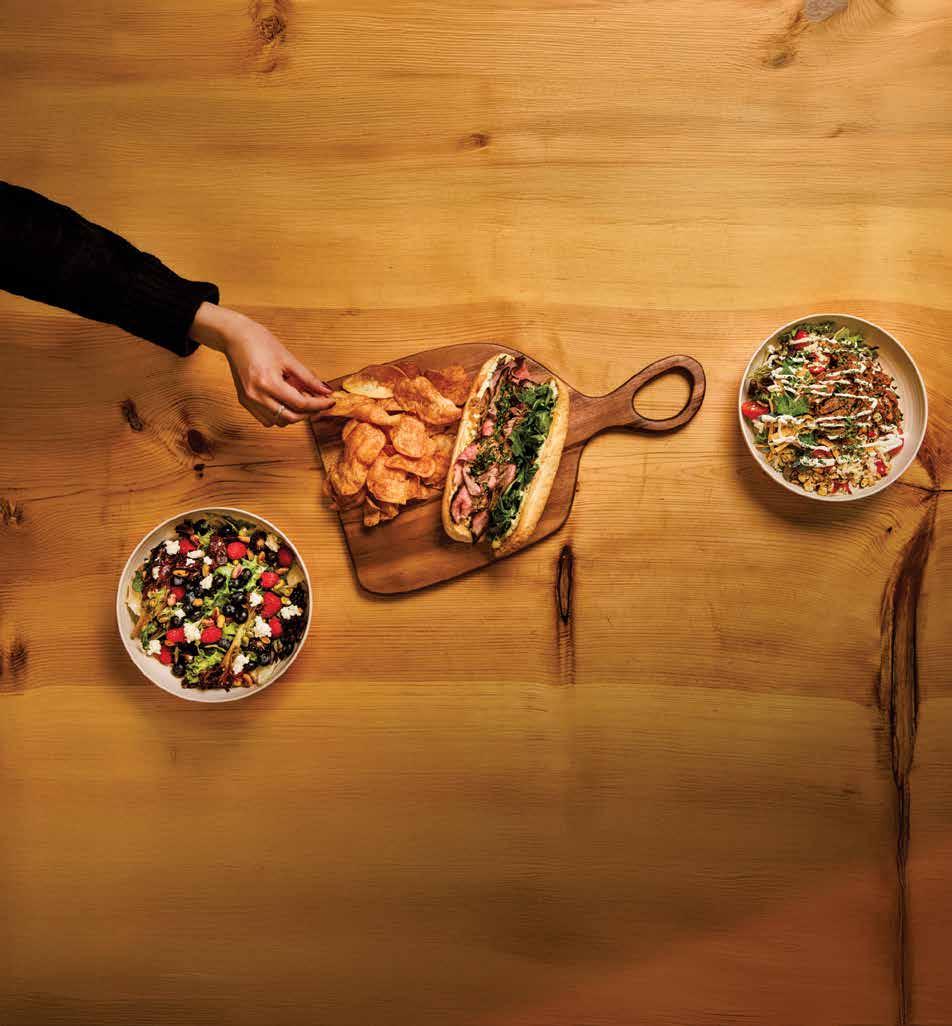
WE ARE MORE THAN A GROCERY OR SUPPLEMENT STORE.
WE ARE YOUR FAMILY OWNED WHOLE FOODS MARKET


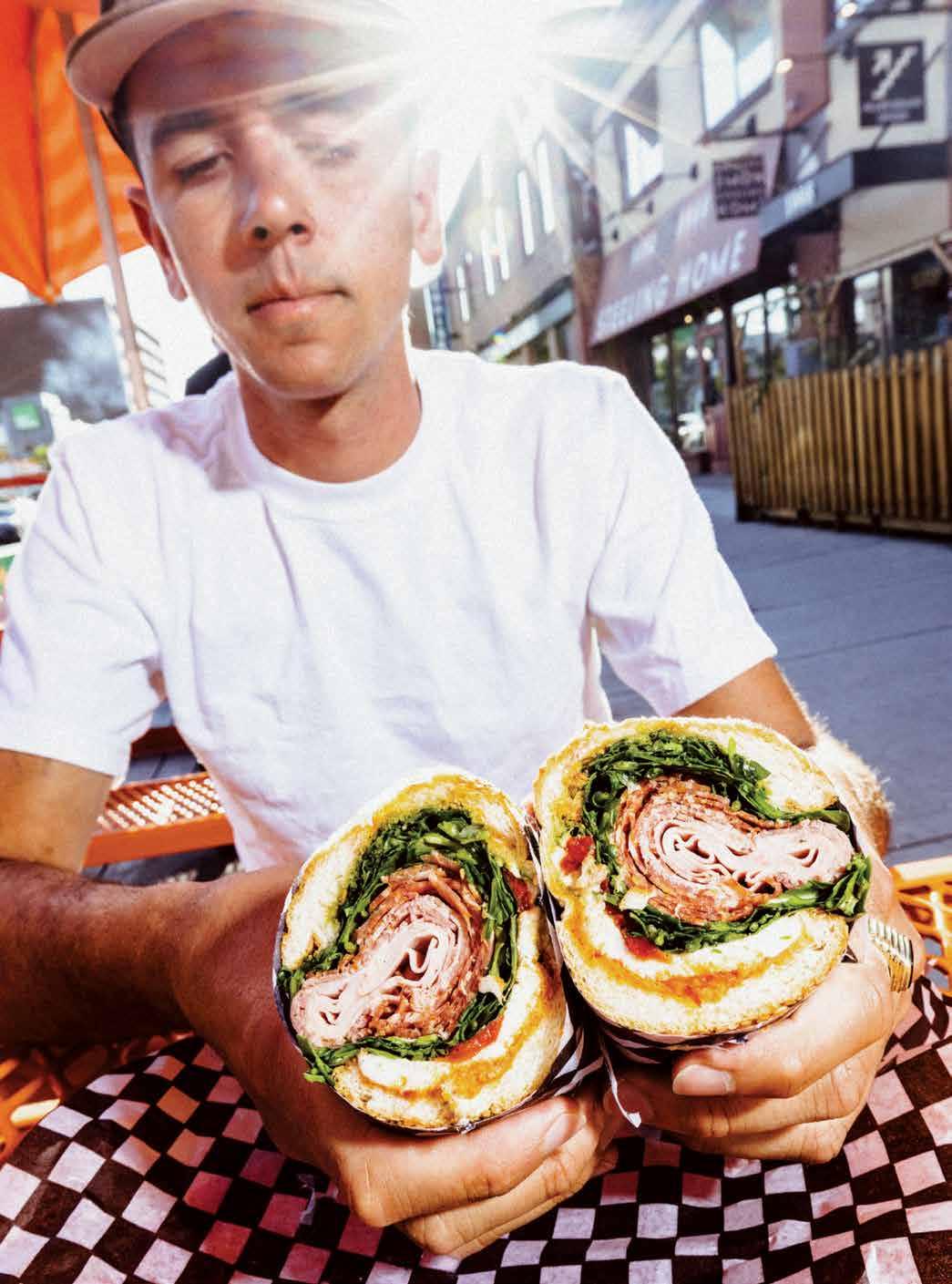
Growing up in Niagara Falls, Nick Scozzafava frequently dined at classic, family-run Italian delis.
After moving to Calgary as an adult, the opening of Uncle Paulie’s Deli in Los Angeles caught his eye, and he was drawn to visit the contemporary sandwich shop for himself. “It was just kind of the first modern Italian deli, and ever since then I was just so fascinated with it,” says Scozzafava.
The experience stuck with him, and he eventually started doing sandwich pop-ups before opening Scozzafava’s Deli on 17th Avenue S.W. in September 2024. The result? Calgary’s own modern Italian deli that is still consistently drawing crowds (and often selling
out) a year later.
The small, yet mighty menu boasts only nine sandwiches (plus a rotating special), but each one is memorable.
Hot sandwiches like a friedto-order chicken parm and cold staples like the hoagie stuffed with meats like salami, mortadella and capicollo all make an appearance alongside veggie-forward sandwiches like the Beltline Veg and eggplant parm.
And it’s not just the menu that’s attracting attention. The deli also regularly hosts weekend DJ nights that keep the space bumpin' until late. “I’m just trying to keep it fun,” says Scozzafava.
1004 17 Ave. S.W., scozzafavasdeli.com



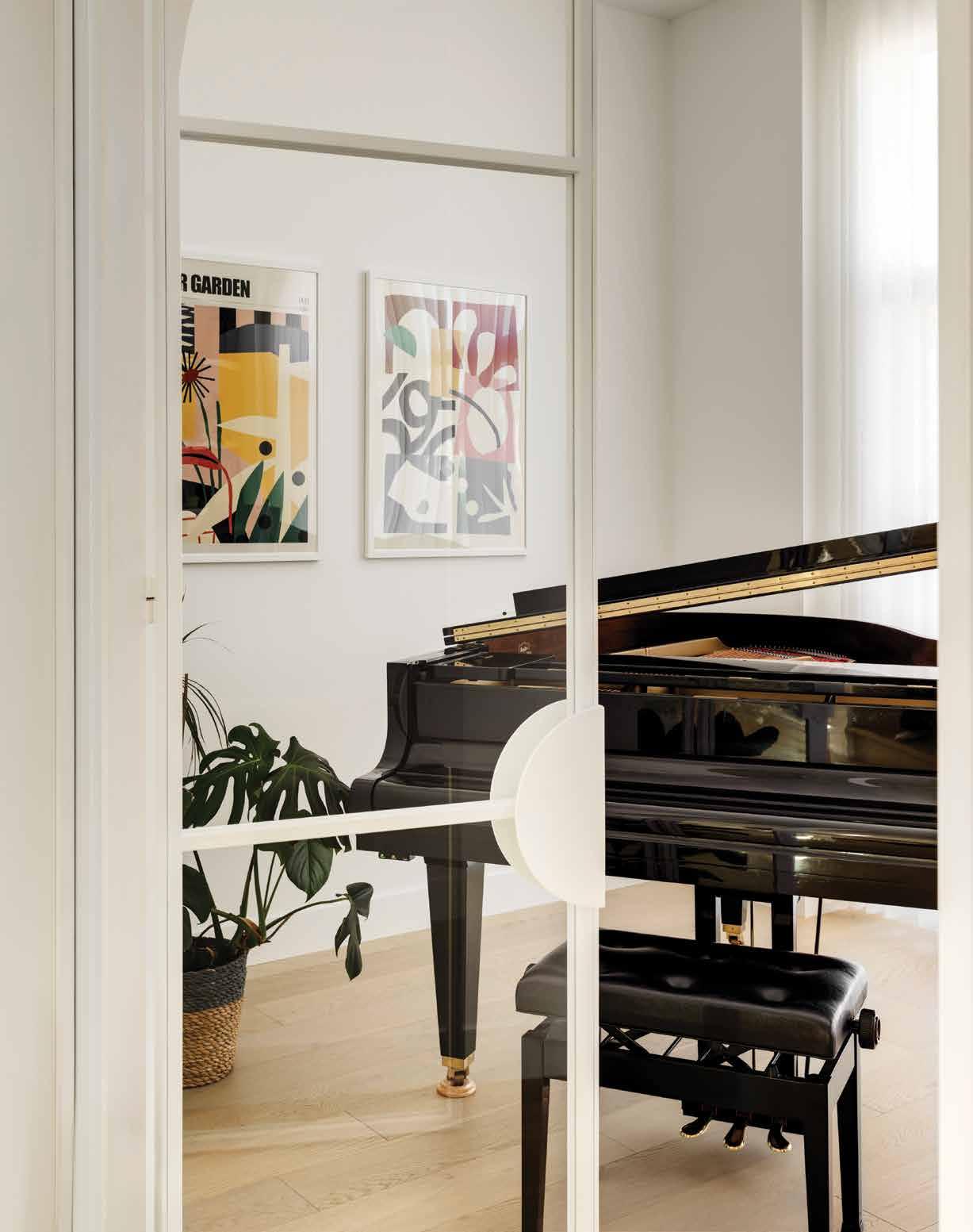
The piano, which Koki has had for almost 30 years and the whole family now plays, is showcased through custom glass and powder-coated metal doors by Edmonton metalwork company Forge 53°.
enny and Koki Aihara, parents of two boys and owners of local restaurants Shiki Menya and First Avenue Corner Store, searched for a home with a calming and minimalist vibe for their busy, growing family.
In 2021, the couple found a corner lot in Mount Pleasant and decided to custom build their ideal home with the help of Suzanne Tetrault, owner and principal interior designer of Studio Felix. Together, Tetrault and the Aiharas set out to capture a mix of Japanese and Scandinavian minimalism, and did so using neutral tones and clean lines while incorporating colour, warmth and coziness through furniture, art and plants.
“They’re a fairly young family, so we wanted it to look chic, and we also want it to be completely livable for a family of four,” says Tetrault.
The home was finished in 2024, complete with lots of windows and natural light — a priority for Jenny.
“We added a window literally everywhere that we could,” she says.
The Aiharas wanted an open kitchen and living space that would encourage family time and accommodate entertaining.
“Because we are in the restaurant industry, ... [it's] really important for us to have a place where we could be good hosts,” Jenny says. “Even the small touches — like a built-in bar where we can bartend or serve coffee, a spot to play our vinyl collection and a kitchen island that lets us cook, serve and have conversations with our guests all at once — help create a hospitality-focused, welcoming space.
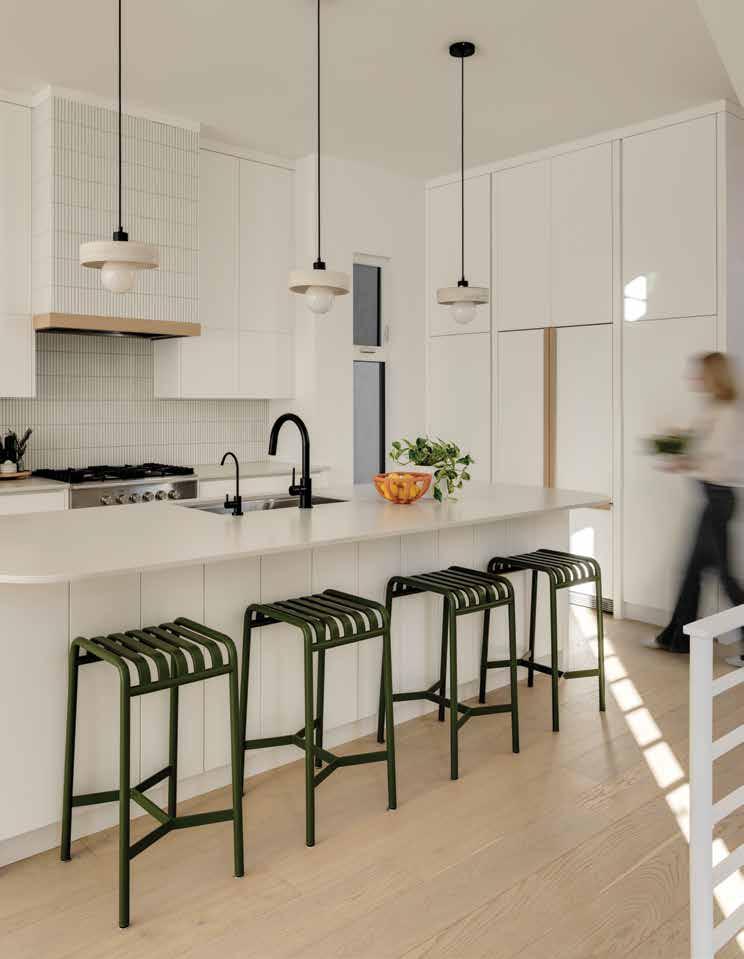
The couple behind two popular Calgary restaurants created a calming, minimalist-yet-welcoming space for their family.
BY Alana Willerton PHOTOGRAPHY BY KM Photography
"It’s subtle, but I definitely think it mirrors the rhythm of a restaurant, where interaction and flow are key.”
That said, the couple also wanted their home to be a calming, minimalist space where they could "recharge from the busyness of our work and family life," Jenny explains.
The home is peppered with nods to their restaurants, from the kitchen’s green metal stools from First Avenue Corner Store to the framed Shiki Menya posters hanging in the dining space. A particularly meaningful piece is the Shiki Menya rug a customer made and gifted to the couple for the restaurant’s 10th anniversary, which the couple put in their bedroom.
Overall, the flowing, open layout and natural light provide the functionality and comfort that the Aiharas wanted in a welcoming and soothing family home. “We didn’t set out to replicate any part of the restaurants in our home design,” says Jenny. “But, looking at the spaces, you can definitely see the similarities, simply because it’s our natural style and design taste.”
This space, between the kitchen and living room, makes it easy to whip up drinks while showcasing the family's books and record collection.
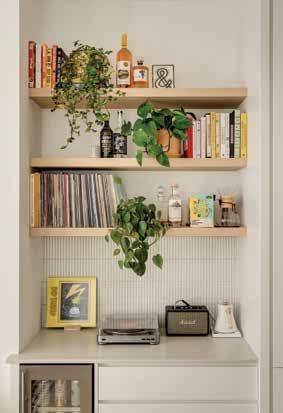
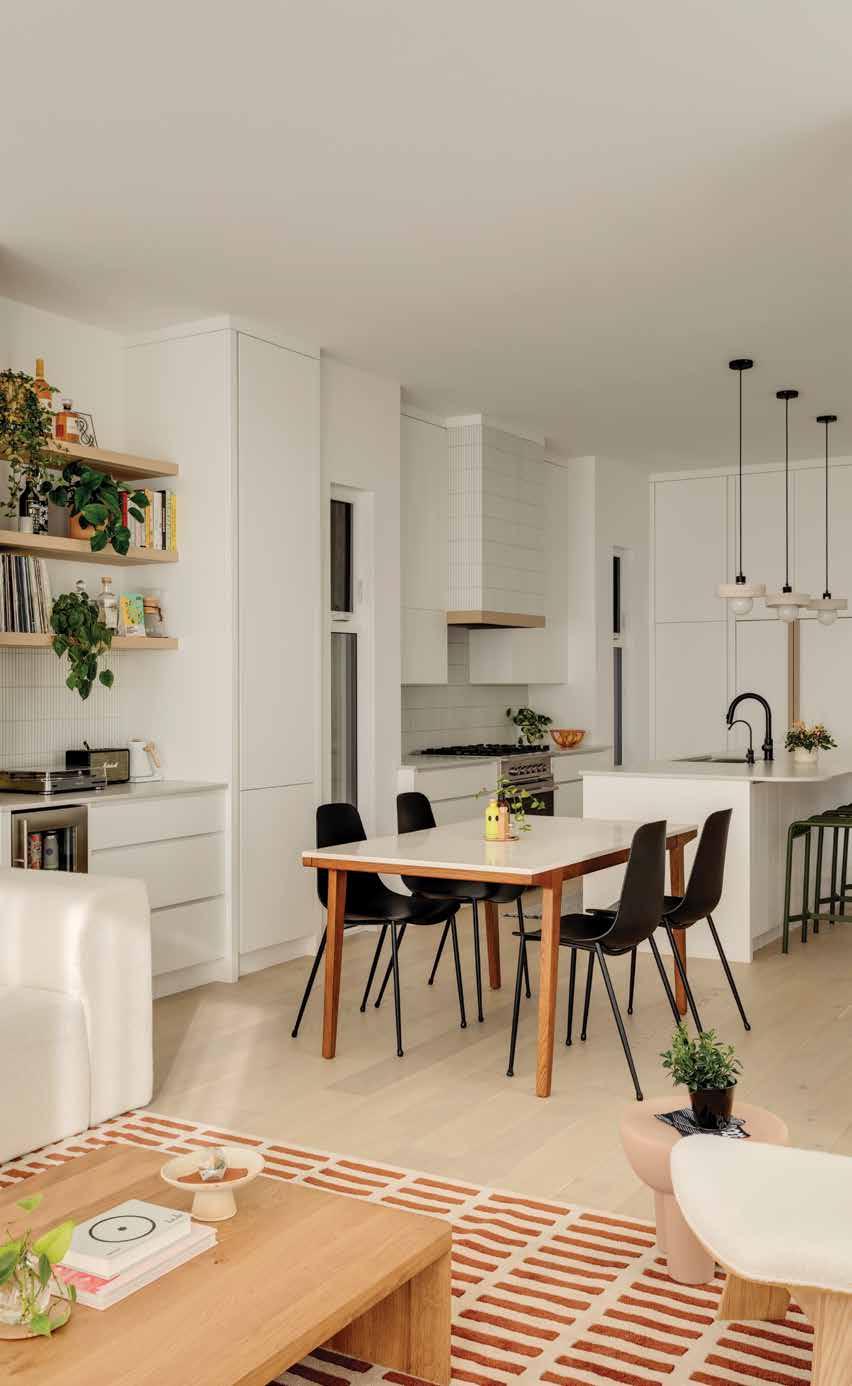
The kitchen embraces the home's neutral palette with white cabinetry, while incorporating unique elements like wood pulls on the fridge and a matching tiled backsplash and range hood.
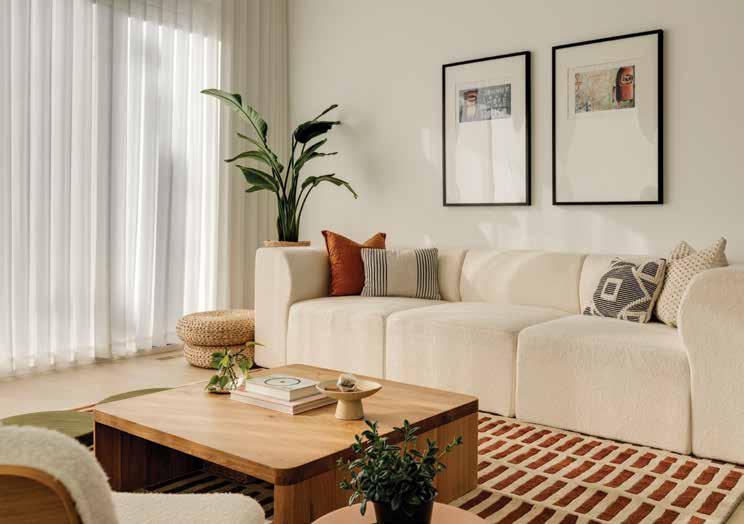
“ [IT'S] REALLY IMPORTANT FOR US TO HAVE A PLACE WHERE WE COULD BE GOOD HOSTS."
JENNY AIHARA
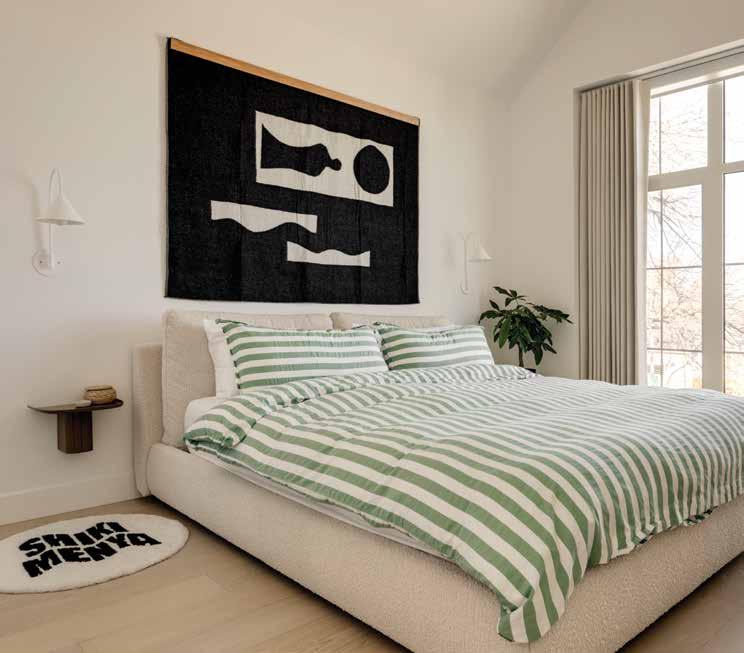
The open flow between the kitchen and living room, along with the low furniture and seating, makes it easy to gather with family and friends while preparing a meal, playing games together or reading.
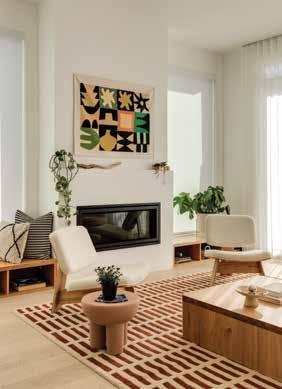
A handmade Shiki Menya rug adds coziness to the bedroom, along with a piece above the bed that Jenny and Koki created by attaching a Blacksaw wool blanket to a piece of wood left over from building the home.
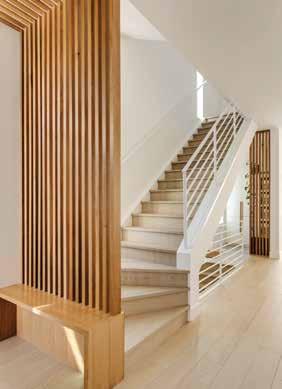
he trading world works in unique, unconventional ways, so it makes sense that Calgary-based energy trading firm GBE Energy’s office goes against the grain. When architects Anita Gunther and Dalton Kaun took on the design project in 2019, they explored the history of trading and what that history means for the place where trading happens.
“GBE creates value and generates value. We thought this interior needed to do the same,” says Gunther.
Inside the 8th Avenue S.W. office, Gunther and Kaun created multiple spaces, including a board room, an executive office and even a nap room. But the pièce de resistance is the “machine for trading” space, where GBE’s traders perform the tricky business of facilitating ever-changing deals. The machine for trading, designed to amplify the energy of the trading floor, is built within a single wooden framework that can be completely disassembled and reassembled should the company ever expand or relocate.
GBE Energy president Cory Paddock describes the office as “unafraid and honest. We’re unafraid to be contrarian and go against what is conventional.”
Because of the work-hard, play-hard nature of trading, Paddock wanted a healthy separation between work and play. The result is this dedicated space for trading to happen — the machine for trading is a purpose-built space made with integrated lighting and 12 trading modules.
As you enter the machine through the portal, there’s a distinct change in pace from the casual spaces in the office. You walk up a slight ramp to the machine’s elevated platform. Inside, the work modules border the space with a central counter for optimal communication and collaboration. This clearly signals that the machine is where GBE’s traders get ’er done.
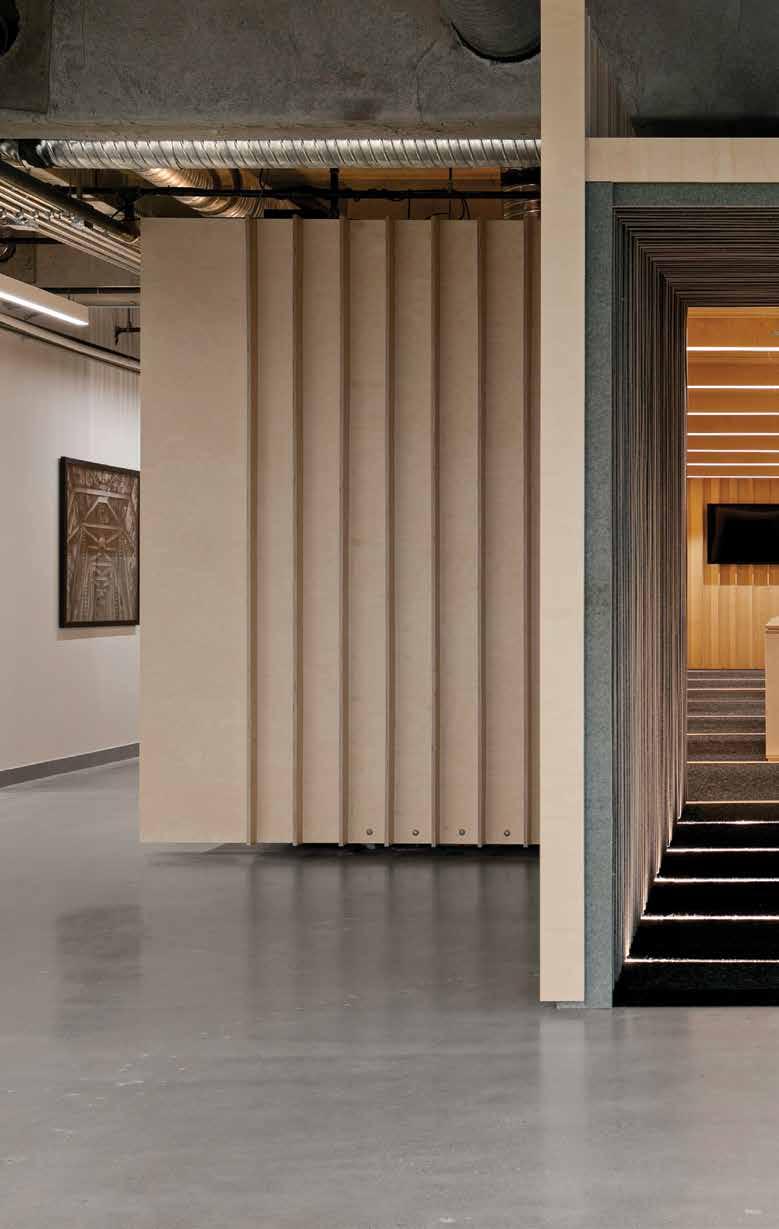
GBE Energy’s downtown office features an innovative take on a trading floor.
BY OLIVIA PICHÉ

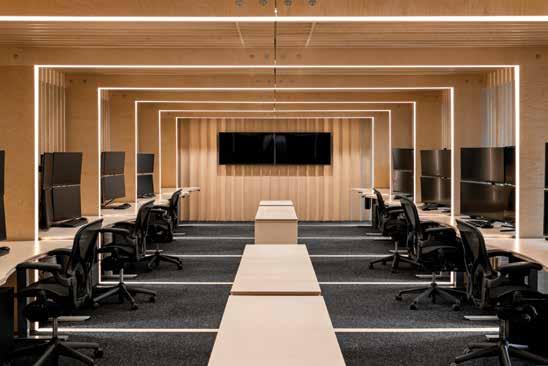
The entrance into the machine marks the transition between work and play, creating an energy shift as you pass through. It’s slightly narrow, with felt pieces to quiet any auditory disruptions. “We wanted it to feel very unconventional and maybe uncomfortable. The lighting strips in the floor shine up in your face as you're walking onto the trade floor,” says Kaun.
For the framework, Gunther and Kaun used vertical slats of Baltic birch wood that open up to the rest of the office, creating a private, but unenclosed environment — the trade-floor energy can flow throughout the office.
To enhance the idea of a single machine, lighting is incorporated throughout the space instead of using separate fixtures. LED strips run from the ceiling, connecting to plywood strips that mark off each two-metre working module.
The step at the machine’s exit is made of rundle stone sourced from a quarry in Canmore. The contrast between the softness of the portal's felt and the hardness of the exit's stone emphasizes the dichotomy between entrance and exit.
The Dorian Hotel puts Calgary on the map for exceptional hospitality, and it’s the passion, purpose and deeply personal mission of its owner that makes it a standout place to stay.
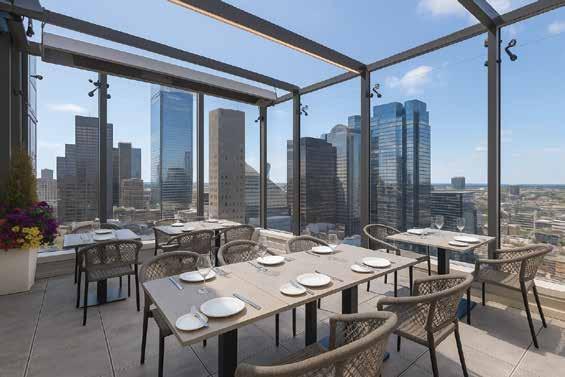
The Dorian Hotel opened its playful and whimsical doors in 2022 and has been providing Calgarians and visitors with exceptional hospitality ever since. Behind the vision is owner Patricia Phillips. Here, Phillips shares what inspired her direction for The Dorian and its awardwinning amenities.
Q: What has your most rewarding moment been as owner?
A: The most rewarding moment was the day we officially opened The Dorian in 2022. As the first new hotel built in Calgary’s downtown core in over a decade, it was a milestone that meant so much, not just to me, but to our entire team. Having spent much of my career in male-dominated industries, it’s an
honour to break barriers and show other women what’s possible. My hope is that The Dorian serves as both an inspiration and a stepping stone for more women to lead in this space.
Q: What is the connection between your father and the hotel?
A: The Dorian is more than just a hotel — it’s a tribute to my late father and the legacy he left. His favourite book was The Picture of Dorian Gray by Oscar Wilde, and when it came time to bring this hotel to life, it only felt right to weave that inspiration into its very fabric. Creating The Dorian in his memory has been deeply personal. It’s not just a space for guests to stay — it’s an experience that embodies his spirit: vibrant, daring and unapologetically unique. Every time I walk through the doors, I feel his presence, and I hope that everyone who visits senses the passion and purpose behind it. For me, The Dorian is a love letter to my father.

Q: As an expert in the hospitality industry, what’s your number one hosting tip?
A: Hosting is all about the little details. Whenever possible, personalize the experience to make your guests feel truly special. That could mean having their favourite coffee or tea ready, leaving a treat they love on their pillow or setting the ambiance

with scents they enjoy. Thoughtful touches make all the difference.
Q: What’s particularly notable about The Dorian?
A: I’m incredibly proud that The Dorian was awarded a Michelin ‘One Key’ designation — a prestigious honour that recognizes the world’s most outstanding hotels. The Dorian is Calgary’s only Michelin Key hotel. This recognition isn’t just about beautiful design or luxury amenities — it’s about the unforgettable experiences we create for every guest. To receive this global accolade so early in the hotel’s journey is remarkable, and it reinforces what we’ve believed all along — Calgary deserves a place on the map when it comes to extraordinary hospitality. We’re honoured to help showcase this city to the world.

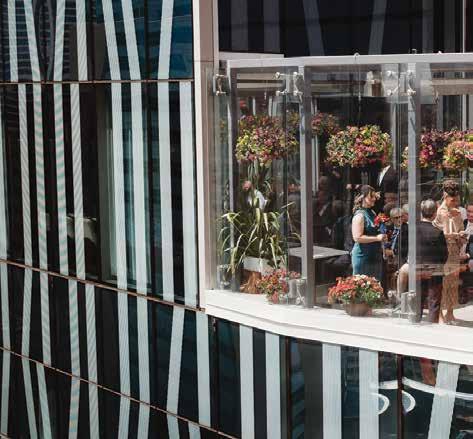
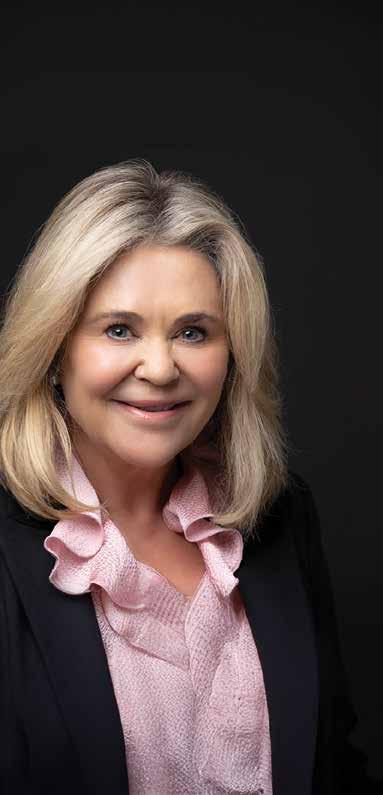


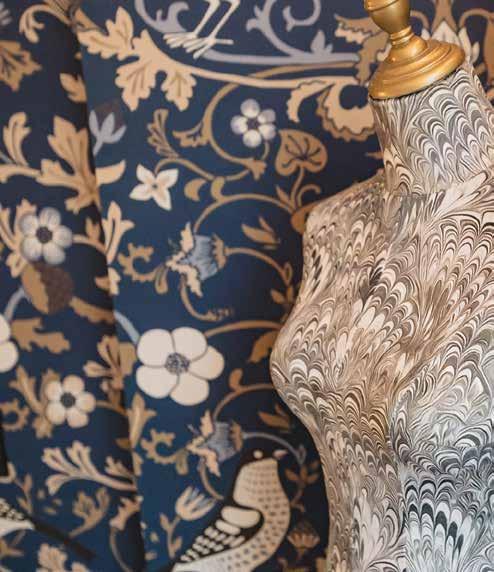
“I absolutely adore our blue and gold patterned wallpaper that is featured in each of our rooms as it adds such a lovely Victorian touch.”
“My favourite spot in the hotel to unwind is at a table at The Wilde’s rooftop terrace overlooking our beautiful city. With a glass of wine in tow, what more can you ask for?”
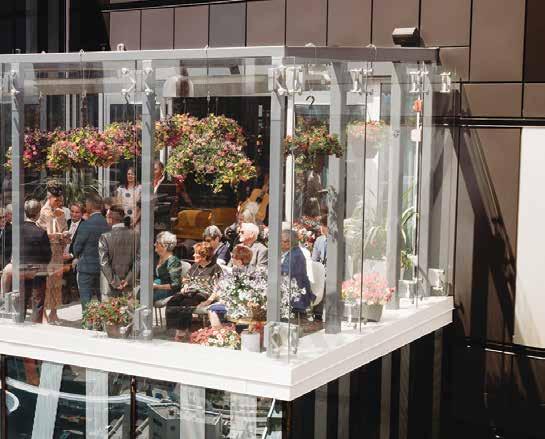
“After check-in, our guests can scan a QR code to anonymously confess past transgressions, which others then rate on a scale from acceptable to utterly deplorable. The portrait changes throughout the day based on these confessions. It’s an interactive experience that allows our guests space to reflect on morality while giving a playful nod to Oscar Wilde’s classic tale.”
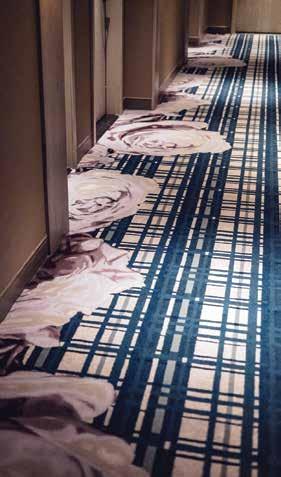
“I love our custom carpet, a British tartan with the Alberta Wild Rose woven into it, which proudly reflects our local roots. It’s a small detail to some, but for us, it’s a meaningful tribute to our city and province — something we value deeply as a local business.”


Find your new home away from home at one of these mountain recreational properties.
BY EULA MENGULLO
The many nearby mountain ranges are part of what makes Calgary a beautiful place to live. Escaping to the mountains is easy when scenic destinations are only a few hours away. Unique opportunities for an accessible recreational mountain home are available for those
looking for a permanent place to unwind.
With the following new real estate opportunities in the Kootenays, the Columbia Valley and the Alberta Rockies, prospective buyers can take advantage of Calgary’s backcountry backyard to find their new home base for a quiet reprieve and active outdoor living.
The Wildwood by RED Mountain Homes
With a scenic view of the mountains, The Wildwood, RED Mountain Homes’ newest addition, gives you the chance to reside close to the summits. This new development is at the base of RED Mountain Resort, right at the edge of a planned community park that will include trails, ponds and playgrounds. Located in the West Kootenays, RED Mountain Resort is a backcountry

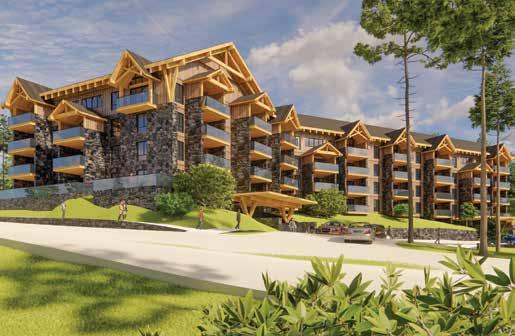
CANMORE, ALTA.
Cadence Pond by Silvertip Resort
Located in the charming mountain town of Canmore, Silvertip Resort is an idyllic community nestled amid the peaks of the Rocky Mountains. Cadence Pond, Silvertip’s newest residential development, introduces residents to the serenity of mountain living with one- to threebedroom luxury condominiums. The properties are built around the sixth hole of the Silvertip Golf
Course, making them ideal for golf enthusiasts. With future development plans including exciting community features like a gondola and a Nordic spa, Silvertip is the perfect home away from home, combining leisure and outdoor adventure amid the natural vibrancy of the mountains. The resort has easy access to the Trans-Canada Highway, so residents are only a 20-minute drive to Banff and an hour away from Calgary. cadencepond.com, 403-678-1602
haven for outdoor enthusiasts. The Wildwood’s collection of 54 alpine homes, each with its own private deck, features one- to three-bedroom layouts inspired by Scandinavian interiors, giving them a sleek and modern look. With Rossland’s historic downtown only a sevenminute drive away, residents can set out for an exciting day of exploring the city’s rich arts and culture scene, its unique shopping opportunities and its dining and nightlife spots. redmountainhomes.ca
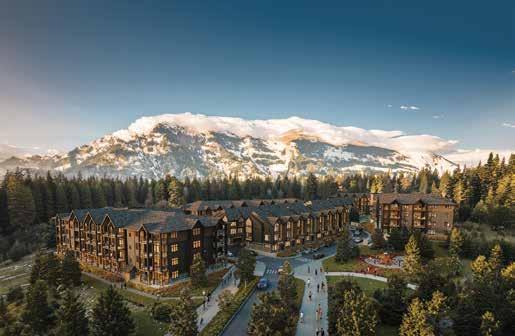
Altitude at Three Sisters Mountain Village by Logel Homes
Logel Homes offers mountain living in the heart of Alberta’s mountains with one of its newest developments. Altitude offers 239 condominium apartments and townhomes across 14 floor plans. Condo features include granite or quartz countertops, nine-foot ceilings and expansive windows bringing both brightness and
unparalleled views of the lush surroundings. Residents also get direct access to a planned amenity area called The Gateway at Three Sisters, which will offer various retail, commercial and medical services. Essential amenities like a grocery store, gas station and car wash are also underway, making the community a prime new destination for residents to live and play. logelhomes.com, 403-604-1521
The Selkirks and Monashees at Mackenzie Village Situated right between downtown Revelstoke, the Revelstoke Mountain Resort and the future location of the Cabot Pacific golf course, this walkable neighbourhood is built for the outdoor enthusiast. Future residents can find their new mountain home at The Selkirks and Monashees, with a choice of townhouses, condominium apartments and penthouses, complete with communal rooftop gathering spaces to foster a community atmosphere. With contemporary designs and neutral-to-dark colour palettes, these residences feature modern, minimalist interiors that ooze subtle luxury. Each unit includes a private deck to relish the views. And, the homes are uniquely zoned for short- to long-term rentals, allowing buyers to use their investment for rental revenue.
mackenzievillage.ca, 250-683-9827
The Park at CastleRock CastleRock’s Phase 3 lots at The Park boast sweeping green spaces with community features tailored for families with small children, like playgrounds, a soccer field, picnic areas and a gazebo. The Phase 3 development offers plenty of building plans at exceptional value, conveniently located just minutes away from schools, nature trails and Invermere’s downtown amenities.
Guided by the ethos of alpine living, each home design embodies the classic mountain lifestyle, giving the residential community a cohesive character. Located in the Columbia Valley on the west side of Lake Windermere, Castle Rock combines the best of both worlds for its residents: the serenity of Lake Windermere on one side and the vistas of the glorious Purcell Mountains on the other. castlerockliving.ca, 250-342-3313
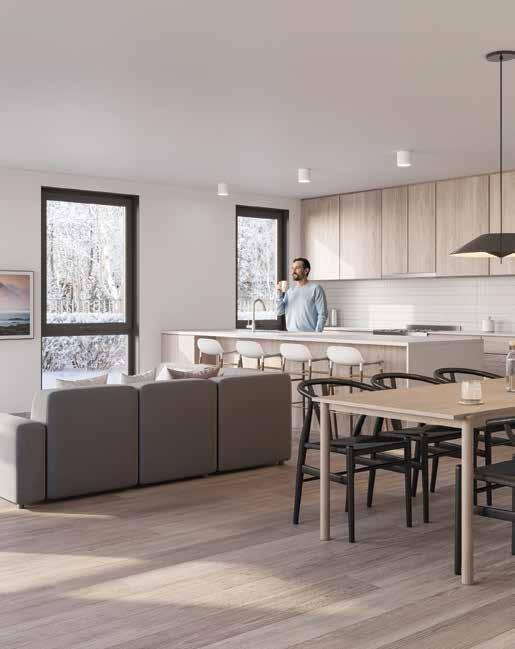


Find your new home base in the heart of the Columbia Valley at Nordix Panorama, situated at the base of Panorama Mountain Resort’s Silver Platter Chair. Designed especially for the outdoor enthusiast, these spacious, modern Scandinavian threeto five-bedroom, three-level townhomes come complete with optimal gear storage like integrated boot dryers, ski and board racks, and dedicated equipment rooms. Panorama Mountain Resort is the ultimate location for slopeside living and all-season backcountry adventure. Residents can snowshoe along the scenic trails and heli-ski from the summit of the Purcell Mountains in winter, and, in summer, enjoy a round of golf at the world-class Greywolf course or discover the resort’s network of mountain biking and hiking trails. The destination is only 20 minutes away from the idyllic lakeside community of Invermere, where residents can explore boutiques, restaurants, and more recreation and entertainment.
panoramatownhomes.ca, 855-275-7733



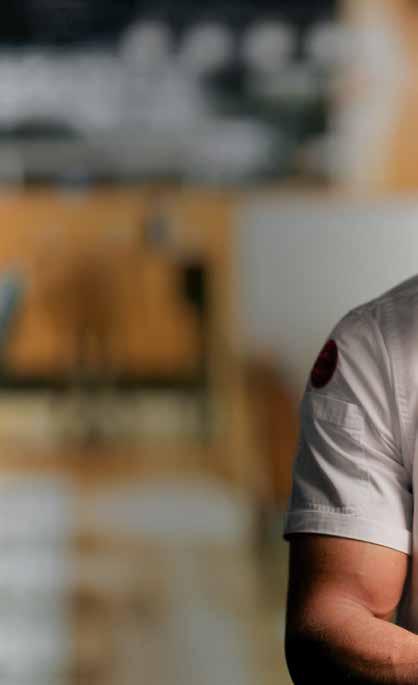












Lakes, larches and lovely loop trails: Calgary’s backyard has it all when it comes to fall hiking.
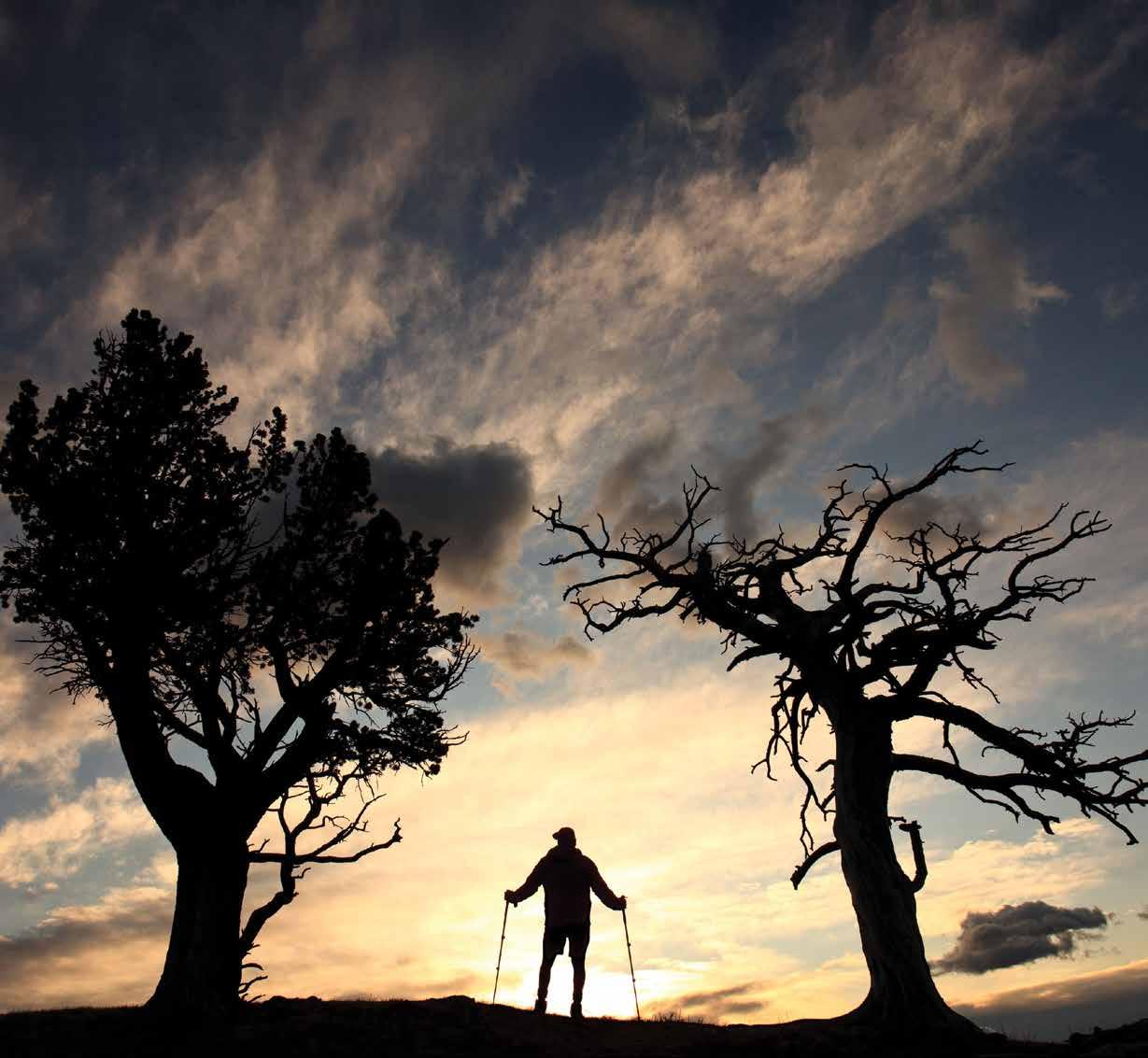
Ask any hiker: fall is the best time of year to slip on your lederhosen, yodel your way to the mountains and take a lovely lap around your favourite trail. From mid-September to early October — when the trees turn fiery gold and the summer haze has lifted — the hills are bound to be alive with, well, the sound of music. And people making fun of your pants.
Thankfully, you don’t have to sing “Edelweiss” or dress like Hansel or Gretel to appreciate a classic Ca-
nadian Rockies ramble. You can just be you. And sing whatever song you want.
The problem? Where do you go? Some trails can be extremely busy. Others require cliff-dangling, harnesses or extreme agility to complete. What you might be looking for is a trail that the average, non-yodelling hiker can readily take on without the need for a Swiss guide packing you to the finish line.
While beauty — and, to some extent, difficulty — is in the eye of the beholder, one thing is certain: these five trails will serve up a fabulous feast of fall colours.
Brown-Lowery Provincial Park 4.7 km | 146 m elevation gain | 1.5 hours
Located in underrated Brown-Lowery Provincial Park near Priddis, the Wild Rose Loop is a sweet little saunter through the poplars and pines. The fall colours here — and on the easy half-hour drive to the trailhead — can be spectacular. While there’s a wee bit of elevation change, this trail is friendly for all ages and dogs. The main view to the west is a stunner, with the rolling, farm-dotted foothills melding into the Rockies. Pack a lunch and your alpenhorn.
Mesa Butte Provincial Recreation Area
4.2 km | 269 m elevation gain | 1.5 hours
Thanks to the gravel access road, the Mesa Butte Provincial Recreation Area, 15 minutes west of Millarville on the McLean Creek Trail, may be less busy than your go-to popular trails. Park at the equestrian campground and start on the Curley Connector Trail, which cuts the time in half. Mesa Butte's south-facing orientation makes it a great early-season scamper. But in the fall, the eye-popping colours painting the hillsides are next level. Bring bratwurst to enjoy at the sheltered fire pit area at the top of the butte.
Sheep River Provincial Park
6.8 km | 293 m elevation gain | 2.25 hours
The Sheep River area is perfect if you like quieter trails that are quick to get to and visually rewarding. A staple in the area is Foran Grade, which straddles Bluerock Wildland Provincial Park and Sheep River Provincial Park. The ridge section of the hike features views both east and west with yodel-worthy looks at the chiselled peaks of Gibraltar Mountain, Mist Mountain and Mount Rae — in the heart of KCountry. Roadside parking is available at a couple of access points along Highway 546. Do this trail as an out-and-back or make it a loop that incorporates a section of Windy Point Trail and the road.


Peter Lougheed Provincial Park
4.5 km | 377 m elevation gain | 3 hours
When fall colours are at their prime, weekends can get extremely busy on Highway 40 through the Highwood Pass. If you can, do this hike — or any of the popular larch hikes — at sunrise, a couple of hours before sunset or, preferably, mid-week. Thanks to the large parking area and the spectacular nature of this hike, Arethusa Cirque is a great choice. The expansive cirque (a glacier-carved alpine amphitheatre), the golden larches, the little creek crossings and a couple of steep sections make this a memorable meander in the mountains. Best to do this loop trail clockwise.
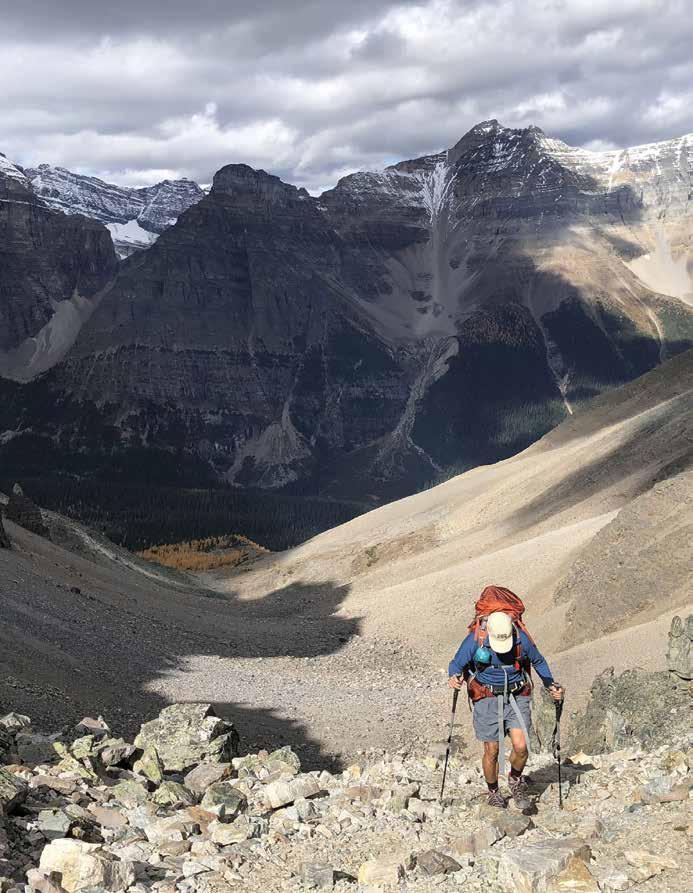
ASTER LAKE
Peter Lougheed Provincial Park 21.9 km | 1,248 m elevation gain | 9 hours
The strenuous journey up to Aster Lake will likely require a few Swiss chocolate power boosts (maybe bring a stash of Toblerones) to complete. But the jaw-dropping beauty of this high-alpine lake makes the trek worth it. Steep and technical at times, Aster Lake is not for the beginner. You’ll face loose scree, some scrambling and some fairly exposed sections on the second half of the hike. And, yes, this is prime grizzly habitat. Be bear
aware! An overnight stay in the charming lakeside campground — to make it a two-day journey — is a great option. The trail begins at Upper Kananaskis Lake, where there is typically plenty of parking available.
If, after these five fabulous fall hikes, the mountains are still calling, consider the 26-km backcountry journey to Mount Assiniboine. Known as the “Matterhorn of the Canadian Rockies,” Mount Assiniboine might be the ultimate Alp-like adventure in the Rockies. However, this is a multi-day journey that requires plenty of organization and scheduling, so plan accordingly.

As every conscious Canadian knows, wherever possible, we’re looking for Canadian goods to support our hiking adventures. While the Swiss do make some, ahem, lovely leather goods, there are many Canadian companies that manufacture great gear for hiking. Check out these three examples.
Makers of luxury cold-weather apparel, Canada Goose has become a superstar when it comes to fall and winter fashion. The HyBridge Lite Vest (pictured above) is a nearweightless item that’s ideal for coolweather hiking.
$550.00 canadagoose.com
Arc’teryx
Known primarily for its awesome outerwear, Arc’teryx also makes a mean hiking shoe. For example, its Kopec Mid GTX Boot can easily handle technical scrambles and high-alpine treks.
$240.00 arcteryx.com
Taiga Works
This quirky Vancouver-based outdoor equipment manufacturer makes everything from booties to sleeping bags. One of the highlights of Taiga’s extensive product line is its Merino-200 Crewneck. It’s perhaps a tad more comfortable than your average pair of lederhosen.
$59.95 taigaworks.com















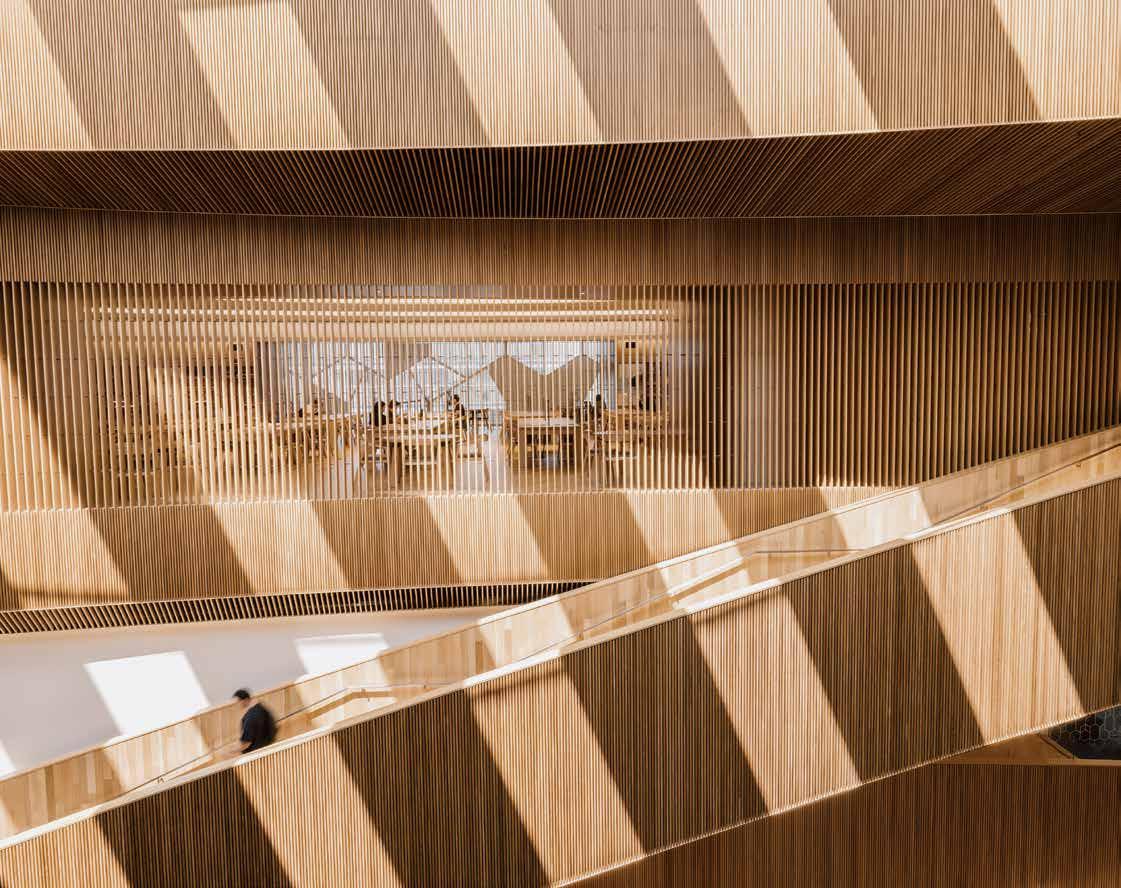
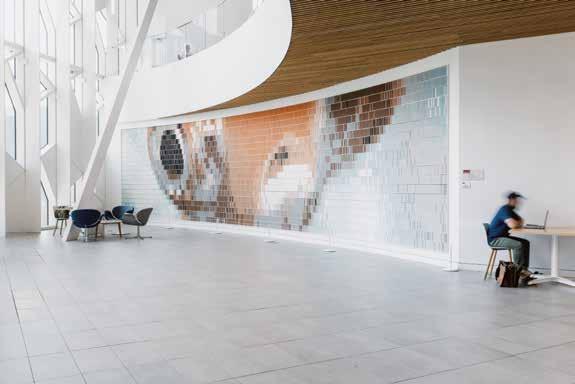
11:00 A.M.
Striking archictecture and public art abound including FISH, a mural by Christian Moeller, found on the library's third level.


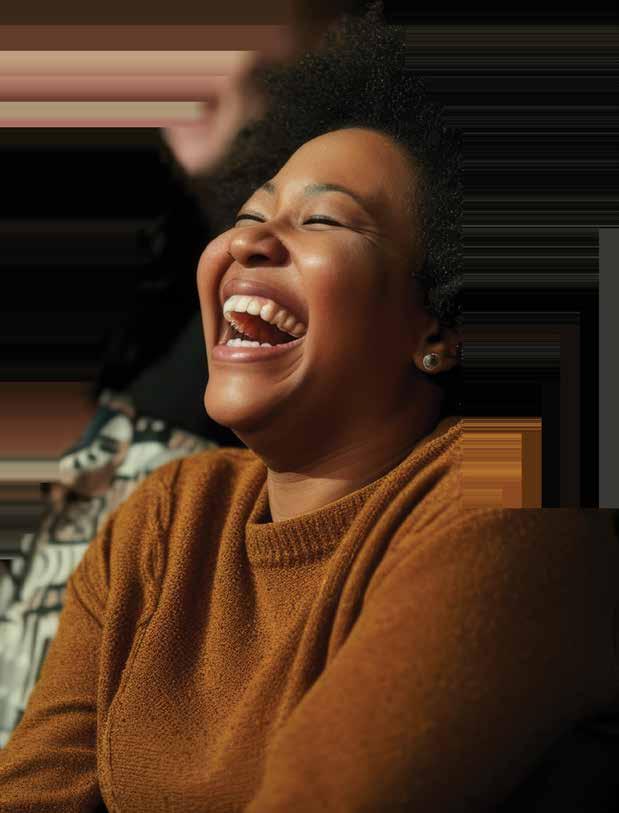
The arts are the foundation of our society. They show us who we are and who we can be - and inspire us to achieve our potential together. We’re proud to bring live performances into the suburbs, helping make the arts more accessible.
Homebuyer:

If it’s your favourite, it’s probably Shane Homes.